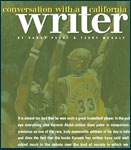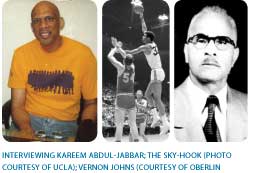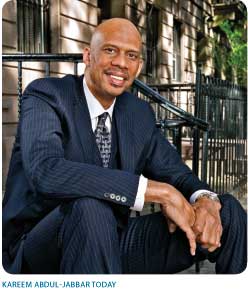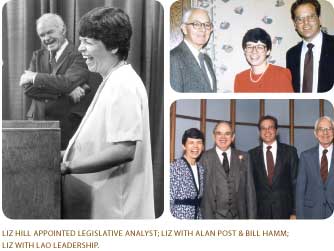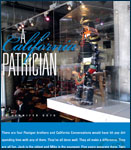War Stories…Sort Of
California Conversations
Published Issue: Summer 2011
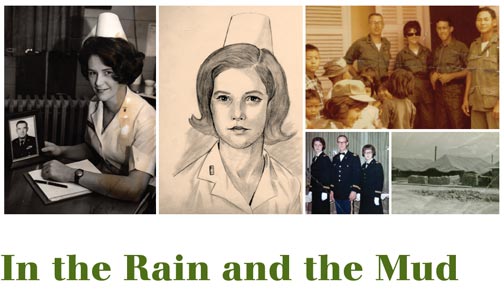
Shirley Marie Burns was born into a military family, became a nurse and a soldier herself, married an army man, spent most of her life travelling from assignment to assignment until after ten months of asking for the opportunity, personnel sent her in the middle of the 1960s to a distant post in Vietnam.
In her own words:
My orders got me to San Francisco, and then I had to fly ‘standby’ to Vietnam.
My tour was tiring and sad, yet the most rewarding time of my life. I arrived at Tan Son Nhut Airport in Saigon. I was dressed in winter greens and high heeled shoes.
The nurses were taken to the Post Exchange and told to buy all the feminine things we would need for one year.
After lunch at the Officers’ Club we put on helmets and flack jackets and boarded a bus for Cu Chi. We were escorted by several armored vehicles with helicopters overhead.
I worked with a group of other nurses at Cu Chi to set up the 12th Evacuation Hospital, a M.A.S.H. unit basically, although that term was not used at the headquarters for the 25th Infantry Division.
It was muddy everywhere and wet. It seemed to just suck you down into it. Our new living quarters, our hooches, had wood sides and a tent top. The guys could not wait to show us our new restroom, our outhouse. They had built them and put pink toilet seats over the holes. They were thrilled and most of us started crying.
I was promoted to 1st Lieutenant.
Working in the rain and mud, it took nearly a month to open for business. Then the business came...and kept on coming. My life was never the same.
The next few months were a series of highs and lows.
The kids...bloody, dirty, hurting, wanting the nurses to hurry so they could get back to their unit, to their buddies.
The MedEvac helicopters were nearby at all times, day and night. We had twelve-hour shifts...when we had shifts at all.
There were trips to the surrounding villages to dispense medicine. When the pills we gave away started showing up with captured Viet Cong, we gave only injectable meds.
The mortar attacks were a part of working at Cu Chi. There was a direct hit on my ward and it killed two GIs instantly. That seemed so unfair.
The highs were less numerous, but the contrast seemed so remarkable. R&R in Penang and Tokyo, the mai tai party when the new general took over the 25th Division, the guys coming over from base camp with steaks just to say, ‘thank you.’
Shirley served as the first female commander of the Veterans of Foreign Wars (VFW) in the State of California. She also chaired the California VetFund Foundation.
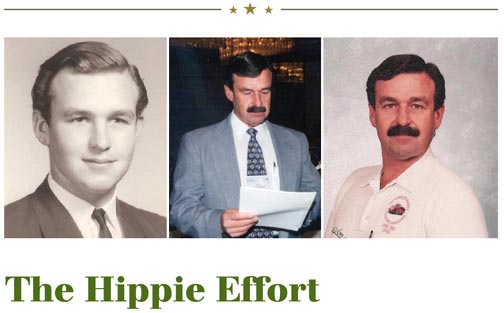
By the middle of 1967 the Vietnam War was ramping up and the stories of the bloodiest battles were being shown on American television. The TET Offensive, the cruelest battle of the war, was less than a year away, and Walter Cronkite, the venerable television newscaster, was about to say that our goals in Vietnam were untenable.
Ray Snodgrass was a recent high school graduate working the fire season for CAL FIRE when he got the notice to report for his army physical. His mother cried at the prospect of Ray going to war and her tears were not lessened when the doctors told him he was 1A and physically fit to serve in Southeast Asia.
A month later Ray was told to be at the induction center for his swearing-in. He got his release from CAL FIRE with the promise that he could work for them again as soon as his time in the service was complete.
On the morning of his arrival at the induction center, Ray was outside in a long line of new enlistees.
Before they could all make it into the building there was a ruckus. Several long-haired, colorfully dressed young people began making noise and forcing their way into the induction center ahead of the draftees. It is almost quaint to admit it now, but there really was a time when hippies existed as part of a peace movement that was sweeping the country. There was a skirmish; it almost got violent before the hippies ran down the street screaming that the war needed to end. They had stolen papers from the counter and were waving them in the air.
Ray eventually got invited inside. He was told to stand in place while names of the new draftees were called out and they were sent through a second door to be sworn in. There were a half-dozen young men left in the lobby when the soldier in charge asked each of them their name. Ray was one of them.
“The hippies stole your files,” the soldier told them. “We can’t take you into the army today. You need to come back and have another physical and begin the entire process all over again.”
“How long will something like that take?” Ray asked.
“We’ll call you.”
It was another month. Ray went back to the induction center as he was told, and a new doctor did the physical. This time the doctor noticed that Ray’s small toe on his left foot was bent and crossed over the toe next to it.
“Is your toe always like this?” the doctor asked.
“Yes.”
“Do you remember when this first happened?” the doctor asked.
“Yes, I broke my toe jumping off the back of a pickup truck when I was six years old.”
“It is a deformity,” the doctor told him.
“I don’t even notice it.”
“It will be impossible for you to live an entire year in combat boots,” the doctor opined.
“I wear boots on my job,” Ray answered.
“Combat boots are for marching,” the doctor snapped.
Ray was declared ineligible to serve in the military. He was sent home without an option to appeal.
The hippies who had awakened that day with the intent of interrupting the military had managed to change Ray’s life.
All of the draftees who Ray was supposed to join on that first trip to the deployment center were immeasurably altered by going to war. Many of them died. All of them were different because of the experience.
Ray went back to work the following week. He would have a remarkable career in the fire service. He would twice be selected Firefighter of the Year, and two decades after his dismissal from the induction center he was elected by his peers to be president of CDF Firefighters.
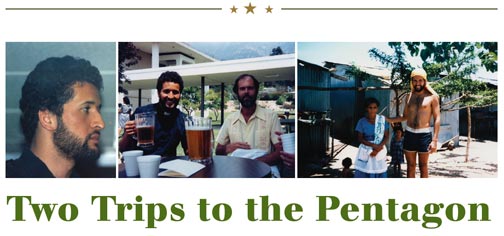
Years before he decided on a life in public service, Juan Vargas had a higher calling. The Senator was a Jesuit seminarian, a young man who actually spent time living in a cell vacated years before by another Jesuit seminarian, Jerry Brown.
Juan has always held a special interest in South America. Part of his mission was spent in that war-torn continent bringing a message of service and peace. On his return, he joined a group of other Jesuits on a trip to the Pentagon to protest American intervention in El Salvador. It did not go well. There was a confrontation as they marched. Juan was arrested.
It is a long road to the priesthood. There are many chances to change one’s mind.
Juan kept his faith, but eventually left the Jesuits. He went back to school and was accepted to Harvard Law School.
While at Harvard, he played basketball and became friends with another student named Barack Obama.
The story, of course, is that Obama managed to get himself elected President of the United States.
A third friend of theirs from Harvard wanted an appointment from Obama. The President offered him Undersecretary of the Navy.
Juan was invited to the Pentagon for the swearing-in ceremony of the Undersecretary. He arrived and amidst heavy security got into line. He noticed a young woman, a second lieutenant, near the front of the line holding up a sign that said “Juan Vargas.” He got out of line and introduced himself to her.
She told him to follow her and they bypassed the other soldiers standing guard near the machines where everyone else needed to pass.
“Have you ever been to the Pentagon?” the young second lieutenant asked Juan.
“I have,” Vargas answered. “I’ve just never been inside.”
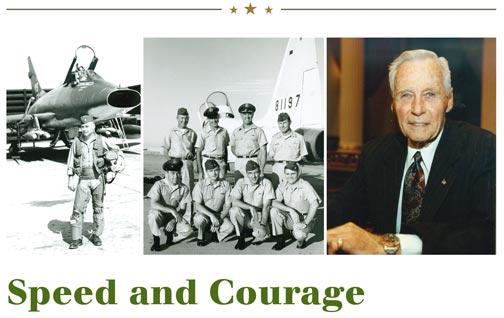
Assemblymember Steve Knight was born at Edwards Air Force Base, a former water stop for the Southern Pacific Railroad, on the borders of Kern and Los Angeles counties. The base itself was named after a test pilot who perished along with five others in a tragic mission that tried unsuccessfully to stretch the limits of aviation technology.
It makes sense that Steve breathed his first breath on a military base. His father, a state assemblymember and senator in his twilight years, was the legendary test pilot Pete Knight.
It is impossible to put the challenges Pete Knight faced into perspective. At a time when test pilots were dying at a rate of one per week, Pete Knight was in the middle of a brilliant thirty-year Air Force career that would see him test experimental aircrafts that no one had ever flown before. He would also fly in excess of 250 combat missions in Vietnam.
No one has ever flown an airplane faster than Pete Knight. Ever.
Forty-four years ago Major Knight flew an X 15 A-2 at more than 4,500 miles per hour or just shy of seven times the speed of sound.
He took the aircraft 281,000 feet into the air and earned the extraordinary distinction of becoming an astronaut for flying an airplane in space.
“My dad rarely talked about his accomplishments,” Steve says. “I remember one time being on a commercial flight with Dad when a passenger started talking about various experimental airplanes.
Even I could tell it was all bluster and he had no idea what he was talking about. My dad just sat there expressionless. He refused to straighten him out while I wanted to explain to the guy that he was in the wrong company to be pretending his expertise.”
The test pilot fraternity is unique. You can’t sit on a commercial flight and talk your way in. There is no honorary group. It is not possible to imagine the independence and courage it takes to climb alone into the cockpit of an airplane that no one is sure how it will behave, a plane that is designed to go higher and faster and move with greater singularity than any other type before it, and fly at great speeds and altitude to find out if it works.
The astronaut, Gordon Cooper, the final member of the Gemini team and the seventh American to fly solo in space, was asked once who he admired most. He answered something to the effect that the greatest men he ever met were those who had the courage to get into a hurtling piece of metal and make it fly according to specifications.
The first test pilot to break the sound barrier was lionized in the movie “The Right Stuff.” He was Chuck Yeager. He was a war hero who distinguished himself in Germany and Asia. A man noted by his colleagues for his abilities and his daring. General Yeager spent his long career flying combat missions and, later, test flights. He commanded squadrons and he flew solo, and with both daring and panache he was an ace who was admired greatly by his fellow pilots long before he became famous.
The first man to step on the moon flew experimental planes before he bounced on the lunar surface on July 20, 1969. A naval aviator and an engineer, Neil Armstrong was known for being self-effacing in spite of his many accomplishments. He was a combat veteran in the Korean conflict and, like Knight and Yeager, he was an old pro from the test pilot Mecca of Edwards Air Force Base. Armstrong would fly thousands of hours in complex aircrafts before he was chosen for his high-profile mission; and like all of his colleagues, find close friends among those who did whatever their country asked of them and did not always survive the task.
Steve Knight remembers a time when his dad attended a funeral service for a pilot friend. Steve was invited along. Afterward, Pete Knight invited Chuck Yeager and Neil Armstrong back to the house. The three great men sat in the kitchen for hours drinking beer and talking about old times. Steve sat in the kitchen with them.
“What did you say to them?” we asked Steve.
“Nothing, not a word,” the Assemblyman answered. “I just listened and it was one of the best days of my life.”

My Dad and Ted
Jim Cassie
Published Issue: Summer 2011
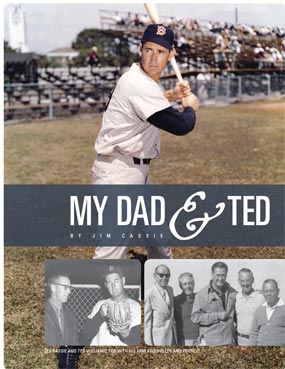
In the early years of the Great Depression, two kids from San Diego, a great guy, my father, Les Cassie, and a future baseball legend and war hero, Ted Williams, developed a close friendship.
They grew up during a time when two boys could get up early and find a day-long game at the then University Heights Playground, where foul balls ended up too often in a reservoir; or the Central Playground, a place neighborhood rivalries played out with an intensity that was largely unnoticed by most adults, since their supervision was not needed by boys playing baseball in the 1930s. It was a time and a place that no longer exists. Ted Williams would remember San Diego as ‘the nicest little town in the world.’ The home runs were hit into the yards of bungalows that were razed to make room for the newcomers. The San Diego of their youth was still somewhat rural, less than 200,000 people in a community where more than three million crowd today. The homes on Utah Street were affordable, if a bit run down, for a single mother. The people who bought the house at 4121 Utah Street almost fifty years after Ted’s mom bought it still boast that they also own the kitchen table on which Ted Williams signed his first major league contract.
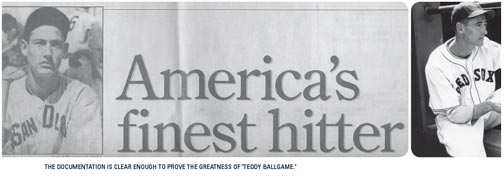
Baseball
Baseball mattered to the boys. They played it every day with guys named Roy and Wylie and a big kid named March who was always chosen first. The professional teams they followed were all on the eastern side of the country and could be heard on the radio or read about in the morning and evening newspapers, and all of this was done in a smaller world and without ever knowing that television, let alone something like cyberspace, would be in anyone’s neighborhood.
Clearly, the common bond for these two friends was baseball. For Ted, it was hitting a baseball. Eventually, for my dad, it was teaching kids how to hit a baseball. And for me, it was a wonderful experience to see this long friendship up-close, all wrapped around the quietly optimistic decade of the 1950s. It was a marvelous time, although we didn’t appreciate it at the moment for all of its wonder. This story is about my dad, Leslie Robinson Cassie and his friend, Theodore Samuel Williams.
Records indicate that Ted’s given name was Teddy, for the first President Roosevelt, but later changed to Theodore. Ted’s mother, May, was of Mexican descent and seemed to find greater satisfaction working long hours for the Salvation Army than putting in time being a mother. She was once named San Diego’s Woman of the Year. It was complicated. Ted loved her. He said during a visit back to San Diego in 1992 that when he first started playing ball he finally had enough to eat. After that, he fixed up his mom’s house. Ted was really quite proud because he wanted his mother’s house to look good. It wasn’t always easy. Regardless, among the many honors Ted earned, he deserves to be recognized as the greatest Latino baseball player of all-time.
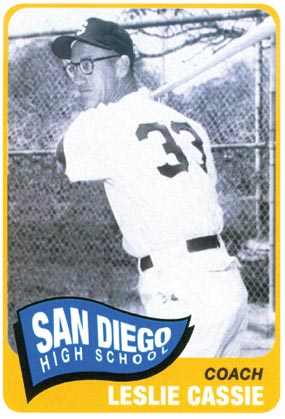
Both Les and Ted grew up in the North Park section of San Diego. They played on the same teams throughout their teen years. In September of 1932 they were among the 351 sophomores that entered through the High Tower of Herbert Hoover High School. Three years later, their yearbook boasted that amidst a battery of floodlights and flowers, 241 graduating seniors, strong, self-reliant men and women, were sent forth to meet the world. Out of the thousands of personal stories that must have existed for those kids, one of the few still surviving is that Ted Williams was so into hitting he actually carried a bat to class.
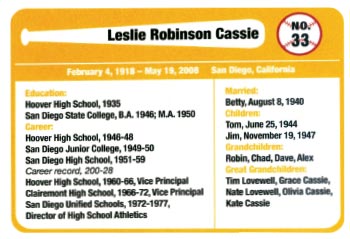 For whatever reason, Ted’s father was not around much. Ted ended up spending a lot of time with my grandparents. My dad was not a fisherman, but Ted and my grandfather spent hours on San Diego’s seaside piers trying to hook the big one. Both Les and Ted were skinny kids for their age. This is in part how Ted later got one of his more famous nicknames, The Splendid Splinter. He was also known as Teddy Ballgame, The Kid, and the Big Thumper.
For whatever reason, Ted’s father was not around much. Ted ended up spending a lot of time with my grandparents. My dad was not a fisherman, but Ted and my grandfather spent hours on San Diego’s seaside piers trying to hook the big one. Both Les and Ted were skinny kids for their age. This is in part how Ted later got one of his more famous nicknames, The Splendid Splinter. He was also known as Teddy Ballgame, The Kid, and the Big Thumper.
Not unlike teenage boys of every age, Ted and Les wanted to get bigger and stronger. A normal summer evening in 1933 was spent with the buddies shooting games of snooker, having a milkshake at the drugstore, and then jumping on the scales. Over the course of that school break neither of them gained a pound.
They both played organized baseball. Ted was brilliant, and quickly caught the eye of professional scouts. In 1935, he graduated early, in December, before the rest of his class, and signed a minor league contract with the independent San Diego Padres of the Pacific Coast League.

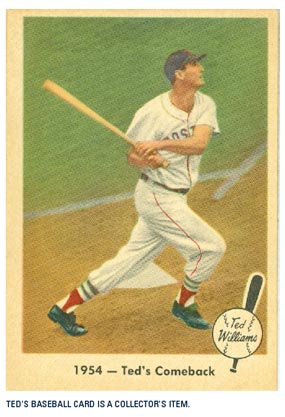 The following year, Ted Williams signed with the Boston Red Sox organization and was immediately placed in their farm system.
The following year, Ted Williams signed with the Boston Red Sox organization and was immediately placed in their farm system.
Ted had rarely traveled as far as the neighboring San Diego communities, let alone to the major league facilities in Florida. So, the boy who would become the great Teddy Ballgame and my grandfather, who was a carpenter for the San Diego School District, boarded a bus bound for Sarasota, Florida. During the trip, an already painfully skinny Ted became ill and the two of them were forced to stay a few days in New Orleans until Ted could be nursed back to recovery. That year was the last one where Ted Williams would not be one of the most famous people in America. Ted played well enough for the forgotten Minneapolis Millers in the American Association to be promoted.
On April 29, 1939, at the age of 20, Ted Williams played his first game in historic Fenway Park in Boston, Massachusetts.
Over the next quarter century, Ted Williams would put together 21 Hall of Fame seasons. Those magnificent games were interrupted with four years of serving his country through two wars. He was a genuine All-American. As a boy, Ted told my dad and his friends in school that he wanted people to say he was the greatest hitter of all time. It all came true. Ted compiled a .344 batting average, had 521 home runs with 1,839 runs batted in. Also, while not known for being fast, he remains only one of three players to steal a base in four different decades.
Depression Boys
I recall one story told around our house demonstrating how tough things were near the end of the Depression and at the outbreak of World War II. After Ted signed his first big league contract, he bought a car and parked it in front of his parent’s house on Utah Street. Soon thereafter, the car was on jacks with the wheels stolen. His brother, who would lead a troubled life, yet was cared for and supported by Ted through a series of legal problems and health issues, a lifestyle leading to a premature death, had sold them for cash.
At the same time, his buddy, Les, long and lean and wearing his signature eyeglasses, entered San Diego State College. Baseball still mattered. He played on the baseball team and studied to be a teacher, a baseball coach and a sometimes scout. When the war broke out, his eyesight was so bad he was not aCCepted into the military. Instead, he took a break from his studies and went to work for the defense contractor that later became General Dynamics and labored as a draftsman building aircraft. Following the war, he joined a long line of soldiers and returned to SDSC.
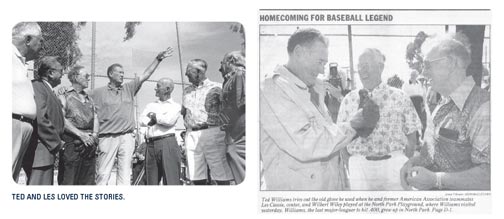
Again, eligibility in place, my dad played ball. In the spring of 1945 or 1946, his San Diego State team was playing against UCLA in sparsely populated Westwood. It didn’t matter who won, but UCLA, like all the other schools, had an infielder who was getting started again after returning from the war. My dad pitched most of the game and gave up three hits to that Bruin without one of those balls getting out of the infield. The UCLA player was a multi-sports star by the name of Jack Roosevelt Robinson. Two years later, of course, the great Jackie Robinson would become one of baseball’s immortals and break the color barrier in the big leagues. He would also deservedly reach the hallowed Hall of Fame shrine in Cooperstown.
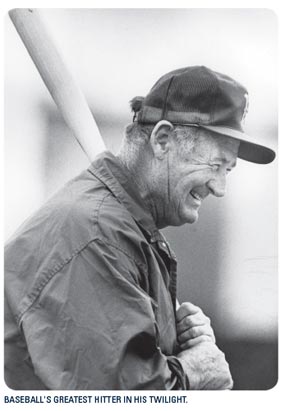 Ted brutalized American League pitching after the war and over the next five years led the league in every hitting category. The stresses of the real world intervened, however, in the form of the Korean War and on his way to re-writing the record books, Ted was recalled as a reservist after playing only six games in 1952. It is incredible to think of what his numbers would have been if Ted had not spent some key years of his career in a uniform other than baseball.
Ted brutalized American League pitching after the war and over the next five years led the league in every hitting category. The stresses of the real world intervened, however, in the form of the Korean War and on his way to re-writing the record books, Ted was recalled as a reservist after playing only six games in 1952. It is incredible to think of what his numbers would have been if Ted had not spent some key years of his career in a uniform other than baseball.
His war record has been well documented and his “ace status” as a pilot is a testament to his personal courage and his 20/10 eyesight. Williams said being a good pilot demanded athleticism. He taught others how to fly in WWII. He flew combat himself in Korea. Another big-leaguer, Yankee second baseman Jerry Coleman, was a pilot in a different squadron on a mission when Williams was shot down. Obviously, Ted survived. Coleman is the only major league player to face combat in both World War II and Korea. He would have a decent career as a player and spend more than twenty years as the announcer for the San Diego Padres. After flying 38 combat missions, Ted was released from duty and rejoined the Red Sox in mid-season, 1953. At that time, the Splendid Splinter was putting on the weight and muscle of his middle years. He was 34 years old.
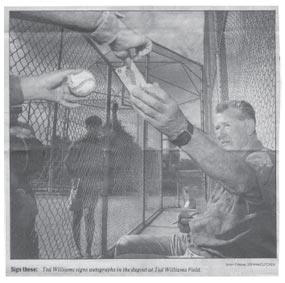
Coach
Throughout the late-forties and fifties, Les Cassie was a suCCessful coach at San Diego High School. Over 13 years, he produced tough teams that understood the fundamentals of the game. His coaching career included brief stints at his own Hoover High School and San Diego Junior College. His win-loss record was a staggering 200-28. He mentored gifted players, including Floyd Robinson who would play for the Chicago White Sox and Deron Johnson, who led the National League in runs batted-in (130) in 1965 with the Cincinnati Reds. Paul Runge, a fairly gifted catcher, played in the Houston organization but followed his dad as a major league umpire. Today, a third generation Runge is calling balls and strikes in the big leagues.
I recall coming home from the playground one day to learn that ‘The Thumper’ would be having dinner with us. My mother told me I couldn’t tell anyone Ted was there. If I had, she was concerned, aCCurately so, that the backyard would be filled with neighborhood kids. I remember the Russians had launched a satellite that day and we all were out there trying to see it. Ted had a rather salty vocabulary. No one used bad words in our house, so for me, it was like listening to the modern-day comics.
Ted always got around to talking about his favorite subject, hitting. In fact, the boy who left high school early wrote three books. One was called The Science of Hitting. He had charts and diagrams and it was something he understood viscerally and tried to share with others. I remember him asking me if the pitched ball looked like a “volleyball” coming at me. I said that it looked more like a “golf ball.” The next week I had glasses and have worn them ever since.
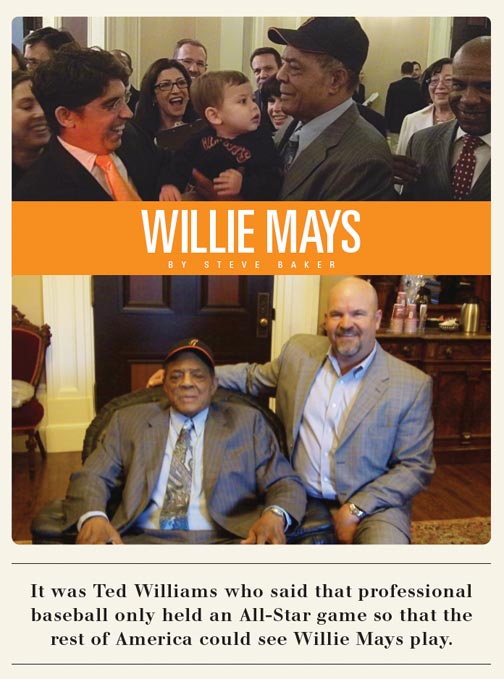
In 1957, my parents, my brother Tom, me and another couple, took a trip in a Buick Special. It was part business, but mostly pleasure. We spent three weeks in a car with no air conditioning visiting places like Joplin, MO, Chicago, Binghamton, NY, New York City, and any other place where there was someone in organized ball that my dad had played with or coached. The best stop was Boston. Ted always lived in a hotel. It was there I met Bobbi Jo, his daughter by his first marriage. She was my age, maybe a bit older. I remember we needed to run everywhere to avoid his fans. It was amazing. It was on this trip that I had my first ride in a taxi. Bobbi Jo was fearless and immediately got on the portable radio to talk with the dispatcher, who she seemed to know. She was something.
Ted loved the outdoors. He was allowed to keep his hunting skills sharp during the season by shooting pigeons that landed on the infield at Fenway. He did agree to do this on game day afternoons when the fans were not around. As gifted a fisherman as a baseball player, he lived in the Florida Keys during the off season. Sometime near the end of his career, a hurricane hit the Keys and many of the items he saved from his playing days were lost. I came home from school one day and there was a large trunk in the garage. It was filled with Ted’s old uniforms, hats, gloves, baseballs, bats and more. He had shipped what remained of his collection to our house. I recall thinking this is just a bunch of old stuff. I was wrong. Just before Ted was inducted into the Baseball Hall of Fame in 1966, the trunk was shipped to Cooperstown.
Last
Ted’s last season was a memorable one. In 1960, at the age of 42, he hit .316 in 113 games. In his final trip to the plate, he hit one out. He touched home, ran in the dugout and went directly to the clubhouse. He later said he wished he had stepped out of the dugout and tipped his hat to the Bosox fans. His relationship with them was an uneasy one, but Tom Yawkey, owner of the team, respected Ted so much that in the latter part of Ted’s career Yawkey sent him a blank check with his contract and allowed Ted to fill in the number.
One of my last recollections of my dad with Ted was at a dinner in San Diego that was sponsored by Sears. Ted had signed a deal to put his name on fishing rods, reels, guns, baseball gloves and anything else that would help sell their merchandise. During the meal, the president of Sears asked Ted how he liked their new line of fishing gear. Ted abruptly said something to the effect that he just has his name on it, he doesn’t use it. It deflated the Sears man.
From 1969-1971, an aging and increasingly irascible Ted managed the Washington Senators and led them to their only winning season with that name and in that city. I remember visiting with him during a series with the California Angels. He was swarmed when he went through the hotel lobby, but he really didn’t want to stay in his room. We went to the ballpark. It was mid-afternoon and he asked the Angels to put a rocking chair in centerfield prior to the night game. Soon Jim Fregosi, the Angel star at the time, and several of the Angel players were talking about hitting with ‘The Kid.’ That night, the Senators beat California 2-1 in 15 innings. My wife at the time thought it lasted an eternity, and when asked by Ted how she liked the game, told him, “All you guys do is spit and scratch.” Imagine that.
My dad and Ted talked over the years on the telephone. They did manage to get together for a mini-reunion at their old playground during a celebration in San Diego where they named a freeway after Ted. In 2000, Les would be inducted into the Coaching Legends at the San Diego Hall of Champions. Ted summed up their friendship. “You know,” he said, “I’ve always thought of Les as my brother.”
I was lucky. Les was my dad. Every time I went back to San Diego and someone heard my name they would ask me if Les Cassie was my dad. I’ve said yes a few times in my life. I’ve never said it with more pride than I would say it at those moments. I loved him very much.
The End
The end for Ted was unfortunately bizarre. Shortly after his death in 2002, his son, John-Henry, a product of his second marriage, produced a family pact that apparently Ted had signed saying he wanted to be “suspended by cryonics” at a life extension foundation in Scottsdale. Bobbi Jo, still tough like her dad, sued, saying her father wanted to be cremated. That was what Ted told my dad. He even added that he wanted to have his ashes scattered over the Florida Keys to join a favored, previously departed dog, Slugger.
The theory was that John-Henry was marketing his dad’s reputation and wanted to sell his DNA as a possible winner. At one point, my dad told John-Henry that “nobody has more of Ted’s DNA than you and it doesn’t help you hit a curve ball.” Ted’s boy would not enjoy the benefits of his marketing skills for long. He died from leukemia a few years after Ted, at the age of 35.
Les
My dad passed away in May of 2008. My mother joined him in October of that year. They are gone, but my brother and I were left with a locker room full of good memories. And this one is as good as any. On our trip in 1957, after visiting with Ted, we went with him to New York where they were playing the Yanks. My dad was a scout at the time for the Yankees, so Tom and I got to go into their clubhouse and see the likes of Bobby Richardson, Hank Bauer, Mickey Mantle, Moose Skowron, and Yogi Berra. There was also another San Diegan in the clubhouse – Don Larsen; the only man to pitch a perfect game in the World Series (1956). What a treat. Our seats that day were directly behind home plate in the first row. One inning, Ted led off and said something to the catcher, Yogi, who turned and gave a quick wave to a woman in a red dress. It was my mother and she nearly fainted.
I still picture the setting today: dinner on Austin Drive in San Diego with Ted at the table and Ted says to Tom and me, “Do you know what the most important thing about hitting is? Get a good pitch to hit.” And that’s pretty good advice for a lot of things in life.
Postscript: On an early spring evening in 2009, I had the opportunity to meet Don Larsen and his wife in Sacramento. We chatted about mutual acquaintances we shared because of my dad. Larsen had graduated from Pt. Loma High School in 1947. Of course, the story always takes a turn. In 1998, another Pt. Loma High alum, David Wells, pitched a perfect game in Yankee Stadium. And who was in the stands? Don Larsen.
California Conversations (CC): Did you ever spend any time with Ted Williams?
Willie Mays (WM): Ted was a good friend of mine. We would see each other at baseball events after we retired and he was always very friendly to me. And I guess that was not the case with everyone.
CC: Did you talk about hitting?
WM: No, I never talked hitting, or even talked about playing baseball, with Ted. I never really do when I’m talking to baseball people. Whatever anybody’s done, I’ve already done it.
CC: When did you first realize that you could hit the ball better than anyone else?
WM: I was 12. I didn’t play little league ball. I was already playing on a semi-pro team in my hometown near Birmingham, Alabama. I could hit the ball better than guys anywhere around my age, and I was playing with grown men. I was playing on teams with my dad.
CC: Your dad had a great nickname?
WM: Yes, he was called Cat Mays.
CC: Was he as good as the Say Hey Kid?
WM: I don’t know. (Laughs) I don’t judge. I don’t do that. I don’t judge people by what I do. I think the fans have to do that and not me.
CC: What was the biggest difference between playing in New York and San Francisco?
WM: Nothing. It’s just baseball. You catch the ball, you throw the ball, you hit the ball.
CC: Would the Dodgers and the Giants hang out when you all worked in the same city?
WM: No. When the game was over they went their way, I went my way.
CC: Did you live in New York City?
WM: Yes, I lived on A Street, right by La Guardia Airport and then I lived in New Rochelle on North Street. That was back in 1956-57. Then we moved to California in 1958 and San Francisco has been my home ever since. I like California.
CC: When you were in the Army, were you ever concerned that you would lose a step or that you wouldn’t be able to come back and play baseball?
WM: No, I really didn’t think about it. The Army was good for me. I grew up, I got stronger. I played five days for the Army and two for myself in a City League. I didn’t want to go. I made the best of it. I might have had another 60 or 70 homeruns if I hadn’t gone into the service.
CC: You would have broken Babe Ruth’s record?
WM: Yeah, but still that wasn’t important. It’s just a number to me. My father and I used to talk and we discussed that you have to be in the top five of everything important and if you look at my record you’ll see I’m in the top five of stolen bases, hits, knocked-in runs, home runs, all kinds of stuff. Top five. Think about that. A lot of guys are good hitters or good fielders, they’re good base runners, but they’re not in the top five of many things, maybe just one thing. I played 150 games or more for 18 or 19 years, and that, to me, is a lot of games. I led the league in stolen bases four years in a row and then I quit running. I only stole when I had to.
CC: 338 stolen bases?
WM: I could have stolen 450, probably 500 if I wanted to. Again, those are just numbers. They didn’t tell me they were going to keep records on that kind of stuff.
CC: Can you teach hitting or do you just have to have that skill?
WM: I can tell someone what to do and how to do it. We had a kid, a third baseman, Matt Williams, and Matt couldn’t hit a breaking ball when we first got him. We taught him.
CC: When people talk about the great hitters…
WM: Hitting? That is only one aspect of the game. It’s not all about hitting. I’d rather play defense than hit.
CC: Was defense more fun?
WM: It is the key to playing baseball. If you can play good defense and you can score one run then they got to score two. You see a lot of teams with good offense, but the offense is not enough.
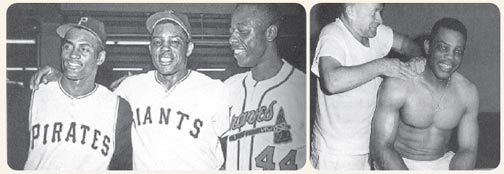
CC: You won twelve gold gloves.
WM: They didn’t start that award until I was in the league for five or six years. I was the captain on the field and I would set our team up depending on where the pitcher was going to pitch. If he throws the ball in the same area and you know the batter, you will have an idea of where he is going to hit it. The great catch most of the time is not having to make a great catch. It is being where you are supposed to be. Like people have computers now, I was computing in my head. I had to know everything about every club, every hitter.
CC: Who chooses the captain?
WM: On the Giants, the manager did. Alvin Dark did that for me. We played together when he was a shortstop in New York and if the pitcher was throwing a breaking ball, Alvin put his hands behind him to let me know it was coming so I could expect to catch a ball in the gap. He was good.
CC: When you are at the plate what does the ball look like when it is coming toward you?
WM: I could see the seams on the ball. Maybe that’s why my eyes are bad now because I had to squint to see what was coming all the time. I could see it all.
CC: You’ve said the famous Vic Wertz’ over-the-shoulder World Series catch was not your greatest catch.
WM: I made a lot of better catches than that, but it was the most publicized one. In 1954, the World Series was done in four games so they had to pick a highlight I guess and they picked that one.
CC: What would you have done if you had not been a baseball player?
WM: I don’t think I wanted to do anything else. My dad would never let me go in a coal mine, he never let me work, I never had a job. I actually had a job for 3 hours one day and I quit it because it interfered with my game.
CC: What was the job?
WM: Washing dishes at a restaurant. It was not a career I wanted.
CC: I hear you are a pretty good golfer?
WM: That was after baseball. I got down to 4 when I could play every day.
CC: Do people still come up to you and say “Bye, Bye Baby?”
WM: No (laughs). That was Russ Hodges. He was a great guy and a great announcer. They play ‘Bye Bye Baby’ at the ballpark now. I had two batting coaches, Lon Simmons, the other announcer, and Russ Hodges. They could see me changing my swing and they’d call me and say you changed and I’d go home and look at a film and find out they were telling me the truth.
CC: The President pro Tempore of the Senate, Darrell Steinberg and the Speaker of the Assembly, John Perez, wrote a resolution calling you the greatest baseball player of all time and they presented the resolution to you on the floors of both their houses on your 79th birthday.
WM: It was a great honor, one of the great honors of my life. I was very proud to be there. (Laughs) And they got the resolution right.
CC: Can you help me get tickets to the Giants?
WM: (laughs) Call me. I can work something out.
But The Thing Will Still Remain
Terence McHale
Published Issue: Summer 2011
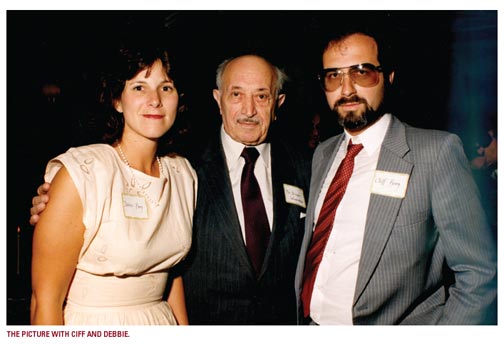
The Old Man
The picture was taken twenty or so years ago at a fundraiser. My friend, Cliff Berg, and his wife Debbie are in the photo. The third person is an old man. His features are drawn long, and his dark eyes are damp. His complex face is weighted down by experiences that never leave him. He has become a celebrity of sorts for the oddest of reasons. The old man survived the Final Solution, a twentieth century idea of inexplicable evil, a plan created to kill all of the Jews in Europe.
The old man lived long enough to cast a bright light on those who participated in the implementation of the Final Solution. His idea wasn’t complicated. He wanted everyone to know that decent people were dragged into a hell where every part of their lives was shattered before six million of them were killed. The old man wanted everyone to understand that their neighbors bought into a society where families could be violently removed from their homes. He wanted everyone to remember that families were stripped of their possessions and sent on trains to terrible places where they were separated by everyday bureaucrats with the authority over life and death. And he wanted those who were responsible to be held accountable for their crimes.
Rabbi Meyer May, an interesting man, explained that this old man would identify officers and guards at the camps who had killed people. The old man would say that it was murder, it wasn’t war. “War is when you are on the beach at Normandy and you’re being shot at and you shoot somebody else, that’s not called murder,” May said. “That’s called war, because that is the nature of war. What we’re talking about here is murder…about people being herded into a ravine and shot. We are talking about guards beating people to death, or hanging them, or forcing them into gas chambers. We cannot accept that there is a scale to murder. There is not something that says genocide and big murder are bad, but little murder is okay.”
After the war ended, the old man’s goal of telling the truth should have been an easy task. It wasn’t. No one wanted to disturb a fragile re-piecing together of a new world order. It was easier to say those times, the years of chaos that made up an era of war, the trips on the train while the rest of the world was bleeding, were an anomaly and needed to be forgotten.
The early days of what ultimately became the old man’s life’s work were solitary. He strung nickels together to finance chasing down soldiers and employees who handled the logistics of murder being managed on a massive scale. He worked by himself. It would have been much easier to quit and disappear into the quiet comfort of a private life. “You are becoming a lightening rod,” he was warned. He kept moving inexorably forward. He had seen too much to let those who were gone be forgotten.
This old man lived a life that was unimaginably different from what his parents could have hoped when he was born early in the last century, in a city that is gone, in a country that no longer exists.
Young once, only for a short time, even a bit of a dandy in the way he dressed and slicked back his hair; he wanted to be an architect. He was denied admission to the university of his choice because of his faith. It was not the first limit imposed upon him. He’d been beaten by soldiers when he was a child. There was no recourse. The soldiers had free rein to be as abusive as they wanted to be. It was an entitlement too many found too easy to indulge. The old man and those he loved were forced to wear a distinguishing symbol. The pogroms in memory were still real and new ones were now more inevitable than considered possible. The legal structure promised in Mein Kampf, and left unchallenged until it was too late, subjected him to fearsome abuses.
The old man’s talent survives him in drawings that are archived, and, had the tenor of his life been different, his artistic abilities were what would have made him noticeable. He fell in love and married his high school sweetheart. That is not a distinction that separates him from millions. It was the way he would prove himself resilient that makes a difference. He was old in the picture with Cliff and Debbie. He got old fast and was old for a long time.
In 1938, a popular short plug shown before the American movies warned the world of the continuing horrors emanating from Germany. The old man in the picture knew of them. He was the hunted in an age of systemic anti-Semitism. By 1939, in a civilized part of Europe, in a modern world, it became illegal for him to drive a car or own property. It was socially acceptable to do much more than break his windows or destroy his business, or beat him up and make anathema the manner of his worship. The Nazi evil – ugly, perverse in retrospect and monumental in history, a marketing and political movement that swept away common decency – permeated a continent. The brown boots and the strutting, the magnificently staged rallies, the hysteria, the Arian purity espoused by weakling men, an absurdity that is now so easily caricatured, were capped by a nationalized stiff-armed devotion to a demagogue with absolute power.
The old man in the picture understood that political extremism sold an imponderable cruelty. Adolf Hitler put the world at war on the premise that a future could be built on a personal violence against Jews. He empowered the sycophantic son of a school principal, a harpsichord player named Himmler, to lead the design of the Final Solution. Adolf Eichmann, a door-to-door salesman with organizational skills and, even by the old man’s estimation, someone who lived the life of a family man, made the trains to hell run on time. The old man would play a role in the capture of Eichmann after the war and would note that this common man’s trial would only have made sense to the prosecutors if he pled guilty to murder six million times.
The consequences of a Nazi philosophy can be explained a generation later in gut-wrenching newsreels of a devastated Europe and in the longings of a young girl’s diary. The bombed-out buildings provide a ghostly silhouette. The naked bodies piled in a heap challenge our humanity. The disappearance of Anne Frank resonates throughout the years she deserved to live. She would be an eighty-two-year-old grandmother if there’d never been people, everyday people, neighbors, storekeepers, salesmen, classmates, clerics, harpsichord players hoping to be athletes, who believed in Hitler.
This old man in the picture endured years of captivity. He was brilliant and ambitious and he’d committed no crime.
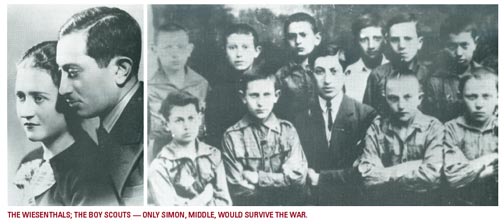
He was six feet tall, lean, well-built and healthy when the nightmares took over. At the end of the ordeal, and that is all the Allies and the enemies wanted to call the murder of six million people, he weighed only 110 pounds. That is bones. That isn’t being hungry. That is starvation. That is being sent from bunkhouse to bunkhouse where individual Nazis are given the freedom to reduce you until they decide to kill you. He was left in the control of people who worked as plumbers, steelworkers, clerks, and teachers before the war and would try returning to that normalcy when it ended. At one of these insulated camps, the same people who tormented the prisoners as a matter of course constructed a chapel that was visible on the pathway leading to the gas chambers. What benevolent and merciful god did they kneel to in those years? Was it the same god they worshipped before the war and then found waiting for them after they no longer had badges and whips?
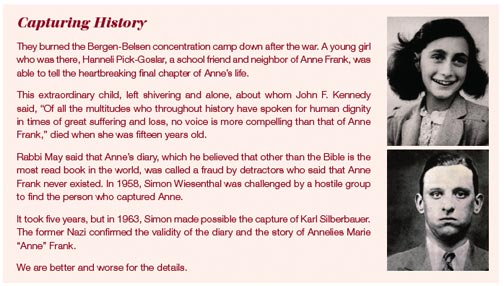
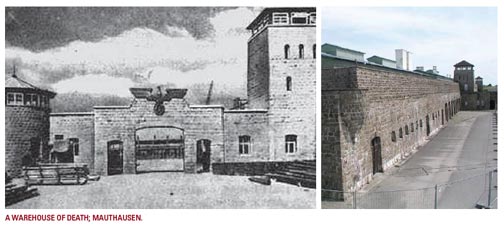
The old man was sent to a series of concentration camps, thirteen of them, extermination camps, places of slave labor and everyday humiliations. He lived with execution as a constant threat. Among the millions who would die in a celebrated system of slaughter would be 80 family members of the old man and his wife. He endured the endless deadly minutes of the implementation of a Final Solution that took years to ultimately fail.
The old man would live long enough to chase those who managed to weave murder into public policy.
There is an ancient photo of the old man as a leader of ten other boy scouts. He is the only one who survived the Nazis. The youth before the Nazis took hold of him is completely gone. The young man that once must have charmed and inspired is unrecognizable in an old man who refuses to forget. Where was home he wrote when the war was over? What did the concept mean? What remained of family, friends, a house, relations? None of these existed for him any longer. In the picture with Cliff and Debbie, the old man’s mustache is turning white. His high-domed forehead is a less noticeable feature than the deep folds around his thin hard-set lips.
Everyone at the fundraiser with Cliff and Debbie was there to meet the old man. He survived the wholesale killings. He delineated the difference between vengeance and justice and dared to say, against incredible opposition, that there is a consequence when employees or soldiers turn into monsters. Incredibly, after all it meant for him to be a Jew, a man whose mother died in a gas chamber and whose mother-in-law was shot on a porch in her old age, and the girl he loved was lost for years in the Nazi labyrinth, there was a museum of tolerance being built in his name.
Six million Jews died. He knew them. In his lifetime he also made a point of remembering the gypsies and the homosexuals and the disabled and the noisy, although infrequently heard, political opposition who died because they didn’t fit an Aryan ideal. The Final Solution swept others into the net. He understood what all of them endured. He knew. It is impossible to think about what kept him awake when he went to bed at night.
The old man awakened on the 5th of May, 1945, in the Mauthausen concentration camp and greeted the tanks that arrived to liberate the prisoners. It is almost ridiculous to call it a camp. There were 85,000 inmates. Two hundred twenty thousand people died in that tortuous hellhole since it was opened to handle the overflow from the first concentration camp, Dachau, seven years earlier. Can anyone say Dachau now without wondering what was the gossip at the neighborhood market? Who is living in the Berg house? What does a person give up inside to know that Dachau is at the corner?
On the morning that the Allies arrived the old man was punched by a clerk who thought the consistent brutality would continue. It wouldn’t. By the second morning, the lines of power had shifted. The strutting Nazis were reduced. They were emptied of their starched uniforms. They were void of the power over life and death to which they had grown accustomed. The commandant was already on the run. He would die within days and have his body hung on a fence in an ignominious display. Himmler, the harpsichord player turned Halloween architect, would try cutting a deal and find there were no takers. Suicide was his option. Eichmann was running too. The old man would find him.
The old man began a list of the war crimes he had seen the Nazis commit in the camps. He was meticulous. He spent twenty or so days compiling the list in Polish. He was an ill, skinny ghost in a striped uniform summoning testimony from those who lost the grim grasp on the life he still owned. He knew their voice was silenced and he was going to make sure they were heard. The list was done on different pieces of paper for each camp where he lived, and struggled to survive, and the ninety-one Nazis he named became the beginning of his life’s work by letting their crimes be seen in the light. It was important enough of a document that the Allied investigators would save it for evidence. That list still survives today. In the end, the old man would become the Nazi hunter who made justice, not vengeance, his legacy.
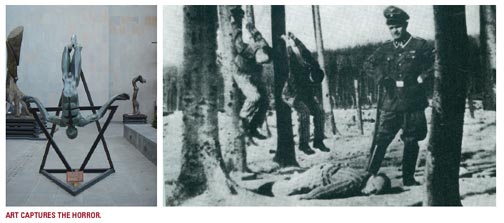
The old man is wearing a name tag in the picture with Cliff and Debbie.
Now, long after the villains of that generation have been mostly filed away in a shameful chapter, his name still matters.
The name is Simon Wiesenthal.
Museum
The Museum of Tolerance is an ultra-sleek multimedia, hands-on educational arm of the Simon Weisenthal Center on busy Pico Boulevard in Los Angeles. Busses pull up with kids who like the idea of a field trip. There is the timeless delight of school children out of the classroom and on a break. They are not unlike lines of other kids who are about to enter an amusement park. Maybe they’ve been told that this Museum is not out to entertain them. It doesn’t matter. Until they get inside there is no way to prepare them for their encounter with an age that preceded them.
They are greeted with framed photos of elderly survivors decades removed from captivity. They look like people we’ve always known, our neighbors, our friends, our family, and yet once they were targeted. Underneath their photos are the places they were incarcerated. It is not yet clear that there were almost 1,500 camps, some in Germany, most in occupied countries, some of the names familiar, Bergen-Belsen, where Anne died, Ravensbruk, Konin, Auschwitz where more Jews died than all of Britain lost in the war. In Austria, at the turn of the century, there were more than 240,000 Jews. In 1945, there were less than fifty. There are quotes chosen by the former prisoners of the Nazis; “When I needed to survive, I did.” “Hate is a waste of time.” “Indifference let hatred rule the world, and six million people died.” “My parents never saw their only child grow up.”
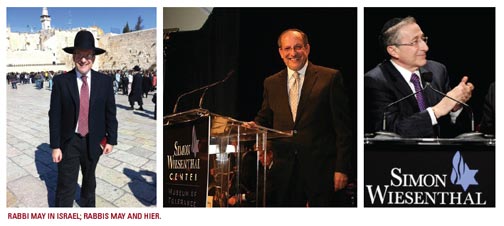
A sculpture, Holocausto, by Jose Sacal, is reminiscent of the way Jews were hanged in the camps. In 1979, Wiesenthal used an actual photo of such an image on postcards that he sent to the German Chancellor asking him to extend the statute of limitations on Nazi crimes. The photo was a stark view of the ease with which torture and murder were part of daily life in the camps. The sculpture conveys what one in six million looks like.
The museum was designed by storytellers. The implementation is high-tech, modern, and hands-on, keeping your attention as you move past screens that challenge you with the power of images and words, to a millennium machine where the seriousness of the field trip is instantly clear in the questions of morality and conscience that are asked and computed. Each of the visitors to the Museum is given the identification of a person who was arrested by the Nazis. It sets the stage for a journey that becomes more personal as you experience all the attendant horrors associated with genocide. It is haunting. There are the personal items that survived. The relics from sacred places are preserved but no longer protected by those families who found peace and hope in the items. You learn about a community, the dancing, the dreams, the worshipping, and then discover it no longer exists. You learn there are many communities that no longer exist. There is the constant foreboding of being chased by the powerful.
You walk through the brick entrance of a concentration camp. It would be trite and unfair to say you get anything close to the same experience of those who were there when such a walk into madness made up real life. It is, however, a vivid moment and the groups of kids who were celebratory outside are now quiet, involved, clearly trying to make sense out of the hatred. Some kids cling to each other. There are tears and there is a wondering how it happened.
Perhaps most powerful is the message that this incredible history would have been impossible if average people did not allow it to happen.
Rabbi May explained that Simon believed the world is made up of haters and anti-haters. “My greatest memory of Simon is when he had just come back from speaking to students. He wanted kids to know that they had a stake in the world, and it is up to them to make the right choices. It is up to you. It isn’t up to anyone else. Every person has to walk out of the museum thinking it is up to me.”
Meyer May
The offices accommodating the work of the Center are across the street in a nondescript building with underground parking. There is the concomitant security that is unfortunately inherent with running a Jewish Center. More than a half-century after the war, the prejudices survive.
The young man who checked my rental car asked who I was there to see. I said I had an appointment with Rabbi Meyer May. He was the first of several employees who told me, unsolicited, how the Rabbi was special to them. An older guide at the museum tapped his chest when I mentioned the Rabbi and said that Rabbi May was in his heart. A woman mentioned how the Rabbi personally cares about everyone who works at the Center. He is a mensch, she said, sure I would know what that meant and happy to convey some good news.
The Rabbi’s office could just as easily belong to a college professor as it could to the CEO of a good-sized company. There are no pictures of the many celebrities he has met over the years, and while there are books, there was nothing pretentious about his collection. I did notice that at the top of a stack on the floor was a private coffee table copy of Arnold Schwarzenegger’s heroic presentation of his years as governor.
The Rabbi is probably in his fifties. He has four lines in his forehead, none of them deep, and he is neither wrinkled nor compromised by middle age. He is nice looking, with hair that is lighter-colored than when he was younger, now gray and balding, and he clearly benefits from his daily walks and clean living. His beard is trimmed, stylish maybe in Rabbinical circles, and also showing the gray. He is friendly, not reserved and not the life of the party, a kindness, immediately good company, a great smile, and a New York accent that has been softened over the years. There is vitality to his movements, intellectual for sure, but more than that; an energy, an enthusiasm that is evident even when he sits behind the desk.
He speaks highly of his more famous colleague, the eminent Rabbi Marvin Hier, the founding dean of the Wiesenthal Center. He gives others credit for the Nazi hunting. Rabbi May is involved in the financing of the center. The Rabbi is officially the Executive Director, a member of a team that has brought more than five million visitors into a museum that seeks to establish a baseline for tolerance through educational outreach, community involvement and social action.
Meyer May was there when the Simon Wiesenthal Center began. He was a young man when he met Simon.
“I knew him when he was a robust person,” May says. “I would pick Simon up at the airport and drive him wherever he needed to go. In those days we didn’t have cell phones. We weren’t texting. We would often eat together. He liked telling stories and had a great sense of humor, sometimes a profane humor. Simon was interesting and would talk of world events. He would talk about cases that had gone wrong, and cases he was working on. He would talk about Israel. His wife asked him why they didn’t move to Israel, why he kept his office in Vienna, and he said the Nazis were not in Israel.
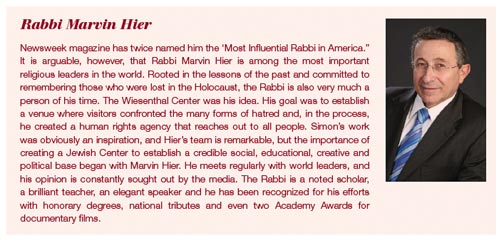
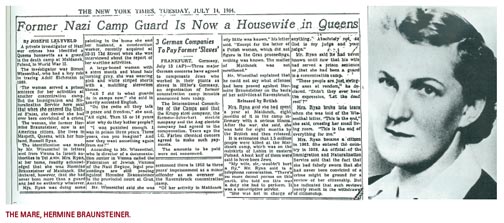
“It is often forgotten that until the Wiesenthal Center started in 1977, Simon was working, literally, by himself. People just didn’t want to be involved with this. At one point he tried to raise five hundred dollars and couldn’t do it. People would say, I’ve been through it, and I want to forget it. That’s why survivors never talked about it for a long time, and from 1945 until 1977, 32 years, Simon worked by himself.
“Simon was not at peace with God after the war. I asked him why. He said, ‘I’ll tell you why. When I was in the Holocaust there was a man who hid a Siddur, a Jewish prayer book. He had a prayer book with him and everybody who wanted to use it had to give some of their rations to this person. I saw someone trade his Siddur for rations that were so meager and necessary. I was disgusted. I said I’m never going to pray again.’ It was a forcefully told story. However, in telling it, Simon also took pause and willingly acknowledged the people who were willing to give up their rations in order to pray.
“Simon lived in places where you see all sides of people.”
Simon
In his own words, in his book, Justice, not Vengeance, Wiesenthal describes the final day of his visit to Israel in January of 1964. He explains that on each trip to Israel he tried to come home with new names of Nazi war criminals that were given to him by Holocaust survivors. On this particular day, three Polish women asked him if he knew what happened to Kobyla.
Wiesenthal explains that “kobyla” is the Polish word for “mare”. The three women explained that there was a female Nazi guard in their women’s concentration camp, at Majdanek, who was given the nickname “mare” because she was always kicking the women prisoners. She was known for carrying a whip that she used to lash and humiliate the Jews left in her charge.
This Kobyla, whose real name was Hermine Braunsteiner, seemed to take particular joy in choosing extra prisoners for the gas chambers. There are stories of her ripping children from their mothers and throwing them up on the back of a wagon.
Wiesenthal spoke often of individuals like Hermine Braunsteiner, a person who would otherwise probably never murder anyone, uncovering their latent sadistic inclinations in concentration camps. They were able to fling a child through the air like a sack of potatoes, strike young girls across the eyes with whips, beat those already weakened by starvation, or fire a bullet into a person’s face.
The Mare
Wiesenthal decided to find Braunsteiner.
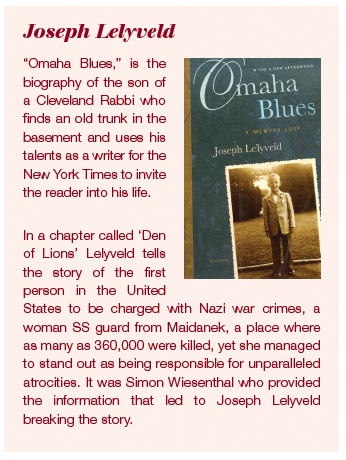 He discovered that her family lived in Vienna. He learned that Braunsteiner came from a strict Catholic family and that as a little girl she always dressed up for Mass. The neighbors explained that the family was not wealthy. Her first job was as a maid. Hermine had gone to work as a prison warden during the war. She accepted higher paying jobs at the camps and was awarded a medal for her efficiency. Immediately after the war, there was a tepid effort to deal with the base inhumanity of particularly notorious Nazis. The Mare would spend three years in prison. It was a sentence that she was able to hide from an American serviceman named Ryan. She married him and moved to the United States.
He discovered that her family lived in Vienna. He learned that Braunsteiner came from a strict Catholic family and that as a little girl she always dressed up for Mass. The neighbors explained that the family was not wealthy. Her first job was as a maid. Hermine had gone to work as a prison warden during the war. She accepted higher paying jobs at the camps and was awarded a medal for her efficiency. Immediately after the war, there was a tepid effort to deal with the base inhumanity of particularly notorious Nazis. The Mare would spend three years in prison. It was a sentence that she was able to hide from an American serviceman named Ryan. She married him and moved to the United States.
“During the nineteen years since the war ended there had not been a single Nazi war crimes trial in the USA, and no one had been extradited to another country for such crimes,” Wiesenthal wrote. He thought this legal case looked favorable because if Braunsteiner did not mention her previous conviction to immigration, then there was a legitimate reason to revoke her U.S. citizenship. He hoped a trial would be imminent.
Wiesenthal contacted the Vienna correspondent of the New York Times with information that Hermine Braunsteiner might be living under the name Hermine Ryan in New York City.
New York
In the spring of 1964, there was no such thing as the Holocaust. That name was not yet commonly applied to the openly acceptable Nazi terror against Jews. The Final Solution was considered an anomaly of war. No one was paying attention. The killing of six million ignored the indignities and actual murder of each person in the accumulation of the ghastly number. Even in a country that prosecuted Andersonville, the Confederate prison camp at the conclusion of the Civil War, and hanged the commandant for his crimes against humanity, there was more than reluctance to address Nazi crimes among people living in the United States…there was a refusal. Until Simon Wiesenthal shined his light on Braunsteiner, who was married to an American and living as an American, there had been no prosecution of any Nazi who found refuge i the United States.
Of course this sanguine approach to bloody, cold, muddy brutality was not solely an American sin. There was a point when Wiesenthal couldn’t raise five hundred dollars to search for the Auschwitz doctor who wallowed in depravity, the quintessential Nazi, Mengele, whose last name is such an abomination for his experiments on the most vulnerable, that merely saying it conjures something nightmarish in the way humans can behave.
The assignment to find the brutal Mare, Hermine Braunsteiner Ryan, was given to a rookie reporter at the New York Times by the name of Joseph Lelyveld.
Lelyveld wrote about Wiesenthal and the Mare in a book he called a memory loop, Omaha Blues, in 2005. Forty-six years after he went looking for Braunsteiner, we spoke to Lelyveld, who is now retired after a distinguished career with the New York Times.
“I was a very green reporter,” said Lelyveld. “I was preoccupied in how you do such a thing like finding Hermine Ryan and get her story. I thought it would be immensely difficult, so I wasn’t really worried about her. I was just worried about the reportorial part of tracking her down.

“It was easy, and if I had been more experienced I would have understood that it was easy to begin with. Being an Austrian, she would stand out in the predominantly Irish community in New York. Unless she had hidden out, people would have been aware of her existence.
“I can still imagine what she looked like and what she sounded like. But a clear memory…this is the funny thing about memories; I had a pretty clear memory of the whole conversation and her appearance. Then not that long ago when I went back to my original article, some of what was in my memory was not supported by the article. Especially my memory that when she answered the door, she said, ‘You’ve come.’
“As inexperienced as I was, I can’t believe that if she had actually said that I wouldn’t have used it in my article. Then in my article she was described as wearing shorts and a matching top and holding a paintbrush. I remember the shorts but I didn’t remember that there was a matching top and in my memory it was a feather duster she was holding.
“There was nothing frightening about her. If you had passed her on the street you wouldn’t have seen anything frightening in her. That, I guess, is the whole horror of the Holocaust; perfectly ordinary people turning into psychopathic killers.
“I know nothing about her origins. She was very young when it happened. She wasn’t so old when I met her. To me, the war seemed a long time ago at that point but it was less than 20 years before. I imagine she was in her early 40s when I encountered her.
“The assignment came to us from Vienna, and the story of Hermine Ryan had been passed on to us through the word that Simon Wiesenthal had knowledge of her whereabouts. It was an extraordinary experience, but I don’t believe it was any personal achievement on my part. It just fell to me as an ordinary matter of a newspaper assignment. It wasn’t a great feat of reporting for me to have found her. It’s nothing I feel proud about. It’s just one of those amazing things that can happen to a journalist in the course of a day.
“I do know that I wrote in my own book and in my own memory of the occasion something to the effect that even by the standards of extreme cruelty in those days, Hermine Braunsteiner Ryan went beyond it in her ferocity. According to some of the materials I found during my later research, and I’ve never looked at the transcripts of her trial, that does seem to be the case. She seems to have done some monstrous things, which raises an interesting moral question about whether there is any redemption for a person who does monstrous things.
“My father was a rabbi, and I don’t have any easy answer for that kind of question. I do believe it was good that she was extradited from the United States and convicted in a German court and that she served time in Germany. Of course, there is no justice in these matters. There can never be any justice. I know their efforts continue to find the last 85-year-old killer and to reclaim some piece of property for families that were almost wiped out by the Nazis. It’s so hard to disapprove of those things, but they seem so paltry in comparison to the wicked deeds that were done, that they are just footnotes.
“There is no such thing as restitution in regards to the Holocaust. There is just a playing out of the story, and one day very soon there will be no further playing out of the story because there will be nobody left alive who was directly involved.
“But the thing will still remain.”
The Thing Still Remains
It would take nine years to extradite Braunsteiner. During her trial, which she shared with fifteen other Nazis, one of the longest trials in history, witnesses would tell of the vicious beatings and how the woman who tried hiding as a housewife in America, kicked inmates to death with her steel-toed boots. She would be found guilty of murdering and collaborating in the murders of more than 1,000 people, including 102 children. The testimony in a sterile courtroom of her throwing children by their hair onto trucks was the detail of real moments for the women put in her charge. The stories of her cruelty make you wonder what died inside the Nazis that allowed them to make such behavior a matter of course. Braunsteiner would be sentenced to prison on June 30, 1981, four decades after her crimes were committed. She would receive the mercy she denied others when she was released for health reasons fifteen years later. She died a free woman at the age of 79.
Simon Wiesenthal’s greatest fear was that ‘the monotony of horror’ would become too much for people to take in, and possibly even emotionally digest. Simon wrote, “Sometimes I am seized by the fear that teachers and children in history lessons will be saying in the 20th Century Hitler tried to set up a great empire in Europe. Contemporary witnesses maintained that he had attempted to exterminate the Jews of Europe. There is talk of the poisoning of Jews in specially established camps. It seems excesses were in fact committed, though those accounts are probably greatly exaggerated.
“We are under an obligation,” he continued, “to make young people realize how unique, how unbelievable, how exceptional the period of the Holocaust was. By this very attempt, we make it difficult for them to accept our accounts as the truth and as facts. The incomprehensible remains incomprehensible.”
There is no way for reasonable people to understand an ideal that would legalize and promote the imprisonment and murder of millions of people. How do we make sense of the individual actions that ended the life of a beautiful young girl and countless like her, the unrestricted brutality visited on neighbors, depraved conditions that were part of a master plan, a final solution, a visit by a Nazi officer that was celebrated with the shooting of hundreds of Jews. How do any of those who participated ever find their soul again?
The reporter, Joseph Lelyveld, struggled with the idea of redemption. Rabbi May said, “In Judaism we call it repentance. A person can repent. They can repent up until he or she dies. But does Eichmann ever have an opportunity to repent? Does a mass murderer have an opportunity to repent? Does a small murderer have a chance to repent? It is a difficult thing which would require an extraordinary, serious commitment by the person to change their life. But only G-d has the ability to accept the penitence and to know the penitent’s true remorse.”
The Rabbi took a call from his daughter-in-law at the conclusion of our meeting. He asked her if his grandson was playing basketball and if he had his guitar. He smiled broadly when his grandson got on the phone. He said to the little boy, “I love you. I love you like Craisins.”
In Hitler’s world, and the world of the average men and women who followed him, the Rabbi would be gone.
Simon
Simon lived a long life. He died at the age of 96 on September 20, 2005, in Vienna.
“I don’t think Simon ever became a person who prayed three times a day,” said Rabbi May. “He did not keep Kosher, but he had a connection to Judaism. He was buried in Israel. He wasn’t cremated. He was buried according to Jewish law. So, no hanky-panky. No short cuts. I don’t think he was angry at God by the time he died.”
In the picture with my friend Cliff and his wife Debbie the old man who had done so much is wearing a name tag.
There is a remarkable museum that bears his name. And those he wanted remembered will never be forgotten.
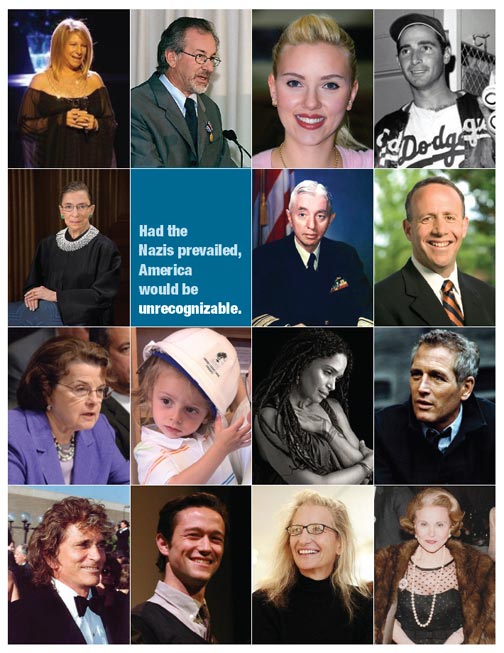
A Long Hike in a Historic Place
Adriana Calderon
Published Issue: Summer 2011

Deanna and Steve met at the Tahoe Rim Trail Endurance Run. He was running fifty miles and she was doing the 10K, a 6.2 mile run.
Deanna finished with her run first and left a note on the windshield of his car asking him to call her and let her know how the run went for him. He still has that note. They ended up with each other and it is an enviable match.
You can hear it in their voices that they know how lucky they are to have found one another. He’s an emphatic military guy who once spent seven months in a submarine and when he mentions his wife there is a lightness and humor. She doesn’t last very long in a conversation without finding a reason to laugh. She is serious when she says the best part of being in the wilderness is Steve’s company.
100 Mile Runs
They did their first 100 mile run together in Arizona. It took 27 hours. There was no sleep and 96 miles into that Arizona run Deanna said she almost quit.
“Steve was like, ‘What? You’re kidding me right’?”
Deanna has a laugh that is close to crystal in its clarity. It is completely natural, and when she tells a story it punctuates the image with a sense that she is taking you to that moment.
“I just had to sit down. I sat on a rock where you could see in the distance the end of the run. That is not what got me started again. I also saw a snake hole right next to me. That got me off the rock.”
Deanna and Steve made a habit of endurance runs. Deanna who started running for fun when she was twenty-seven, doesn’t flinch when she talks about events such as the Western States 100 mile event. They have run countless marathons. For added fun, they hiked Point Reyes at 13-15 miles a day, and the Pacific Crest Trail near Donner for a quick 27 mile overnight hike.
“I don’t know exactly what draws us to the long runs and physical challenges. It is a good question. I think it’s just to see what we can do and how comfortable or uncomfortable it will be.”
Friends told them of the John Muir Trail and the unbelievable beauty. They were shown pictures. It became something they wanted to do, not sure really what to expect because they had never gone backpacking for more than five days at a time. They’d never done the kind of backpacking where you spend eleven days in the back country.
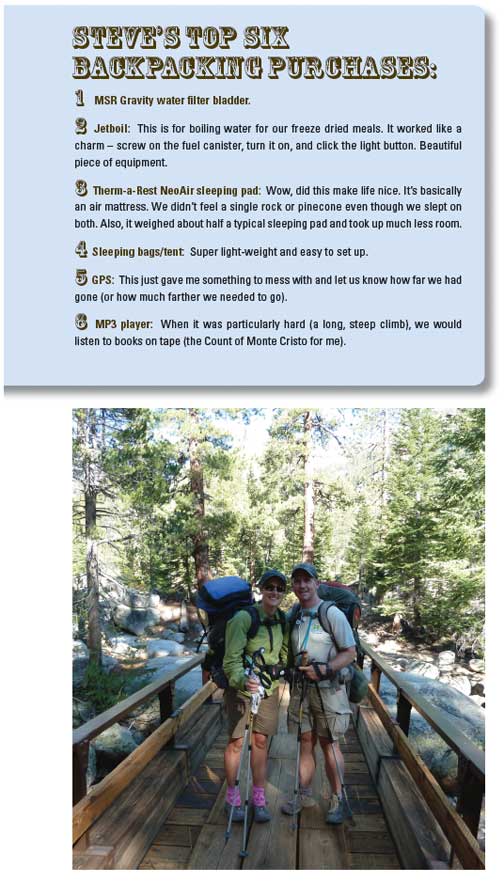


The John Muir Trail
John Muir died on Christmas Eve, 1914. It was a monumental life, one of remarkable achievement, including the protection of some of California’s most precious natural resources, the founding of the Sierra Club, numerous books and essays that inspired following generations of environmentalists, and even the despairing loss of Hetch Hetchy to a dam.
The John Muir Trail is in the Sierra Nevadas. It runs through three national parks and takes hikers who can withstand the elements through the Yosemite Valley to the summit of Mount Whitney.
Once Deanna and Steve made the decision to hike the John Muir Trail, they got serious about the planning. “The physical training was not a big issue for us,” Deanna said. “However, we started planning the food, mileage per day, anticipating the elevation gains and losses, and the places on the trail where we would rest during the day and sleep at night. I wasn’t fearful physically, I was just concerned about having the right gear and how it would be out there without much of a shower.”
Steve charted their food on an Excel spreadsheet; calories per pound, per day, per person. Ultimately, Deanna’s backpack was 35 pounds starting and Steve’s was 45 pounds. Steve carried the extra gear like the tent and the gravity inline water filter system. They packed for the first six days and shipped the rest of the food to Trail Ranch, which is the halfway point.
“We got a 5-gallon bucket from Home Depot, packed it with supplies and mailed it to ourselves at Trail Ranch. We received a return receipt to guarantee its delivery. The folks at Trail Ranch kept it for us until we arrived. We just had to show our ID at the ranch and pick it up.”
“The limitation on the food was putting it in a bear-safe canister. You cannot hike through Yosemite without your food in a bear-safe canister. Those are the rules. It is for the bears’ protection and for yours.”
“When you’re really hungry and you’re losing a pound a day, it’s pretty good. We will take more trail mix next time, but we mostly had Mountain House dehydrated food and it was pretty good. You can exchange things with stuff other people have left at Trail Ranch. We actually mailed more than we could carry and so things we didn’t care for anymore were left at the Ranch and we took other things that looked more appetizing.”
“Steve would get up at 5:00 a.m. and get his coffee and I would get up at 5:30 a.m. It was so cold in the morning. We would have a little breakfast and I would drink some tea and we would pack up and head out between 6:30 a.m. and 7:00 a.m. We would hike until about 1:00 p.m. We would eat lunch, which would take about 45 minutes to an hour. Some nights we weren’t at a spot where we wanted to camp so we would keep going. Some nights we set up camp at a decent time.”
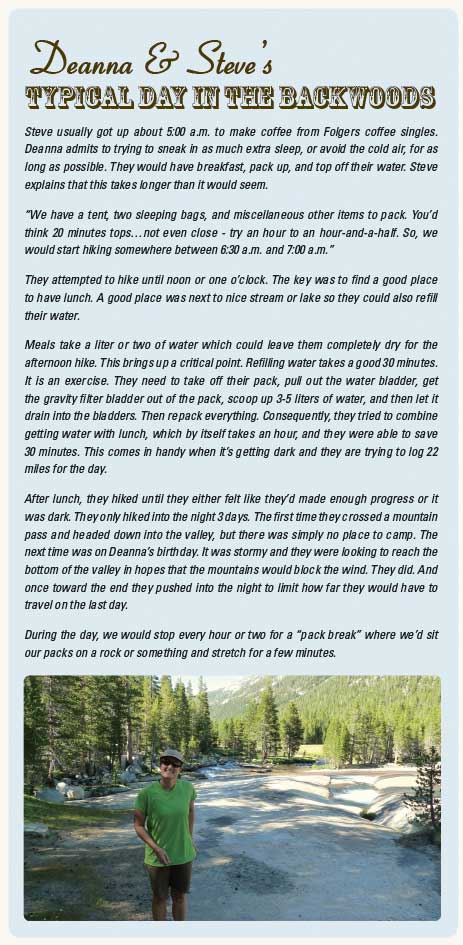
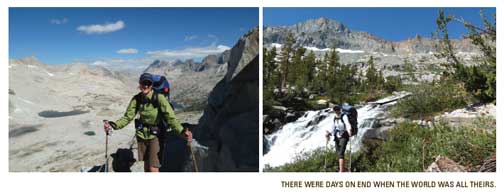
We asked Deanna if there were ever days after lunch that she just didn’t want to get going again.
“I never let my mind go there because I knew we had to keep going. We had a timeframe. The only thing about the timeframe is that it is not enough time to truly stop and take in the scenes that you want to. We stayed on the main route instead of detouring. If we did it again we’d take a few more days to enjoy it. The streams are so beautiful and it was fun to sit and relax by the stream, but we didn’t have a whole lot of time for things like that.”
On the Trail
Deanna and Steve met a few couples doing the same thing they were doing. They were on a different time schedule than the others so they eventually didn’t see them anymore.
“There weren’t a lot of people on the trail. Our busiest night was a place right out of Tuolumne Meadows. There were probably 15 tents or so by the stream. Most other nights we had the camp to ourselves. The Parks system has established spots that are cleared out and smooth and they want you to use those to camp; they don’t want you camping anywhere new. They want to try and preserve the trail as much as possible.”
We asked about the amenities along the way.
“The second day ends in Tuolumne and hikers can stop at a store if there is anything they need before beginning the length of the trip. The third day is outside of Mammoth, and they have a nice campground and also a backpacker’s shower. It is a cement hot spring shower that the water just pours out of.”
“After day three there was not another shower,” Deanna laughed. “Nope, no more showers. I didn’t really want to use soap or anything because it can be a problem on your skin…with the snakes and everything so I didn’t want soap on me.”
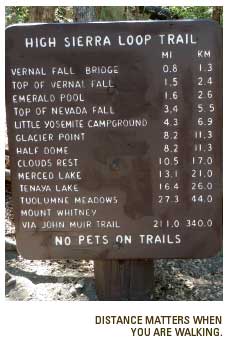
There is only one bathroom after that third day.
“There is a high traffic area somewhere about a week into it,” Deanna said. “It is hilarious because a ranger built this makeshift throne on top of a hill. It has a little wood plank and then a toilet and you’re kind of just out in the open. Steve saw the sign that said to use the bathroom up the hill. He went up and then comes back and said it was great. So I go up there and the sun is coming up and I look around and it is out in the open and anybody walking up this trail would see me. I didn’t find it very enchanting myself.”
The Best Part of the Hike
Deanna said that the best part of the trip was the companionship. It wasn’t a valentine to her husband, but an immediate answer and an acknowledgement that she and Steve do well being in situations most us of would call extreme.
“We’ve done so much stuff together that inevitably when one of us gets tired the other one may have more energy. We feed off each other. We had so much fun and, for as long as it was, I really wasn’t ready for it to end. I wanted to get a shower but it was really a great trip.”
The second best part, easily, according to both Deanna and Steve, was the scenery.
“It is so stunning, so beautiful,” Deanna explained. “I’ve lived in California all my life and my parents took us camping a lot. But I have to say that it was just the most beautiful scenery ever. Every day was so entertaining because we would be hiking along these segments of the trail saying it can’t possibly get any more beautiful and then you would turn the corner and it was even better.”
“We brought a guidebook that we wanted to read, but by the time we set up camp at night and had some dinner we would lay down and I’d say, ‘Hey Steve, check out what’s in the guidebook,’ and he would already be asleep. Then I would try and read it and I’d get through a page and be out cold.”
The Next Trip
They are going to do the Tahoe Rim Trail. It’s about 180 miles. They’ve agreed to put an 18 mile a day cap on the hiking. It will be a breeze for them.
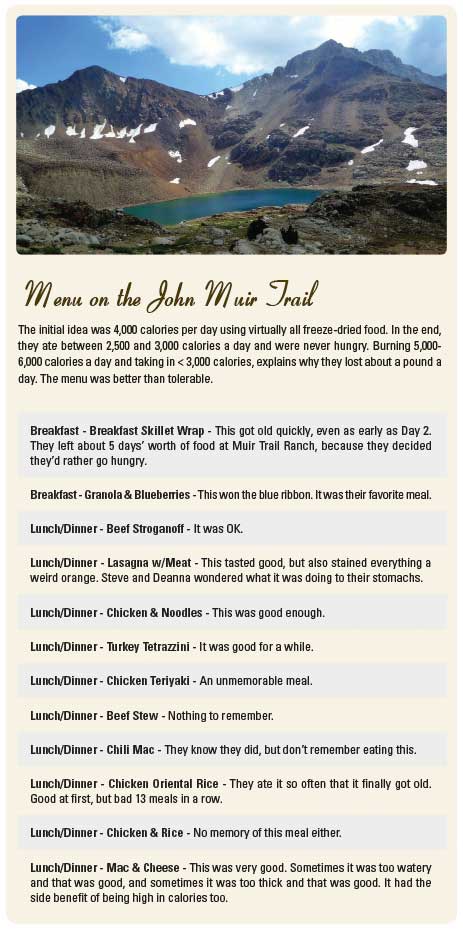
Curren Price
Aaron Read & Associates
Published Issue: Summer 2011
You can read the books about California history or you can make it fun and spend some time with Curren Price and listen to stories first-hand.
The erudite leader of the California Legislative Black Caucus has advantages. He’s a senator – not a bad way to be introduced and the kind of job that gets most people calling you back. He’s been both a witness and a participant to a generation of change. He is tall, loosely handsome, still curious at sixty, with a smile that is clever and turns teasing and lets you know he realized a long time ago that he is smart enough not to bother proving it. His eyes hold a rich color and don’t have any sign of burnout or cynicism. A lifetime of travel has taught him to be direct.
Curren’s disposition in private seems more fitting for a college professor than a politician. He appears younger in person than on television or in newspapers because the white in his beard becomes less noticeable the more animated he becomes. He commands through detail rather than volume, and it is not unusual for him to get caught up in laughter. One of his friends in the Legislature said if the Black Caucus was Motown, Curren would be Marvin Gaye.
Curren circles the rim of a glass with his fingers when he drinks. You get the sense he is no stranger to the pleasures of a long night. Curren has an unforced quality that is appreciated in people more often than it is seen, and it is a comfort with himself that allows others to relax in his company.
His stories have a freshness. They are told without urgency.
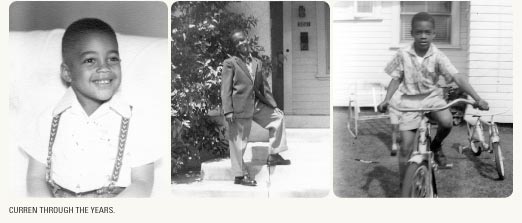
Inglewood 1960s
Inglewood’s early history can be traced to the beginning of the 20th century when it became the place where Los Angeles buried their dead and the Klu Klux Klan roamed after sunset with impunity. It grew into a working community catering to the aircraft industry and soldiers returning from World War II. Citation became the first million dollar horse at Inglewood’s Hollywood Park racetrack in 1951. At the time of the 1960 census there were 29 blacks living in Inglewood and none attended the local schools. It was ultimately made famous by the discarded Fabulous Forum and the fast break Los Angeles Lakers of Kareem and Magic. Inglewood is resilient. Through tough times it remains a vibrant place and was named an All-American City in 2009.
I am a product of the 1960s. I was in 8th grade during the Watts riots, and I remember seeing the Jeeps coming down the street. It wasn’t too long afterward that black student unions were being formed in our schools. They became the grassroots precursor to the Black Panther Party.
This whole thing with black consciousness, black awareness began filtering at every level. At colleges we had new graduate programs created in Black Studies that fundamentally changed the way curriculum was viewed. It was the beginning of ethnic studies. In the community, you had the Panthers organizing to bring about self-sufficiency and self-reliance. At that time, looking back, we can see that the Panthers were progressive in their promotion of lunch programs, health programs, and transportation programs that reach a totally unserved population.
I was influenced by it all. You had to be.
Curren entered Inglewood’s Morningside High School in the middle of the 1960s. He was popular, a vice-president and president a couple of years and then student body president of the predominantly Anglo-Caucasian school. It was 1968, a bloody year when the world was watching the explosive ugliness of the Tet Offensive, one of the turning points of the Vietnam War; the country was enduring the killings of Martin Luther King and Robert Kennedy; and Curren’s own city was being changed utterly by the fear-mongering associated with block busting and white flight.
Realtors would come through our area trying to get people to sell. They were scaring people that property values were going to bottom-out and if you didn’t leave you might get caught up in the rioting we’d seen in Watts. Block busting was telling the neighbors you better run while you can because the blacks are coming.
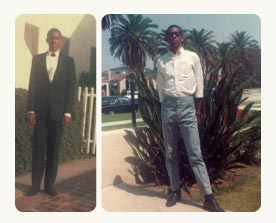
And it worked. The demographic did change dramatically.
Over the next ten years my neighborhood went from predominantly white to probably predominantly African-American in the ‘80s. By the mid-’90s there was another shift and it became predominantly Latino. The world literally began changing colors before our eyes.
We were one of the first black families in Inglewood. My dad was a merchant marine, a postal worker who also worked as an insurance agent, a salesman, he ran a small business and he made his mark in real estate. He believed in work. He was tall and charming, and dark-complected, and he got in trouble with alcohol. He beat it after a difficult struggle and was moved enough by the experience to become a drug and alcohol counselor.
My parents were divorced when my brother and I were rather young, but my dad was always in my life. There was a lot of personality there, and throughout his life he always remained a very positive figure in my life.
My mother will soon celebrate her 84th birthday. She retired as an LA County Clerk in the tax assessor’s office more than thirty years ago. She’s been retired almost as long as she worked.
You know, she was just a working class mom, a single mother, who worked hard, and always had us in activities. She believed it was important to keep me busy and from a very young age I had an after-school job. I was in the church choir. I was in Little League baseball. She was not going to let me run wild.
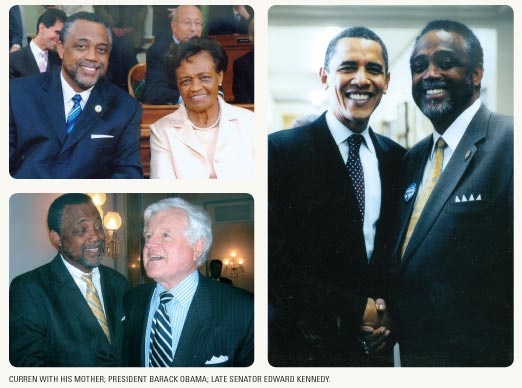
Black Awareness
Morningside High School was opened in 1951. Curren is listed as one of the distinguished graduates, and they make mention that before he was elected to the State Assembly and the State Senate, Curren failed in his effort to become the Mayor of Inglewood.
In my high school environment of fifty black students out of a thousand, we had a little area where all the blacks congregated. Certainly, we may have put some restrictions on ourselves, you know. I hung out with them. I also hung out with everybody else. So, I didn’t allow myself to feel consigned to a certain area or to a certain fate.
My parents emphasized education. It was a foregone conclusion that my brother and I would go to college.
My high school counselor said, “You know, Curren, your grades are just so-so. Maybe you should go to a community college for a couple of years.” I said, “Harvard, Yale…I’m shooting for the stars, right.” (Laughs) I got accepted at San Francisco State and Howard University, a black university in DC.
My dad, not really embracing this black power, black revolution stuff, said, “You’re not going to Howard. That’s where Stokely Carmichael and the other black radicals go to school.”
This is 1968. Stokely got everyone’s attention by being militant before anyone else. Martin Luther King was talking peaceful resistance while Stokely was demanding black separatism and confronting racism with the same force racists perpetuated their hatred. I think now that my dad and people of his generation had not heard the kind of talk from black men that was coming from Stokely. It was not easy for them.
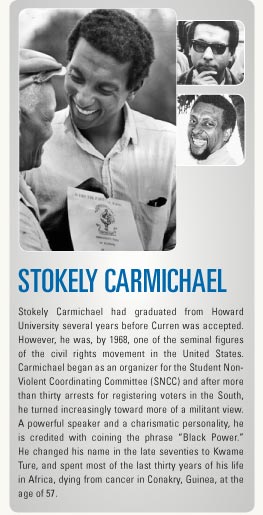 San Francisco State
San Francisco State
I went to San Francisco State and, of course, I got involved with the student movement on campus. There were demonstrations for one reason or another everyday. It was a very charged environment. Everything was changing so fast in America and the college campus was in the center of it. There were sit-ins against the war and kids were trying to hold the faculty and the administration more accountable on social issues. And, sometimes things turned violent.
The President of San Francisco State was S. I. Hayakawa. He was an old guy who was known for being a linguist and an intellectual of some note. Not unlike most of the faculty, his world view was a view of a different time. There was no compromise in his manner and he confronted the students during the riots. He personally pulled the plug on their microphones to silence them. I saw him wearing his trademark tam-o’-shanter and climbing on tables and yelling at folks. It worked for him. He shut down the campus completely in the second semester of my freshman year. (Laughs) I’m at a college where there are no classes.
I learned a great deal about California politics by watching Hayakawa. The electorate in our state will consider voting for completely different types of candidates if they believe the person can do the job. Before the rioting, no one would have looked at Hayakawa as a national figure. After he shut down the college, the voters saw him as a person of action and elected him to the U.S. Senate.
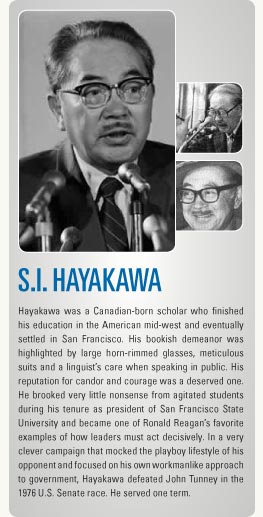
My dad was concerned that I wasn’t focusing on the education. In his view, I was not in school to demonstrate or change the world. I was there to stick to my books and graduate. There was a bit of a generation gap. And it wasn’t made easier when I had the big natural, sunglasses, the goatee; you know all the accoutrements of revolution and being anti-establishment.
It was the beginning of colleges becoming more experimental and less dogmatic. The pressure applied by students resulted in classes that just a few years earlier would have been inconceivable.
I eventually got accepted into a program called “The Freshman Program of Integrated Studies.” I was in a group with about 40 other kids and the classes were pass/fail. We were in this kind of cocoon, so when I left at the end of that semester, all I had were passes. I had no A, B, C grades and the other colleges were not sure how to handle transferring the units. I also still had to figure out how to finish my freshman year.
I ended up going to Dominguez Hills during the day and El Camino at night. I heard Stanford was recruiting, all the usual stuff, looking for minorities, looking for diversity, blah, blah, blah, in 1969. I got in as a sophomore.
Of course, I got active again in the Black Student Union and community stuff. I did a home improvement project in East Palo Alto. It was a black enclave we called Nairobi, back in the day.
I also learned about a Stanford overseas program. I had not been many places and now I’m hearing about the possibility of getting college credits for studying in Europe. I apply. I get accepted. I go to Italy with the promise that I’m going to learn Italian. I’m almost 21 years old.
I spent six months in Italy and traveling through Europe. Then I proposed to the administration that I be given a travel grant to go to Africa and compare the attitudes of African students with African-American students on issues of integration, separation, liberation, all the buzz words at the time. Two days before we were supposed to return to the States the proposal for $7,000 was approved.
The overseas programs in the American colleges were popularized by the successes of the Peace Corps. It was an intensely optimistic idea that an exchange system of our best and brightest young people would result in the next generation of world leaders finding common goals. Also, similar to the early years of the Peace Corps, the students were given a great deal of freedom as they charted their course.
I went to a travel agency and they had this map of Africa on the desk. I got a ticket that took me from Rome to Kenya, Tanzania, Zambia, Zaire, Congo, Sierra Leone, Liberia, Nigeria, and Cameroon.
It was a poignant moment when I actually touched down in Africa. I was back home. It was amazing looking around, seeing all the people who looked like me. There was a lot of interest, a lot of curiosity, you know, a lot of camaraderie.
I hitchhiked from the East Coast to the West Coast by myself with nothing but a backpack and a suitcase. I would go to a university, meet some people on campus, and stay in a dorm for a couple of days. The longest I stayed was about a week when some girls took me in. I felt safe everywhere I went. I traveled freely.
American students at that time had greater access to information. I’d say the learning was just as intense in Africa. The social part was the same. I mean, the kids knew the western songs, the styles, so it’s not really culture shock. They were smoking weed and drinking beer like kids were doing every place else in the world.
In Africa at the beginning of the ‘70s there were remnants of colonialism. You’d go into shops and you’d see dark-skinned Africans doing menial work and the light skinned blacks, Asians or whites in control. It was very evident in housing. The governments were not totally free. The topic of discussion was how things were going to change. They were going to take a page from our black brothers in the United States - black power, you know.
I had an opportunity to retrace those steps years later when I went as a businessman for a trading company. I was changed by what I saw and where I went. In law school I majored in international law.
There were not many American students before Curren who spent time traveling in Africa. He did not have a lot of reference points. He talks of having an initial vision of Africa as the Wild Kingdom. He did not get out into the bush, however, and the college campuses were in cities not unlike the United States and Europe.
Curren took off for Algeria with two other men and a woman. In Algeria, he learned that perhaps the most famous of the American Black Panthers, Eldridge Cleaver, was living there in exile.
Algiers is at the very top of Algeria. You knew immediately it was a developing country, dusty roads and lots of people. There is a heavy Islamic influence and French speaking so there was a language barrier and culturally it was quite different. I remember a great combination of faces and colors. At the time we were there the weather was very pleasant. It was easy to get around in the city - hop in a taxi and you get to the place you wanted to be.
It was an adventure being in North Africa after traveling in Europe.
Eldridge Cleaver was in exile after a shootout between the Black Panthers and the Oakland police. A young Panther was killed and Cleaver was charged with murder. It certainly wasn’t a secret that he’d been given sanctuary in Algeria. We were able to find out where he was, and we went to the compound filled with that youthful confidence that they would just let us in. You know, we were African-American students checking in with Eldridge.
The compound was a walled-in space. They probably had guards out front. I don’t remember, and I know we moved around inside and outside without interference. There were several residences on the compound. There was a whole cadre of Cleaver’s associates who were there at that time.
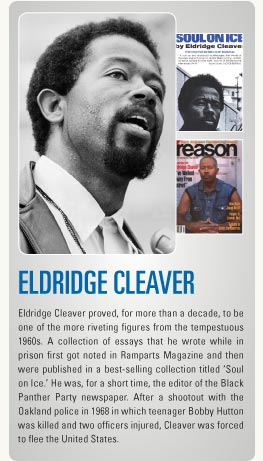 Cleaver is largely lost to history now, but at this point he was a major American figure worldwide. He’d written the best seller ‘Soul on Ice’ during his time in prison. It was mandatory reading. He was the face of the new black culture, the Minister of Information for the Black Panther Party, the strong-arm storyteller of the real black experience, and he was the darling of all the revolutionaries.
Cleaver is largely lost to history now, but at this point he was a major American figure worldwide. He’d written the best seller ‘Soul on Ice’ during his time in prison. It was mandatory reading. He was the face of the new black culture, the Minister of Information for the Black Panther Party, the strong-arm storyteller of the real black experience, and he was the darling of all the revolutionaries.
We go to the compound, and it went like we thought it would. We knock on the door, and they let us in, you know, students from the US, black students are here. Oh, come on in, what’s going on, where have you guys been, what’s new, what are you doing? What’s going on at home, what are Americans thinking about black power – and Cleaver himself was accessible. It wasn’t like we had to wait to have an audience with him.
Cleaver was about six feet tall and in good shape. We were traveling with a young woman and he liked her very much. He was always dressed very casually. Very sharp. Inquisitive mind. He was calm. He didn’t raise his voice. Very controlled. He engaged us in conversations about separation issues, liberation, Pan-Africanism, and what was happening in the States. We ate together everyday…we were star struck with him asking us what was going on, asking us what our opinions are about the movement, the revolution.
I don’t think he was losing touch with America. He probably had a steady flow of folks coming to him. I think he was homesick. He couldn’t go home, and I think he knew that for the revolution he thought possible to take place, it was going to take a great deal more work.
He never left the compound. (Pause) I have certainly reflected on my time in Algeria and appreciated it even more as I got older. Cleaver encouraged us to stay in school and get our degrees in whatever we were doing. It was very empowering. (Laughs) He turned out to be more conservative at that time, more like my dad giving paternal advice.
He went through lots of changes in his later years (patient smile and lifting of his hands). I was very impressionable at the time. He was very…well, he was never a hero, but he was certainly important in my own little world. He got lost himself and when he eventually got back to the United States the issues had passed him by. By the time he died no one even noticed him anymore.
I saw Timothy Leary moving in and out of the rooms on the compound. He was in exile from America for drug charges, and he was always smiling. He was an old hippie to me then, although he wasn’t that old now that I’m older myself. I
remember him being on cloud 9, literally. Peace, love and soul. Peace, love and soul. There were never any in-depth discussions with him. I’m not sure what the drug laws were in the rest of Algeria, but it was not Islamic on the compound.
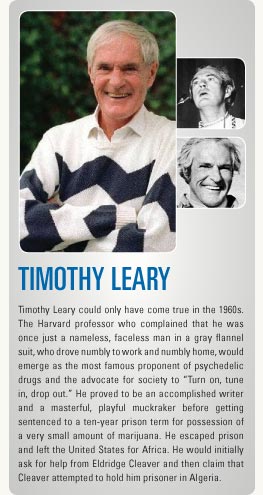
Leary and Cleaver were in the same place regularly, as I remember. I don’t really recall any interaction. There could have been. The impression I recall was Leary and Cleaver were cordial. I do know the relationship between the two of them did not end well.
I don’t remember Leary trying to get us stoned. I’ll say if he did he probably succeeded.
It was a remarkable time politically and socially. There were new voices. There were points of view that had been ignored and were now being heard. It was exciting. I do know for me personally the world seemed smaller after travelling. I had a point of reference.
Cleaver died young, but long after he ceased being an important figure. He never found his way or voice after returning to America and he dabbled in Mormonism, peculiar fashion designs, being Republican and battling addiction. Timothy Leary suffered a similar fate. His moment in the sun was brief and he ended up being a noisemaker without an audience. After he died, his ashes were shot into space.
Black power was a significant influence on everybody who was growing up during that period. A lot of self-awareness was going on, a lot of self-understanding. It transformed from a situation where blacks were not getting a higher education in real numbers, to a period where anyone could achieve anything they believed in. There were lots of firsts during that period. It was an empowering time, one that gave us a level of self-confidence, understanding, a better appreciation of history and how to make history, and a desire to go forward.
A feeling of black pride and black power resulted in us not just being relegated to second-class citizenship, but having a chance to step up to the plate. Blacks of my generation, because of our education, have made achievements far beyond anything our parents or white people of that generation could have imagined. The result of the sixties is a new African-American influence in the mainstream of political thought.
The challenges now, however, are terribly different, especially in the inner cities, where the drugs and guns and gangs are a presence. There is a crisis of education and health. Look, there’s no magic wand that was waved during the sixties and a new guarantee that everything was going to be peachy keen now. In fact, some of those situations now are worse. I’d say there’s not been a progress sustained. You know, you don’t have as many black kids, certainly black boys, in college now.
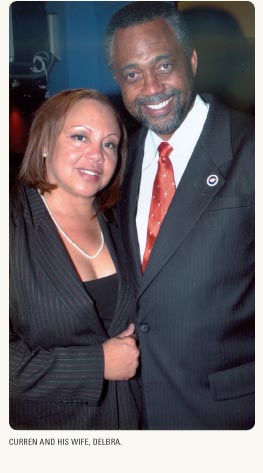
We’ve seen a transition where gang activity has wiped out a whole generation. I’m hoping that increasing awareness will make it clear that gangs are not the way to go. Mentoring programs, pipeline programs, educational programs, tutoring programs, are the way to go in 2011.
We have important work ahead of us. I don’t want my generation to be the one that had greater opportunities than the ones preceding us and, terrible if it happens, the one following us.
Politics
Curren’s first run for office was 1993. He was 43. He’d come back home, local boy makes good, Stanford, having lived in DC about ten years with an exciting job working for a communications company that was cutting edge. It was during the open spy policy for the FCC. Curren’s company was sought out to do engineering for companies who ordered large satellites. He got involved with marketing and forecasting. He was talking with the NFL because they wanted to do national games. He was in Sweden with Volvo. He got involved with cellular technology.
I became an effective advocate for small businesses wanting to succeed, and I’m proud that I was an asset to citizen involvement. Now, I’m happy to be in the Legislature at this time in my life, at this time in the life of the state. It’s a critical period to be involved, and I’ve got a voice to lift in the debate.
Curren was elected by his peers to chair the Black Caucus in the California Legislature. He is known for attracting talent and has a highly disciplined and respected personal staff. He was also recently named the chair of the key Business and Professions Committee and takes charge of their veteran team that is considered one of the best in the Capitol. He is in a position to help shape California.
The Star’s Last Gathering Place
Rachel Pitts
Published Issue: Summer 2011

She said she never learned how to be happy.
By her own account, Norma lived in fourteen foster homes. She married at sixteen. Only the first of her three husbands was not an American legend in his own right.
When she died of an overdose of barbiturates at the age of thirty-six, the responsibility for her funeral service fell to her second husband, the great Joe DiMaggio. Bitter at her treatment by Hollywood, the Yankee Clipper chose to keep the funeral quiet and as private as the notorious occasion would allow. DiMaggio decided against holding the service at one of the cemeteries where moviedom’s greats were traditionally buried; where graves were turned into tourist spots for fans from all over the world.
DiMaggio knew that the last foster home where Norma lived in the lifetime preceding her unfathomable recognition as the vulnerable actress and sex siren, Marilyn Monroe, was the house where she felt the most comfortable. It was the closest place she came to finding a family.
Norma momentarily felt loved enough to call the lady who owned the home Mother. The older woman was a dyed-blonde with a square build and a toughness that overshadowed her efforts to be stylish. Her name was Grace Goddard. She was buried in one of the plots available in the 2.8 acres of Westwood Memorial Park in 1953, at the age of 59, following her death from barbiturate poisoning due to ingestion of Phenobarbital.

The Cemetery
At the time of Marilyn’s death, the Westwood cemetery had only one real star. He is completely forgotten now but, in the 1960s, audiences would have remembered the work of Robert Newton. He was a popular English actor who made more than twenty-five films, including the pirate flicks “Long John Silver” and “Blackbeard.”
Newton filled his nights. He married four times. He produced several children. He raised hell on several continents and died at the age of fifty from complications of an alcoholic lifestyle.
He was only in the Westwood Cemetery until one of his sons was old enough to gain control of his ashes and have them spread in England. It was a pattern that was duplicated decades later for another English actor, the once respected and sadly dissolute, Peter Lawford.
DiMaggio liked that Westwood Memorial Park was hidden from Wilshire Boulevard. The property is about halfway between the bungalow where Marilyn was discovered nude in her bedroom, surrounded by the detritus of a medication addiction and champagne, and the studios where she made her films. Beautifully kept now, it managed then a rather rustic look of a small rural cemetery.
Westwood, which is home to a university, UCLA, was itself a relatively sleepy community in 1962. The skyscraping buildings and the busy streets were a decade away from stealing the village appeal. Marilyn’s placement in the first section of what would become several vaults changed forever the make-up of the cemetery. Marilyn brought status and an entirely new clientele. Westwood Memorial Park became a favored spot for movie stars to find a last gathering place.

Burying the Dead
The Wyoming Funeral Directors’ Association does a good a job detailing humans and death. They explain how researchers have discovered Neanderthal remains from 60,000 years ago that were buried with animal antlers and flower fragments. Even then, and ever since, people of all kinds, from every civilization, have tried to make sense of death by memorializing those who mattered, and in some instances, didn’t matter to them at all.
There is no way to measure the number of graves in the United States. Everybody dies. According to the Unitarian Universalists, our country put the dead in graveyards or bone yards until the 1830s. A name change seemed to be in order. The Unitarians borrowed the Greek word “koimerterion” meaning ‘a place for sleep’ and made cemeteries peaceful places.
The Unitarians must like what has been done at Westwood Memorial Park.
It is hard to imagine a more peaceful spot in the middle of a modern city. The noise from the heavy traffic of Wilshire Boulevard is muted by the buildings surrounding the property. There is very little pedestrian traffic. The people who attend the movies nearby cannot see the cemetery from the street. You have to know where you are going; you have to know it is hidden away.
The first of the graves can be traced to a woman named Alice E. L. Brown. She died in 1906 and was joined by her husband, Albert, 20 years later. How they died is a mystery. Both were old at a time when old age was not common. Close by is Samuel Fulks. He served in the Civil War in the 35th Wisconsin Infantry.
We met a woman who worked at the park. She was coy at first about discussing the cemetery, but did not avoid us when we followed her as she nipped old buds off dying flowers that had been left behind by visitors. She was in sales. It was easier to get the impression that she was the grounds caretaker by the way she tended to different graves.
The respect for those who don’t leave the area is absolute. They had expectations when they bought a plot at Westwood that a park-like ambience of beauty and reflection would be maintained. They are not betrayed. We learned the woman was Canadian. She was in sales there, too, a different industry, yet she had experience with people who need something and are willing to pay a premium.

Marilyn and Friends
There isn’t a single day that goes by when someone doesn’t come looking for Marilyn’s resting spot. Sometimes, often in fact, they arrive unable to speak English, and when they ask unintelligibly for some kind of information, it is almost automatic that they are pointed in the direction of Marilyn’s crypt.
There are other interesting women that visitors come to see. An anonymous benefactor paid for the burial of adventurous pinup girl Bettie Page. She made a name for herself in the space between the end of the war and a last puritanical chasm in our American outlook toward sex. Her provocative pictures made her more famous than rich. She outlived both her fame and her fortune and died lonely at the age of 85.
Bettie’s grave is close to that of the beautiful and doomed Dorothy Stratten, the Canadian blonde who was a Playmate of the Year and the great love of movie director Peter Bogdanovich. She was murdered in a terrible fashion by her estranged husband. Lovely and too much idealized, she was victimized by a man in her life and was dead at twenty.
Another grave that was filled far too early, and also by someone who was supposed to have been loved by the one who caused her death, was the talented Dominique Dunn. She is under a stone that simply says, “Beloved Daughter and Sister. Loved by All.” None of the details of the night her boyfriend, violent early on in their relationship, a chef at a premier Los Angeles restaurant, choked her to death. There were flowers on her grave the day we visited. It is such a loss that she is gone, and the jackass that killed her was given the best benefit of a sometimes too gracious legal system and served only six years for manslaughter. Yes, the system said he didn’t murder her because the poor boy expected her to stay with him and he lost control when that proved not to be true.
Natalie Wood was perhaps the most luminous actress of her time. She made the transition from child actress, to teenage talent, to major Hollywood star. Natalie was forty-two when she got on a yacht with her husband and a co-star from her latest movie. There was a night of drinking. There was noise. If anyone really knows what happened they have kept it to themselves. Natalie got off the boat for some reason. Her body was discovered in the water the following morning. Natalie’s funeral was covered in newscasts around the world.
Farrah Fawcett was, for a short time, the world’s favorite star. Her poster with the wide smile and red bathing suit was the first to sell in the millions.
The fairytale life of the wholesome Texas girl who finds happiness in Hollywood did not endure. Her life was more complicated. There were great love affairs. There were disappointments. Her career sputtered. Her personal life ended up like most personal lives. There were challenges. She met them and it wasn’t sad or tragic.

She was extraordinary with her candor and courage when cancer took over her final years. She is buried in a six-person plot that is in a neighborhood of plots that includes several stars. The space next to her is empty. You can purchase it for $600,000 and rest there forever with a handful of family members.
The cemetery is a high-rent district. The only car in the driveway when we arrived was a Rolls Royce that was spotless and belonged to an old man, if not old money. The first of the mausoleums was constructed for Armand Hammer, a billionaire industrialist with close ties to Russia. There is one for the Witherbees, an early businessman, not much known about the family.
And, if you are so inclined, there is available space; one of the two remaining mausoleums that you can put your name on for a price that will be negotiated in the three million dollar range.
There are writers.
Truman Capote, the quirky, diminutive native of Alabama who grew up in poverty and is in a wall not too far from where John Cassavetes, the avant garde screenwriter and director is buried next to Eva Gabor. Eva was never as famous as her sister, Zsa Zsa, and her body is within calling distance of her “Green Acres” husband, Eddie Albert. Ray Bradbury’s wife is already present. Her husband, the author of such genius as “Fahrenheit 451” and “I Sing the Body Electric!”, will join her in time, just as Playboy creator Hugh Hefner has a crypt reserved next to Marilyn. Will and Arial Durant, the prolific historians could, if resurrected in time, talk about literature with Ernest Lehman, Billy Wilder, and the legendary Daryl F. Zanuck, the man everyone at 20th Century Fox called ‘Boss.’
There are stars every movie lover has cared about for the last half century. Walter Matthau and Jack Lemmon, a wry one word on his tombstone that he must have laughed about when he decided how his mortal remains would be handled – “in” – . James Coburn’s ashes are interred under a bench inscribed with his last name.
The comic Rodney Dangerfield is in good company. The underrated actor and beloved middle-America singer, the favored Dean Martin, has a crypt. Karl Malden was placed in a quiet spot after a very long life; and there are the unmarked graves of the great George C. Scott, an Academy Award Winner for “Patton” and the powerful centerpiece of more than forty films.
Somewhere, nearby, the singers Roy Orbison and Frank Zappa are also hidden. Merv Griffin, the television host and investment guru, who left a note to visitors inscribed on his headstone that says, “I will not be right back.”
Carl Wilson, the sweet voiced middle brother of the Beach Boys is buried next to Paul Gleason, the gifted actor who is best remembered as the crazed teacher in “The Breakfast Club.”
Carroll O’Connor, the iconic Archie Bunker, and his boy, Hugh, who broke his old man’s heart when he died from the diminution of drugs, are together. In an equally heartbreaking story, the remarkably versatile actor Brian Keith had his ashes placed next to his lovely daughter, Daisy. Her death at 28 was also drug-related and his suicide the same year was the sad end to an otherwise very productive life.
While we were there, a white-haired gentleman from Mississippi drove up in a rental car and got out. He was a sportswriter. He wanted to see where Burt Lancaster was laid to rest. We found it; a modest square under which the great actor’s ashes were placed.
The sportswriter came to the cemetery as a tourist. He talked about the game at Yankee Stadium when Mickey Mantle’s career was honored. He said the great DiMaggio and Senator Robert Kennedy were both on the field, but they deliberately avoided each other; DiMaggio evidently forever hating the Kennedys for their treatment of Marilyn.

There are others who made their mark in Hollywood, many of them evoking certain public memories. Bob Crane, television’s Colonel Hogan and his gorgeous co-star and final wife are there. His murder in an Arizona hotel went unsolved. Mel Tormé, the songwriter; G. David Schine who was buried as a producer but had a much more interesting brush with fame as a youthful confidante of Senator Joseph McCarthy.
There are stars who probably thought they would never be forgotten. Pleasant actors like Jim Hutton, dead from cancer two days after his forty-fifth birthday and, if remembered, is usually recalled as the father of Academy Award winner Timothy Hutton. Robert Stack, a movie star once and a television personality for decades, had a long and enjoyable life before he was buried in Westwood. Fannie Brice, the real Funny Girl, was moved there. The spectacular Minnie Riperton has been there since her premature death at 31. Just go to the old records and be amazed by the celestial reach of her high-octave voice and the perfect phrasing of her greatest hit, ‘Lovin You’. She was dead at the beginning of what should have been a long career.
You can find the grave for Jim Backus, Thurston Howell III from Gilligan’s Island, the voice of Mr. Magoo before that and, even earlier, a talented supporting actor who played with grim clarity the father of James Dean in “Rebel Without a Cause.”
Not too far from the entrance to the cemetery is a very simple grave that belongs to the beloved Barney Fife, Emmy Award winning actor Don Knotts.
A movie buff can spend the day there remembering the contributions of Cornel Wilde, Lloyd Nolan, Richard Conte - Barzini from “The Godfather” - and the bearded Sebastian Cabot, an articulate and refined screen presence who actually got started in life as the son of a southern farmer.
Georgia Frontiere owned the Los Angeles Rams. She married many times. Her smile was like her personality; bright and lively. She was a woman of depth and energy. She is alone now in a crypt on the back side of the cemetery.
Even if the cemetery had not become a favorite of the rich and famous, it would still be a peaceful place to visit. The names, however, do conjure stories and are part of the collective memory of our country.
It is a place in time. It is timeless.
Creative Captiol Network Television
Marketplace Communications
Published Issue: Summer 2011
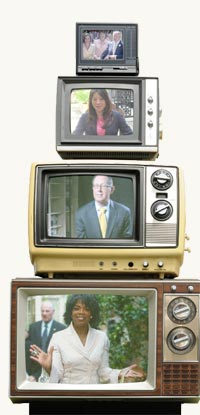 The Real World was first, but Ozzy Osbourne made it crazy by allowing the camera’s unfettered view of an aging heavy metal rock star’s family as they dealt with everyday life from their mansion in Southern California.
The Real World was first, but Ozzy Osbourne made it crazy by allowing the camera’s unfettered view of an aging heavy metal rock star’s family as they dealt with everyday life from their mansion in Southern California.
All right, I guess anyone who watched public television eons ago could argue that the Loud family from Santa Barbara was actually the progenitor of reality television, but there was certainly an extraordinary space of years before the genre began dominating our television sets.
You can’t get away from it now, whether they are housewives from urban centers, the Kardashians, bachelors or bachelorettes, unwed teenage mothers or a pack of highly charged young people living in a modern crash pad; we still can’t get enough real life.
California Conversations believes we have the ideas for fascinating television.
We are supporting the idea of creating a Capitol Network, hosted by San Francisco Assemblywoman Fiona Ma and Central Valley Senator Tom Berryhill. These two have enough personality on their own to carry a show but their likability and differences in outlook make them a natural for introducing the shows being proposed.
Discovery Park
This is the story of eight legislators picked to live in a house near Discovery Park in Sacramento. It would not only describe real life under the Capitol, but it would also be enlightening to watch the late night discussions over a bottle of wine between the ultra-conservative Assemblymembers Tim Donnelly and Allen Mansoor as they chat about legalized marijuana and licenses for illegal immigrants with liberal San Francisco Assemblymember Tom Ammiano and Los Angeles Assemblyman Gil Cedillo. Away from the discussion of politics, we would also have the side benefit of selling cookbooks of the appetizing meals these gentlemen make while working in the kitchen together.
The Deadliest Vote
This chronicles the fictional adventures of five moderate Republicans during the most dangerous time of the year: the budget deadline. New blood, old wounds and rivalries emerge. At stake is the willingness to risk their seat in the Legislature for a vote that separates them from their colleagues. Adding to the conflict will be commentaries by former Senate Pro Tem John Burton, the profane but clever old lion, and Jon Fleishman, the provocative and daring young voice of the Republican Party. Of course, the follow up to this particular show may be The Biggest Loser: This short program will follow the Republicans in the months after they provide the deciding votes.
 Top Leader
Top Leader
This would be a cutthroat exercise as eight to ten senators and assemblymembers try to outwit, outplay, outmaneuver and outlast each other as they compete for the ultimate career-launching prize package, the Speakership of the Assembly and Pro Tem of the Senate. The weekly system of progressive elimination would allow the contestants to vote off the other candidates until the remaining two have their official portraits taken and they are shown to their new offices in the historic side of the Capitol.
Of course, Fiona and Tom can also provide the commercial oversight to this endeavor.
There is the possibility of new lines of cologne and perfumes, fishing gear and golf clubs.
An entire floor of the Capitol can be turned into the “Legislative Makeover Floor,” as legislators and staff have their hair, makeup and wardrobe professionally done; the before-and-after photos would make for an inspiring book all on its own. There can even be a “Before They Were Stars” program that shows pictures of legislators before they got into politics. And for those willing to go the extra limit, we can have “The Real Spouses of Sacramento,” the inside story of what it is like to be married to an elected official.
We don’t pretend to have all the answers on this particular project. A talk show hosted at the wooden picnic table by Governor Brown and Anne Gust Brown might even be considered as a possibility to fill the void after Oprah’s departure from network television…”Afternoons with Jerry and Anne.”
Who knows?
120th Anniversary of Earl Warren’s Birth
California Conversations
Published Issue: Summer 2011
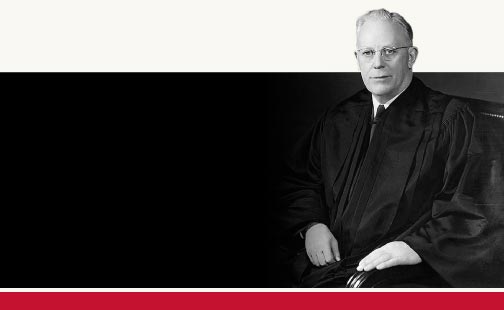
America was the Promised Land and California the place of golden opportunity, which certainly proved to be true for the son of two immigrants, a Norwegian father and a Swedish mother, when Earl Warren was born 120 years ago on March 19, 1891.
While it probably isn’t fair to say that no one gave him anything, it is certainly accurate that he wasn’t given much. Earl Warren was a self-made man who worked on the railroad as a boy in Bakersfield, hot Bakersfield, hot, isolated Bakersfield, at the end of the 19th century. It was evidently a good place to build character and learn the value of hard work, because Earl Warren grew up to be one of the most significant Californians in our history.
He went to Bakersfield High School before it was even known as Bakersfield High School. He did well and was smart enough to put himself through what was then a still relatively young University of California, Berkeley. He also graduated from their law school, Boalt Hall, in 1914 and was already a young lawyer when he enlisted in the United States Army during World War I.
After the war, Warren was appointed district attorney of Alameda County, a position he managed to win in re-election three times. He soon developed a reputation for going after corruption at all levels, in politics and in business; and in those years developed a reputation as a hard-nosed conservative.
In 1938, Earl Warren was elected attorney general of California. His popularity was such that he won the primary not only of his party, but also the competing parties and was elected without any credible opposition. It was during this period that the dark shadow was cast over his reputation. He was responsible for enforcing the order promulgated by President Franklin D. Roosevelt and implemented by Milton Eisenhower, brother of future president and war hero, Dwight Eisenhower, for the interment of the Japanese-Americans, American citizens, at inland camps in California.
In 1942, Republican Earl Warren was elected Governor of California. In his re-election in 1946, he duplicated his feat as Attorney General and won the nomination on the Democratic, Republican and Progressive tickets and, in 1950, he became the only person, until the recent election of Jerry Brown, to be elected Governor of California three times.
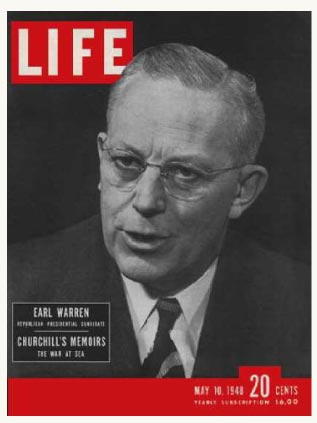 In 1948, Earl Warren was a Vice Presidential candidate on the Republican national team with New York’s Thomas E. Dewey. In what many historians believe to be the most shocking upset in Presidential politics, Harry Truman emerged from a vigorous campaign more popular than he started and defeated Dewey.
In 1948, Earl Warren was a Vice Presidential candidate on the Republican national team with New York’s Thomas E. Dewey. In what many historians believe to be the most shocking upset in Presidential politics, Harry Truman emerged from a vigorous campaign more popular than he started and defeated Dewey.
In 1953, the Chief Justice of the United States, the mostly forgotten Fred Vinson, died suddenly of a heart attack. President Eisenhower, who was impressed with Earl Warren’s Republican credentials and national reputation, appointed Warren Chief Justice of the United States Supreme Court. Eisenhower would later regret his decision. Although he never doubted Earl Warren’s integrity, he was chagrined by the increasingly liberal views that Warren would take. “It was the damn biggest mistake I ever made,” Eisenhower said.
Historians have noted that the Warren Court reflected Earl Warren so completely that he is considered the most influential jurist of the 20th century.
It was the Warren Court that ended segregation of public schools in Brown v. Board of Education; allowed one man, one vote in Baker v. Carr; allowed due process in Gideon v. Wainwright, and changed the lives of every person arrested with his decision that they must be told that they have the right to remain silent and the right to an attorney, in the Miranda v. Arizona case.
Sadly, Earl Warren is also remembered as the only person the President of the United States believed had the gravitas to lead the investigation into the assassination of President John F. Kennedy.
Earl Warren died on July 9, 1974. This California boy who changed the world is buried in Arlington National Cemetery.
Fast Talk with Leigh Steinberg
Pat Moran
Published Issue: Summer 2011

Leigh Steinberg altered the landscape of sports as the first super-agent. He has represented over 150 professional athletes, including the number one NFL draft choice, eight times. The movie ‘Jerry Maguire’ was loosely modeled after Steinberg.
California Conversations (CC): Was being a sports agent your first career choice?
Leigh Steinberg (LS): There really was no big field of sports agents then. Most players represented themselves. They had their parents represent them and there was no guaranteed right of representation, so a team could simply click the phone off. There was a famous story where Vince Lombardi was approached by a player late in his career and the player said he had an agent to negotiate his contract. Lombardi said, “Can you excuse me for a minute,” and went back into his office, came back and said they had nothing to talk about. The player asked why. Lombardi said, “Because I just traded you to Detroit.”
I graduated from law school in January of 1974, took the State Bar and, when I found out I passed, I headed for Europe. I got to Egypt. I was in a sailboat and jumped into the Nile. I ended up very sick and in a hospital in London. I lost a ton of weight and I could not take any job offers. I was sick through early 1975. I had been a counselor in an undergrad dorm at Berkeley and they moved the freshmen football team into the dorm. Steve Bartkowski was one of the students. In 1975, he was the first pick in the first round of the NFL draft with the Atlanta Falcons. In March of 1975, he asked me to represent him.
I had the first pick in the NFL draft at a time when the World Football League was competing with the NFL. Here was a player at a critical quarterback position, with movie star looks, and we got the largest first contract in National Football League history.
Berkeley was laid back in those days when it came to sports, so imagine my surprise when we landed in Atlanta the night prior to the signing and there were klieg lights flashing in the sky like a movie premier.
A huge crowd was pressed up against a police line. The first thing we heard was, “We interrupt the Johnny Carson Show to bring you a special news bulletin. Steve Bartkowski and his attorney have arrived at the Atlanta airport and we are switching live for an in-depth interview.”
I looked at Steve sort of like Dorothy looked at Toto when they arrived in Munchkin Land and I said, “I guess we’re not in Berkeley anymore.”
CC: Star power.
LS: I saw the tremendous idol worship and veneration for athletes in communities across the country. That’s when the realization came that athletes could make an enormous difference in triggering imitated behavior and being role models if they would retrace their roots to the high school, collegiate and professional community. I could utilize the representation of athletes to make a significant difference in the world.
CC: Is making a difference in the world outside of athletics a serious part of the equation?
LS: Sports is an entertainment business. Athletes have an obligation to serve as role models and to understand that their public behavior will be scrutinized and if they are not interested in graciously signing autographs and forwarding themselves within the standards of responsible public behavior, then they can play on the sandlot.
Professional sports are not bread and butter on the table. It’s not transportation. It’s a discretionary, entertainment expenditure. If you force feed fans with an unremitting diet of negative headlines, it pushes them away.
I’ve been successful if I’ve been able to stimulate the best values and career arc that fulfills the best hopes and dreams of an athlete. It is not just economics.
CC: The issue of steroids in sports?
LS: I think the American public loves the fall of the high and mighty, but they also have a great capacity for forgiveness. Mark McGwire is, essentially, a sympathetic figure. He’s always been considered a nice guy. He does many acts of kindness off the field. So when an athlete is in crisis and they are willing to come out and state the correct standard of public behavior, then to apologize to his family, relevant constituencies, to the teammates, to the organization, to the fans who admired them and then, if relevant, to affirm that they have taken steps to prevent a reoccurrence, the response is positive.
There was one comment McGwire made that was not helpful, which was a statement that the supplement or steroid didn’t enhance his playing ability. The key is to fess up to one’s guilt. If you do that, having taken the steps I just indicated, it’s then possible for the athlete to move on.
CC: The response from an embattled athlete needs to be fast?
LS: Yes. One issue is to not let any time pass. Another issue is to not equivocate. They need to own the behavior and apologize. There is a very powerful celebrity-making machine in this country that focuses on people and their behavior. It’s made up of talk shows, TMZ-type investigative shows, the Internet, blogs, People and US magazines, the National Enquirer. The problem from the standpoint of a celebrity, if a story gets caught up in that machine, is that the average person will see and/or hear that story 20 times a day, over and over again.
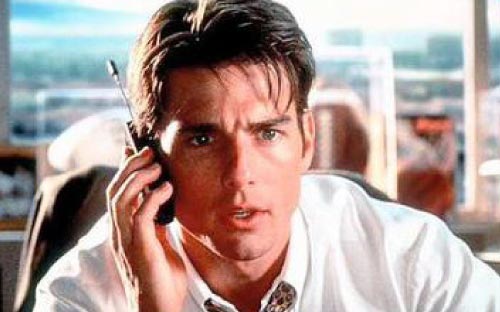
Living & Investing Green
California Conversations
Published Issue: Summer 2008

The wide acceptance of corporate and social responsibility being tied to living and investing green did not happen overnight.
The groundwork was done by people assuming little credit for changing the way Californians think and speak to each other.
Carla Din was in the trenches early.
She was willing to take the meetings one at a time to explain, when no one was much interested, why business and labor coalitions needed to be built to oppose, through the creation of adventurous public policy, the loss of natural resources.
Her effective work with the Rose Foundation for Communities and the Environment included the steady encouragement of CalPERS and STRS to challenge their systems’ investment in the Maxxam Corporation and their stranglehold on 3,000 acres of untouched old-growth Redwoods.
It was not always companionable work.
In 2002, Carla saw that in order to have a successful Renewable Portfolio Standard in California, it would require the skills, training and support found within the state’s prominent labor organizations. This perspective continues with meeting the goals of AB 32-that partnering with labor alongside government, business, environmental and community leaders to reduce emissions and build new clean energy industries is a winning strategy.
That is the approach of the Apollo Alliance, which promotes public and private investments into alternative energy to create high quality jobs, boost industries and revitalize communities. The time could not be more ripe for climate to drive economic development in California.
Carla joined the Apollo Alliance as the Western Regional Director in 2004, and has seen a great shift since then:
“There’s been a sea of change, so to speak, in just the past eight years,” she says. “Now, thanks to An Inconvenient Truth, Hurricane Katrina, the war in Iraq, and runaway fuel prices, the country is waking up.”
A Life on Pointe: Profile of a Ballerina
Kristen Simoes
Published Issue: Summer 2008
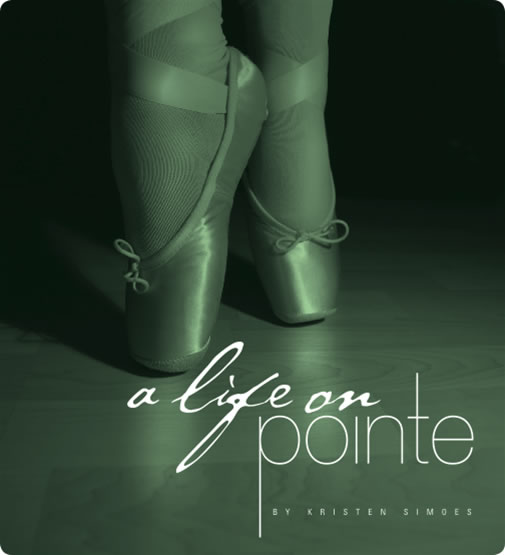
She carries the record as the longest running ballerina to dance for the Sacramento Ballet. Kirsten Bloom has spent thirteen years in their Company. Now 35, Kirsten is dancing next to teens and twenty-year-olds. They are her competition. And in the world of dance, the competition is fierce.
The leading roles have been hers. Kirsten has performed as the prima ballerina for more than a decade now, including such well known ballets as Romeo & Juliet, Hamlet, Don Quixote, Swan Lake, The Nutcracker, A Streetcar Named Desire, The Prodigal Son, and Sleeping Beauty. She is wrapping up her 18th season as a professional ballerina, and with the thought of retirement closing in on the not so distant horizon, Kirsten is thinking of the years ahead of her.
“It is better to leave the stage, before the stage leaves you,” are haunting words to the ballerina.
California Conversations sat down with the lissome leading lady of the Sacramento Ballet to dispel some of the myths from the storybook ballerinas of our youth. And here’s how it started: she ordered the bistro burger (complete with fries). She was friendly and eloquent, and surprisingly comfortable (yes, she sort-of slouched in the restaurant booth). She admits to being a bit clumsy, and to letting the occasional four-letter word slip from her dainty lips. She has an affinity for wine and an obsession with vacuuming.
She is beautiful and real. She is refreshing.
California Conversations: You’ve been here for a record 13 years.
Kirsten Bloom: It is a record for the Sacramento Ballet. They’ve never had a dancer stay as long as I have. I feel a little bit like the old lady of the group.
CC: And you manage to not only keep up, you still run the show.
KB: Well, you kind of rise through the ranks and I was lucky. The first year I arrived injured, so I was only dancing about 50%. In the second season I healed completely. They quickly promoted me so I got to do a lot of principal roles and I decided that I would really stick it out.
CC: You became the Prima Ballerina.
KB: The Prima is generally the dancer who does opening night. They’re usually referred to as the Premiere or ‘Prima,’ not to be confused with Prima Donna.
CC: There is a stereotype about ballerinas being so into their art it is all encompassing and there’s time for nothing else in life. True?
KB: There is some truth to that, although I think people consider ballet to be somewhat of an elitist field and removed from normal society. I definitely don’t feel I’m that way at all. I am a normal person. My job just happens to be onstage performing classical ballet.
CC: You want people to be at ease around you. How do you want them to feel when they watch you on stage?
KB: Well I hope they feel moved by the art form. It’s so different now when you go to the ballet compared to how it was 200 years ago. The ballet or the opera used to be the thing to do. You would see a performance live and that was your inspiration for the month or for many months. But now we have so many means of entertainment, and it’s all very fast paced, and I think that makes it harder for our art form to stay alive.
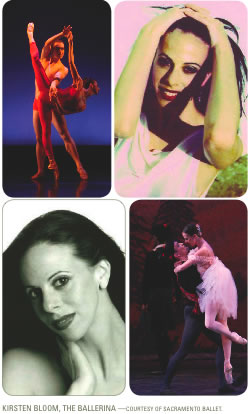
CC: Do you see ballet continuing to evolve?
KB: I think ballet is modernizing, getting more contemporary. We’ve gotten wilder; a more improvisational performance art is out there now. We have to, or we will become a dying art. We fit our community because we’ve got the older group that may still want the classics and we’ve got the younger group who is more comfortable with the contemporary stuff.
CC: How many different productions do you offer in a year?
KB: In one season we usually do over a hundred performances. Fifteen to twenty of those are The Nutcracker. Four of those were Sleeping Beauty this year. Beer and Ballet is anywhere from fifteen to twenty new short pieces and Modern Masters is six different ballets.
CC: What does that translate to in terms of rehearsal time?
KB: We spend six hours a day, six days a week rehearsing. We have Sundays off unless it is a performance week.
CC: Is it exercise that keeps you so darn slim?
KB: It’s moderation. I eat. I love burgers and cheese. I just can’t eat it all. I was 17 when I started dancing professionally and my body was in a different place. I was heavier then. I went from being this thin little girl to being a woman and all of my instructors were telling me to lose weight.
CC: So dancers aren’t necessarily born with ‘dancer bodies’.
KB: No, and the body complex is very much a reality. It’s not that it’s spoken, you just won’t get cast. A lot of women in this field do have eating disorders. There is an undeniable emphasis on being thin.
CC: Is that one of the bigger challenges ballerinas face?
KB: For some it may very well be. For me, it’s been the physicality of it. The times when I have been injured, it’s frustrating because you want to get back so bad but your body isn’t ready.
CC: You’re sidelined now.
KB: Yes. I tore my calf and was out for about nine months and in my mind I kept thinking I could do it.
CC: Do you consider ballet a sport?
KB: There’s a huge level of competition in it, so there’s a sports-like quality.
CC: Would you say you’re an athlete?
KB: I would, yes.
CC: How do you go from the dream every little girl has to being a ‘real life’ ballerina?
KB: That’s a good question. I started ballet as a little girl, just like a lot of others do. But for some reason, when I went into the ballet studio as a five-year-old, it felt spiritual. And I wasn’t religious at all. But at that young age, I felt the magnitude of the room and the magnitude of the dance, and I knew it was of a higher importance than my five-year-old brain could understand. I had this innate respect and love for ballet.
CC: Did you grow up going to the ballet with your family?
KB: No. I had a wonderful childhood with two devoted and loving parents, but we never went to the ballet. My dad sold construction equipment and my mom stayed at home with my sister and me. My sister is three years older and we started ballet together. She lasted only a few weeks but for me it was revolutionizing!
CC: Did you train with voracity from the beginning?
KB: No, it was one day a week until age eight and then it was three times a week. By the time I was twelve it was five days a week.
CC: And all your friends had stopped?
KB: Right. They moved on to soccer or something else.
CC: At what point did you know this was what you wanted to do for the rest of your life?
KB: I was twelve. I became a professional at seventeen. That was just it. It was weird. Nothing else ever entered my mind. I never wanted to do anything else, and I really am lucky that it worked out. I had to have the drive and the parents who were willing to take me to ballet class and buy my ballet flats and pointe shoes. It always just worked out, and it always felt right.
CC: After 18 years as a professional, have you found a balance between dance and life outside of the stage?
KB: I think so. I’m a very social person. I dance hard, and I play hard, and I have time for a wonderful boyfriend.
CC: Another dancer?
KB: No. He is a pilot, and a total guy’s guy. We met on eHarmony.com. He never even considered going to a ballet before. I know that now he loves coming to my performances. I think he enjoys watching me, but I also think he is genuinely interested in the art form. And he has come to the conclusion that I am one of the clumsiest people he knows.
CC: How are you clumsy?
KB: I think dancers tend to be very clumsy people. Like the other day I was taking the vacuum cleaner down the stairs and fell...vacuum cleaner and all, down the staircase.
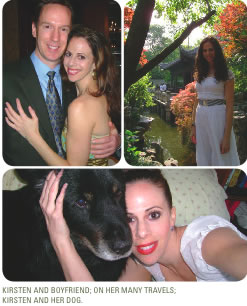 Fish, Frogs & Foreign Affairs
Fish, Frogs & Foreign Affairs
Amy Brown
Published Issue: Summer 2008

A severe woman was sitting on the other side of the Peace Corps recruiters’ table. She waited for an answer.
“What skills do you have, sir?” she was asking.
Bill Mabie was volunteering to change the world. Weren’t they looking for warm bodies; people prepared to give up their lives for two plus years to help a third world country?
“What skills are you looking for?”
The response was a stack of brochures about agriculture, civil engineering, and fisheries-the skills of survival-nothing he could acquire at a reputable four-year college. Bill kept the one on fisheries and left the table.
Soon, he left the state.
With only three months left to finish a degree in International Affairs from Cal Poly San Luis Obispo, Bill left school to fish in Alaska. He was determined to serve in the Peace Corps. Not everyone, mainly his folks, viewed this as a prudent career path.
Long before Bill Mabie distinguished himself as a senior staff member for former Assembly Member Richard Polanco, long before he ran unsuccessfully for public office against an up-and-comer named Antonio Villaraigosa, and before he took the job as Chief of Staff to Senator Alex Padilla, he had dreams of volunteering in a third world country.
While the promise of travel, adventure, and learning a language was motivating, the opportunity to help people appealed to Bill. The fact that JFK created the Peace Corps gave it allure, but it was an idealistic professor at Cal Poly who inspired him to dream of a volunteer opportunity in East Africa.
In Alaska, Bill learned to long-line halibut and gill-net salmon. He gutted, sorted, bagged, and trucked fish. He did everything from prepping a boat to cleaning up the detritus. He got comfortable on a tough job and after six months, Bill developed a skill.
He returned to Cal Poly to complete his degree. His real motivation was to approach, yet again, the Peace Corps recruitment table.
“What skills do you have, sir?”
It was the same woman...same voice...same severe demeanor.
“I’m a fisherman.”
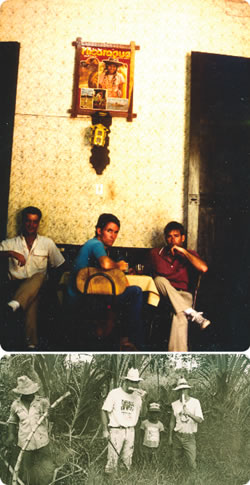 The woman didn’t remember him. She handed him an application and told him he would likely be training in Oklahoma. She knew her business. Her prediction was accurate, and he spent the next three months learning how to design and build aquaculture ponds.
The woman didn’t remember him. She handed him an application and told him he would likely be training in Oklahoma. She knew her business. Her prediction was accurate, and he spent the next three months learning how to design and build aquaculture ponds.
Ronald Reagan created the Kissinger Commission. They released a report calling for massive investment in trade and aid to Central American countries in an effort to encourage political and economic stabilization. They effectively gave the poor no reason to side with Marxist rebels. Part of the assistance package was a large increase in the number of Peace Corps volunteers. The release of the Kissinger Commission recommendation during the processing of Bill’s application resulted in him being sent to Honduras.
Bill’s choice of locations was Tanzania. Peace Corps protocol means sending volunteers to where they are needed the most...and in this instance, Bill was sent to Honduras, the place National Geographic dubbed the ‘Eye of the Storm.’ The storm they were referring to was a maelstrom of violence sweeping through the neighboring countries: Guatemala to the west, El Salvador to the southwest, and Nicaragua to the east. Honduras was by no means a calm center; it was fully engaged in facilitating the counter revolutionary war against its Nicaraguan neighbors and was allowing Salvadoran counter insurgency training within its borders as well.
The Sandinista’s historic victory kicked off a proxy war between the Soviet Union, which was helping Cuba-backed leftists, and the U.S., which was funding rightist allied governments intent on the status quo. In 1979, the unthinkable happened. The Sandinistas removed the U.S. backed dictator, Anastasio Samoza, out of Nicaragua and forced a successful Marxist revolution-second only to Fidel Castro’s Cuba.
A domino had fallen. It became Ronald Reagan’s White House plan to stand it back up. The next year, 1980, the Farabundo Marti National Liberation Front Marxist rebels in El Salvador sought to emulate what had been accomplished by the Sandinistas. They pushed for a final offensive. In response, U.S. funded military activity and paramilitary death squads went into high gear, ultimately claiming the lives of 75,000 Salvadorans. In Guatemala, a genocidal policy against indigenous Mayan Indians and suspected leftists would leave 200,000 dead.
In a remote mountain village, Bill spent time living with a Honduran family. They were loving people. He learned more about the culture and began to master conversational Spanish. After six months of extensive training, Bill, rather naïve and oblivious, was sent out with a little cash and a map of the town he was assigned to serve.
Bill purchased a Yamaha 175 Enduro motorcycle. He rode the country lanes from village to village. He still tells funny stories of barely escaping chickens and pigs in his path. He would ask local farmers if they were raising fish in their ponds-most said no. It was too dry. The viability of aquaculture throughout the region was grim.
Sandinistas chase U.S. backed “contra” soldiers into Honduras directly east of Bill’s town. The Sandinistas are baited into crossing the border in the chase to capture or kill the contras who have been sabotaging their electrical systems and raiding their towns. It is effectively a Central American version of the Gulf of Tonkin incident before the Vietnam War. The U.S. response is quick. Large groups of Chinook helicopters carrying artillery guns and troops fly east over Bill’s town to the border a few miles away. The U.S. military uses one of the local restaurants Bill frequents as its headquarters.
Bill was offered a new site in the North Coast of Honduras. It was the perfect environment for freshwater aquaculture, and he ended up designing, building, and managing a large fish hatchery to supply cooperatives with baby tilapia they could grow in their ponds. Bill’s location became the temporary site of war games involving thousands of U.S. troops. They didn’t stay long. Bill did.
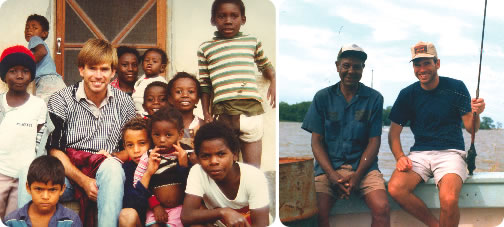
The image of the Peace Corps reaching out to the world in the hope of engendering good feelings is accurate. Kennedy’s beckoning for Americans to make a difference in the world was a clarion call. However, Peace Corps life is grueling-the harsh weather, bugs, the unexpected and all consuming intestinal illnesses are part of the daily travails. Most volunteers look for an escape-a few light moments, and perhaps a few drinks to fog the mind.
There is vacation time made available. Bill took the opportunity to travel with a handful of volunteers around other parts of Central America. They would frequent local watering holes. His favorite was in Guatemala City.
On one particularly hot evening, after several cocktails, someone reached into a bag and pulled out a large ceramic gorilla and put it in the middle of the table. One of the veteran volunteers from the area, who was approaching the end of his service, told a story about the significance of the ceramic primate. Each year a select group of volunteers pass it on to the “freshman class.”
There was respect for the gorilla-and the bond it represented. In the increasingly celebratory mood of the evening, the friends gave praise to the gorilla and to each other.
Bill went back to Honduras. He went out for a beer with a volunteer friend, Wade.
Bill told Wade about the gorilla deity. He admitted to some jealousy that they didn’t have a ritual to fuel the volunteer espirit de corps.
After a few beers, the two left the bar. The stopped at a curio shop-a favorite spot for tourists.
“Pick something.” Wade prompted his friend. “Make it good.”
Bill looked at the books, maps, ash trays, hand woven clothes, and carved wooden machetes. There, sitting on the top shelf in the back corner looking at Bill and Wade was a taxidermied frog. It was beckoning them. Its bulging eyes and lively pose were instantly representational of the ritual Bill had been searching for.
With frog in hand, Bill and Wade began walking downtown. They passed the Maya Hotel, by the woman selling mangos and cashews, by the man with no legs. They bought a mango. They gave money to the legless man.
They accidentally dropped the frog.
“Don’t pick it up, Bill.”
Wade explained that by leaving it on the street and kicking it to the next bar, it could be worn in to look like a piece of history, something worthy of being passed on by the generations.
The frog accompanied Bill and Wade for the rest of the evening. It traveled to each locale by way of ground kicks and knee passes.
When Bill and Wade returned to their hotel, the frog was beaten up, in a condition similar to his new owners. Bill took the frog to the bathroom and washed him off; the mouth had come unhinged and it was filled with sawdust. Bill shook all of the sawdust out of the frog and into the wastebasket. He rinsed the frog out. That’s when Bill realized the frog held water-it was airtight. He describes the frog’s texture as having a similar feel and consistency to that of leather. When the frog was wet, it could be manipulated. When it dried, it hardened.
Bill shared this fabulous news with Wade.
“Hey, the frog holds water.”
“Are you serious? This is incredible.”
They were inspired. The tradition of passing along the frog could now include sharing a liquid content. They even thought of how the frog would fit in a ceremonial cigar box.
Bill and Wade sat on the floor, sharing a last bit of Flor de Cana rum and wrote the following story on a piece of college-ruled, three-ringed binder paper:
“The contents of this box was first christened in Managua, Nicaragua in 1975. It was a cherished friend and symbol to the volunteers of Nicaragua until the fall of the Somoza regime. As Somoza bombed his own capitol, volunteers were evacuated. Those in the west of the country were told to pack light and were smuggled over the border into Honduras. Among the few belongings carried by the small band of dedicated volunteers was this cigar box. In a hasty ceremony before they were sent home to the States, the evacuated Nicaraguan volunteers entrusted this box and its contents to a local Honduran volunteer named Jack. Jack was directed to pass it along to worthy members of the next group of volunteers.”
Some of the details were true.
The story continues:
“He who opens this box must do the following: the contents are to be soaked in water before using. The honored volunteers should have their eyes closed. The item within this box should be filled with rum, and shots shall be taken by volunteers still in their first year of service. The box should then be passed on to them, and they should pass it on to the next group of volunteers. This box and its contents are to be returned to Managua whenever volunteers are invited back into Nicaragua to serve. A return ceremony should take place at the Intercontinental Hotel in Managua and Flor de Cana rum should be used.”
They signed the letter, “Jack.”
Wade and Bill bought a box of Nicaraguan cigars the next day and poured its contents into Bill’s backpack. There was no point in wasting a valuable commodity. They put the dried out frog into the box along with the note from Jack that they dirtied up first by stomping it into the potholes of a grimy side street.
The hours are long for Peace Corps volunteers in the midst of extraordinary violence. Bill Mabie got into a rhythm. He was able to use his skills as a fisherman and a growing expertise in aquaculture to bring some balance to the local economy. It was a job that commanded total attention. Time passes quickly under such circumstances.
A new group of volunteers was expected to arrive. Bill and Wade decided the traditional “ceremony” with the sacred frog should take place the following night.
After work, they took a handful of volunteers out on the town to a series of bars along a popular strip known as the “Guanacaste crawl.” Halfway through their crawl, Wade looked at Bill and nodded.
Bill solemnly presented the cigar box.
“You all are about to share a moment very few Honduran volunteers will ever know,” he said.
Bill then removed Jack’s letter and smoothed out the crumbled paper with the palm of his hand. He read the story. The frog was placed in front of the volunteers. With eyes closed, the volunteers drank rum by tipping the legs of the frog in the air.
The volunteers were transformed into a community. They were all smiling. They were also overwhelmed, surprised the frog still held good booze after so many years.
After several hours of laughing and talking and sharing stories, they decided to call it a night. One of the freshman volunteers took the box with him. It was the last time Bill thought he would ever see the frog.
The unrest in Central America remained steady: Nicaragua sued the U.S. in the World Court, and in June 1986 the Court finds the U.S. guilty of violating international law. A few years later, the U.S. government announces it had been providing military aid to the Contras. The supplies were purchased with funds diverted from the sale of U.S. arms to Iran. The covert operation became known as the Iran-Contra scandal.
Bill left Honduras at the tail end of 1987 to return home. He has never forgotten his experiences in Central America. He is drawn to his past and has returned to Honduras and surrounding countries several times since his service concluded twenty years ago.
On one particular trip, in the early 90s, Bill ran into some volunteers who invited him to a goat roast in the countryside.
That night, Bill found himself sitting in a cinder block house in a small village. The goat, wrapped in banana leaves, had been roasting underground since the previous day, and people were hungry. Bill didn’t know the volunteers but felt a part of the group, talking and sharing stories about his time in the Peace Corps. Around midnight, one of the older volunteers entered the main room of the house. He sat down on a chair and looked at everyone in the room. It was late-only a handful of people still remained. People stopped talking.
“I have something I want to share with this very privileged group of people,” the veteran Peace Corps volunteer said. He reached into his bag and removed a battered cigar box.
Then the volunteer turned to Bill.
“Bill, I am about to share a rare tradition among Honduran volunteers. Since you served your time several years ago, I believe it is acceptable that you remain in the room.”
The volunteer opened the box and removed a piece of paper that was soiled, crumpled, and fringed around the edges. He began reading…
Bill honored the ritual. He drank from the frog. He kept his composure. The pride he felt as a member of the community outweighed his need to burst into uncontrollable laughter.
In 1995, two years after the goat roast, with the Sandinistas out of power, Arnoldo Aleman was inaugurated as President with approximately 49 percent of the vote, thus completing the first democratic and peaceful transfer of the presidency in Nicaragua’s history. The U.S. began sending Peace Corps volunteers back to Nicaragua.
We can speculate that a small group of volunteers arranged a meeting at the Intercontinental Hotel. We can also imagine their difficulty getting through customs with a tattered old box and its strange contents. And when they arrived, we can visualize them sharing the frog filled with Flor de Cana rum. Did this happen? Perhaps. And if it did, we can guess it was an amazing night.
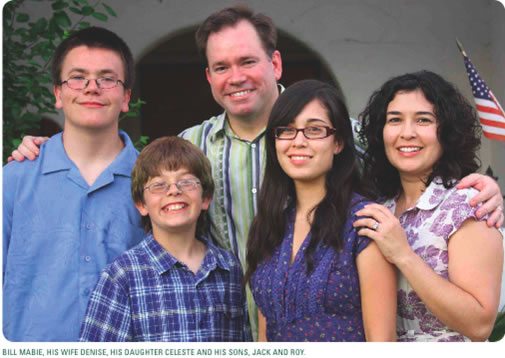
The Reason for a University Education
Terence McHale
Published Issue: Summer 2008
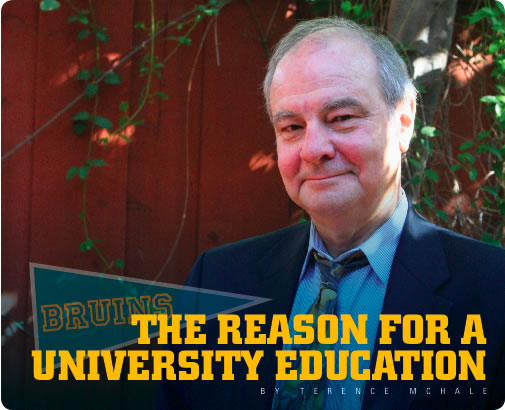
A.R. Braunmuller has been at UCLA for more than three and a half decades.
I saw him for the first time when I was an English major in the late seventies. I was supposed to get to his class a year earlier. A university education was easily affordable then, and it wasn’t unusual for students to be running on a more casual schedule.
UCLA has many great professors. Braunmuller is astonishing.
He would walk slowly around the edge of the class, his hands locked behind him, as if in pain because one of us was sure that Hamlet’s soliloquy was meant only as a quiet reflection for Hamlet, and he would respond...“if there is one person on stage and he is saying something then he must be addressing us...”
Now, looking back, I remember Braunmuller as a great actor who chose to be a teacher. He was incredibly brash, a decade or so older than us, his dark, longish hair a concession to the time and place although he did not seem to care much about fads. He wore pinstripe shirts with a tight tie. His accent was not easily identifiable. It was not Californian.
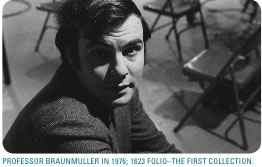
Braunmuller managed the impossible. He was unforgiving and gracious at the same time, our first relentless intellectual, unquestionably brilliant, funny, challenging, and encouraging, and his was the toughest class in our major. His classroom was always crowded. His language was so colorful, and the old worlds he brought to life were so vivid...you wanted to listen. You preferred, however, that he not call on you to offer an opinion..."Hey, you mimic intelligence so well I thought you had something clever to say"..."Are you hedging already?” Students studied harder for his class, not only to get the grade he carefully guarded, but to impress him. “...I don’t think anyone in this room would dare to improve on the excellent observation you just made...” He was passionate enough to draw out the best in all of us. “...that seems to me to be very correct, very intelligent, and very important to our understanding of the play...”
I went back to UCLA thirty years after having A.R. Braunmuller as a professor. If he had to prove himself once, he doesn’t any longer. His reputation is worldwide now as an editor and lecturer. He probably has his awards as a writer and teacher stored somewhere and, if he does, they take up a great deal of space. I sat in his classroom and asked the young woman next to me if she liked being there.
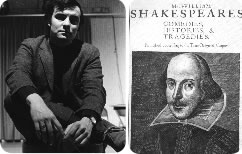
“It’s a tough class,” she said. “But it’s my favorite one.”
Some things never change.
Some things do.
Thirty years changes a man. The long dark hair is gone. I knew him when he was still young. He is now at the end of his middle years. He remains appealing. He speaks a little softer, a courtesy that ultimately comes across as an affectation because the cynicism is still intact, and his biting benevolence makes for an entertaining and somewhat risky hour and a half. Everyone is in on it. Professor Braunmuller knows more than even his best students will ever learn, yet he wants them to know everything they’ll need to enjoy the depth of the literature that he keeps fresh and still moves him deeply. He gives assignments that he expects to be completed. It is a lonely spot to have a seat in Braunmuller’s class and not have read the pages he is going to discuss.
Professor Braunmuller was born in the States. His first name is Albert. He grew up in Europe. His father built businesses in the Common Market. Professor Braunmuller also speaks German and Dutch. He comes from a smart family. His mother trained as a chemist and was admitted to Columbia Medical School. His sister, slightly younger, is an economist, also a PhD. and was the third woman to gain tenure at the US Naval Academy. His happiest years as a student were during grad school at Yale, and like he did when I first met him, he still dresses button-down.
We spoke in his office. It is comfortable. There are bookshelves set up library style. He made tea.
California Conversations: Would you agree everyone should read Shakespeare?
ARB: It can’t hurt.
CC: Should we be disappointed there are universities where you can major in English and not take a class in Shakespeare?
ARB: That is true and deeply regrettable. But, your original question was should everybody read Shakespeare? If I had to choose between more people reading Shakespeare and more people seeing Shakespeare, I’d vote for the seeing every time. Shakespeare wrote to be performed. He didn’t write to be read. Literacy has nothing to do with the original popularity of Shakespeare. He was not read to fame; he was watched to fame. He was immensely popular in his own time, and then not so popular. There’s about a hundred years from the middle of the 17th century to the middle of the 18th century where he is not the most performed, most talked about English writer. He comes to fame, to the kind of fame we have now, through the efforts of an 18th century actor named David Garrick, who made his fame as an actor and then led a renaissance of Shakespeare. He starts the fetishization of Stratford upon Avon. He commemorates Shakespeare’s 200th birthday in 1764 with a festival. That’s the start of the tourism Shakespeare. We never looked back.
CC: In the 17th and 18th century, who superseded Shakespeare?
ARB: Ben Jonson and John Fletcher, who are younger contemporaries.
CC: Are they among those who inspired the Oxfords to insist Shakespeare did not write the plays ascribed to him?
ARB: No...no. There is no question that there was somebody called William Shakespeare, and he lived and died when it is generally agreed he lived and died. Despite what people say, he is about as well documented as most of the writers of his time. It seems highly implausible that if Shakespeare’s authorship of at least most of the plays that we think he wrote was in doubt that some contemporary wouldn’t have mentioned it. None do. There is no haggling in his lifetime over his success. You can trace it. In the 1590s he was published without his name attached. The next edition of the same play is by W.S. A few years pass, and it is W. Shakespeare. Finally, he goes above the title. It is “William Shakespeare’s Tragedy of Hamlet.” The obvious inference, because this happens to several different titles, is that Shakespeare becomes a marketable commodity. It starts out with, “Hey, you ought to read this play,” and it ends up with, “This is the latest from Shakespeare.” Remember, writing plays was a highly competitive profession. The writers were trying to promote their own importance and demote their competitors. There are the negative remarks about Shakespeare but, coincidentally, with the negative remarks there starts to be highly complementary remarks-sweet swan of Avon and all of that stuff. Prior to 1623, Jonson has been extremely critical of Shakespeare. He makes fun of “A Winter’s Tale.” He makes fun of “The Tempest.” He makes fun of other playwrights, too, but he was an extremely envious man, or at least he didn’t conceal his envy as well as some. He felt an intense competition with Shakespeare and then he finally admits Shakespeare is the best writer of them all.
CC: 1605, 1607, at some point, the sonnets are published.
ARB: 1609.
CC: 1609. Why would he write three or four long poems, 154 sonnets, and then never write again in this particular style?
ARB: Ah, I think I can answer that. The long poems, which are first published in 1593, are motivated by a couple of things. One is that the theaters are closed because of the plague and Shakespeare has no income. The way you get an income if you’re trying to get started in the theater, or have poetic talent, is to write something and then get a patron to give you money for it-money in return for the dedication of the poem. This he does. These are very successful poems. He dedicates them to the Earl of Southampton, who is a young man about town, very wealthy, very beautiful, extremely well connected, and just living a life of dissipation, really, and who figures he needs the prestige of having patronized these poems. The most curious question about Mr. William Shakespeare’s sonnets is not their publication in 1609, and he didn’t write any more sonnets, it’s why it took so long to get into print. The sonnet vogue is a decade earlier, and as far as we can tell, aside from some revisions in the very earliest 1600s, he’s finished with sonnets before the end of the 1590s. They just piled up somewhere. Why anybody thought it would be a commercial success to publish them in 1609 is a complete mystery.
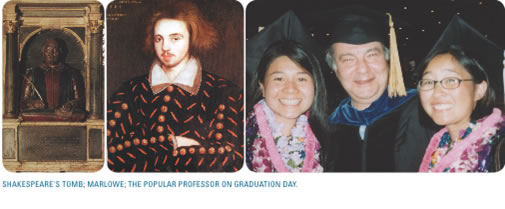
“The problem with trying to use the sonnets as biographical evidence is that they are inevitably fictive situations. Shakespeare is in the business of inventing.”
CC: Were they published without his permission?
ARB: It looks that way. Opinions differ...the next time they were published is 1640. They did not sell like hotcakes. The best guess is that now they’re playing on Shakespeare’s name, and thinking everything with the brand will sell.
CC: Let’s talk about the sonnets for a few minutes. I mean, obviously, the 18th sonnet-"Shall I compare thee to a summer’s day"-is the most famous of all.
ARB: It’s fascinating that you say this. I was talking about Shakespeare in front of a class of undergraduates, and one of them said, in a very off-hand manner, “Well, as we know from Shakespeare’s most famous sonnet, blah, blah, blah.”
..."Is it self-explanatory? I don’t know if you don’t tell me what it is you are trying to explain...”
CC: (laughs) Uh-oh, I know how this is getting handled.
ARB: And I said, “Shakespeare’s most famous sonnet? What is Shakespeare’s most famous sonnet?” The class, as a whole, replied, “Shall I compare thee to a summer’s day.” Now, how did you come to that conviction? Who decides most memorable or most famous?
CC: I’ll bet if you look up Shakespeare’s sonnets the three things you’re going to get immediately are: “Shall I compare thee to a summer’s day,” “the fair youth,” and “the dark lady.”
ARB: You may be right.
CC: Just to break that down for a second. Who is the fair youth?
ARB: If it is anybody historical, it’s probably Southampton.
CC: So often it gets interpreted as evidence of Shakespeare’s bisexuality.
ARB: Oh, yeah, sure.
CC: Because it’s very affectionate...my dear boy or…
ARB: Oh, of course, yeah. Although, the general argument in the poems is that you should get married and have a child, because if you don’t your beauty will die and live only in my poetry. That there was a sexual relationship was entirely possible. There are a lot of his sonnets, not just the first 18 or 19 or 21 or however many your particular argument favors that can be interpreted as male addressee and a male speaker. That has never seemed very interesting to me.
CC: Who is the dark lady in the sonnets?
ARB: Nobody knows. The problem with trying to use the sonnets as biographical evidence is that they are inevitably fictive situations. Shakespeare is in the business of inventing. That’s what a dramatist does. It’s also what a sonnet writer does. The miracle of the sonnet is that in so few lines you can get this whole situation put before you. Oh, she’s betrayed him and he’s betrayed her and they’re lying to each other about it and he knows and she knows but who knows, and so on. He could have invented the dark lady. In fact, he has to invent the dark lady for us to achieve this.
CC: Shakespeare’s family...at 18 he marries Anne Hathaway.
ARB: Germaine Greer has just written a book called “Shakespeare’s Wife” in which she does a very good job of imagining Anne Shakespeare’s life in Stratford. She is running a very big operation. She is running a household with three kids. She’s running servants. She’s running a self-contained enterprise of some complexity, and as he acquires land, she presumably becomes his legal representative in disputes and so forth. He has to come back a couple of times for lawsuits.
CC: So, him leaving her the second best bed in his will, what’s that all about?
ARB: Well, by the fact that you mention it, you know it has been used as an example of the marriage not being loving, because everybody fastens on the adjective “second-best.” What makes a second-best bed? What makes for quality in beds? It’s the furnishing. It’s the richness of the curtains on the four-poster bed, the canopy, and the carvings. That bed, if you are of a certain wealth, the best bed goes in the guest bedroom because you want to put on a show for your visitors. The second-best bed is in the master bedroom. That’s where you and your wife sleep. Now, this can be demonstrated to be true of some households. It’s only a presumption that it could have been referred to in the Shakespeare household.
CC: How detailed is the will?
ARB: It’s pretty detailed. What it doesn’t say, and what people who write about it should say, is there are a lot of conventions about bequests and wills and testaments that are so conventional they don’t have to be written down. The expectation was that unless there was quite specific language against it, the widow gets what is called the widow’s third.
CC: His times...what impact does the plague have on Shakespeare?
ARB: Ah. Well, first off a whole industry is shut down. The theaters are closed. You lose audience, and the people may not come back. You lose talent. The actors have to disperse. They have to earn a living somehow. Maybe they dig ditches. They have to do something to put bread on the table. There were two spectacularly bad outbreaks, but the plague is pandemic and all through Shakespeare’s life there is hardly twelve months without an outbreak of the plague sufficient to close the theaters, and this was especially true in the 1590s. Then in 1603 there is an outbreak in London, and it is estimated that between a quarter and a third of the population died. The theaters are shut down by the municipal authorities on the grounds that congregating spreads the plague.
CC: There is also passage from the Elizabethans to the Jacobeans and Catholicism versus Protestantism…
ARB: You have the Reformation, which is cataclysmic in terms of everything from individual conscience to the way church is run, to the dissolution of the monastery.
CC: How does this impact Shakespeare’s writing?
ARB: It’s hard to say. Old Hamlet seems to be talking about limbo, which is not an Anglican doctrine.
CC: (laughs) Well, he’s a ghost…
ARB: (laughs) It is a device he expects his audience to understand. “Measure for Measure” is set in Roman Catholic Vienna. It has a nun, a novice as a central character, and it has a man who pretends to be a friar and who hears confession. Was this just local color, or Vienna is in a Roman Catholic state and therefore I’m going to have these Roman Catholics? Who knows?
CC: Those who don’t believe in Shakespeare’s authorship question whether or not he had the education to understand all the environments about which he writes.
ARB: Yeah. You have to grant that whoever wrote the plays was of real historical quality as a writer. So, where do you draw the line? Did he know enough to understand how a contemporary European court operated? Cleopatra? How could he create the great female roles?
CC: How about the theory that he owns an eighth interest in the Globe Theater and he writes the first iteration of the plays he’s producing, but the plays that ultimately get published evolve with different individuals involved in the writing?
ARB: Anybody who has experience with the modern theater, and there have been some excellent case studies of this, knows that unless Samuel Beckett is involved, most plays from first rehearsal to first performance or last performance, change. There is an infinity of agents after the play leaves the playwright’s hands who can affect the text and thereby what is said in performance. It’s not usually quite as bad as a Hollywood movie or a TV show, but it’s almost as bad-bad in the sense of modification, adaptation, addition, subtraction, and so forth. We have dedications or introductions, prefaces that say this is almost a third more than what you heard at the Globe. Now, part of that is advertising. Somebody says why should I buy it, I saw it. Well, you should buy it because there’s more of what you liked.
CC: Director’s cut.
ARB: Director’s cut, right. It’s been going on for a long time.
CC: You’ve written about Thomas Middleton contributing to “Macbeth”...is “Macbeth” your favorite Shakespearian play?
ARB: It’s one of them, certainly.
CC: You’ve certainly spent a lot of time writing about it.
ARB: Gosh, yes.
CC: “Macbeth” is the shortest of the plays?
ARB: Technically, third shortest-the shortest tragedy. The tragedies tend to be longer than the comedies, so it’s even shorter than short since it’s a tragedy. There are a couple of possibilities. One is that we have a defective text-that whatever the guys got in 1623 had a page missing, or a scene missing, and whatever was missing has stayed missing. There could have been mechanical losses.
CC: How much have you identified as Thomas Middleton as opposed to Shakespeare and how do you delineate?
ARB: Well, there are two songs that the witches sing in “Macbeth” and in the 1623 folio all we get is the first line of the song followed by “etcetera.” In Middleton’s “The Witch” these two songs are given in full. So, the songs migrated into Shakespeare’s text somehow.
CC: Is that the only contribution by Middleton?
ARB: No, there are a couple of speeches for the fourth witch added, again, if you could add to something that doesn’t exist...there are about 45 lines for this speaker in all.
CC: Is “Macbeth” the first of the plays where you make the transition from Elizabethan England to Jacobean England?
ARB: Just about. “Measure for Measure” and “Macbeth” are there at the transition between Elizabeth’s reign and James’.
CC: Is Shakespeare writing “Macbeth” to curry favor with James?
ARB: It seems awfully coincidental that you get a new Scottish king and suddenly you have a Scottish tragedy. There has to be a connection. We also know, of course, that James had written on witchcraft and fancied himself a demonologist. He also presided at the trials of a bunch of witches in 1591. So, you have Scottish material; you have witchcraft; and you have allusions to anti-Catholic persecution.
CC: Shakespeare is popular with Elizabeth. He’s then concerned, I would guess, if his fortunes will change with James.
ARB: James comes to town as a devotee of the theater, and Shakespeare’s company is instantly renamed the King’s Men and made retainers of James. They each get, I think, seven yards of crimson cloth to make uniforms to walk in his coronation procession. You can infer something from this or not, but we know that very, very regularly-more regularly than anybody else-the King’s Men performed over the Christmas season, which is the big court festival season and happens to be the season of the year when you can’t perform outdoors.
CC: Back to authorship-is John Fletcher the only other person recognized as a collaborator?
ARB: Oh, at the beginning of his career there is a growing body of thought that says he collaborated on a play or that he and George Peele, the younger Peele, although he died young, too, are responsible for “Titus Andronicus.” Fletcher succeeds Shakespeare as the house dramatist...basically a contract for two plays a year, sometimes more. It is a very prestigious position, and what is happening is that Shakespeare is training his successor.
CC: Does it diminish Shakespeare to say he has a collaborator?
ARB: We wouldn’t be talking about this if there weren’t ways of discriminating between Shakespeare and not Shakespeare. Now, we’re not infallible, because we’re human, but just as I can tell you where Fletcher starts and stops, that means I can tell when Shakespeare stops and starts. It’s as simple as that.
CC: Can all of Shakespeare’s works be traced to another source?
ARB: Mostly, although there’s no real source for “Love’s Labours Lost.” There’s also no real source for “The Tempest.”
CC: Which is his most fun play (laughs)...and I’m careful now to offer such an opinion.
ARB: Well, (smiles) another explanation for why the text of “Macbeth” is so short is that the spectacle of the witches takes up stage time. Same thing, “The Tempest” is a very short play, and partly it’s short because it has so many spectacular effects, and you have to get them all in.
CC: They’re both such crowd pleasers.
ARB: Absolutely.
CC: Women are not a part of the theater throughout Shakespeare’s career.
ARB: Remarkably, there weren’t actresses on the English stage until the late 1660s. It remains a puzzle to us...who knows. They certainly must have had different conventions for sexual encounters. They never show one, but hugging and kissing must have been happening. It is a vexing question. Some of the young men, and let’s remember that because puberty comes later in the Elizabethan period, the young men playing women could be advanced teenagers. We could be talking about an 18-year-old here. They must have been remarkable actors, because there are plenty of, not just Shakespeare but his contemporaries, situations in which you get a boy playing a girl playing a boy.
CC: It must have been confusing.
ARB: Or it was a tremendous acting job.
CC: There’s no evidence that Shakespeare had a failed play?
ARB: That is correct.
CC: Is there any bad Shakespeare?
ARB: There are more successful and less successful plays by Shakespeare.
CC: If every writer has their classic, is “Hamlet” Shakespeare’s classic?
ARB: I have a colleague who wrote a book on the history of Shakespeare’s best play, and he says that for centuries it was “Hamlet.” It was generally agreed that this was the masterwork of a master dramatist. However, somewhere just after Hiroshima and Nagasaki, just after the Holocaust, just after the fracturing of 20th century world civility, “King Lear” is regarded as the masterpiece of a master dramatist. There is the nihilism of a society that not only has ended but there is no replacement in sight.
CC: At what point does the scholar become too pedantic? For example, in an afterward of T.S. Eliot poems the writer says Eliot uses trochaic pentameter only once in his writing and he uses it on the 328th line. And, it just so happens that Shakespeare in “Lear” uses trochaic pentameter in the 328th line. At what point do you say we’re parsing things so carefully we’re losing the big picture?
ARB: (laughs) We have several duties. One is to try to create the audience of the future. We are trying to perpetuate the works that we’re the guardians of, and we want other people to like them, read them, perform them, sing them, whatever form you study. In order to make them accessible I go through texts with archaic language. I deal with social structures that have completely vanished. Remember, they didn’t have bank accounts. They didn’t have insurance. So, our first duty is to usher into the present time a world that is gone. In order to do that you can’t just sit back and say, “See, kids, isn’t it wonderful”, because you haven’t told them how to measure wonderful. You have to approach your studies with a set of theoretical tools and some convictions. I shudder also when I see scholars become too pedantic.
CC: Shakespeare is only 52 when he dies.
ARB: The legend is that Ben Jonson visited, and they took a walk…
CC: I read it was a long night and there was drinking…
ARB: That is a digression, but it is a good one.
CC: Christopher Marlowe...what impact does Marlowe have on Shakespeare?
ARB: You want a flagrantly over-the-top answer?
CC: Sure.
ARB: Marlowe was an intensely successful playwright from the very beginning of Shakespeare’s career. Marlowe is a simply unimaginable turning point in spoken language, in dramatic language. I think that without the example of Marlowe, Shakespeare cannot be the playwright he is.
“...wisdom has spoken from the front row although it is possibly being missed in the back of the room...say it again so Grace can hear you...Grace can you hear...”
“I heard, Professor and I agree with that...”
“He is not a that. He is a Michael.”
“I agree with Michael.”
“We’re pleased you agree. Perhaps you can add to it.”
CC: Do you still enjoy teaching?
ARB: I do. I love it. I sometimes tease the students that the Regents send them to UCLA just for my amusement.

Notes on the Chapter Willie Should Have Written
California Conversations
Published Issue: Summer 2008
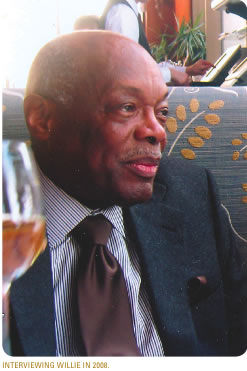 At seventy-four there are more stories than ambitions, and more memories than adventures waiting. Still, there is nothing dated about him and he remains very much a man of his times. He is a go-to guy. He is a consultant for people who want to get things done-different things-get elected, run legislation, meet someone who is difficult to reach, or build a new building in a place where it isn’t always easy to get the permits green-lighted.
At seventy-four there are more stories than ambitions, and more memories than adventures waiting. Still, there is nothing dated about him and he remains very much a man of his times. He is a go-to guy. He is a consultant for people who want to get things done-different things-get elected, run legislation, meet someone who is difficult to reach, or build a new building in a place where it isn’t always easy to get the permits green-lighted.
The finely tailored clothes he wears could only belong to a banker if the banker actually owned the bank. He is impeccable.
His large head is cleanly bald, his eyes, rumored to be weak, don’t miss a thing and their soft, dark coloring seems to capture light and reflect his mood. His voice is naturally modulated from decades of controlling his environment. He is easily heard no matter what is happening around him. The people walking past his table in the restaurants stare at him, the recognition of a celebrity, and the more daring of them stop to say how honored they are to meet him. He has a great smile. His teeth are very white. His laugh is kid-like, a delight in the moment, the kind of laugh that makes those who stop no doubt talk to their friends and family about how much fun it was to have his attention long enough to shake his hand.
He saw greatness in others once. He understands completely why people see it in him. He is lionized now, the former Mayor of the City, the great old man of the California Legislature. The hundreds who served under him during his tenure as the longest running Speaker in the 160 years of state history all like to tell stories of when they were in his company.
His name is Willie Brown.
There are presidents from California who will be remembered first-Reagan and Nixon, and Hoover who transplanted to Stanford and spent a long dotage, something not even hinted at with Willie, trying to make sense of how the depression snuck up on such a bright white guy with a stiff collar. There are governors, Hiram Johnson; Earl Warren, the visionary; Pat Brown, the modernist; Reagan, again, and maybe Schwarzenegger and the experiment that is still open ended, who might get bigger billing.
None of them is more California, closer to the people and the places people live, than Willie Brown. Willie understands how politicians get into office. He realized early what should have been obvious-that not all politicians are the same. They might get painted with the same cheap brush, however the conservative yachtsman from Orange County and the activist from an urban center have nothing in common except for more than three decades if they wanted to be effective at the Capitol, they needed to deal with Willie. And, with acumen unquestioned, Speaker Brown mastered the quiet maneuvering of thousands of bills that both shaped and twisted the growth of California. It took an initiative, one that made him the villain poster child, to end his reign by saying term limits made more sense than discretion at the ballot.
Willie has never been reclusive. He is ubiquitous during elections and much in demand by talk shows across the country when a weighted opinion is needed. Usually he translates well, although a back room is difficult to re-create and it is not always evident to see the ease with which he directed his House. There is also something odd about seeing someone other than Mr. Brown asking questions from behind a desk.
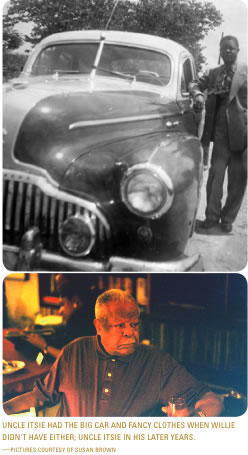 His recent biography was well-written. California Conversations made a gift of the book to hundreds of our friends. Yet, we missed some details.
His recent biography was well-written. California Conversations made a gift of the book to hundreds of our friends. Yet, we missed some details.
These are the notes we took from our conversations with Willie.
We begin with his Uncle Itsie, his mother’s brother, a marvelous figure from Willie’s childhood, a flashy, fabulous guy who showed up periodically in impoverished Mineola, Texas to let Willie know a place like San Francisco actually existed.
Unfortunately, neither Willie’s book nor the key biography written about him ever say much about Itsie other than his inspiring Willie with his fancy car and sharp clothes.
At 87 years of age, Itsie and one of his buddies were gambling. They used to gamble for 36-48 hours non-stop. They would order room service, or they would order take-out. They would play cards or do whatever they were doing in the gaming sense. On this occasion, the people in the building in which he lived called me and said you better come over here quick. One of our people rang the doorbell and found your uncle passed out and his companion appears to be dead.
I rushed over. When I got there, Itsie was conscious. I said, “Itsie, what happened?”
He said, “I don’t know. Ben and I started playing cards yesterday. We were drinking and we kept drinking and we kept drinking. The last thing I remember was that Ben made a bet. When they woke me up, Ben was leaning over. He wasn’t moving, so I called his bet. Ben didn’t say anything, so that means I won.”
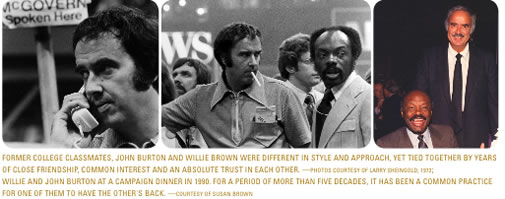
He was a funny, funny, guy. At about ninety, I absolutely insisted that he stop living alone, because he was getting to the point where some days he didn’t walk well. I got a call from the people running the building and they said the cops went up to your uncle’s unit. You better get over here and find out what’s going on. I got there, and the cops were already gone. I said, “Itsie, why were the cops here?” He said, “You know, I went down to the club, and I met this lady. She came home with me. She didn’t want to leave, and I don’t want nobody staying in my house overnight.”
I took him home for my mother’s birthday in Dallas. He was carrying a suitcase that was rattling. I said, “Itsie, what the hell is in that suitcase?” He says, “It’s Remy.” He drank Remy Martin. I said, “Why are you carrying all that Remy?” He said, “I was on my way to the airport and I ran into a buddy of mine who had some Remy he wanted to sell. And I bought it. I couldn’t trust him to take it to my house. He’s a thief.”
Itsie left his clothes, and toiletries and everything behind. He sent them back home via the thief. He carried the Remy with him instead.
Uncle Itsie died. He got old. He was 92. I called a friend of mine and asked if we could have the funeral at his church. I admitted that Itsie had never been to church in his life, but in memory of my mother I wanted to have a church service. The minister agreed. So, I brought the body in, and some of Itsie’s buddies and a few family friends and a lot of my friends, because they knew Itsie, showed up.
The minister began his sermon and he described Itsie as a good man who lived this honest and honorable life in service of the Lord...the preacher was talking about how he hoped the Lord would see the situation...well, I got up and unlike the preacher I don’t have any equity with the Lord and I said, I’ve got to tell you people something. If I had just walked into this church and heard this description of my Uncle I would have asked, “Is that the right guy in the casket?”
John Burton
John Burton has spent his lifetime in the tumble of San Francisco politics. He was elected at an early age to the State Assembly, and went to Congress until a cocaine addiction was thought to end his career. He proved his political resilience by being elected again to the State Legislature, and eventually was chosen by his peers to be the President pro Tempore of the California Senate. He can be alternately brilliant and boorish. In style and approach he is almost a deliberate antithesis to Willie. He was the younger brother of the once impressive Burton Political Machine, and is deservedly credited for his tireless efforts on behalf of the easily ignored.
We were college classmates at San Francisco State College. We were each enrolled for deferment purposes in the Air Force ROTC. When you initially enrolled, they put you into a drill squad, a decision not based on height, not on weight, but on alphabetical order. It was Brown, Burton, and we were elbow to elbow. At that time, he was running the football cards on campus. We called them football cards, but they were betting cards. He was running that operation. I was a betting man, and that’s how we became friends. From there he introduced me to his older brother, Phil, who was already running for office. It became, frankly, a natural friendship. Burton hasn’t changed from day one. Burton was the only white player on a championship basketball team-surrounded by black athletes from the playgrounds of San Francisco. He was a great player. He literally was the playmaker. He was an outside shooting guard. In those days you got playground jobs with Park and Rec, not Civil Service. If you were an athlete that is how you got subsidized. Burton had one of those jobs. Burton was very much a part of the African-American component at the University. He was very much a part of the wild end. He was very much a part of the political end. I don’t think he’s ever been what you might call Mr. Smooth, and I don’t think he’ll ever be Mr. Smooth. It’s been more than fifty years of friendship. I lent Burton the first down payment he ever made on a house. We’ve done a great deal together, and I choose to remember it as always being fun.
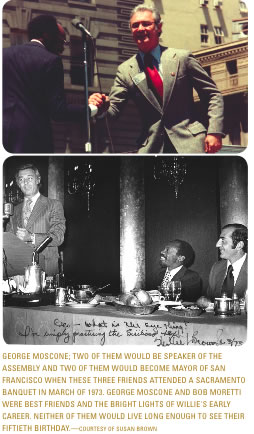
George Moscone
George Moscone was one of the most successful California politicians in the 1970s. A tall, very handsome man with a graceful speaking style and a compelling, smart-star personality, he became a leader in the California Senate and was Mayor of San Francisco when he was assassinated on November 27, 1978.
George Moscone was the smart one among us. Burton, Brown, Moscone were all in law school together. Burton eventually transferred to USF. Moscone and I graduated from Hastings College of Law. Moscone was the debonair, handsome, charming, polished, real son of San Francisco. You couldn’t be any more of a son of San Francisco than to be of Italian heritage and associated with the garbage companies that owned and operated much of that component of the city. He was an all-city basketball player, and he was uniquely friendly with John Burton because of the basketball connection. That’s how I became a great friend of George Moscone, and we did literally everything together-we’d go skiing and get together with our kids for different holidays. He was one of the favorite people in my life.
When he was mayor we would oftentimes go to bars, and sometimes he would have more than he should, and drinking tended to make George combative. He was...I should say less tolerant, because there was a high degree of racism still in existence and on display, and invariably it would be triggered by the salt and pepper appearance of Brown and Moscone. And if there was any, not even malicious, insults, and there often were of me, you were in for having to duke it out with George. He threw punches. My job was to not get our asses whupped on any given day.
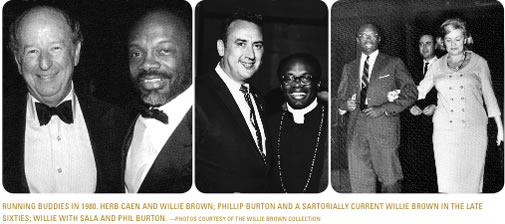
He was a guy who loved life like you wouldn’t believe. He was hip in every category. He loved playing trivia, very much into sports, very much into music, into clothing, into cars. Women found him worthy company. People literally stopped what they were doing when he walked into a room. He drove an off-pink Alfa Romeo.
Other than Dan White (the assassin), I was the last person to see George. It was not a significant conversation. I turned down staying to have a cup of coffee while he told Dan White he would not be able to reappoint him as a supervisor because once you resign, it’s a done deal.
Subsequently, I learned that Dan White had a list of people he intended to assassinate, and my name was on that list.
When I think of George, I think about that incredible smile, that superior brain, and that enthusiasm for life...food, wine, and other things. I miss him.
Herb Caen
The master of ‘three dot journalism,” Herb Caen’s legendary Chronicle column of short features made him the person people read when they wanted to understand San Francisco.
Herb was a genius beyond belief. He was eclectic in his tastes-the arts, politics, food, music, clothing, the opera and the symphony. Nobody lived a fuller life, twenty-four hours a day, seven days a week than Herb Caen. Whether it was playing tennis, going to the Giants baseball game, going to the 49ers football game, going to the Fillmore to watch Santana, going to a movie and getting up and walking out in the middle of the movie because it was horrible, going on a structured operation to find the best cheeseburger in San Francisco, going to a memorial service and deciding the people speaking are phony and grabbing me and dragging me out of there because we don’t want to be hypocritical...always up to something...surly, not at times! Surly all the time and particularly surly when someone tried to pick up the check because of the assumption that columnists want someone paying for them. He didn’t want anybody picking up the tab. I don’t mind that. I don’t have that issue.
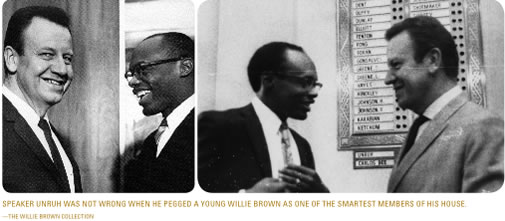
Phil Burton
A case can be made that Phil Burton was the first modern California politician. He was six years older than John and eight years older than Willie. One of the true giants of the California congressional delegation, Phil lost his first race to a dead man and, because of his obstreperousness, he missed out on becoming one of the leaders in Congress when he failed to get the support he needed from his own California colleagues. He died suddenly in 1983 when he was only fifty-seven. His legacy includes being a leading environmentalist, an ardent advocate for the poor, and the first member of Congress to acknowledge and confront the consequences of the AIDS epidemic.
Phil Burton was the architect of the career of his brother John, the career of Mayor Moscone, and the career of Willie L. Brown, Jr., the career of his wife Sala and the career of Speaker Nancy Pelosi.
He was not fun in the normal sense, but fun for political junkies. Phil Burton was the brightest politically among all of us, the more focused politically. He never awakened before eleven o’clock in the morning. He did not grant media interviews to anybody. He spent full time learning every congressional district in the country better than the person representing that district. He literally was better than any computer, faster, more efficient, and his data bank was more extensive, and his ability to recall was superior.
He had greater interest in the subject matter of socially useful programs for disadvantaged people than probably anybody else in America, and he was more clever at being able to achieve it. He was a guy who took no prisoners in pursuit of his political agenda. He didn’t need anything or anybody. He understood clearly, however, that in the exercise of power it was ludicrous to assume that in every instance he could be a member of the Assembly, he could be a member of the State Senate, he could be the mayor. He had to find allies who were equally, in his judgment, imbued with his commitment.
He was abrasive, but not malicious. It was just Phil, who between the close of his official duties and four a.m. would consume as much vodka as was available in whatever establishment he was sitting. He was never a drunk in the sense of dysfunctional. Burton had a capacity for food and beverage that was virtually inhuman. It did not alter his thinking capacity or his functioning ability. He could be as much an asshole at eleven in the morning as he was at eleven at night.
Jesse Unruh
He became infamous as Big Daddy, a three hundred pound politician who befriended the Kennedys early and was the first Speaker of California’s fulltime Legislature. He would eventually slim down, run against Ronald Reagan for Governor and become a very effective State Treasurer.
Jesse Unruh was as smart as Phil Burton, craftier than Phil Burton, and less committed to poor folks than Phil Burton. He was also far more acceptable to the commercial world than Phil Burton would ever be. Jesse Unruh was smart enough never to tell, for example, the leaders of some energy company to go fuck themselves. Phil Burton would open his conversation with that dialogue. Although they may end up in the same place, Unruh would lull a person into acceptance while Phil would beat him into acceptance.
Unruh was a man who loved country western music. He loved dirty jokes and stories of that nature. He had a real propensity for dissecting other human beings, and he loved being able to do that with people he trusted. They’ve said it more cheaply about others, but he truly was a consummate politician.
Harvey Milk
Supervisor Harvey Milk was murdered just moments after the killing of George Moscone. The first openly gay politician to hold a major office, he is also the subject of a soon to be released Sean Penn movie.
I knew Harvey Milk very well. I think, had he lived, Harvey would have moved the gay community in a direction less progressive than it currently is. He was interested in building consensus while pushing gay issues for legal acceptance. He would not require the kind of militant commitment from others that some gay activists currently do, and he would probably be subject to that criticism. He was a very nice guy, and enjoyable to be around. He was incredibly smart, a wonderful sense of humor, a person who wanted to accomplish something and not just make a statement. He was practical. It would have been interesting to see how much he could have accomplished in many areas of public policy.
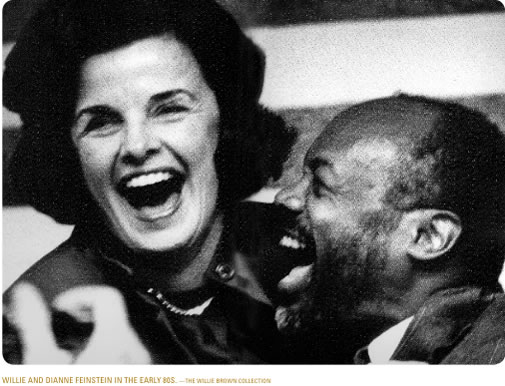
Dianne Feinstein
She announced the killings of Moscone and Milk and in that moment displayed the perfect mix of compassion and control. She has made her mark as the senior senator from California.
If Harvey and George had not been killed, there would not have been the second chapter or third chapter for Dianne Feinstein. She was finished. She lost the election for mayor to George. Dianne would have gone a different direction, because there would not have been a platform to launch her career.
I was the only elected official to endorse Dianne Feinstein for the Board of Supervisors in 1969. Dianne walked the picket line in my efforts to integrate housing in Forest Knolls in the early ‘60s. So, I knew Dianne reasonably well, and I knew her first husband, a great guy. I gave him my tickets to the Cal games because he was big on them. I’ve always preferred professional sports.
I was one of the few people sitting in her living room orchestrating how we get the votes to get her into the role of the interim mayor, a replacement for the remainder of George’s unexpired term. She was automatically by charter the acting mayor, but she had to be voted upon by her colleagues to be the interim mayor. Then I became one of the instruments that helped her beat Quentin Kopp in the race for a full term, Quentin Kopp was incredibly strong. In the primary, they were separated by one or two percentage points, maybe more, and she was an incumbent. The results looked dim for her. We put together an operation that resulted in an increase in the Black vote, an increase in the public housing vote and the results were that Dianne won.
I liked Dianne then. And I still like her.
Ronald Reagan
Actor, Governor, President and iconic American figure.
Charming, clever, smart, deal maker and probably as everybody says the best at presenting himself to the public in a favorable light. I wish I had that skill. I think people who didn’t know Reagan, would have to ascribe to him qualities separate and distinct and far more favorable than other politicians. He never presented any of the negatives of a politician. Never. Never. There was never an occasion when anything that he did or said could be interpreted as being negative. I am not at all surprised by the incredibly admiring view people have for him and his time in the presidency.
Many times we would be the last two persons standing, so to speak, at a lunch or a dinner or in a space around the trains. But it was not like we were programming what we were going to do next. We operated in different circles.
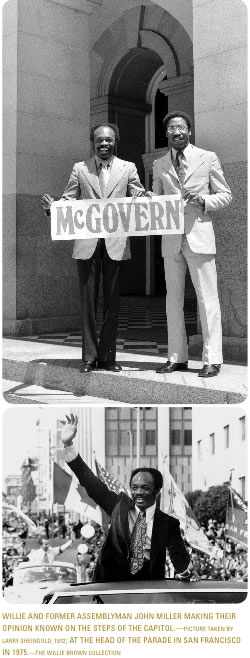
Bob Moretti
He was elected Speaker of the Assembly when he was only 34 years old. At a time when politics was the domain of tough professionals, Moretti excelled.
Bob Moretti was my real buddy. He was the most trusting guy of me that I ever had an occasion to meet. He was also the guy that had the least amount of ego problems with taking your advice and counsel and giving you credit for it. He was so naturally talented. It wasn’t just that he was smart, he had the kind of personality that made people comfortable when he sat down and talked to you quietly. He was extremely capable. He was also a prankster of the worst order. He would spend a great deal of time trying to figure out how to vex you just for sport.
He died very young on the tennis court. His family, the bloodline, had small, small blood vessels, sometimes not any thicker than a strand of your hair in their circumference, and that kind of a blood vessel can easily become clogged and in the right place, stop you instantly. That’s what happened. He was wonderful company. I miss him a great deal.
Wilkes Bashford
Wilkes Bashford, the clothier, and by himself a San Francisco institution, has a standing lunch appointment every week with Willie. Herb Caen was part of the group, as are an interesting handful of longtime friends, one nicknamed Sir Lunchalot, and all of them accomplished in their own fields.
My goal is to live long enough to eulogize all of my friends. Unfortunately, I won’t outlive Wilkes. He takes very good care of himself.
When I went into Wilkes’ first store in the early sixties I bought a suit for $395. The last suit was $8,000. Needless to say, I don’t buy them like I used to.
Wilkes was always part of our group, except we didn’t run around with Wilkes. Wilkes was never speedy enough to hang, because he didn’t have any great interest in football or baseball or basketball, or some aspects of music. Wilkes was urbane in every sense of the word. Herb and I would sneak out of a symphony at intermission. Wilkes likes those four-hour performances. Wilkes considers us somewhat uncouth, but tolerable. We really couldn’t do, frankly, without him and he couldn’t do without us, because we were his best walking ad pieces. Our weekly lunches at Le Central are where we literally dish the whole world, including ourselves, and if you are not there, you get trashed. You show up out of sheer protection.
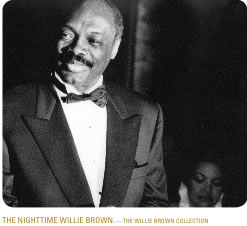
Blanche
Willie has been separated for more than half of his fifty-year marriage to the beautiful Blanche. His private life has not always been that private, and his mutual affection for women is not a closely guarded secret.
I just talked to Blanche this morning. I’ve written about the voodoo thing...she is a goddess in the Brazilian religion. She is really very high up, a priestess or goddess. I don’t know what you call it. She resents me teasing her...you know, where’s the chicken you killed this morning...she doesn’t like those kinds of jokes at all, because she’s serious about her religion.
She has lived the same full life I’ve lived. I don’t get jealous or pass judgments. It’s a waste of time passing judgment on anybody, including yourself. No harm, no foul. I talked to her this morning, because I’ve got my Mercedes in storage on the waterfront and I don’t want to keep paying that bill. She lives in Oakland and she has a carriage house and she’s been lobbying like hell to get her hands on that Mercedes. It’s a golden car. It’s a SL600. It’s a 1994 and has fewer than 25,000 miles on it. So, it’s virtually a new car. It’s an absolutely gorgeous convertible with a hard top. I saw her yesterday at my granddaughter’s two-year birthday party. I told her I really think she should come get the car. Blanche finally gets the goddamn Mercedes.
Kathleen Cleaver
The Black Panthers began meeting in a small house across the bridge from Willie in Oakland, California. At their most influential, Willie was the most prominent Black politician in California.
I represented the Black Panthers as a lawyer. In 1968, Kathleen Cleaver, wife of Eldridge Cleaver and a distinguished law professor in her own right, ran against me. It was like any other race. She lost badly. It was not difficult for me to balance at times the militancy of the Black Panthers and my position as one of the few Black elected officials. You are far more comfortable in the art of making public policy if you figure out what’s right and then you sell it, rather than trying to figure out what people think is right and you adopt it.
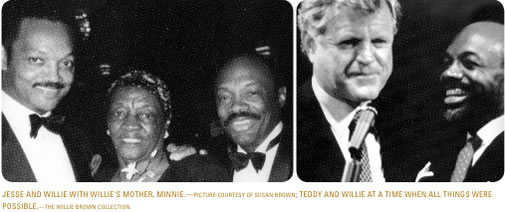
Leon Ralph
Willie lost the first time he ran for Speaker of the Assembly. Almost thirty-five years later, the reason for the loss and the residual acrimony remain fresh.
Leon Ralph cost me the speakership in June of 1974. Leon Ralph was my running buddy. We lived in the same building together. Leon made a commitment to nominate me.
I kept looking at Leon and waiting for him to get up and nominate me. He wouldn’t look back at me. He’d sold out for a committee chairmanship and didn’t have the heart to tell me. It was an incredible betrayal, the worst of my political career.
It ruined the friendship, but I wouldn’t let it end. I never cancelled the acquaintanceship and the connection, because there’s no way for me to get revenge if I don’t stay close. I try my best to stay close.
Leon Ralph really was ultimately traumatized by what he did. He left the Legislature voluntarily. He didn’t run again. He was so pilloried and brow-beaten everywhere he’d go, because he was in an all Black district in Southern California and they never forgave him. He ended up becoming a preacher. The results were that he died quite young.
I don’t know if what we had at the end could be called a reconciliation. We did become acquaintances again, and semi-friends, but not friends that you would think in terms of warmth, or trusting, or anything of that nature.
George McGovern
The South Dakota Democrat was his party’s nominee in 1972 against Richard Nixon. Willie was the co-chair of the California delegation and when there was a controversy regarding the delegation’s seating, Willie became a national figure with his stirring demand on network television that the party leaders ‘Give me back my delegation.’
George McGovern was probably the most decent politician, or one of the most decent, I had occasion to meet. He was, however, really unsuited for the rigors of political office. He is a true professor, in every sense of the word, and committed like you would not believe, but not up to any of the qualities that make for a charismatic leader.
I was tapped five minutes before I went up on the podium to be the closer in a credential battle on the seating of the California Delegation. I had to figure out in a very short time some way to do a closing argument as a lawyer, which meant I needed to synthesize what three or four people said in the initial debate and make the closing argument with as much freshness as I could bring to a subject matter that had been thoroughly beaten-up over the last 48 hours. When I got up there, it was of the moment, and that one line has reverberated over the years.
Jesse Jackson & BARACK obama
Willie was the national campaign chair for Jesse Jackson in his effort to win the Democratic nomination for president.
Jesse Jackson is not Obama. He frightens white people, and Obama does not. I think Jesse has a greater commitment to the specified needs of African Americans than almost any of us, period, including Obama. I don’t know Mr. Obama well at all. I helped him in 2004, the first time he came to California to raise money for his senate campaign. He’s incredibly impressive on the stump. I’m not sure exactly what he stands for. I assume, frankly, he will translate on issues that I care about if he’s elected to the presidency, but I cannot tell you any more about Mr. Obama. I don’t know if anybody else knows any more about Mr. Obama.
I think he has a very good chance of winning. I think he has surpassed what most blacks have been able to do nationally. In spite of everything Jackson said or did, for many white people he was still a mugger, potentially. Obama is viewed first as a qualified candidate before they look at what color he is. That is fabulous. It is a movement.
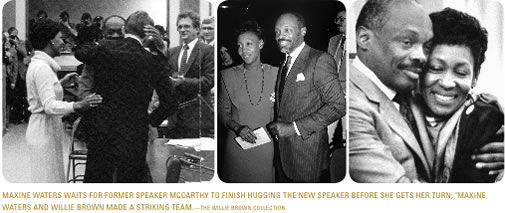
Kennedys
I met JFK. I didn’t know him. I was just a kid in 1960, just starting out in politics. I was a candidate for the county committee, and I won in the same year Jack Kennedy won the presidency. I traveled with RFK. He was the constant political type who was totally alive, literally, totally alive. He was completely enjoyable, taking off his jacket and rolling up his sleeves was natural for Bobby Kennedy and not an image thing. He was fulltime funny. He cracked as many jokes about you as you could crack about him and his family. Teddy is free flowing, fun loving, in every sense of the word, and a better speaker than either of the other two Kennedy brothers. Teddy let the old man in, so to speak, as Rusty Areias would say. I think they pulled him off the Obama trail (note: our conversation with Willie regarding the Kennedys took place before the grim news on Senator Kennedy’s health). He made the big announcement and they immediately dispatched him to California and he only appeared at one rally, before they substituted his niece, Caroline, because he was not resonating...you know you’re talking change and you bring in a dinosaur. It doesn’t work.
Maxine Waters
In many ways Maxine Waters was the most complementary partner to Willie in the California Legislature. An intense and driven legislator with a powerful personality, Waters is also a clever orator and appreciates the importance of being stylish. She is a few years younger than Willie, and they have enjoyed a long friendship. Ms. Waters has been in the United States Congress since 1991.
In my book I mentioned my annoyance at Anne Coulter saying had it not been for affirmative action Maxine Waters would never have a job in which she didn’t wear a paper hat. Well, that was not just against Maxine. That was a slam on all African Americans who have risen to the level of being something other than a waiter or a chef or a maid. It wasn’t just Maxine she was slamming. She was slamming all of us. It was a gross expression of racism which doesn’t happen to be anything but a perpetuation of a misrepresentation. We have not become desensitized to this. Otherwise you wouldn’t have had Imus being fired-or Jimmy the Greek would not have been dumped in the sports world and Trent Lott would still be the leader of the Republican arm of the Senate. What triggers major reactions, I don’t know. I don’t think anybody ever takes Ann Coulter seriously. They may take the other people seriously. I don’t know. I think everybody knows she is kind of an insignificant, raving nonsense personality. I think to elevate her comments would only enhance her status, rather than do anything to alter the landscape.
Bill Clinton
Democratic lightening rod and former President of the United States.
Bill Clinton is an absolute genius. I never met anybody with a greater recall of facts, faces and names. I never met anybody who could engage in dialogue on subject matters involving history and public policy as efficiently and as comprehensively as Bill Clinton. He is into socializing like you would not believe. He can talk at length and with depth on any subject to any person. I don’t share the view about any limitations on his status among the great presidents.
He is my favorite living politician. Phil Burton is my favorite politician ever, with Unruh a very close second and with Bob Moretti a very close third.
But let me tell you, Bill Clinton is awesome. He is awesome. I am literally alarmed that he was castigated about comments he made that have been painted as racist when he suggested that Obama won in South Carolina because of the Black vote. Bill Clinton is no racist. He did exactly what I would have done. If somebody had said to me, Ammiano (gay candidate for the Assembly) won the Castro, I’d say, he should have. Gays vote for gays. That’s not being homophobic...if they said Leland Lee beat you in Chinatown. Well, of course, he should have. Chinese vote for Chinese. That is not being anti-Asian. So, to attribute that role to Bill Clinton is an incredible disservice, and I hope at some point the Obama world will acknowledge that in fact Bill Clinton is not a racist.
Cesar Chavez
Born in Arizona and recognized worldwide for the labor movement he founded, he is claimed as a California favorite son.
Cesar was a fabulous labor leader. Devoted, incredible and, this might surprise you, he gave me the single largest contribution I ever received as a politician. Cesar gave me a quarter of a million dollars for my candidates in, I think, 1982 or 1984. I marched with Cesar in the 1960s. I raised money at every Democratic convention. I passed the bucket from the podium on behalf of the Farm Workers. Cesar was unbelievably dedicated, but I don’t get together socially with any of those ‘cause’ people. I get together socially with people who make me laugh or have many diverse interests.
GAVIN NEWSOME
The Mayor of San Francisco and possible gubernatorial candidate. His career was jump-started when Willie appointed him to the Board of Supervisors.
I’m disappointed in his insufficient appreciation.
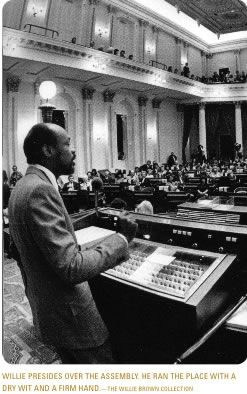
Antonio Villaraigosa
The Mayor of Los Angeles and the former Speaker of the California Assembly.
Antonio has a great future. In 1994, he was in the freshman class, and I was looking for the next generation of leaders knowing that in 1996 I would be term limited out of the Assembly. I assessed the incomers, the incoming freshmen, and concluded that either Kevin Murray or Antonio would ultimately be the young guard who could possibly replace me. I sat the two of them down and told them you guys ought to figure it out, but one or the other of you will be the speaker...period. I said you’ve got the personality, which is one of the first requirements, and that isn’t something you can make up. I said each of you has the operational skills. You’re interested in campaigns. You’re interested in voter registration. You’re interested in polling. You’re interested in what other members think. You each have a fundraising capacity because you demonstrated that by getting yourself elected. Now you ought to generate a relationship with your fellow members and when I leave in 1996, one of you will replace me.
I don’t think Antonio has hurt himself much politically in the last year with the relationship with the reporter or the divorce. Those personal things don’t hurt you like they might have once. It might have been difficult personally but it was a recoverable offense politically.
Willie is now 74 years old. He lives in a penthouse apartment in a beautiful section of his beloved San Francisco. He works out regularly, finally having the time and the inclination for the first time in his life, and his health is excellent, although he jokes he should have been dead five years ago. He eats virtually all of his meals in restaurants. He has never been drunk, but enjoys a healthy glass of wine with his lunch and profanely mocks those who don’t join him.
He is extraordinary company.
The Most Underappreciated Movie Scenes of the Last 40 Years
Tim Valderrama
Published Issue: Summer 2008
The idea for this article materialized the way most good ideas begin, with friends talking over drinks. On this particular night there was mix of Capitol folks enjoying our second final final when our conversation took a predictable twist. We were running out of things to say to each other and somebody in the group was about to make the leap.
There are only three things politicos discuss on nights like this one...work, sports, and movies-and when we get to movies we always mention The Godfather. And, just to be clear, when I say The Godfather, I’m talking about The Godfather and Godfather II since we all agree the third installment of the trilogy doesn’t exist. In fact, I’m not sure why it’s even called a trilogy at this point.Having already covered work, the fast start of Tampa Bay in the American League, the modern Celtics and Lakers against the Bill Russell-Kareem eras, we started butchering our favorite lines in the two recognized chapters of Francis Ford Coppola’s masterpieces. The leap had been made.
It became apparent for some reason that made sense at the time that a list of the top ten underappreciated scenes in cinema needed to be created-and as the naturally insightful Bluto Blutarsky says in Animal House, “We’re just the guys to do it.”
In order for the discussion to be meaningful we began establishing ground rules. The first and probably most import rule we decided on was that we’d keep the list relatively current. While there were a few classic movies buffs in attendance we didn’t want our list to be filled with scenes from Citizen Kane, On the Waterfront, Casablanca or the wide canon of memorable scenes with Humphrey Bogart. We chose to limit the selections to movies made in the last 40 years.
Secondly, we determined that in order for a scene to be considered underappreciated it must fit into one of two categories. The scene could either be pulled from an enormously popular movie that you would normally associate with a different, more famous scene or it could be the pivotal scene of a lesser known film.
We talked for a bit about two movies where the lead actors are phenomenal without saying a word-Jack Nicholson when he looks at his young friend, the tormented Billy in the private room with the girl who has snuck into the mental hospital in ‘One Flew Over the Cuckoo’s Nest’-it is a quiet, stunning moment in an otherwise wildly unfettered Academy Award performance and we see all of the tragedies of a horribly unfair situation in Nicholson’s face.
The second quiet scene that we thought was impressive was in another Coppola film, ‘Peggy Sue Got Married,” and Kathleen Turner as the middle-aged woman, who is fantastically transported back to high school, walks up the stairs of her childhood home and is flooded with feelings of all that is gone from her life.
We rejected them from the top ten ultimately because we decided that our underrated scenes needed dialogue.
We didn’t come to complete agreement, no one ever does at the Capitol, but in the great new tradition of finding consensus, we came close when we listed the following scenes as moments that could not be cut from their movie without changing it irretrievably for the worse.
10) Magnolia
Directed and written by Paul Thomas Anderson (1999)
“These two that I had and I lost,” are the sad words from an old man in the waning moments of his life. Tom Cruise was nominated for the Oscar for Best Supporting Actor for his role in this film. However, both Phillip Seymour Hoffman and Jason Robards delivered more compelling performances in their scenes together as a male nurse (Phil Parma) and a rich, elderly dying man (Earl Partridge) in his care. There is one scene in particular where Earl, obviously close to death, is talking to Phil about how he repeatedly cheated on his wife and abandoned his family. This beautiful scene, embodying the essence of regret, is made more poignant by Hoffman’s masterful display of compassion and by the fact that Jason Robards is so visibly close to his own final breath.
9) The Lion in Winter
Directed by Anthony Harvey (1968)
Katherine Hepburn made 46 films and was a presence in America cinema for more than sixty years. In 1967 she deservedly won the Academy Award in her swan song coupling with long time lover Spencer Tracy in “Guess Who’s Coming to Dinner.” She followed it up a year later with a period piece, “The Lion in Winter,” playing the aging, imprisoned Eleanor of Aquitaine, the wife of Peter O’Toole’s Henry II. It is safe to say that even by medieval times this was a troubled marriage, and the scene in which she recounts her own list of lovers to the philandering King, a list that includes the previous regent, Henry’s late father, the level of vitriol raised by these two accomplished actors makes you wince.
8) Pulp Fiction
Directed and written by Quentin Tarantino (1994)
The watch: Christopher Walken appears in only one scene in Pulp Fiction, just as he did in another Tarantino film entitled True Romance where he delivers a similar monologue. This scene has it all. There is tremendous delivery by the quirky Walken, someone who almost became a leading man after his Academy Award winning performance in “The Deer Hunter,” and found his place instead as the fascinating character who twitches and hems and voices the feelings of the writer and director. There is dialog only Tarantino could write, a lesson in history, empathy, humor, and it is masterfully shot. More importantly, you get to hear the line, “Five long years, he wore this watch up his ass...then when he died of dysentery, he gave me the watch.” Walken is a guy who has probably never seen most of the movies in which he’s appeared yet he consistently makes the movies better...or, in some cases, the only reason to watch them.
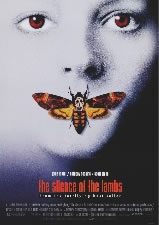
7) Silence of the Lambs
Directed by Jonathan Demme (1991)
Jodie Foster won the Academy Award for best actress opposite the unrelenting performance of Anthony Hopkins as the serial killer Hannibal the Cannibal. The film would not have worked if Foster did not manage to maintain control in the scenes in which she confronts the taunting serial killer. The scene that made it to this list is when she follows the clues and ends up in a storage garage where she finds the human detritus of a murder victim and, instead of trying to be too strong to allow any emotion to fray her FBI character, she responds with an identifiable horror that brings us deep into the movie.
6) At Close Range
Directed by James Foley (1986)
Walken again, and this time as the father of Sean Penn. It is an unbelievably wicked role, and Walken, cryptic, charming, evil, compelling, shines completely. There is nothing he won’t do, including the murder of another son, the assault of Penn’s girlfriend, and the shooting of Penn. There is a scene toward the end of this tepidly good film in the kitchen of Walken’s home when a bleeding Penn threatens to kill his father. Walken’s line, “What, you want me to tell you I love you...hey, I love you,”...is delivered with such entrenched insincerity it makes a mockery of anything the two men might once have shared.
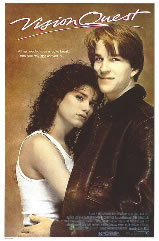
5) Vision Quest
Directed by Harold Becker (1985)
Six minutes: One of the most underappreciated movies of the ‘80s and arguably one of the top ten sports movies of all time. The scene takes place when Louden Swain, played by Matthew Modine, is on his way to wrestle Shute in the big, climatic match. Louden stops by to see a gruff, blue collar co-worker named Elmo who is putting on a suit and a tie that he’s obviously not comfortable wearing. Louden asks Elmo where he’s going and when Elmo says he’s going to the wrestling match, Louden gets angry and tells him it’s not worth missing a night’s pay for six lousy minutes. Elmo responds by giving one of the most inspirational speeches ever caught on film. He describes a day when he happened to be watching the Mexican channel on TV and he sees Pele score a goal upside down and backwards. Elmo concludes his speech by telling Louden the following, “I’m here, sitting alone in my room, and I start crying. That’s right, I start crying. Because another human being, a species that I happen to belong to, could kick a ball, and lift himself, and the rest of us sad-assed human beings, up to a better place to be, if only for a minute...let me tell ya, kid-it was pretty goddamned glorious. It ain’t the six minutes...it’s what happens in that six minutes.” Gets my eyes to well up every time.
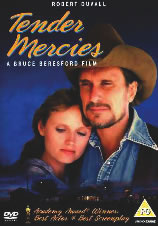
4) Tender Mercies
Directed by Bruce Beresford (1983)
This gem of a movie is an attachment of quietly written scenes that add up to a character study that makes Mac Sledge, a drunken western singer finding his soul again, the part played by Robert Duvall, as real and unforgettable as anyone you will ever watch in a movie. The place is west Texas, a barren landscape, and Duvall is hoeing the weeds in the struggling garden behind a ramshackle motel where he works. In a voice that is as tough and as practical as the brown and dusty world he inhabits, he quietly tells the woman who saved him, the completely understated and perfectly cast, Tess Harper, how his daughter’s death in a car accident reminds him again that he doesn’t trust happiness, never has and never will.
3) Deer Hunter
Directed by Michael Cimino (1978)
In 1978, Michael Cimino was on his way to becoming one of America’s greatest directors. He got sidetracked, but this movie ranks right next to the Godfather saga as indelible Americana. There are many scenes that are stunning-including the welcome home for DiNiro’s character, the “Oh, Michael” line uttered by Meryl Streep-but all of the guys in our group said no picture captures better the dynamic of a group of best friends than when John Cazale-who made five films in a career shortened by cancer, and all five films were nominated for best picture in no small part due to his performances-forgets to bring his boots to go hunting deer. An outraged Robert DiNiro refuses to share his extra pair until the peacemaker of the group, a young Christopher Walken, steps in and tells the angry DiNiro to give up the boots...just give him the boots...
2) Jaws
Directed by Steven Spielberg (1975)
Steven Spielberg became somebody great when he directed Jaws in 1975, and the fish was not the only memorable character. Night falls after the crew gets their first look at the colossal shark and the three men wait in the Orca’s cabin. The men are in remarkably tight quarters and the scene is lit by a single swaying light overhead. They get drunk, sing songs, and compare scars. The scene is as entertaining as they come but more importantly it marks a very important transition. Up until this point in the movie Brody and Hooper have shared camaraderie mostly because Quint is beyond surly and borderline mad. However, there is an incisive moment in this scene when Brody wants to be part of the conversation and considers putting his scar from an appendectomy up against the others-he doesn’t, because the scars the Captain lives with are revealed to be deeper than ever expected, the kind of scarring that is in memory and leaves a man hateful and less human. By the end of this scene you realize that the movie’s hero is afraid of the water, chasing an enormous, man-eating shark, and trapped on a boat with not one but two lunatics.
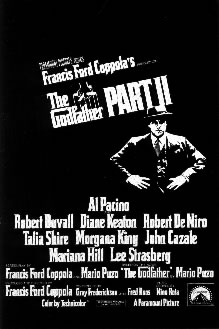
1) The Godfather II
Directed by Francis Ford Coppola (1974)
The greatest sequel ever produced gave us the “that man’s name was Moe Green” line all of us agreed was the key to justifying the amorality of the Godfather saga. The line was uttered in a hotel room in pre-Castro Cuba when Hyman Roth tells Michael Corleone, in the role that was the first indication that Pacino was going to be a legendary actor-that either money is left for a deal to be made or Roth will understand they are not partners. There was universal agreement that this is the most overlooked and underappreciated scene in any Godfather movie and it was actually the impetus for this article. The scene stands out for three reasons: 1) Roth deftly lets Michael know he’s aware Michael is responsible for Moe Green’s death. 2) This is the first moment since Michael takes control of the family where it is evident that he’s facing off against a true equal. The speech concludes with the telling line, “This is the business we’ve chosen. I didn’t ask who gave the order because it had nothing to do with business,” 3) Strasberg, who is more famous for being the patriarch of American method acting than for his film roles, clearly illustrates in this scene-stealing moment that the teacher knew what he was doing.
Harrison Ford: Pilots A Great Life
Aaron Read
Published Issue: Summer 2008
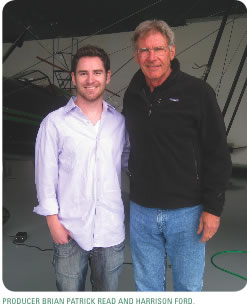 His dad, Christopher Ford, was a television commercial producer in live TV. It was a great job, even if his two sons didn’t always realize it at the time. He did all the live cheese pours for “Kraft Musical Hall,” which eventually became “The Perry Como Show.” He would fly every weekend to New York and melt a big tub of cheese and pour it on camera for a mesmerized television audience. It was the 1950s and cheap American cheese was what you were supposed to melt and pour over everything that was possibly edible.
His dad, Christopher Ford, was a television commercial producer in live TV. It was a great job, even if his two sons didn’t always realize it at the time. He did all the live cheese pours for “Kraft Musical Hall,” which eventually became “The Perry Como Show.” He would fly every weekend to New York and melt a big tub of cheese and pour it on camera for a mesmerized television audience. It was the 1950s and cheap American cheese was what you were supposed to melt and pour over everything that was possibly edible.
Christopher Ford also did live commercials for ALL Detergent. He created a Plexiglas washing machine to photograph the detergent cleaning the clothes.
There were other shows, one was “Sky King,” another one was “Watch Mr. Wizard” and a third one was “Zoo Parade” with Marlin Perkins. Christopher Ford was curious enough to find people he thought were interesting and build a show around them. Marlin Perkins was the first zoologist on television and later found real fame with his long-running mainstay “Mutual of Omaha’s Wild Kingdom.”
Every Saturday Christopher Ford took his two sons, Harrison and Terence, to the Lincoln Park Zoo in Chicago to film Marlin Perkins pulling animals out of their cages.
Everything was live. There was the intensity of playing with fire. If the snake bit you on camera, the snake bit you on camera.
Ford did one show called “Super Circus.” A client went to him, in this case it was Skippy Peanut Butter, and asked him to create a show for kids.
He figured out that circuses traveled on trains. They all had to go through Chicago. They’d stop for a day or two to feed the animals, rest or do a show and then travel on to Kansas City or wherever else they were going. Ford got a bunch of the circus performers to do a show at a theater in downtown Chicago, and he hired a ringmaster. The young man wore a black hat and a red-tailed coat and white riding pants and big, tall riding boots. It was his first job on camera. He became a little more famous as the senior correspondent for “Sixty Minutes.” It was Mike Wallace.
The Fords weren’t getting rich but they were doing well. Terence said, “It wasn’t bad for a guy who never finished grade school and was sleeping on a park bench at one point during the Depression.”
They ended up owning two or three homes. When Terence, the younger of the two boys got out of high school, Christopher Ford became a successful voiceover actor.
He lived to be 92.
He was a tough guy. Typical of the time, there was not a lot of hugging and kissing and not a lot of dad activities with his kids. He just didn’t know how; he didn’t have a dad. His wife, Dorothy, was married to him for 60 years. She brought some soft edges to the curmudgeonly orphan Irishman from Hell’s Kitchen.
Dorothy was the affectionate one. They laugh that she was a great mother, but a terrible cook-everything came out of a can then. The boys still talk about the meals she fed them.
Terence got a job at a bookstore when he was 16, and then worked as a caddy and a bus boy. Harrison had a job as a cook on a yacht in Lake Michigan. Everybody worked because that was what we were taught, that’s what your value was; you worked and you worked hard.
It was also expected that they would go to college.
Harrison went to Ripon College. He wanted to be an actor. Along the way he figured out how to be a carpenter. He married young, a father when he was still in his early twenties, two boys, and when he moved to Los Angeles he got there at a time still affordable to working families.
His brother commented to California Conversations that it wasn’t always easy.
“There was a long time where my brother was as poor as you could imagine and he had a young family to support. That’s all public history; working 14 years as a carpenter and only sometimes working as an actor.”
“I remember when I first went to California in 1968, he had no money, was working hand to mouth as a carpenter, not getting any acting jobs, and people would come and say your brother’s going to be a big star one day. He had a small house on Woodrow Wilson Drive near Universal Studios. Of course my response was, ‘Yeah, right, do you see how the man lives?’”
“Here’s the story. He called me up and said can you take me to the airport. I’ve got a job in London. I thought that’s great.”
“I picked him up, and he came out with a gym bag. I said tell me about the job, and he said it’s a lead in a science fiction movie and they’re going to pay me $10,000 to do it. I got the money up front so the kids have something to eat while I’m gone, and by the way that’s my sports coat you’re wearing...and do you have any money? I gave him $20. When I pulled up to the airport I asked about the movie.”
“He said I play an adventurous space pilot who flies through the universe with a 9-foot tall monkey at my side. I said oh, no, first lead and you get this? And he said, well its $10,000 and its more money than I’ve ever made.”
“He got out of the car and went to get on the plane. I got back in my car and started the engine. The muffler fell off.”
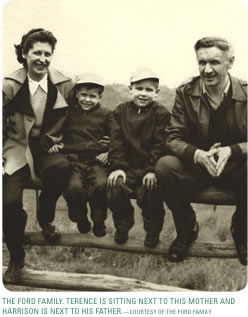
We met with Harrison Ford at his private airport hangar in Santa Monica. There was a low sky and he was not able to fly like he wanted to. The vast space was spotlessly clean and on a small table someone put out juice and muffins. There were several planes belonging to the actor parked in view. There was also a helicopter Ford likes to fly.
There is a description of Indiana Jones in a novel authorized by his creator, George Lucas: The man who led the group was called Indiana Jones. He was muscular in the way one might associate with an athlete not quite beyond his prime. He had several days’ growth of dirty blonde beard and streaks of dark sweat on a face that might once have been handsome in a facile, photogenic fashion.
It was not an accurate view of Harrison Ford when he first played the part in 1980. It comes much closer to him now.
In the past, both George Lucas and Steven Spielberg have described Ford as not being a traditionally handsome leading man-calling him naturalistic or a star in the tradition of a Humphrey Bogart.
Hollywood obviously has a higher standard than the rest of the world when it comes to looks because at almost sixty-six, Harrison Ford not only appears much younger, much healthier, much stronger and much sharper than others within his loosely drawn baby-boomer demographic, he is someone who would get your attention if he’d never become famous. He has the face with which he was born. There has not been any work done by clever doctors. His eyes are clear. His voice and demeanor are not much different than what you pay to see in the theater. He is polite, without being effusive. He is busy, yet doesn’t make you feel rushed when he sits down to chat. There has been a great deal written about his decision to wear an earring-he has a black stud in his left ear. It lends some rakishness.
He is a tad bit less than six feet-and I don’t mean that sports program or action hero bio fiction that places imaginary lifts in the descriptions of those we only see on screen. He translates in life very much like he does in his movies.
California Conversations: Your brother has been taking your picture for us all morning.
Harrison Ford: He’s been on the job.
CC: What is it about a brother that is so special?
HF: You don’t have any choice. You’re stuck with each other from the beginning. I think that’s part of what’s special about them. You either make peace with your brother or not. I enjoy my brother’s company. We’re different, very different choices, different lives. He lives up in Northern California so we don’t see that much of each other, but we were quite close at certain points in our growing up.
CC: Were you guys known as the Ford boys in the neighborhood?
HF: I suppose we were. I don’t really remember being known as the Ford boys, but I suppose we must have been.
CC: Boy Scouts was important to the Ford family.
HF: Well, yeah, I never got any further than star scout myself, but I did work in a Boy Scout camp as an assistant counselor or a counselor, I don’t remember now, back in Wisconsin. I really enjoyed it. I’m really pleased that my brother’s son has taken scouting seriously. I think he’s within one merit badge of being an Eagle Scout.
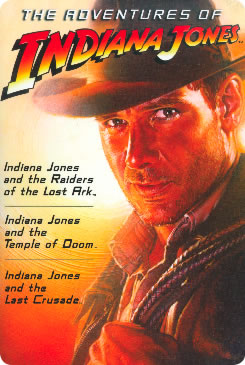
CC: Scouting is not as big as it used to be.
HF: No, I don’t think so.
CC: Were you more a product of the ‘50s or the ‘60s?
HF: I think I was a product of the ‘50s until the ‘60s came along, and then everything changed. I may have been in the front end of it, but I was certainly a part of the cultural revolution of the ‘60s.
Ford made his first movie in 1966. He was twenty-four years old. It would be more than a decade before he could actually live the life of an actor. He has obviously managed to silence those who thought he didn’t have the skills to make it big on the screen, and he has certainly done more than he expected. His films have grossed more than 600 billion dollars worldwide.
CC: It seems like there are certain stars with extraordinary careers, and yet they manage to be scandal-free, and have a private life that is essentially very private.
HF: Well, my theory is that people only have a certain amount of interest in any one person and it’s best to save that interest until you have something worthwhile to bring to their attention. In the baldest possible way, you could say, until you have something to sell. I’ve never had a publicist. I try to stay out of the public view, until I have a movie. Then my rarity has some value at that point.
CC: How do you keep the protective wall and still deal with fans asking for an autograph?
HF: Well, they’re more than fans. In my case, I tend to think of them as customers. Being an actor is like living above the store. You’re always open for business. If your eyes are open, your store is open. Folks often want to engage you, and I don’t really mind. Once you make peace with the reality of fame, you do what you can to service your customers within reasonable limits.
CC: Did you dream of fame when you got into the movie business?
HF: No, no I never did. All I dreamed of was making a living as an actor and not having to do another job. It frankly never occurred to me that I had the opportunity to be famous in the business or be as successful as I was lucky enough to become. I always thought if I got a regular job on a TV series that was sort of the height of my ambition.
CC: 1973 you make American Graffiti...did George Lucas take you to Modesto before or during the filming to see the hometown that inspired him?
HF: No. I had seen Modesto. I had been through Modesto, but I don’t remember if it was before American Graffiti or after. The character I played in American Graffiti was based on...I’ll tell you how it came to be. George Lucas wanted me to get a crew cut so that I looked different than the other kids in American Graffiti. He wanted some distinguishing character element. As it was the late ‘60s...was it 1962? It can’t be 1962, I was still in college.
CC: The story was about where were you in ‘62?
HF: Right. Well, in 1962 I was still in Ripon College...so, in 1973 or so when I made the movie, I didn’t really want to get a crew cut. I thought it was a disadvantage for me if I wanted to get other roles. American Graffiti was a short part, and I had longer hair at the time. In any case, I suggested to George that instead of the short hair that I wear a white cowboy hat. It reminded me of those kids in high school that kind of got stuck on Western Days and find a character for themselves in that context. I thought that it was appropriate. George went along with the white cowboy hat.
CC: When did you realize you had a chance for real stardom?
HF: American Graffiti was successful, and it did bring some opportunities, none of them really significant. Part of the problem or at least part of the deal was that between American Graffiti and Star Wars I was determined to only take better parts in better pictures with an increase in pay. I was still a carpenter at the time. I almost didn’t take the American Graffiti part because the pay was so low.
CC: I think I read you got $500.
HF: Well, that’s what I finally got. They offered me $485, I think.
CC: You negotiated the extra $15?
HF: I did.
CC: Good for you.
HF: (laughs) It made a difference.
CC: You’ve told the story in the past about being in a movie called, Dead Heat on a Merry-go-Round.
HF: Right. I was in the movie. I don’t know if I’ve told many stories about it.
CC: You played a bellhop.
HF: Right.
CC: And someone in the industry said to you that…
HF: Right, yeah, it was the head of the new talent program at Columbia Pictures, a guy who was in charge of managing the careers of four or five guys and about seven or eight girls that were all under contract with Columbia Pictures. He called me into his office the day after I played a bellboy, and told me the story of Tony Curtis who...as he related it to me...delivered a bag of groceries in a movie, and this guy took one look at him and knew Curtis was a movie star. I was a smart ass kid, and I leaned across the desk and said, “I thought you were supposed to think it was a grocery delivery boy.” And that ended our relationship pretty much right there. He threw me out of his office, and a year and a half later he recommended that Columbia drop my contract, which was great with me because I was not happy about the kind of work I was doing. I was getting $150 a week and all the respect that implied. There was a point where I learned a theory of intrinsic value-you’re worth what they pay you.
CC: How many of those other individuals who were with you in that program went on to become successful actors?
HF: A few of them had some measure of success at various times. I don’t think anybody is still in the business that was in the program I went through.
CC: Star Wars changed everything?
HF: It did. I was able to make the kind of choices that mattered to me as an actor.
CC: Big parts and small-small part in Apocalypse Now-you were able to choose a name for your character?
HF: Yeah, I just...Lucas, I guess it was for George Lucas. I did choose a name for the character because the character was nameless, one of two nameless parts I played for Francis Coppola.
CC: The Academy Award nominated, The Conversation, being the other?
HF: The Conversation being the other character who got a name at a certain point, but I don’t remember what it was. When I went to pick up the script for it, it was called “young man.”
CC: That was a great movie, too.
HF: That was an interesting movie. I made it just after American Graffiti. It was important for me at this point to be making these kinds of films.
CC: George Lucas...how close is the friendship?
HF: I think we are friends. We are business associates, you know. We don’t have a close personal relationship. I know his kids and he knows my kids.
CC: You’re not buddies.
HF: No, no, not really. Again, part of it has to do with proximity. George lives up there, and I live down here. We have different lives.
CC: We always read that Tom Selleck was the first choice for Indiana Jones.
HF: Well, that’s quite correct.
CC: That’s true?
HF: Yeah, in fact, he was signed to do the movie, but he had a prior contract, I believe it was with NBC, to do his television series...Magnum.
CC: Were you second choice?
HF: Oh, I might have been third. I have no idea.
CC: Did you have to audition for it?
HF: I didn’t have to actually audition. The first time I heard anything about it relating to me was when I got a call from George saying he was going to send me a script. I read the script for Raiders of the Lost Ark, and I called him up and told him it was great. He said why don’t you go over and meet Steven. I went over to Steven’s house and met him for the first time, and we talked about the script. I might have read for him. Steven knew me from Star Wars and other things, I imagine. We got along very well. The conversation went well, and I think I left with the part.
CC: Do you watch yourself on screen?
HF: I do it all the time.
CC: You’re comfortable with it?
HF: I have to be able to watch myself with a professional point of view. I have to be able to participate in the process when I feel it’s necessary. I watch dailies and if I don’t like something I have in the past asked to do it over...it helps me in the process of the creation of a character and, when the characters are pretty much set, then it’s a question of keeping an eye on what we’re doing.
CC: The first time you saw yourself on the big screen, did you see yourself differently and say, yeah I’ve got a shot at this?
HF: (laughs) No, I saw myself as a bellboy.
CC: (laughs)...some of your movies are such huge movies, spectacular movies…
HF: Some of them.
CC: Do you worry sometimes that the craft of what you’re doing gets lost in the spectacle?
HF: No.
CC: Not at all?
HF: No, I stay focused on the film and how the character relates to the film and what part of the story it’s my job to tell; what is my relationship to this event. I often work closely with the directors and producers. I have script approval. I understand what it is I’m doing. I think you’re probably referring to the old canard of the story being upstaged by special effects. I think that only happens in a really bad movie, when people have their elements out of proportion, out of control. So, I don’t worry about it.
CC: You’re about to have a movie released-Crossing Over with Sean Penn and Ray Liotta…
HF: It’s an ensemble piece.
CC: Controversial subject?
HF: Only if you feel strongly about immigration in any way.
CC: I just saw that after the economy, immigration is the number two issue on the minds of people in California.
HF: Well, I think the film is, or maybe the theme is, controversial, but in fact it is not an effort to be controversial. It is meant to be a balanced glimpse at four or five different stories that intertwine. I play an agent in immigration and customs, an ICE agent, an enforcement agent, which is now part of homeland security and I think the film is a fairly balanced look at a number of different immigrant communities.
CC: Do you get nervous before a film gets released?
HF: No, I don’t get nervous. I’m not nervous. I want the film to be as good as it can be, so I am very interested in how it is coming together.
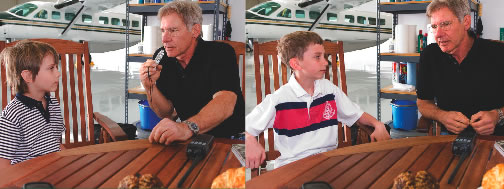
Harrison Ford has five children. He is protective of their privacy, probably not an easy task for one of the most famous men in the world.
California Conversations brought two young reporters with us to the Santa Monica Airport when we met with Ford. They were eleven and eight-and-a-half. We asked Ford if he would mind taking the time to let them ask questions. There wasn’t any early warning. Ford doesn’t surround himself with publicists. He handled it as though they were just as important as the writers from the San Francisco Chronicle or the Los Angeles Times.
At one point he held the recorder to answer the questions. He liked them enough not to let them be overly-impressed with him.
CC: Do you have a star on Hollywood Boulevard?
HF: Yeah, I do actually. But there’s a funny story about it. There are two stars on Hollywood Boulevard with the name Harrison Ford on them. One of them is for an old silent screen actor who had the same name. You know, he was in movies before they had sound, and his name was Harrison Ford, too. His star is out in front of a famous restaurant, and mine is in front of the Kodak Theater.
CC: What is your favorite movie you have been in and why?
HF: I don’t really have a favorite movie. I have five kids...it’s sort of like asking which is my favorite kid, you know. There’s no answer to that. They’re all different. They are special for different reasons.
CC: If Indiana Jones and Han Solo met, would they be best friends?
HF: I don’t think so. Indiana Jones is a professor and an archeologist. Han Solo is a space pirate, so I don’t think they’d have very much in common. I don’t think they’d be friends.
CC: If you could be in any movie ever made, what would it be?
HF: If I could be in a movie, what would it be? Do you mean if I was to dream up my favorite idea of a movie that I haven’t been in yet, what would it be? I don’t know. That’s really hard because I always start when somebody sends me a script or when I get an idea for a script and then we see whether or not that turns out to be a good idea. So, I don’t know.
CC: Can you tell when a movie is going to be good?
HF: I wish I could.
CC: Who was your favorite co-star in a movie?
HF: I don’t really have a favorite co-star. Again, it’s very hard to say. Each person is different. Each movie is different.
CC: How do you choose what kind of movie you’ll do?
HF: I look for a combination of elements. I look for a good story. I look for a character that’s different from what I’ve lately done. I look for good directors to work with.
CC: You can choose any director now?
HF: No. It doesn’t always happen that way. I mean, I don’t choose a director unless I develop the script, which in some cases I do...or it comes to me without a director attached and I ask to participate in the choice of a director. But, many times a project will come with a director attached. Of course, I’m interested in who that director is and I’ll do my research if I’m not familiar with his work, and we’ll see what the personality mix is. I’ll meet somebody and talk to them about the movie.
CC: You’ve worked with so many great directors, do you ever stop and look at an actor like Clint Eastwood, who’s become, at 78, one of our most distinguished directors, and think you’ll get into directing yourself?
HF: I don’t know, maybe when I’m Clint’s age. Right now, I like the job I’ve got. That said, I don’t really want to direct because it takes too long, it’s too hard, and it doesn’t pay very well. Those are all still very good reasons not to do it.
Ford said it would be ‘terribly arrogant’ to say the newest ‘Indiana Jones’ would be a huge hit, although he did say with hinted humor that he expected it would make its money back. The reviews have been mostly good. Almost every writer has mentioned how he is still able to pull off the physically demanding role. The financial returns have been blockbuster numbers.
CC: Flying has become one of your favorite activities?
HF: Yeah, I think it has the importance of another life. I didn’t start flying until I was about 52 or 53. I didn’t know whether or not I’d actually be capable of learning something as complex as flying. I became intrigued by it. It has changed my life completely. It’s given me an alternative identity.

CC: What was your first flying experience?
HF: Well, I had a couple of lessons in a Piper Tripacer when I was in college, but I think it was about $11 an hour for the airplane rental and the instructor. I ran out of money fast and couldn’t afford it. So, years later when I determined that I was going to start flying again, I bought a Cessna 172. I kept that. I was working a lot at the time and taking my lessons. I was flying out of Jackson, Wyoming. I got my license in a Cessna 206.
CC: Today, you have quite a collection of planes.
HR: I do.
CC: Do you have any favorites?
HR: No. I think each plane is very different, suitable for different purposes and I enjoy flying them all.
CC: It looks like you run the gamut, from a bush airplane to the DeHaviland. I saw a tail dragger. Are you getting some seat of the pants flying experience?
HF: Yeah, I have three tail draggers, actually. Then there’s the DeHaviland Beaver and the Waco bi-plane, a 1929 Waco bi-plane.
CC: It’s an incredible plane...a lot of options.
HF: I enjoy backcountry flying. We have a trip that a bunch of us take. It started out with five or six, now it’s about fifteen airplanes. The guys get together and we spend four or five days up in the Frank Church wilderness in northern Idaho. We camp at one place, and then each day we set out to do a bunch of different little mountain strips.
CC: These are like dirt strips?
HF: Some of them are grass and nicely maintained, but most of them are kind of rough, dirt strips.
CC: I also read where you did some rescues.
HF: I had my helicopter in my backyard in Jackson, Wyoming and the Teton County Search and Rescue, which was operated under the authority of the Sheriff of Teton County, didn’t have a helicopter available on a regular basis for rescues. I volunteered my helicopter and my time as a pilot and I was lucky enough to be with 250 other people participating in a rescue. I mean the number of other people involved and the training they do fulltime in search and rescue is remarkable. They devote a lot of their life to this endeavor and then I come along and pick somebody up and they’re on Good Morning America the next day. Suddenly I’m the only, you know, the only hero in sight, which is, of course, complete rubbish. I’m lucky enough to stumble across somebody or be available to give somebody a ride to the hospital. That’s basically what it amounts to.
CC: It’s nice of you to state it that way.
HF: It’s been an honor. It’s a pleasure to be able to help people, and it’s also interesting to do the technical flying that’s sometimes involved, although I haven’t had the helicopter up in Wyoming for some period of time...this was mainly during the period when I was living there fulltime, and that’s not possible at the moment.
CC: You’re also active with the Experimental Aircraft Association.
HF: Yeah, I’m the chairman of the Young Eagles, which I think is a very important program, both to give kids a sense of something in their lives that they might really enjoy doing, either recreationally or as a vocation, and I think it’s also important that we put a face on general aviation for their parents. We’re under enormous threat. Our small airports are under threat from real estate interests. Frankly, municipalities are interested in a quick fix for their tax base. I think very few people have a complete and true understanding of the economic advantages of small airports and the safety factors involved with having small airports up and running. There is such a strong constituency in response to noise and perceived danger that is largely uninformed and misguided by those, excuse me for saying this, special interests that are competing for the ground these airports are on. So, I think it’s great to be able to expose kids to an opportunity which is exciting and interesting and which engages them in the educational process. Certainly, there’s a lot of freedom involved, but there’s a great responsibility, too, and if kids see that and see people taking both the freedom and the responsibilities seriously, I think it’s a great example for them.
CC: Do you like to fly at night, or during the day, any preference?
HF: When I’m traveling I fly at night all the time. I don’t really have a preference, but I enjoy flying at night.
CC: Do any of your children like to fly?
HF: Not yet.
CC: You would think some of them might catch the bug. It’s contagious.
HF: It is contagious. It also takes a lot of time, and it takes a lot of mental energy. It’s a real commitment. My older kids have growing families, and my middle set of kids who are 21 and 17, a boy and a girl, are really interested in other things. I have a 7-year-old at home now, who I think may someday get the bug, but that’s a bit down the line for him.
CC: Does Calista like to fly with you?
HF: She does. She was a nervous flyer when I first started flying her. She was a nervous commercial passenger. She very quickly learned to love flying in a small airplane.
CC: There’s nothing like it.
HF: Yeah. That’s true.
We chatted a while longer with Harrison and his brother. The weather did not cooperate enough for anyone to go flying. It was quiet. There was no one else around, a sense of solitude, and you get the idea that he’s not unlike millions of others who like to putter around in their garage by themselves-he’s just got a more interesting garage than most.
Style & Substance
Robyn Black
Published Issue: Summer 2008

Assemblymember Patty Berg saw a lot of the world before she was elected to represent the first Assembly District. She has lived in Humboldt County, at the top of our state, for more than thirty years, but she was adventurous long before then and obviously wanted to see what life had to offer. She has worked in a New York ad agency and the California vineyards. There was also a time when she was Professor Patty Berg in the psychology and sociology departments of Humboldt State University. However, it was her work as a medical and psychiatric social worker that brought her to the forefront of public service.
Patty was one of the first to discover that seniors were in trouble. She decided to do something about it and became the founding executive director of the Area Agency on Aging serving Humboldt and Del Norte counties.
Patty gained a national reputation with her testimony before the United States Congress, and policy from her own hands led to developing a comprehensive system of services for older adults in California. The resulting legislation prompted one of her predecessors in the Legislature to name her the Outstanding Woman in the County.
Her expertise has not gone unrecognized by her peers. She is the longest serving chair during this term-limited era for the Assembly Committee on Aging and Long Term Care.
There are seniors all over California who are able to live safely in their homes because Patty Berg was willing to lead the charge against a system that forced our aging parents into nursing home care.
Of course, Patty is also known for her particular kindnesses.
Perhaps the best example of what separates Patty Berg from most of us was a committee hearing in which a young woman was willing to provide testimony for a bill by giving details of a terrible illness. Patty Berg left the dais and stood behind the young woman with her hands on her shoulders to let her know she was not alone.
Although the survey is not official, few dispute the findings that Patty Berg is also recognized as the best-dressed person in the Capitol.
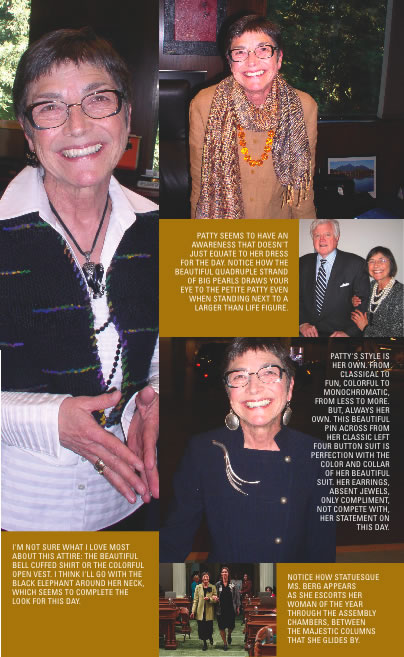
December 12, 2005
CDF Firefighters, representing the men and women of CAL FIRE, the largest fire department west of the Mississippi, declared Assemblymember Patty Berg as their Legislator of the Year.
“Patty Berg negotiated the legislation that allows local government and state firefighters to work together to protect otherwise endangered communities,” said Bob Wolf, President of CDF Firefighters. “She directed the discussions with a professionalism that allowed everyone at the table to draft a bill that is both cost effective and critical to the overall safety of Californians...and, of course, I don’t mind saying that we love Patty.”
February 15, 2007
Citing her commitment to the environment, Patty Berg is appointed to the California State Coastal Conservancy. “Of course it is an honor to be appointed,” Berg stated. “I have a personal and legislative record for working hard to ensure that our beautiful coastline is kept open, clean and available for all Californians.”
June 26, 2007
Disaster relief legislation by Assemblymember Patty Berg alleviates red tape during disasters. Berg was quoted as saying, “The horrors experienced during Hurricane Katrina relief effort will not happen in California, as we make it easier for medical professionals, dentists, veterinarians, pharmacists, the funeral home industry and those who provide critical services in a crisis to have easier access to those in need of their services.
Ukiah Daily Journal, December 10, 2007
Assemblymember Patty Berg helps shake $22 million from federal grant money to a program that will bring telemedicine to rural counties. Berg’s efforts mean that the federal grant will expand broadband networks for telemedicine and connect medical experts to clinics in some of the most remote regions of California.
January 2008
Assemblymember Patty Berg has been in the forefront of legislation that will allow terminally ill Californians the right to die with dignity. Her legislation is modeled after Oregon’s Death with Dignity Act, which was supported as the right of personal choice for terminally ill patients with a 6 to 3 vote in an arena no less than the United States Supreme Court.
Ralph Heim’s: A Moment in Time
Photography by Ralph Heim
Published Issue: Summer 2008

Following a week of photographing along the John Muir Trail, spending a few moments along a High Sierra stream lined with wildflowers provides an opportunity to reflect on the simple beauty that abounds in our Natural World.
Graduating Class of 2008
Juan Fernandez
Published Issue: Summer 2008

It happens every year around this time--high school graduations. This year is our turn and the turn of many of our close friends. A few weeks ago, we sat in the stands, fighting back tears of joy, sadness, pride, and happiness. We listened to the speeches from school administrators, valedictorians, and others. The speeches were filled with a sense of melancholy but also with hope, enthusiasm, and optimism for the future. The ceremony culminated for my wife and I when our child’s name was read over the public announcement system and we saw our baby walk onto the stage to receive a diploma. The four years of high school have gone by very quickly, too quickly I believe. The graduation from high school and the preparation to go away to college represents a life-changing event in the lives of the graduates and us, their parents. These young men and women will leave their homes for college to face a world without the comfort, protection, structure and love of home. They will be entering a new world filled with exciting challenges, strong temptations, endless opportunities, and unseen dangers. We wish them all well.
The members of the graduating class of 2008 were born during a very important time in our history. During 1989 and 1990, we saw the end of the Soviet dominance over Eastern Europe, the release of Nelson Mandela, the Iraqi invasion of Kuwait, the resignation of Margaret Thatcher. Who can forget the images of those young Germans climbing atop the Berlin Wall, destroying the wall by chipping away at it with hammers; those brave Chinese students in Tiananmen Square building the Goddess of Democracy while the courageous, unknown “tank man” stood before a line of tanks; the exuberant Mandela, with a wide smile and tight fist in the air following his release from prison. That was the time in history into which the graduating class of 2008 was born, a world with a sense of hope for a peaceful and prosperous future.
The roughly 18 years since then have been filled with first steps, sleepless nights, baptisms, first days of school, discussions of bad grades and celebrations of good grades. We attended, videotaped, and coached countless baseball, volleyball, basketball, soccer games. We attended Christmas pageants, birthday parties, school field trips. We worried about high fevers, school dances, broken arms, and broken hearts, and stayed up late waiting for their arrival from dances and parties. We fought and argued over clothes, unfinished chores, choice of music, instant messaging, allowances, unfair curfews, forgotten school projects, boyfriends and girlfriends, texting, MySpace, and homework. But most of all, the last 18 precious years have been filled with unforgettable moments of pride and joy, moments and emotions that words cannot come close to describe.
We hope and pray the time spent teaching our children about personal responsibility, the importance of building character and making wise choices, the need to cultivate good values and healthy habits, and the honor in doing something well have prepared them for the freedom and unavoidable temptations that await them in just a few weeks. They will have a freedom that up till now they have only imagined. They will enjoy the freedom to choose to sleep in late rather than attend class, to eat fast food rather than a healthy, well-balanced meal, to go to a party rather than study for a test, and freedom to surrender to seductive and potentially dangerous adventures.
In a few weeks, as they leave home for college, they will leave behind a deafening silence in our lives, a large void that parents and siblings will find a way to fill. Things will never be the same. Slowly home for them will be somewhere else. They will return to us from time to time, but each time they will return a little different. They will develop new interests and acquire new tastes. It is inevitable. We will help them pack, drive them to their new school, and give them some last-minute advice. We will return home a little sad and fearful, but also happy, enthusiastic, and hopeful that we have accomplished our most important task, to send a decent, self-sufficient, compassionate, virtuous young man or woman into the world.
Californians & Their Dogs
Amy Brown
Published Issue: Winter 2008

Travis was two months shy of his eighth birthday when he died in my arms after being hit by a farming truck in Clarksburg, California.
The beautiful autumn morning started off in my friend’s 22-acre vineyard where Travis and his sister Sunny trotted off-leash through the rows of orange leaved vines. Like most days out at the vineyard, I enjoyed watching my two “kids” chase rabbits, each other, and their tails. They loved swimming in the creek beds muddying their underbellies. Their energy was boundless, their happiness unabashed. And, watching them, I felt utter peace, their happiness directly affecting my own.
Travis caught sight of a herd of goats grazing on the side of the levee road facing the river. These goats were apparently rented by the Reclamation Board to curb overgrowth. To this day, I do not know how Travis managed to escape my attention, but he did. I also don’t know what was going on in Travis’ hyperactive brain when he darted for the goats. What was he going to do once he reached them?
He never did. He was hit by a truck and left motionless. As I saw the driver pull Travis off of the road, I sprinted the 600 yards to be by his side. I instantly knew as I made my way through the vineyards up to the levee road, that I was running to say good-bye. When I approached him, I put my head on his belly as he struggled to breathe.
“You were a good dog,” I told him, as I caressed his hind legs. “I love you, buddy.” With that, my dear pet, friend, family member, running partner, and unconditionally loving dog let out an exhaustive breath and left me for good.
I buried Travis in the vineyard. I buried him underneath a walnut tree.
It has been months now and I still cry over Travis everyday. I remember the way he chased his tail, his incessant barking to get my attention, his high flying Frisbee catching capabilities, his need to chase every cat, squirrel and bird within his line of sight, and his forgiving nature seconds after I swatted him for taking food out of the trash can. People who don’t understand thought I was crazy for spending seven grand on his reconstructive surgery on both knees. I remember my husband hauling him up and down the stairs every night during his recovery.
Why is it that the loss of a dog can leave me paralyzed with sadness? Why was my pain over losing Travis felt more than any loss over the end of a relationship or even the death of a loved one? I felt puzzled by my grief.
This whole experience got me thinking about dogs and their owners and the bond between them.
Why is it that dog is man’s best friend? The answer, or certainly the search for an answer, led me to Desalene Jones.
Desalene Jones is the founder and owner of a Sacramento-based dog daycare called Cha Cha’s. Think of it as a children’s daycare minus the kids. On any given day, Desalene can have up to 40 dogs in a 2,000 square foot commercial “house” located in East Sacramento. And before you begin to imagine what this place is like, stop, because what this business has evolved into is so much more than what you can picture.
Desalene has turned the love that owners have for their dogs into a successful full-service daycare.
Do people really spend the time and capital it takes to make sure their dogs are getting the most out of their day? Apparently they do, and Desalene has found a way to provide this service to the busy, guilt-ridden pet owner who wants to give something back to their dogs.
The Woman
Behind Cha Cha’s
Desalene Jones grew up in Chicago surrounded by dogs. Her family showed Doberman Pinchers. When asked what that entailed, Desalene let out a long sigh and explained the dogs have to be perfect, and that meant, “No white spots on their fur; their tails had to be firm; they had to be well trained; they had to be able to pose and walk around a ring; they had to be okay with being touched and caressed; and they couldn’t be too big or too small.”
“And what if they weren’t perfect?” I asked.
Desalene simply said, “They weren’t kept.”
Shortly after her parents divorced, Desalene and her mother began collecting strays. They owned several dogs and numerous cats.
“When I was in high school, I was a nerdy kid. It was vital that I have some sort of fashion sense, but I always seemed to get cat hair all over me. That certainly was the opposite of cool.”
She limited her time with cats, not only because of their shedding, but also for their independence and lack of interest. That’s not to say she didn’t like cats. She just felt a calling to dogs, that they needed her in some way.
Desalene moved to California for the weather. “I was tired of my nose hair freezing.” She was in her late twenties and wanted to settle some place warm. She packed her bags, loaded the car and drove west. She settled on San Diego. It was a good idea until she realized it was out of her price range.
“Nine years ago, Sacramento was still affordable.”
The Capital City is where Desalene ended up, with nothing but what was in her car. No plans, no friends, and certainly no job.
Her first job was through a temp agency. She worked for a communications company. Desalene thought that getting a dog and bringing him to work might improve her spirit, not to mention her productivity.
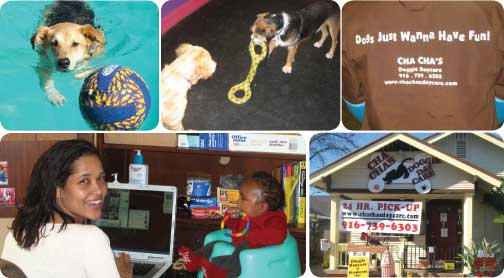
She developed a “Bring-Your-Dog-to-Work” pilot program and presented it to corporate management. The program included research she had done which indicated that people who are able to bring their dogs to work have less stress and get more accomplished.
“I printed out articles on worker retention, recruitment and employee satisfaction and presented it to the higher-ups at the company.”
The answer was, “No.” They were concerned with liability.
After the setback, Desalene aimed her energies toward being with dogs. She would rush home from work to a volunteer job at the Society for the Prevention of Cruelty to Animals (SPCA).
“When I was with the dogs at the shelter, I felt grounded, like I was in my element. I almost didn’t want to go back to work the next day, but I needed a paycheck.”
Desalene began working with aggressive dogs at the shelter. She would even go so far as to take them home with her. “I worked with the trainers at the SPCA to learn the proper way to break the dogs’ bad behaviors so they could eventually be adopted.”
She essentially saved these dogs from being euthanized. Most of the dogs that Desalene would bring home were pit bulls, and she does admit she had some problems. “I got bit a few times, but I have been bitten by Yorkies and cats too. Just because most of the aggressive dogs were pit bulls doesn’t mean they are all bad. They too deserve a chance.”
As Desalene’s reputation as a dog lover grew, her co-workers at the communications company asked her to dog-sit on occasion. A colleague asked Desalene to take her pit bull for a little while so she could find another place to live.
Months went by and the co-worker never came to retrieve the dog. “The company was a big place, so I never ran into her. I would send her e-mails, but after a while I stopped asking if she wanted her dog back. I became attached.”
Several months later, the woman and her husband asked for the dog. Desalene reluctantly returned the dog. Two months later, the woman and her husband, who were planning to have a baby, were fighting over who was going to scoop the dog’s poop. The issue was never settled. They had the dog euthanized.
The dog’s name was Cha Cha.
Cha Cha’s Angels-
The Beginning
Work began getting in the way of what Desalene really wanted to do.
“One day I just quit my job. I obviously wouldn’t do the same thing today because of the risks involved now-my family, my new baby, but I was in my twenties, and if I was going to start my own business caring for dogs, it was then or never.”
Desalene visited the local library and found a book on what it would take to start a pet sitting business. Without much money, she visited Office Depot and bought a pack of door hangers and downloaded a picture from the Internet of a dog and cat with a halo over their heads.
Cha Cha’s Angels was born.
Desalene started receiving phone calls and word of mouth references. Her business began to grow. She would walk dogs, feed cats, and change rodents’ cages.
“I only did this for a year for several reasons. For one, I felt that my limited time at my clients’ houses wasn’t producing the results they were paying for. I was there for 45 minutes out of the day, and these animals were left alone for another 6 to 7 hours. It didn’t feel right. Also, while I can tame a pit bull, I’m not comfortable with rodents.”
“When I had to pet-sit rodents, I needed to stick my hand in their cages and since I was afraid, they were afraid. I was hoping that my clients didn’t have a nanny cam, because I was doing such a terrible job.” She also believed that her time spent with her clients’ cats went ignored. “Cats were too independent for my care. I would walk in and check on them and feed them. I’d start to pet them, and they would be off doing their own thing.”
That’s when Desalene realized her calling-to care for dogs only.
“That is when the dog daycare concept came to me. I needed to care for them all day. They needed to come to me.” She then sent letters to the clients she already had and told them that she would be taking dogs into her home during the day.
Desalene changed her business’ name to simply, Cha Cha’s because of marketing reasons. She began taking in dogs of all ages, sizes, and breeds. As her business grew, so did her need to find an actual place to take care of the dogs. Her own home wasn’t really working out that well.
How To-Starting
the Business
With very little money and no resources, Desalene turned to the trusty Internet for some much needed guidance.
“Google is responsible for my success. I didn’t know where to begin so I started with a search that included money, business, women.”
Desalene located the Small Business Administration (SBA) website. According to the Google search engine, the mission of the Small Business Administration (SBA) is “to maintain and strengthen the Nation’s economy by aiding, counseling, assisting, and protecting the interests of small businesses.”
It was at this site where Desalene found SCORE, which counsels America’s small businesses. Encouraged by the information, she visited the Sacramento SCORE office and discussed her business idea with a team of volunteer counselors. They encouraged her to follow the idea.
SCORE helped calculate her financial needs and develop a long-range strategic plan. The organization also hooked her up with a lawyer to discuss her options regarding zoning issues for a Cha Cha’s location. SCORE’s seminars cost anywhere from $0 to $30, a price definitely more reasonable than what she was finding.
“I was searching out certain grant programs and most of the ones I found were from some shyster who wanted me to pay a bunch of money to listen to some guy talk about how to go after grants.”
SCORE helped her hook up with Count Me In, which is a non-profit provider of micro loans and business education for women entrepreneurs. Count Me In provides micro loans from $500 to $10,000 to women who are starting or growing their businesses.
Desalene flew to New York, where she presented her ideas to a panel. They quickly saw the potential in Desalene’s plan and loaned her the start-up money. The owner of Count Me In contacted Desalene shortly after she was awarded the micro loan and asked if she would like to enter the organization’s small business competition. Desalene jumped at the chance to compete for a larger loan, and she, along with five other women, was awarded $40,000.
Was Desalene an entrepreneur first or dog lover first, I ask?
“Being an entrepreneur is something you are born with,” she says with a grin. “You either have it or you don’t. It’s inherent. It takes a specific personality. I honestly believe this to be true.”
Desalene took me to Cha Cha’s for a guided tour. “Prepare yourself to be slobbered on,” she warned.
From the outside, Cha Cha’s looks like a regular house in between antique shops and, incidentally, the grooming shop where she used to work. The facility smells clean, like the whole place was just scrubbed down in baby shampoo, and the minute we approached, the barking began.
Curious eyes look over the counter at me, all wanting a sniff of the visitor. As we pushed our way past the door, the tail-wagging excitement began.
There were labs, boxers, pugs, great danes and bulldogs running in circles around me. When one dog tried jumping on me, Desalene put her hand up, and in her powerfully low and commanding voice, told Max, “No.”
Max obeyed. In fact, all of the dogs obey Desalene. She has a power over her clients that not only commands respect but also portrays a canine order. Desalene is clearly the alpha in this group, and they all seem to love her.
I also had the pleasure of meeting her kind staff. They all wear scrubs and tennis shoes and are on their knees playing with their guests as much as they are walking around picking up droppings in the backyard.
When I asked about new clients and how they are chosen, Desalene tells me about the interview process. She brings a new dog in the waiting room area, while all other dogs are kept outside. She allows the new dog to become familiar with their surroundings by sniffing the entire perimeter of the place. Then, she brings in one dog from outside to see how the new dog reacts. If they become aggressive in any way, she doesn’t accept them.

“Do you turn a lot of dogs away?” I asked.
“Not often, but I do find myself saying no to an overly aggressive dog occasionally.”
Desalene also evaluates the dog owner. “I find that if the human is off, their dog is probably off a little too.”
Desalene often times just trusts her gut in situations such as these. And those instincts have led her to not only have a productive business where dogs are free to run and play, but have also helped her to realize her continued dream of helping others.
What’s Next for
Desalene and Cha Cha’s
Desalene admits that her priorities have shifted slightly with the birth of her baby boy, Justice, but she still plans on opening up a second Cha Cha’s location in the near future.
She also has an urge to help other women start their own business. Desalene admits it’s scary. Her biggest competitor is PetSmart, and they are opening a dog daycare with millions in start-up capital.
How can small business entrepreneurs like her compete with that?
“Consumers have a comfort level with a big corporate business such as PetSmart or Wal-Mart, but I offer a more personal touch.” She tries shopping at “mom and pop” outlets to support small businesses.
Desalene plans on helping other women by possibly opening up pseudo-franchises of Cha Cha’s in an attempt to help them get established. “I will then hand over the business to them so they can own and run it.”
The Purity of Dogs
Desalene feels that her success is not necessarily financially driven; it really rests on happiness and doing what she loves.
“Dogs are pure at heart. They offer something humans cannot and that is unconditional love. Whoever thinks they don’t need it is incorrect.”
She describes a dog’s love for his owner as absolute and unrestricted. They don’t hold grudges. They don’t judge or get mad because you didn’t take them for a walk, and they wait patiently until you get home where they shower you with shameless affection.
After spending time with Desalene, I was able to sleep a little more soundly knowing my feelings toward the loss of my dog are felt by many. I dream in bliss of the many dogs frolicking around the grounds of Cha Cha’s.
Food Network’s Rascal Star
Robyn Black
Published Issue: Winter 2008
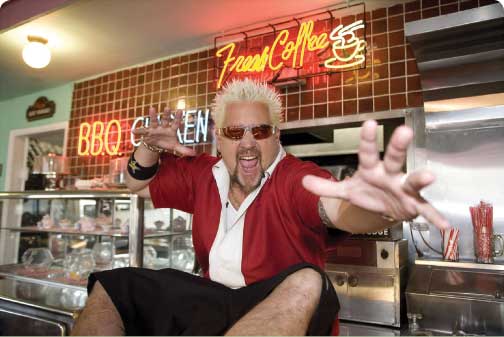
All apologies to the melancholic Jacques, Shakespeare’s life is a stage soliloquist in ‘As You Like It.’ Nobody understands a stage better or takes it with more enjoyable ferocity than the wild boy phenomenon of the Food Network, Guy Fieri.
Of course, all apologies also go to Guy for anyone mentioning Shakespeare in a story about him. It isn’t that Guy isn’t bright and worldly enough for the allusion; it is because he is virtually without guile. Jacques would get a good meal and a patient listen at one of Guy’s restaurants. He would eat too well and laugh too much to leave in a bad mood. Guy is a delight, a kid from next door who was brought up to understand the importance of working hard, and over the years melded an impossible work ethic with a passion for food.
Like most Californians, or at least those who don’t live in the towns where he already owned and ran successful restaurants, California Conversations first became aware of Guy when he overwhelmed the competition only by being himself in a contest to become the Next Food Network Star. Even one of his competitors said when she met him she thought only of a Billy Idol punk rocker. When it was over, she wanted him to walk her down the aisle.
In the two years since his victory, Guy has become the host of two shows-Diners, Drive-ins and Dives, and Guy’s Big Bite-and is the burgeoning network’s highest rated star.
We saw him in person, unexpectedly, for the first time when he boarded a crowded airplane. His wildly bleached blonde hair was spiked, he likes garish jewelry, his tattoos were visible beyond his colorful shirt and his hip hop shorts. He doesn’t shock. He does get your attention. He looked at a very staid businessman in a pinstripe suit, and said, “Hey bud, I’ve looked at everyone on this plane, and you are the person I want to sit next to.”
The businessman was taken aback. Like the rest of us sitting nearby, he was quickly charmed. Guy likes to laugh and brings everyone within reach into his light.
I met with Guy at one of his restaurants. It is a fun place for those who can’t decide if they want barbecue or sushi.
California Conversations: Tell us about the hair style.
Guy Fieri: I’ve had hair down the middle of my back. I’ve had the mullet. People have asked me, “Do you perm your hair?” I was in Vegas and a friend of mine shaved his head and wanted me to do the same thing. I called a friend and she said if you cut your hair and don’t let me cut it, I’ll never speak to you again. I flew home the next day. She said I’m bleaching it. I said cool. (laughs) I’ve got long, curly black hair one day and I go walking into the restaurant with bleached blonde spiky hair the next.
CC: How long ago was that?
GF: Seven years.
CC: You’ve kept the style since then?
GF: Oh no. I’ve been super short. I’ve been black. I’ve been burgundy. I’ve been all different colors. My wife likes my hair black, so I dyed it black for Christmas. (shrugs) I don’t want it to be all that I am. It’s like this thing with the jewelry. I always loved jewelry. My parents sold belt buckles. I always had these nice belt buckles when I was a kid.
CC: Does the look play well everywhere in the country?
GF: I’m just going by the beat of my own drum.
CC: I hate to make my first question about food a tough one, but I can remember when growing up there was no such thing as epidemic childhood obesity.
GF: The availability of food is far greater than it’s ever been. You used to only be able to get certain items at certain times of the year. We are in the land of excess. We have to be contemporary to get a handle on the fundamental issue that just because Coca-Cola is available, doesn’t mean you should drink it every day. I call it the food movement. Not slow food or fast food or any of that. I’m trying to empower children to learn how to cook. If we can teach a hungry kid how to make a peanut butter and jelly sandwich they are empowered to understand the direct correlation to an end result.
Diners, Drive-Ins and Dives takes Guy everywhere in the country. It is a phenomenally successful program for the Food Network.
CC: Diners, Drive-ins and Dives?
GF: It is hysterical.
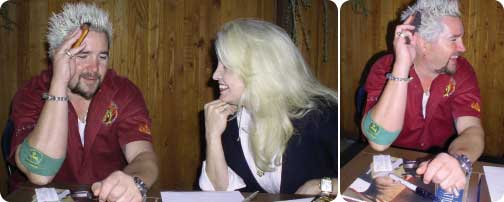
CC: Do you just show up?
GF: We have an expectation of recipes. I gotta know what’s going on because I have to be able to highlight them. We shoot for about nine hours in a day. I love the show. It highlights America. You talk to these people, and you learn about them betting it all on the red.
CC: Have you followed up with people on the show to ask if it’s changed their business?
GF: Yes. Some of the letters will bring you to tears.
CC: Is the food always good?
GF: Incredibly, to the item. But, if it’s not good, I won’t shoot it. I’d never embarrass anyone...I ate a hamburger with peanut butter on it...I don’t like that. It’s funny, because it’s unique. It wasn’t the drive-in’s foundational item. (laughs) It’s not like we’re at the home of Mom’s Meat Loaf saying, Gee, Mom’s a terrible cook. That’s just not my nature. Also, there’s good in everything. (still laughing) I had a lady jump me about a place in San Pedro, California. She said I can’t believe you told me to go there. She said I had the hamburger and it wasn’t incredible. I said if I’m correct, we focused on the waffles. (laughing and shaking his head) She said I don’t like waffles.
CC: Do you still remember the fried chicken they dipped into a vinegary barbecue sauce?
GF: It was a place called the Barbecue King on Willamette Avenue in Charlotte, North Carolina. Don’t get me started...the jowls tingle…
CC: I wanted to be there after I saw your show.
GF: There are just some places that make you go, “Awww.”
It is not immediately natural that a food network would become successful. They have managed to create a grouping of stars that are as recognizable for their personalities as they are for their recipes.
CC: Is there competition between the stars on the Food Network?
GF: We’re rarely there at the same time. We had holiday shows together, but you don’t walk down the hallway and say Hey Rachael, what’s up? I was there when Emeril was shooting the other day and didn’t see him at all.
CC: Bobby Flay?
GF: Bobby’s awesome.
CC: Are they all great chefs?
GF: The only time I get defensive is when someone says to me, well, someone is not a chef. Says who? My factor is this...first, do you cook? Yes. Do people eat it? Yes. Do they pay you to do it? Yes. Then I call you a chef.
Guy stops to sign an autograph. He compliments the employee who brings the enthusiastic fan to our table by saying nothing matters more than taking care of the customers. The logic is simple to him.
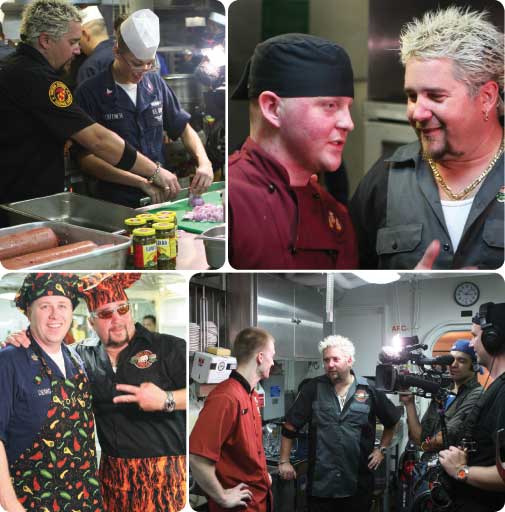
CC: Do you have a favorite recipe?
GF: What time is it and what day is it? No, there’s not a favorite recipe. There is a quest for the recipe.
CC: How do you come up with your recipes?
GF: A lot of it comes from inspiration. I’ll eat something and think, “What can I do with that? It’s just having all of your senses open; taste, smell, vision, touch. I’ll open the fridge and start with a protein, then spices and pasta...next thing you know I have an Italian, Mexican and Asian creation.
CC: How did you come up with fried bologna?
GF: I like to use a one-liner that if it’s funky, we’ll find it...I go to these barbecue competitions and there are thousands of people there. It’s great. I went to a team and I tasted their food. It was great, and I said, “Is this baloney?” They said it’s bah-low-nah...(laughs)...it’s the cultural exchange...I got them to try sushi for the first time.
CC: How do you make different ideas work in a restaurant?
GF: You’ve got to have water flowing through the pond. If I can’t turn the product theoretically in 48 hours, I’m probably not going to do it. Now, the sushi we want to have it day-in, day-out. It’s kind of like the survival of the fittest.
CC: Winning the Next Food Network Star must have changed things?
GF: The phone started ringing off the hook. Hey, they wanted to know, can you do an event in Chicago? Yeah, I’ll do that...in Philadelphia, yeah, San Francisco, New York, yeah, yeah, yeah. Then the Network says we need five more shows...thirteen shows...twenty-six shows. My whole year was gone. It was the craziest thing I’d ever seen. Finally, I said these 5 days are available to do Food Network stuff. These 10 are not. We tried capturing a tidal wave.
CC: So, five days for the Food Network; are the ten days at home?
GF: Unfortunately, it becomes negotiable.
CC: Does it amaze you that food is your life?
GF: Food has such an emotional context with people. Everybody loves to eat. They think about it. They dream about it. They want it. They crave it. What else do I possess that has contact with every single person?
CC: We’re talking about getting people turned on to great food, but you’ve also been quoted as saying Spam rocks.
GF: Food rocks. I don’t care what it is.
CC: Does Spam rock?
GF: It does in its own way...the reality is you can make a dish where you take seasoned rice, sushi rice, and grilled Spam or sautéed Spam wrapped in seaweed. It is outstanding.
CC: What’s it called?
GF: You’ll spell it wrong every time, but it is awesome. Look, the thing is I don’t have Spam everyday for dinner, and I probably don’t have any on my shelf...well, hey, I might have some on my shelf at home. Everything to me is great. I don’t care if it is a potato chip. Give me a thick cut. If it is a hot dog, then make it a Nathan’s, you know. What I don’t like is when people cheat. The thing that upsets me about food is when I see food disrespected.
CC: Like how is food disrespected?
GF: Micro-waved, frozen, processed when it doesn’t need to be. A steak is a wonderful piece of meat...a little bit of salt, a little bit of pepper on the right piece of meat is unbelievable. It is crazy how I still see green beans being boiled to the point where they’re green mush.
CC: Did you ever think television and food would be synonymous?
GF: The television part was never something I thought about, but every single meal I eat is important...and not because I’m trying to be healthy, but because eating is an experience. I’ve eaten sushi since I was ten. I look at people and say don’t you wish you tried this ten years ago-ten years of sushi.
CC: Alton Brown had a quote from Julia Child a couple weeks ago. She said she never cared about anything until she learned to cook.
GF: I explain to people that when you live your life in black and white, you can turn it to color.
CC: Why does Sonoma County, California like you so much? They were completely behind you when you were on the Next Food Network Star.
GF: That’s really funny. That actually gives me goosebumps.
CC: They’re promoting you as a reason to visit Sonoma.
GF: I’ll tell you, my business partner and I had a choice to open restaurants anywhere in the country. I said I’d like to go to Sonoma County. Sonoma where? I said, you know, wine country. He said it is too expensive up there. We opened our first restaurant, two young guys, we were 26 years old, no money, we had to beg, borrow, and steal to make it happen. And we did it.
CC: So had you never won Next Food Network Star, you’d still be good?
GF: (laughs) I didn’t even want to do the show. I don’t fill out forms. I don’t wait in lines. I don’t do contests.
CC: How did it happen?
GF: My buddy, Mustard, said you have to do the contest for the Food Network. I said, dude, I was approached about two years ago by young guys from LA who wanted to do a show on the Food Network called the Barbecue King. They asked me and my team if we wanted to be on the show. I thought wow, talk about food, do a show. Unfortunately, they didn’t know what they were doing. The show never came to fruition. End of story. I didn’t want to do the Food Network thing because I didn’t want to put it all out there and then have the dream go away. I think that’s a weird parallel for people to say they don’t try things because they don’t want the dream to leave. I couldn’t fail. I have restaurants. I have my son, my wife, I have my race car. I’m as successful as I ever wanted to be.
CC: You have a big personality and it comes across on the small screen.
GF: I’m in awe of anybody that does what they love to do. I love what I do and I can’t hide it.
CC: Growing up. Your parents were hippies?
GF: Hippies, but not dope smoking hippies. They were from Ohio. They met...they took off in a VW square-back bus with a six-month-old kid and moved to Whittier, CA. They loved it. My mom taught school. My dad worked at the college. Then they got in the van and went farther north on California 101 to Santa Barbara and said this is where we’re going to live. They loved it. Then they drove to Big Sur and said this is where we’re going to live. They loved it there, too. They eventually drove to a town called Ferndale to open a leather store. They sold their purses and leather belts and the candles they made. They eventually opened a store called Dave’s Saddlery, which was a county-western clothing store. (laughs) It was all good.
CC: What were you learning from your dad?
GF: In fifth grade I went to Squaw Valley to go skiing. It was a favorite family trip. We’d get there, and I’d eat the pretzels. (emphatic) I mean I would eat the pretzels. I would eat ten of them. My dad said to me, would you like to have a pretzel cart? I said, “Dad, I would love to have a pretzel cart...that would be the best thing in the world.” My dad told me to ask the pretzel guy where he gets his pretzels. So I asked the guy where he got his pretzels. The pretzel guy said I can’t tell you. I said why not. He said because you might open a pretzel cart. (laughs) I said I’m eleven....My dad told me to sit down and wait until the pretzel guy takes the box to the trash...(still laughing)...and then go get it. The guy went to the trash. I jumped in the dumpster and I got the box. I went back and my dad said fine, we’ve got the source. We went home and my dad helped me build a cart. I had to go every day after school to his wood shop and work on it. It was us working side-by-side to make this fantasy idea. It had become real. When we were done I had this pretzel cart. I’d sell these pretzels...called the business Awesome Pretzels.
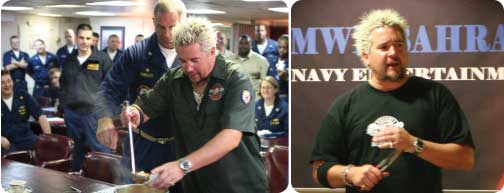
CC: First business.
GF: Yes...anything was possible if you worked was the message. My parents never pushed me to do anything. (laughs) Well, they pushed me to toe up. There was no lying. I mean I had open communication with my parents, clearly. I remember a kid making fun of me one time when I was a freshman in high school. He said, you know not everybody loves you as much as your mommy and daddy do. (grabs his chest) I felt like man, how much that kid must have been hurting. That’s such a raw statement to make. I wasn’t offended. I felt sorry for him.
Guy used the money he made from the pretzel business to become his version of a foreign exchange student in France.
GF: When I was a kid we had two foreign exchange students. It was so like my parents. When they had time they were driving to Mexico to volunteer at an orphanage...something they do a lot now that they are older and have time. One of the exchange students was from Norway, and one was from Sweden. I loved it. I got to eat funky food with them, got to laugh at them because I couldn’t speak their language.
CC: They lived at your house?
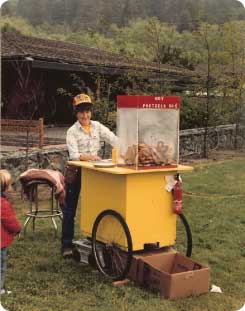 GF: They lived at our house. They didn’t understand things. I felt, God, I’m smart. I had this great relationship. It was like a big brother. I always wanted a big brother or big sister so it was awesome. Then I wanted to be an exchange student. I was always a little ahead of myself. I was a freshman. I wanted to be an exchange student but they said you have to be in a language class. I wasn’t in a language class. They said take Spanish. I didn’t want to take Spanish. I wanted to take Italian. They didn’t have Italian. Of course my parents were always bringing in wayward sailors and we met a cork salesman from France. He was in the wine country during Thanksgiving. He met somebody, my mom’s aunt or something, and came to our house for dinner. I said do you live in France? He said yes. I said I want to go there. He said I will find you a place to live. It happened, just right there. I wouldn’t lay off until my parents said fine. My mom said if you can take a class and learn French and get a B or better, you can be an exchange student. My mom drove me to the College of the Redwoods, fifteen miles from my high school, every day at lunch. I took the class. I got a B. (laughs) I told my parents I was ready to go. At the plane, I was crying my eyes out. I wrote them a letter and slipped it in my mom’s book. My dad said my mom was catatonic for two days. She couldn’t even open the letter. She’d pull the letter out and she’d cry. I landed in Paris. I lived on the third floor of this house. It’s a store room with a bed and a sink. I’m like, oh what have I gotten myself into. Of course, I can’t go home. I just thought I have to figure this out...(laughs) Okay, what’s the thing we did in school-conjugate the verbs. So, I carried a piece of paper and I would say how do you say that in English? I had this huge French verb book and I’d write them down in all the forms and I decorated my walls with them. By the time I left France there were like 300 up there. But, I taught myself how to speak French, and when I left you couldn’t tell I wasn’t from France...(laughs) they just couldn’t tell where the hell in France I was from. I mixed dialects...I would sound like a New York Southerner with a California twang.
GF: They lived at our house. They didn’t understand things. I felt, God, I’m smart. I had this great relationship. It was like a big brother. I always wanted a big brother or big sister so it was awesome. Then I wanted to be an exchange student. I was always a little ahead of myself. I was a freshman. I wanted to be an exchange student but they said you have to be in a language class. I wasn’t in a language class. They said take Spanish. I didn’t want to take Spanish. I wanted to take Italian. They didn’t have Italian. Of course my parents were always bringing in wayward sailors and we met a cork salesman from France. He was in the wine country during Thanksgiving. He met somebody, my mom’s aunt or something, and came to our house for dinner. I said do you live in France? He said yes. I said I want to go there. He said I will find you a place to live. It happened, just right there. I wouldn’t lay off until my parents said fine. My mom said if you can take a class and learn French and get a B or better, you can be an exchange student. My mom drove me to the College of the Redwoods, fifteen miles from my high school, every day at lunch. I took the class. I got a B. (laughs) I told my parents I was ready to go. At the plane, I was crying my eyes out. I wrote them a letter and slipped it in my mom’s book. My dad said my mom was catatonic for two days. She couldn’t even open the letter. She’d pull the letter out and she’d cry. I landed in Paris. I lived on the third floor of this house. It’s a store room with a bed and a sink. I’m like, oh what have I gotten myself into. Of course, I can’t go home. I just thought I have to figure this out...(laughs) Okay, what’s the thing we did in school-conjugate the verbs. So, I carried a piece of paper and I would say how do you say that in English? I had this huge French verb book and I’d write them down in all the forms and I decorated my walls with them. By the time I left France there were like 300 up there. But, I taught myself how to speak French, and when I left you couldn’t tell I wasn’t from France...(laughs) they just couldn’t tell where the hell in France I was from. I mixed dialects...I would sound like a New York Southerner with a California twang.
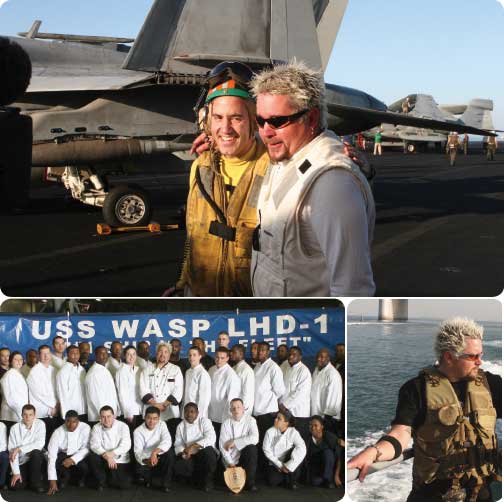
CC: How long did you stay?
GF: Almost a year, 11 months.
CC: You’ve been a blessed boy.
GF: Oh, I’ve had tough jobs and tribulations, but I’m so blown away by how much my parents gave. My dad always told me to experience the life that you’re living. I mean we’d shoot twenty-twos off my back porch. I drove a car to the beach when I was 15 years old. It’s not because I was in a country town. It’s because I just had an incredible mom and dad.
CC: What does your son think about you being on television?
GF: Hunter always thought we were rock stars. We owned the pizza restaurant down the street from his school and I do a program called REDS-Restaurant Education Day. We bring kids to the restaurant as a working experience. That’s always been my thing. The kids answer the phone, and make a pizza, and roll sushi. So, Hunter’s always kind of been in the limelight. When we won the “Food Network Star” Hunter was excited. The only time I ever saw him get freaked out was when we couldn’t go to Disneyland without being noticed. I tell Hunter everything is an opportunity. You can be anything you want to be. (laughs) He said, “Yeah, I want to be a Food Network Star, but I’m not sure I want to do that all the time. I also want to be a professional motorcycle racer.”
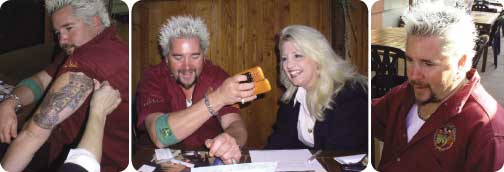
CC: Fame, are you treated differently?
GF: Yes.
CC: How?
GF: Tested. People want to know if you’re the real deal. People want to know if you’re different than you come off on TV.
CC: How do they test you?
GF: Funny ways. They’ll ask when you’re making the meat loaf do you add the onions or the garlic first? (laughs) I don’t know. I made that recipe two years ago, I guess the onions. Really, you don’t know? Usually they say he’s just like he is on TV.
CC: Does fame make you feel different?
GF: It’s about accepting responsibility. I’m honored. I’m still in awe. I’ve got to be honest.
Guy doesn’t wear fame any differently than he probably wore being one of the guys in a small town. The Navy flew him to the Middle East recently to do shows for the troops on the big boats. He took it in stride, something that seems to make sense in the bigger universe where he is living now. There are new shows to do. There are diners out there with the door open to him. There is no place he can’t go. He’s going to have fun wherever he goes next.
Bob Moretti & Ken Maddy
Aaron Read
Published Issue: Winter 2008
It is possible when you see the rain hitting the stones and the leaves piling up near the names that you forget the Capitol Park tributes to Bob Moretti and Ken Maddy memorialize two extraordinary figures in California history.
Bob Moretti never had a restful moment.
A fiery, inspiring, dark-haired, dark-eyed, athletic man, he was elected Speaker of the Assembly at a time when term limits was a fantastical idea and ambitious, lifetime politicians ran the building.
Willie Brown remembered him in writing as a brother.
Those who served with Moretti in the Legislature considered him the quintessential leader. His marks for integrity might be matched, but they can never be exceeded. A strong liberal, born in Detroit, and representing North Hollywood, he was also a favorite barbecuing partner of Ronald Reagan. He gave up the Speakership to run for governor, a race that was ultimately won by Jerry Brown.
One story has him walking into the office of a newly elected legislator and sweeping all of the papers from the desk. “Politics,” he said, “is about people.”
Ken Maddy was quieter, a sportsman, calm, graceful and respected by politicians from both parties. He was a leading California Republican legislator for more than a decade, and almost managed to garner his party’s nomination for governor.
There is an institute set aside in Maddy’s name for teaching young people the importance of public service. There is a scholarship in Moretti’s name that has made it easier for hundreds of young people to attend college.
The Democrat Moretti did not support the Republican Maddy when he first ran for the Assembly. Moretti was Speaker. Maddy won anyway.
Moretti met Maddy in the hallway of the Capitol after the election. They shook hands. Moretti said his refusal to support him was not personal. He asked Maddy if he played tennis.
Maddy said that he was not a tennis player. He was a golfer. They shook hands again and went their separate ways.
Maddy walked back toward his office. When he arrived just minutes later, his secretary was excited.
“The Speaker just called,” she said. “You have a tennis lesson at 7 a.m. tomorrow morning.”
Maddy and Moretti lived full lives, although each died young. Legions of friends remain.
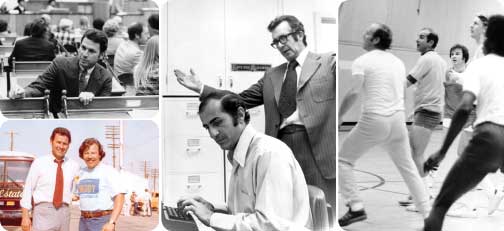
from bottom left, clockwise: Aaron Read with Maddy during the Governor’s ‘78 race; Maddy in the asseMbly; Moretti typing and former majority leader Jack Fenton helping; Moretti playing hoops.
A Day in America
Charles Graves
Published Issue: Winter 2008
I made the two-hour trip to Warm Springs on a bus loaded with supporters from Rome, Georgia. The crowd was huge and enthusiastic, and I made it onto the porch by sticking close to Judge John Davis, a Democratic nominee for Congress who went on to win handily in November. There was little security except for crowd control; no one thought it was needed...then.
Kennedy’s speech delivered, I climbed onto a chair for a better camera angle and was swept along for several feet on the shoulders of a crowd that was enthralled by the young Massachusetts senator. He was not yet myth, but after the somnolence of Eisenhower and a generation of old politicians, he was thrilling to watch. I was in awe.
It was a day to remember.
The nation’s voters chose Kennedy as the 36th president a few weeks later.
I returned to the newsroom until early in 1963 when I accepted the press aide position on the staff of Congressman Davis.
How I made it onto the Capitol steps on Sunday morning, November 24, 1963, and how I lost possession for over 40 years of the film I shot that day, certainly has no historical significance but the story is interesting.
Washington had been in a state of shock and disbelief since the dreadful news two days earlier that President Kennedy had been assassinated.
People spoke in whispers and cried openly and unashamedly in the streets.
It was announced on Saturday, as I recall, that the President’s body would to be brought to the Capitol on Sunday for a brief ceremony and to permit thousands of silent mourners to file past his bier prior to the funeral on Monday.
As sad as it was, it was to be an event no reporter would miss voluntarily.
Barricades had been erected and a good many Capitol policemen were on station, but the large crowds had not yet gathered when I arrived on Capitol Hill early in the morning. I went directly to our congressional offices in the Cannon House Office Building, located our inexpensive reflex camera and pocketed all the 120mm film I could find.
I moved my old News-Tribune press card to the front of my wallet and headed for the barricades. Approaching the first uniformed officer I met, I explained who I was and that I wanted some early crowd shots from the Capitol steps for a “stringer” story I would be writing for the newspaper back home. I would be gone in a few minutes.
In those days, most Capitol policemen got their jobs through congressional patronage, and they usually tried to be as accommodating as possible. Although obviously skeptical, the officer let me inside the barricades. Once inside, other officers apparently thought I was authorized to be there and I made it up the Capitol steps and onto the portico without being challenged.
I don’t remember the exact time sequence but it was two hours or so before the funeral cortege was to arrive. I shot numerous pictures and tried to make myself as inconspicuous as possible.
A handful of “pool” reporters and electronic media technicians began arriving on the portico, along with two plainclothes security agents. One obviously was Secret Service, and I came to believe the other was military. It was the latter who appeared to be searching his pockets for a cigarette, and I quickly offered one and lit it for him. We had a brief conversation; I explained my “mission” and was greatly relieved when he did not order me to vacate the premises.
Meanwhile, a sea of humanity quietly appeared outside the barricades, and the remaining “pool” reporters made their way up the steps to the portico.
Members of the White House staff and a military honor guard assembled and lined both sides of the stairs.
It was then that my worst fear materialized. An army colonel arrived and, accompanied by my cigarette-smoking friend, began checking credentials. There was nothing I could do but show my unimpressive press card and suffer the consequences. But as the colonel got to me, my plainclothes friend said, “He’s okay Colonel, I have already checked him.” The colonel moved on.
All else became quiet.
The solitary beat of drums and the sound of horses’ hooves were most prevalent as the President’s body arrived to be carried into the Capitol.
Senate leader Mike Mansfield, Chief Justice Earl Warren, the former governor of California, and House Speaker John McCormack each gave brief eulogies. The country’s new President, Lyndon Johnson, placed a wreath on behalf of all Americans.
The official party began leaving the Capitol rotunda, and I watched Mrs. Kennedy and her children take their first steps outside.
I heard a television cameraman whisper, “Oswald just died in Dallas.”
By that time the surname was all that was needed to identify the nobody malcontent who had slain our president. In turn, Oswald had been shot by notoriety-seeking bar owner, Jack Ruby, as he was being moved from jail to a court hearing.
Sadly, it was another day not to be forgotten.
I telephoned my story to the News-Tribune. There was no FedEx or UPS to ship my film in those days, so the newspaper used wire photos of the Capitol service.
Some weeks later I sent my film to a North Georgia lady who worked at a photography shop in Chattanooga, TN and also, along with her sister, published a small weekly newspaper. They agreed to make prints for me.
Time has robbed my memory of the details, but I learned in a month or so that the film had been misplaced. Thinking I had little recourse, and truly not appreciating the significance of the film to me in later life, I simply gave up any hope of having it returned.
With the birth of a new child and a yearning for my Georgia home, I left the congressional staff in 1965 and all but forgot about the lost film.
It was some 21 years after the assassination-about 1984-that, by a strange coincidence, I returned from a business trip to Dallas to find an envelope containing two of my Kennedy photographs. There was no note, no return address, just the pictures.
Needless-to-say, I was delighted to receive the two prints, especially one that showed Mrs. Kennedy and her children leaving the Capitol, followed by the slain president’s brother, Robert.
I was, of course, curious as to the sender but I made no effort to track down the source since I had had no contact with the sisters since leaving Washington.
I had the prints framed and again put the lost film out of my mind.
Another 20-plus years passed before a telephone call in the summer of 2005: “Is this the Charles Graves who worked for Congressman Davis?” the caller inquired.
“Yes, it is,” I replied.
“I was going through a box of old files, and I found some film negatives that I believe belong you,” said the lady, probably one of the sisters, now well along in age and long-since retired. “Do you still want them?”
“Yes, I do.”
They are, as pictures are meant to be, a moment frozen in time, a cold, sad morning that I shared with my fellow Americans, a time that was a long time ago, when all of us were young.
The Best Western
Walter Hughes
Published Issue: Winter 2008

The survey was not scientific. It began with a dozen or so friends gathering in the comfort of Spataro’s amiable cocktail lounge. The distinct tastes of the parties involved ranged from fancy drinks that would have been served with umbrellas on warmer days to cheap light beer.
I’m not quite sure who first posed the question, “What is the greatest western ever made?”
All I know is that whatever else we were talking about fell to the wayside and the argument began with an equal mix of volume and competing certainties.
At first there was some disdain voiced for cowboy movies in general. It soon became evident, however, that the excellent 3:10 to Yuma with an Aussie lead, and an actor who lost himself as Batman and a metrosexual serial murderer running back-up, was popular with the group.
It just wasn’t enough to be considered one of the greatest westerns of all time.
We got past the comedians who insisted the genre breaking Blazing Saddles deserved consideration. It didn’t wash. A great western has to be serious stuff, real, or at least what we think might have been truthful, strong and dramatic. This meant the wonderful Cat Ballou, made in 1965 with the brilliant dipsomaniac, Academy Award winner for the film, no less, Lee Marvin, and a surprisingly facile comedienne, a very youthful Jane Fonda, also did not make the grade.
Some comedy was deemed okay.
That allowed Butch Cassidy and the Sundance Kid to just miss reaching number ten on the list. The movie made Robert Redford a star, and cemented Paul Newman as an okay-to-age, blue-eyed icon who has the humor and swagger of what used to pass as American grace under pressure...the two big questions, of course, are why did they only make one more film together, and couldn’t Hollywood have found something of substance as a follow-up for the exquisite Katherine Ross?
The tenth spot went to an elegiac William Wyler movie, “The Big Country,” a moody agoraphobic nightmare of a misplaced sea captain trying to make his mark in the vast West. Charleton Heston is a bad guy with whom you sympathize, a working man in love with the daughter of one of the two main families, and Chuck Connors is exactly the creep his later Rifleman character would shoot. Carroll Baker is appealing to the bone as the spoiled girl who draws the main character to the West. Jean Simmons is more memorable as the love interest of Spartacus, but her poetic grace and ethereal voice is not lost on anyone. The star was supposed to be Gregory Peck. He does fine. You would invest in him. His lonely fight with Heston in the idle of the night is bruising, and gives some substance to the rumor that the movie inspired the iconic television show Bonanza. The most memorable character in this epic of two families battling for water in the middle of a billion acres is the trashy hard ass, Burl Ives. This mountainous, cruel, crude echoing villain of a man was good enough of an actor to win an Academy Award for this film and smart enough in subsequent projects to bring the difficult writer Tennessee Williams to the masses. Perhaps surprisingly to those who watched his movies, he was also an appealing folk singer and even provided the voice for family Christmas cartoons. Look him up, and imagine him angry and saying, “It will be a frosty Friday before you ride into my valley”...you won’t mistake his intent, and brave bastard or not, you’ll keep your distance.
Number nine was a tie. We lumped all of the obviously great westerns that make the list as groundbreaking films together, mostly because they are old chestnuts that are the cinematic equivalent of reading a classic novel you know would be incredible if your attention didn’t keep drifting. Okay, let’s not argue, I got enough of that from the comedians.
Stagecoach was filmed almost seventy years ago as a horse and buggy road picture. Yes, it has all of the requisite characters who made the West interesting, and it is obviously significant for the starring role played by Glendale-raised, recent USC star, Marion Morrison, turned John Wayne. You get a sense, however, the old film will snap in half at any moment and the reel will keep rolling on a white screen. At least two attempts have been made to update the story, both of them failed miserably. High Noon is dusty, and the town about to be visited by a killer with vengeance on his mind is populated with people who are so weak or corruptible you wonder how they ever got their wagons past St. Louis. Gary Cooper is laconic and righteous, unyielding might be another description, and you know the minute he leaves town with the strikingly pale Grace Kelly, that she’s going to start bitching at him for keeping her out in the sun and never telling her what he’s thinking. The music comes from Tex Ritter and is a reminder that a great Western has a tone. Shane is famous for sound advancements, and there’s no doubt you feel like you are someplace where the mud is muck and goes to the core of the earth. Jack Palance is carved from the same cold stone of the devil’s trident, and when he speaks a flame being frozen comes to mind. The gunfight you keep waiting for does not disappoint, and the kid, famous for yelling “Shane” as he traces the hero’s path into town is a good kid who doesn’t look or sound like a child actor...poor guy, grew up to play Paul Newman’s younger brother in the stunning ‘Hud,’ a modern story of the West, but not a western, and is killed very young in a car crash. ‘Shane’ is the best of the movies you are required to like. I did like it, too, yet I still can’t forgive the director for having Alan Ladd ride up in a pair of buckskins instead of the novel’s descriptive gunslinger black that is dirty from the time he’s spent trying to leave his life behind.
Red River...John Wayne is Ethan...you have no doubt he could ‘build him a place that goes farther than the eye can see’ and is run by tough men who bend to his will. Walter Brennan is good in everything he does and that is true here, too. Montgomery Clift, who must have been either the Tom Cruise or Hugh Grant of his day, is more beautiful than most of the women you see in any picture. It is amazing that years later he will be cast as the doomed boxer in ‘From Here to Eternity,’ because you don’t believe for a minute he could actually beat anyone up, and yet he does, including John Wayne, in an almost movie-ruining scene the Duke must have needed some drinks to forget...who’s the toughest cowboy...hey, John Wayne is the best, period, don’t even question it, but there’s no way Clint Eastwood would ever let a little Broadway actor kick his ass.
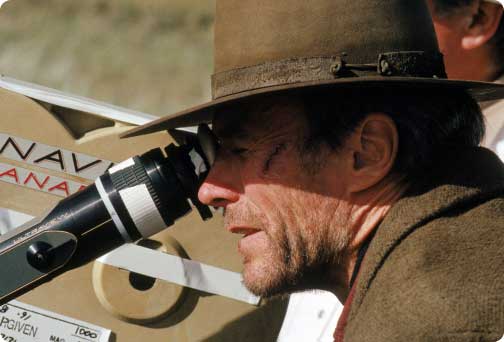
Number five is The Wild Bunch. The liquor and hard living had hardened the features of former golden boy, William Holden, by the time it was filmed in Mexico by notorious bad guy, Sam Peckinpah. Robert Ryan, an under-rated and mostly forgotten actor, was believably strong, and he and Holden are completely credible as being tough enough to live with the meanest sonsofbitches in the harshest of places under the worst of conditions. Unlike movies that stretch out fight scenes like the director is being paid by the bullet, the action in this movie makes you duck. There was a lot of discussion of The Magnificent Seven being just as good. The difference is that the former felt like a mean travelogue, while the latter, populated by screen idols, seemed like a revenge film where you cheered for the inevitable end. Some mentioned The Professionals, a film by the corrosive Richard Brooks and starring another great team of actors in search of a kidnapped woman who actually wants to stay with her kidnapper. There’s not a man on the planet who wouldn’t sell at least a part of his soul for a trip anywhere with Claudia Cardinale. UCLA’s Woody Strode holds his own with Burt Lancaster, Robert Ryan, and Jack Palance, but the most biting line comes at the end when a constantly drunk Lee Marvin says cryptically that some men are born bastards and others choose the role.
The Outlaw Josie Wales is the best of the younger Clint Eastwood movies, and the savagery of the post Civil War era displayed makes us wonder how the states ever became united. High Plains Drifter is a moody piece about vengeance and redemption. Of course, the only problem with ranking Eastwood films is that he became such an epic producer and director that his most recent films make everything pale in comparison. He is both John Ford and John Wayne.
There are not a lot who would give Fort Apache such a ranking, but it works here as both a tribute to the many films of John Ford, and a movie that made a mockery of propaganda. John Wayne is measured as the better man of lesser rank. His restraint when confronted with the megalomania of a supremely arrogant Henry Fonda gives you another idea of why the military gets into trouble. The isolation of the fort is relieved by a lovely teenaged Shirley Temple who might have been believable as a young lover since she would soon marry, unhappily, unfortunately, her co-star, John Agar. The hokey ending still works when Wayne, and because he says it you believe it, offers the name of a hero we will never forget...still forgotten by everyone except pedants and film buffs...I’d tell you who he is if you’re interested, but I can’t recall...well, anyway, the other movie mentioned with ‘Fort Apache,’ was the almost as good Rio Grande, made two years later by John Ford, and also starring John Wayne, this time as the quiet suitor of his ex-wife, Maureen O’Hara. The location is the same, another fort, and the action centers around the parents worrying about a young soldier, the son of Wayne and Sullivan, who has left West Point and volunteered for duty in the West. John Wayne is subtle, an actor who should have been given his due award long before the Academy gave him an Oscar for True Grit.
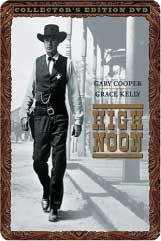
The Man Who Shot Liberty Valance...the evil is real, the bully, the drunk with guts and no values, a man who destroys what he can’t become...Strother Martin is Liberty’s gunk-toothed buddy, a screeching, wheezing ugly little man who perfected that particular role until years later he uttered the memorable line, “What we have here is a failure to communicate,” in his tyrannical, genius performance in Cool Hand Luke. James Stewart is magnificent, an actor who manages to say as much in his expressions as he does with his slow drawl, and John Wayne is vulnerable and brave, heroic as the inherently good man who is born to stay a small-town stolid. Vera Miles is arguably stronger than her husband, a steady, loving, equal partner in the settling of America. Woody Strode and five-time Academy Award nominee, Edmund O’Brien, remind us that decency was at the core of the West and the foundation upon which the country was built. The surprise twist, especially the filming of the different angles, has not been done more simply or more effectively. I have never met anyone who did not love this movie.
Tombstone is a movie that seems to get better as we start believing that something being made in our time can be a classic. It is a mystery why Kurt Russell does not get recognition as one of our best actors. He defines what it means to be the moral center of a movie. We won’t even discuss the other Wyatt Earp film that Kevin Costner did at the same time, although we will say that forty-seven years earlier, Henry Fonda and Victor Mature starred in an enjoyable film with the same characters, a thoughtful character study, called My Darling Clementine. Tombstone is filled with rich performances-a fat Billy Bob Thorton as a bully who gets his comeuppance; a cowardly and foolishly dangerous Ike Clanton; a band of craven bad guys who think nothing of raping a bride on her wedding day and shooting a priest, a tormented Johnny Ringo, and Val Kilmer giving perhaps the best performance ever in any western, as the diseased lunger, Doc Holliday. I have no idea what he’s talking about when he mentions huckleberry and daisy, but it works wonderfully, and he never veers from his unique and absolutely compelling characterization of the tubercular dentist. The love story might fall a little short, and there is a false moment when Wyatt and Doc shake hands while riding a horse, but the writing and the acting is extraordinary, even if we’ve known all of our lives how the story ends. Shoot, the ‘Rocky moment,’ when the music swells after Kurt Russell says he’s coming after the bad guys and he’s bringing hell with him, works like it is being done for the first time.
The Unforgiven is flawless. Our group argued about the spaghetti westerns Eastwood made, and how much they were enjoyed was open to wide opinion, the most insightful of the group saying the movies were like training films for what Eastwood has done since he began hitting his stride at sixty years of age. Sergio Leone may have had a great European rep, and he reined in no one less than Henry Fonda at his quiet best for one of his stories; still, mentoring and devotion aside, he’s no Clint Eastwood. The Unforgiven, the Best Picture of 1992, manages to make real and bring to life all the cliché characters of western lore. The gunfighters are more dangerous, real people, incarnated with foibles and dreams, the whores may have hearts of gold, but you get the lesson bad things are caught from lying down on their beds. The Eastern writer telling the story is insinuating and unctuous at the beginning. He is too scared to understand Eastwood at the end when the old killer promises to massacre anyone in his way. It is a tribute to the writing that we are holding our breath when Eastwood’s William Munny disappears into history. I’ll also go on record right now as saying I want to grow old with Morgan Freeman. I don’t know how old he is, but he needs to stop adding any more years until I begin combing gray hair. He’s just so easy, a role he did again with Redford in “An Unfinished Life” and kicking the bucket with Jack Nicholson...sure to be patient whether I’m running to church or asking if we need to shoot someone before getting a beer.
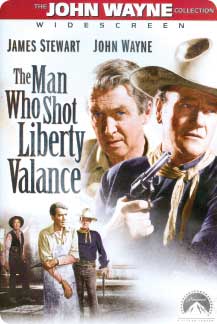
We missed some good ones. Dances with Wolves got as many positive votes as negative reviews. Like all of Kevin Costner’s films there was the complaint that it was far too long and indulgent, and his styled haircut was cited as proof of his on-screen vanity. Even more peevish was the hit that the good and bad characters were lacking any gray area. He might as well have assigned them hats. All I know is that every time I come across this movie on television, I watch it.
The Ox Bow Incident, made in a war year, 1943, could have cracked the top ten. Again, the problem was the good and the bad were handed to the characters more for debate than development. Henry Fonda is us if we were sure to be good under duress. A young Anthony Quinn is terrific as one of the men unfairly hanged in an obviously bad circumstance, and the familiar Harry Morgan, from Dragnet and MASH, is at the beginning of his everyone’s buddy routine.
The Searchers, with John Wayne and Natalie Wood, gets special attention. Some in the group said the movie about two men searching for a young girl kidnapped by Indians was their immediate favorite. They cited its position as the first western and the twelfth film listed in the AFI’s review of the 100 greatest films, and said conclusively that it was the most intense acting in Wayne’s long career. Others insisted the movie is an example of the racism and patronization that was acceptable in the Eisenhower era.
All of the movies are on DVD. I only wish I hadn’t seen any of them, just so I could see them again for the first time.
Chatting with Stan Atkinson
Steve Baker
Published Issue: Winter 2008
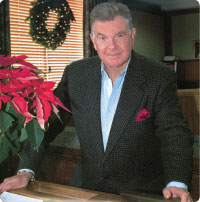 Over a period of almost forty years, Stan Atkinson was the consummate TV personality and one of the most likeable figures in California’s Capital City. His following at a local level often exceeded that of national anchors Walter Cronkite and Tom Brokaw. An award winning writer and producer, Atkinson managed invincible ratings.
Over a period of almost forty years, Stan Atkinson was the consummate TV personality and one of the most likeable figures in California’s Capital City. His following at a local level often exceeded that of national anchors Walter Cronkite and Tom Brokaw. An award winning writer and producer, Atkinson managed invincible ratings.
We met Stan at a small eatery. He was almost on time, pulling up in his car with plates reading “Old News,” the plates appearing to be the only vanity he allows. He was dressed casually in workout clothes. Atkinson is tall, tan, and trim, still with a healthy head of hair. His calm, clear voice hasn’t changed since he stepped away from the camera and retired in 1999.
The relationship between the viewer and a television personality is fickle, usually tenuous at best, a short-term affection that wears out when times and trends take on new colors. Stan beat the odds. He was a mainstay in people’s lives. He fit in our living rooms, and when he wanted to get away, he won Emmys taking us with him to scarred countries like Vietnam and Afghanistan and Somalia.
California Conversations: Did you grow up in California?
Stan Atkinson: I grew up in Santa Barbara. I was adopted by family friends. I was fortunate to be raised in a home with parents, although old enough to be my grandparents, who were loving and provided me a lot of opportunity.
CC: What did your parents do?
SA: My father was a multi-faceted man. He was a civil engineer. He was a pioneer American forester. In fact, with the National Park Service his assignment was to put Lassen Park together. That was his first introduction to the West. He grew up in Philadelphia. He ended up in Santa Barbara after running rubber plantations for U.S. Rubber. He planted avocados and lemon trees and did really well at it in those early days of modern California.
CC: I imagine Santa Barbara was a beautiful place to grow up.
SA: It was, but for most of us, we had to go away to start a real life. There wasn’t much job opportunity.
CC: Did you work growing up?
SA: I got hooked on radio as a kid. During high school I focused on high school sports reporting, and worked on a weekly radio show in Santa Barbara. I was totally enamored with radio.
CC: You chose a competitive business.
SA: Well, not really. Not then. (laughs) It was the early fifties and all you had to do was get an FCC first class license. We didn’t really have news people in those days, not at the local level anyway. I went to school for my license and that opened up opportunities all over the country. I took my first job in Los Alamos, New Mexico. It was a great job. The station was built when the Atomic Energy Commission was spending money in Los Alamos, so it had all the bells and whistles.
CC: Was the military looking for young guys in those days?
SA: Yes...I got drafted and sent to Fort Ord during the Korean War. I applied for Officers Candidate School, and served a term on base in what they called Leadership School. It was kind of a prep school for OCS. They said, “You’re a radio announcer, so you’ll make a good instructor.” (laughs) I learned a lot back then about military rationale.
CC: Were you at Fort Ord your entire military career?
SA: Yes, with Clint Eastwood, actually. We were in the same unit as instructors. My job was standing on a stage teaching military courses to unhappy new recruits. I’d had a little bit of dramatic training through school, but not a whole lot. I seemed to have a natural flair for it. You had to keep ‘em awake.
CC: What was Clint like back then?
SA: He was just a nice kid. We’ve run into each other over the years, and he’s still a nice guy. When he got out of the service, he took off with a guy named Bob to make their names in Hollywood...don’t know what happened to Bob. We were all very jealous of Clint and his team because they were swimming instructors, and their uniform was tennis shoes, khakis, and a sweatshirt. We had to be spit and polish role models working in front of 300 trainees at a time.
CC: You didn’t follow Clint to Hollywood?
SA: Nah. I knew the draft was coming so I had gotten that FCC license first. If you were going to work in a small radio station where an engineer wouldn’t be on duty 24/7, if you had an FCC license, you could operate the station by yourself. God forbid the station would go off the air. You’d be on the phone lickety-split with the engineer, in a panic.
CC: When did television enter the equation?
SA: I took a job at a radio station in Spokane. They were in the process of building a TV station at the time. They said, we think you’ll work well in television. I said I don’t even own a coat and a tie. They said, go get one. (laughs) I realized quickly that standing on a stage at Fort Ord in front of 300 disgruntled, unhappy, desperately sleepy trainees turned out to be good training for television.
CC: How did you get back to California?
SA: I left Spokane in 1956. Both my former wife and I were from Santa Barbara. We had thin Southern California blood, and it got bitterly cold in Spokane. We crammed everything into our little VW. We stopped at a gas station in Redding to fill up and as I was getting back in the car, I hollered to the guy, are there any TV stations around here? He said there was one opening up by the junior college. So I drove a dusty road to this new little building. Everyone was running around the studio like chickens with their heads cut off. They had just gone on the air and were having trouble getting the signal to the transmitter at the top of Shasta Baldy, 5,600 feet above Redding. They were really preoccupied and here is this stranger walking in. Someone asked me what I wanted. I said, well, I’d like a job. I said I do television. I’ve been working at the ABC station in Spokane for two years. This was 1956-and they said, “You’ve been in television for two years? You’re hired.”
That’s what it was like in those days. It was nothing but breaks, timing, and persistence. I think every job I got after that was all about not giving up, always believing I’m going to get something I want to get.
CC: Did you know then you would stay in television?
SA: By 1957, I had moved to KCRA in Sacramento and I loved my job. I’d made a couple of documentaries...one about a terrible forest fire, and it got a lot of play. And I’d been to Vietnam and on an around-the-world trip with Vice-President Lyndon Johnson. I got on the trip because I won a national award and Johnson presented the award. I was fascinated by Vietnam. I did a documentary about a Chinese Catholic priest who had his own little army fighting the Viet Cong, and he was beating the hell out of them. Anyway, I pitched David Wolper in Hollywood to create a documentary unit in Sacramento for a new series. We had a lot of good subjects up here. Anyway, I quit at the television station. Then the series was never renewed, so I only got one show in the first year of the series and the idea of being a Northern California unit went up in smoke.
I went to Pat Brown’s inaugural and had a few drinks with Gordon Winton, a popular cow-country democratic Assemblyman from Merced. The State of California was going from a part-time Legislature to a full-time one. After a few drinks, he said, “We’ve got this new thing starting that’s being called an AA-administrative assistant. I’m not quite sure how it’s going to work out, but I’d like you to take the job.”
It was incredible. I covered the Capitol as a reporter and never did see the inner workings the way I began seeing them once I was an AA. I worked with Rose Byrd (controversial California Chief Justice under Jerry Brown) and Ken Corey (former State Controller), who were committee consultants. It was a fascinating time because Jesse Unruh was bringing the professional Legislature into reality.
CC: All of the early colleagues go on to bigger things?
SA: (laughs) Ed Loftus went in a different direction. He was a spicy, triple-A character, always full of energy, funny, a jokester, smart as a whip, a good looking little guy. Everybody loved him. In those days, we did a lot of partying and it was pretty unrestrained. Everybody joined in, including legislators. Ed was one of the main organizers of the extracurricular events that took place.
Well, Ed and I both ended up in LA. I had been called by Wolper to do another series, so I moved to LA. I did a show with Bing Crosby and one with Bette Davis. From there, I went on to partner with a guy in a production company.
Ed Loftus began running the Nelson Rockefeller presidential campaign in Southern California.
Ed came to my house for dinner a couple of times. My father had died, and I showed Ed the old 45 service revolver from WWI my dad left me. I came home one night, and the front door was unlocked. I got a spooky feeling. It had obviously been entered by somebody. Nothing was touched-somebody had gone directly to the bedroom where I had the revolver, opened the drawer and took it.
Now, Ed’s roommate was Paul Brown, the lobbyist for the California Medical Association. He was originally the press guy for the state fair, which was a very prestigious job at the time. He was sitting in their living room reading the paper and all of a sudden the front door goes down and 20 of LA’s finest burst in, stand him up, and put him in cuffs. Where is Ed, they ask.
Ed was robbing banks in his spare time. (laughs) He only got caught when he went on a date, needed a few bucks, so robbed a Western Union office for dinner money.
CC: He used your gun for the robberies?
SA: Yes, in the end he did.
Ed Loftus was convicted of several bank robberies and sentenced to 80 years in prison. His two accomplices, both college students, committed suicide rather than be taken into custody. Stan thinks Ed was released sometime in the ‘70s.
CC: (laughs) You didn’t follow Loftus either, but you didn’t stay in Los Angeles.
SA: My partner wanted to be making movies or TV shows, which he ended up doing and had a very successful career. We had put together another documentary about an inspirational bunch of people trying to do the right thing in the early days of Vietnam. Let me tell you, we went through the tortures of hell with that. We made a really good half-hour program. We then spent one Saturday and Sunday in the conference room at the State Department with their lawyers ripping it and us apart-word by word. They took the meat out of the program. It was such a battering experience, I just said screw it. No more production-by-committee. I went back to news at KTVU Oakland. Later, I applied for a Ford Journalism Fellowship and for almost a year I studied environmental science at Stanford. It was a delightful experience. I was working with remarkable journalists, people in mid-career wanting to stretch out a bit. I finished there and went to work at NBC. Of course, LA was the market for covering environmental matters. I was the second in the country to cover that specific assignment, my beat.
CC: What were the big environmental issues?
SA: Smog. Smog, Smog, Smog. Those were the days when the basin was just plugged. They’ve made a lot of improvements since then. We lived on the hillside, above the strip and I would look down on this thick black stuff and think, I am spending my day working there. Then the Sharon Tate murders occurred. I happened to be nearby, so I got called to the house. The La Bianca killings were the next night. I spent the next 16 months on the Charles Manson case. And that was the end of my environmental reporting career.
CC: Does covering murder and the gritty things that happen to people wear on you after a while?
SA: I don’t think so, and I don’t think you become numb to it either. I remember with all of the foreign assignments I did, a lot of them were centered on refugee relief and what was being done trying to save lives and give people hope. Every refugee camp was a dismal and hopeless place, and I always thought when I left that country, I don’t ever want to see another one again. But, there’s always the story, getting the story and sharing what you’ve seen and what you’ve experienced with others. That is what this business was about to me. Every single day was fresh for me.
CC: Didn’t you try starting your own television station?
SA: I met these guys at NBC, and we started Channel 50 in Santa Rosa. In the end, it turned out to be heartbreak. We lost it after a year on the air. We were great TV people. We ran a fabulous little station. We did some terrific stuff. We were local, local, local in the purest sense of the word, which is what we set out to do. But we were terrible businessmen. We passed on offers to merge because we wanted to maintain a majority percentage, and that just doesn’t happen in the business world. It really changed my view of the world. I was depressed. It was a terrible time. We had 30 wonderful kids we taught television. We had to sit down one day and say good-bye. We brought them all along, including Jon Miller, the guy who does the Giants games. We gave him his first job. It was just heartbreaking after all that work and all the effort, money spent and lost. So, that came to a tragic end.
CC: Any other Atkinson business ventures?
SA: Of course. (laughs) We planted Chardonnay and Pinot Noir grapes in Sebastopol. I went to school and took some courses in viticulture. Then I got a call from Stanford, and they said they were starting up a summer graduate program in journalism. Do you want to come teach? I said, “Absolutely, that sounds like fun.” It was wonderful. There were 20 primo kids from all over the country that came to Stanford for a two-and-a-half month program. We met twice a week. I put a text together on television journalism because there really was no text then. This was in 1973. I had a ball and in the process, it was like the drowning man going down for the last time and seeing his life flash past him. I had been going down for the last time after Channel 50. Luckily, my life flashed past me in this teaching role and I saw what a precious opportunity the profession afforded me...how I loved every single day. I’ll tell ya, when I came back to work, I came back with fervor and passion I never had before. The night in 1999 when I walked out the door of the studio for the last time, I was as excited and energized about the business as the first day I ever walked into a television station.
CC: Talk to us about what it’s like to be a television celebrity.
SA: In the early days, I didn’t know how to deal with it. I did not make the people in my personal life very happy. I have wonderful children and a fabulous family. But, I finally did grow up and do the right thing and be a really good dad. And I am a good dad. I’m proud of that. At the time, I was so consumed by what I was doing that like a lot of young husbands, I screwed up. I didn’t think much of myself. I didn’t have much self-esteem. When people would talk to me about being this special person because I was doing this special thing, it just didn’t compute. It made me feel worse. After losing Channel 50 and the vineyard, and then putting my head straight, I haven’t missed a beat. I take it as a true compliment when somebody would say, “Wow, I watch you all the time,” or now it’s “We used to watch you and we really miss you.” I’ll say thank you. I deeply appreciate it. I don’t take it for granted.
CC: I’m sure you get recognized wherever you go.
SA: Yes, because I’m still on the air doing commercials. I just don’t have any pretense because of what I did.
CC: At one point you were anchoring the most popular station and you shifted to the rival...how did that happen?
SA: I’d been there for 18 years, and the pencil had grown sharper on the bottom line. We had a contract dispute and the opportunities for me to do more foreign assignments were petering out.
CC: You ended up in Afghanistan twice.
SA: There is a lot of sadness associated with my memories of Afghanistan. The concept of a Muslim state in its rawest form, as it is in Afghanistan, is to step back in time into the middle ages. And that’s the way they want to preserve it. They didn’t want to change it. When I first went there in 1981, they were putting up an incredible fight against the Soviets. When I went back in 1985, everything was devastated. All of the roads were gone, the irrigation systems were gone and the country was just blown to smithereens. If we could have done any kind of minimal Marshal Plan like we did in Germany after World War II in Afghanistan, I am convinced the crisis would not have spread to Iraq today. For one thing, we would have been seen as good guys who follow through on our convictions. Instead, our foreign policy lives day-to-day. We do not pay regard to the long term. I think about all those little kids I talked to, and showed how to throw a Frisbee and took snacks and little treats to, beautiful children, wonderful children who would follow you everywhere. Many became the ferocious Taliban because they could not grow up into a normal life of farming or transportation. There was no infrastructure left. In that vacuum, the jihadists took over and that was the beginning of the end.
CC: You’ve been to countries controlled by Marxist governments. Where are they going now in this post Soviet Union era?
SA: The end of the Soviet empire brought an end to the devilment going on in these countries. Now they face the age-old problems of deprivation and seeking opportunity that to some degree they might have had before the Communists took a foothold.
CC: What was the most dangerous moment in your years of traveling?
SA: In Afghanistan, we got chased into a cave by a Soviet gunship once. There were lots of harried times because we had to hide frequently. Even though we had our disguises, you could tell we were Westerners. I had to put mascara on my gray beard so I would look like an Afghan. Life expectancy is about 40 years and if you’re 50 years old, you don’t have a gray beard, you have a white beard, and you look like you’re 70. In El Salvador we were robbed by some rebels. El Salvador was always dangerous. I was able to arrange a meeting with a leader inside Cambodia, and he was friendly, but as we drove away, they started firing mortar rounds at us. (laughs) Maybe they meant to use fireworks, I don’t know.
Somalia was the worst. We got there not long after the American Black Hawk helicopter went down and the soldier was dragged dead through the street. There was no law. There still isn’t. It’s absolutely the most troubled nation on this earth. Nobody ever talks about it but there is nothing there-no law, no banking system, the tribes run the whole thing, and they constantly fight one another. Life is constantly violent and dangerous. Al Qaeda found this place a fertile ground for training new recruits. We had all kinds of incidents. We always went everywhere with two vehicles because if one hit a mine or got knocked out by a grenade, there was always another one to hopefully get us back to safety. In the back of each vehicle, we had four armed gunnies. One of our gunnies went for lunch and was shot and killed off the back of the truck. They wanted the truck; the sniper picked him off and stole the truck. Then the tribes started fighting around our hotel. The fighting went on all night long. In the morning, I’m in the bathroom combing my hair and bullets were ricocheting off the outside walls. (laughs) I’m thinking if one of those bullets comes through the window and kills me, I know the headline-Anchorman killed in Somalia combing his hair.
The world is full of stories.
I was doing a standup on the border in Thailand, and all of a sudden there was a foray going on between the Cambodian resistance and the Vietnamese who occupied Cambodia at the time. It ran over into this refugee camp with two hundred thousand people living in it. All of a sudden everybody starts running past me. You could hear the bullets. I heard a bullet zip right behind my head, but we finished the standup.
CC: Iraq?
SA: Yes, we went to Iraq just before the Gulf War broke out. That struggle is with us for our lifetime. I worry about it for my grandkids. Whatever is going to bring that country together escapes me.
CC: Can we get back to Lyndon Johnson?
SA: Lyndon was fascinating. The trip I took with him around the world was a tough trip. We were maybe two days at a stretch in one place, and oftentimes it was day-to-day. He had this ability to sleep standing up. We were doing a news conference, and I was standing up against the wall and I looked over and his eyes were closed. I swear he was sleeping. He had no couth at all. We were in the Taj Mahal being shown the throne room where the king put his princess in a coffin. The holy man was very emotional in describing the details. Everybody was hushed. He started doing this holy chant. Lyndon looks over at Lady Byrd and says, Lady Byrd, how about that-he then proceeded to do a Texas cattle call. (laughs) That was Lyndon-irrepressible in every sense of the word. I remember I got to ride one leg on Air Force One because there was a pool on each leg of the flight from wire, radio, TV and print, so I got to do the TV leg to India. Nehru was the Prime Minister. One of the Asian correspondents asked this very involved question about a foreign policy issue that Lyndon was going to discuss with the Prime Minister. Lyndon looks at him and says, don’t you worry about that for a minute son. I’ll be with him for about three minutes, and I’ll have my hands up his dress, and then I’ll have him by the balls.
CC: What is the future for television journalism?
SA: Well, it is ever widening, ever expanding, and ever changing. The largest body of opinion is that the Internet is the way people will choose to get their information. I’m not so sure. Maybe it’s because I’m an old fart, but sitting there watching television on my computer screen is not necessarily something I want to do. Unfortunately, our country is getting seriously dumbed down. It’s been a gradual process. We have no or little awareness of what is going on in the world, outside of Iraq. There are concerns we need to have about other places in the world, but we don’t have a good information source because no television station, network, or newspaper is going to do it. Magazine circulation is reducing as well.
The news business is reshaping itself constantly, and I am afraid in the process it is leaving the intellect of the nation behind.
CC: What do you think is the biggest story you ever covered?
SA: Probably the Manson story. The two that meant the most to me personally were Afghanistan and a trip I took to Vietnam with the raconteur and former assemblyman and chief of staff to Jerry Brown, B.T. Collins. It was his first trip back since he lost an arm and a leg in the war.
CC: The funniest thing that happened to you during your career?
SA: There are many. When Clinton came to our station to do a Town Hall, the Secret Service went through the news room and when they got to my desk, there was a lapel pin I had stuck up on the wall of my cubicle. Some vets gave it to me the day we dedicated the Vietnam Memorial. The pin said “F**k Jane Fonda.” The Secret Service guy saw the pin and wanted to know who the hell sat at that desk. Our news director and my boss, said, “Oh, that’s our house Republican, Stan Atkinson. He’s the main anchorman, and he’s going to be doing the interview with Clinton.” So, Clinton arrives late, and I had to vamp for a while. He comes up on the stage. I start asking him questions but he’s aloof. Now I had heard he was friendly, very outgoing and I’d seen him at work many times and thought this is going to be fun. Well, it wasn’t fun. It was uncomfortable. All of a sudden my microphone went dead, and we went to a commercial break. During the break, I said, you know, when I come back in my next life, I am going to carry a pencil and pad, and I am going to work for a newspaper. He started laughing. That broke the ice. We chatted, and from that point on sailed right through. It was comfortable when he realized I wasn’t going to try sharpshooting him. (laughs) The Secret Service guy had told him everything.
CC: What are you doing these days?
SA: I am helping raise the last $2 million to build a new safe house for WEAVE, an organization for women escaping domestic abuse. And a buddy and I started a project about four years ago to build a $2 million baseball field for disabled youngsters. They want to play baseball, but have a hard time on existing fields because base paths are rutted out, and the kids can’t navigate them safely. This new field has a flat, rubberized surface, and it’s just really neat. It was a big project. Art Savage and the Sacramento River Cats really helped a lot.
I’m also active in the First Tee of Greater Sacramento, and with the Mercy Foundation. I’ve been on their board for 28 years.
CC: (laughs) You haven’t lost any of your enthusiasm.
SA: That’s not going to happen.
Ralph Heim’s California: El Capitan in Clearing Storm
Photography by Ralph Heim
Published Issue: Winter 2008

As winter storm clouds lift over Yosemite Valley, El Capitan is revealed in bold relief as the Merced River glides silently below the 3,000 vertical foot Yosemite icon.
® PHOTOGRAPH BY RALPH HEIM
Ralph Heim’s California: Yosemite National Park
Photography by Ralph Heim
Published Issue: Spring 2006

Ralph Heim’s California: Cathedral Rocks Sunrise Yosemite National Park
Photography by Ralph Heim
Published Issue: Winter 2007

As Yosemite Valley transitions to the silent beauty of winter, the first rays of sunlight reveal the majesty on Cathedral Rocks.
Ralph Heim’s California: Coastal Serenity
Photography by Ralph Heim
Published Issue: Summer 2007

(A drive along Highway 1 provides countless stunning views of California’s magnifi cent coast. This view was photographed near Ragged Point at the southern most boundary of Big Sur.)
Living Everyday at Pebble Beach
Steve Baker
Published Issue: Summer 2007

Situated on the Monterey Peninsula, Pebble Beach Golf Links is a legendary golf venue, recognized in 2001 by Golf Digest as the “Best Golf Course in the World,” the first time a public course has ever held that distinction. Bordered on the west by the spectacularly blue Pacific Ocean and on the east by mansions that fetch more than $20 million, Pebble Beach was founded in 1919 by Samuel Morse, a distant cousin of the inventor of the Morse Code. Pebble Beach has hosted four U.S. Opens and countless U.S. men’s amateur golf tournaments. Pebble has also been the home of the Bing Crosby National Pro Am (now known as the AT&T Pebble Beach National Pro Am) since 1947.
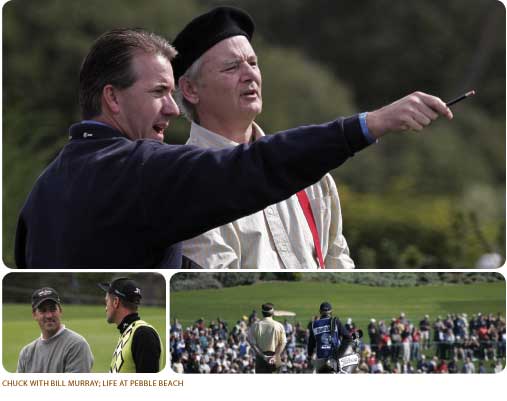
CC: They purchased Pebble from a Japanese group?
CD: I worked for the Japanese ownership and they were wonderful stewards of this place. I mean they really polished the diamond, so to speak. And now, the expectation of the current ownership is very high, which it should be, because I want to work alongside an employer or manager who holds this place in the same high regard I do. They bought it with the idea that we’re here for the long haul. Pebble Beach has been bought and sold a number of times. There were two Japanese ownerships, there was the Marvin Davis Ownership group, and there was a Universal Pictures or Paramount group and such. It went through all these ownership changes and we really feel like this one is going to stick. This one is for good. When they bought it, they structured it in a way where they are going to be handing down their ownership to their family members. The stability is very comforting.
CC: I’ve heard that you hit a hole-in-one on the 7th hole at Pebble Beach?
CD: Yeah, I did.
CC: Is that your favorite hole?
CD: It is now. Before that, I’d probably say the 8th hole because it offers so much drama especially when you finish the hole and you see the beautiful ocean scene in front of you.
CC: Is Pebble considered a tough course?
CD: I interpret Pebble Beach as 7 holes of offense and 11 holes of defense. You feel like you are going to hit the first 7 holes with a lot of birdie opportunities, but then you have to play 8, 9 and 10. The cliffs at dune, abalone corner, you basically give it all back. You kind of just hold on. I used to say that 8 was my favorite, and it’s still at the top.
CC: How much did drinks cost in the taproom after your hole-in-one?
CD: It was a practice round for a tournament, and it was a hosted bar that night. I got off easy. It was a hosted bar for the next two nights. There are a bunch of guys I still feel like I owe drinks.
CC: What is your most memorable story at Pebble?
CD: Wow, there are so many. You know, I’ve seen some unbelievable shots, and I’ve had some great experiences. It’s hard to name one. But, for example, I’ve played with a couple of kids that are part of the Make a Wish Foundation. I had this one kid from Ohio, and he had a spider-webbing tumor that was going to cause him to lose his sight. He’d had 16 brain surgeries. He wanted to play with the head pro at Pebble Beach. So you get very humbled by stuff like that. In fact, the great news about that story is he still sends me Christmas cards. He’s doing great and is going through high school now, and the only thing after 16 brain surgeries is that he wears glasses. He sent me a Christmas card that said something like - one day I am going to come back to Pebble Beach and I’ll beat your ass. And I sent one back to him that said, “Just bring it.”
There’s a young man, and his dad wasn’t much of a golfer and his brothers weren’t golfers, but he just liked the sport. He’s from Scotland. He wrote me a letter saying that he was on a junior team, was going to be traveling and was there any way he could look at some of the holes. So he shows up here with his brother and his dad. He’s a little hesitant to ask if he could even get a golf cart and drive around the golf course. I said, well, how about this? Do you have your golf clubs with you? And he said actually he did. And I said well why don’t you go play? And he looked at me like you’ve got to be kidding. So, the dad videotaped, and the brother watched and drove the cart, and the young man played. When they got up to #7, he gets a hole-in-one. The dad got it on videotape. It was front-page news in that little town in Scotland. The dad sent me the article. Those are the things that give me the most enjoyment and leave impressions with me that I will never forget.
CC: What does Pebble Beach mean to the golf community?
CD: You can’t go through a golf magazine or watch a golf telecast without someone bringing up the two words “Pebble Beach.” You can’t - I’ve tried. It doesn’t matter where they’re playing. They could be playing the Honda. They could be playing at Bay Hill. In fact, it’s bigger than gold. Last year I was watching a replay of the Nathan’s hot dog eating contest from Coney Island and the guy introduced it this way - ladies and gentlemen, in golf you have Pebble Beach, but in hot dog eating contests, you have Nathan’s. He didn’t say in tennis you have Wimbledon or in baseball you have Fenway Park. That’s how big a deal it is.
CC: You sound like one of those lucky people who love their job.
CD: I get to call this my office every day. It’s a lot of fun. It’s a lot of hard work as well. In any career, it doesn’t matter if you’re in golf or selling widgets, there’s a progression where you think, okay, I want to graduate from college, and then I want to get into a business that I enjoy, and then I want to become manager and make a positive difference on the job. I was the same way. I got into the golf business. I wanted to get my PGA card within three years. I wanted to get into management three years after that, and I wanted to be a head pro someday. It was a lot of hard work, and being in the right place at the right time, and being with the right person at the right place at the right time. I’ve gotten to a place now that I don’t have to look anymore. I don’t know if this is the last job I will ever have, but people are going to have to look for me. I don’t have to look for anything else because I’m happy.
CC: What is Pebble Beach going to be like 100 years from now?
CD: I hope it stays close to what it is today. For example, I get approached from people that want to talk to us about putting in a GPS system and all that other stuff. We just want people to play the old fashioned way, the way it was meant to be played. We keep up with the technology and the new equipment, but we also want to maintain the integrity of the golf course, the toughness of the golf course, the fairness of the golf course as things around you that you can’t control change. Now, if you go on a PGA tour, there are mobile gyms. Twenty years ago, are you kidding me, you were still seeing Arnold Palmer and Jack Nicholas smoking cigarettes. The physical aspects that golfers have today, the training they do, the ball and the club, mean that you have to look at the golf course and make adjustments, especially in a place like this where you might host a U.S. Open. But, at the same time, we want the same shock value to stay in place that it had when Pebble Beach opened up in 1919. You want the integrity to stay intact and the history will continue to build.
CC: Thanks, Chuck.
CD: Sure.
CC: Great place.
CD: Yes, it is.
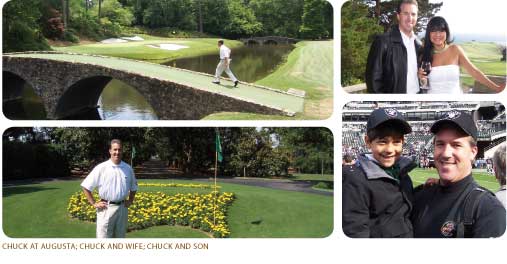
Conversation with a California Writer - Kareem Abdul-Jabbar
Randy Perry & Terence McHale
Published Issue: Summer 2007
There have been six books. His story of the black tank brigade serving under George Patton in the Second World War, “Brothers in Arms,” is an involving piece of history largely forgotten or ignored by other historians. “A Season on the Reservation” is a narrative of encountering frustrating cultural differences and of Kareem’s coaching experiences with the impoverished White Mountain Apaches.
The autobiographical books, “Kareem” and “Giant Steps,” are filled with the kind of revelations usually reserved for close friends and trusted confessors. The detail, especially in “Giant Steps,” is unexpected from someone with a reputation at the time for being reticent, although the honesty makes for good reading and the reflections keep your attention.
His newest effort is less about him.
“On the Shoulders of Giants” is a well-reviewed visualization of a politically vibrant, artistically charged period between 1920 and 1940 in Harlem. The Black Renaissance is what he calls it, and Abdul-Jabbar, eschewing the Disneyfication of black culture, takes the reader through a lively trip into the neighborhoods of a place long gone and, thankfully, not forgotten.
Kareem Abdul-Jabbar has been a noted American figure from the day he started as the freshman center on the basketball team at UCLA more than forty years ago. Freshmen players were not eligible to play on the varsity then and were relegated to smaller gymnasiums against mostly junior college squads. Abdul-Jabbar, then known as Ferdinand Lewis Alcindor, Jr., was the centerpiece of a team that humbled their own varsity - the varsity was number one in the country, yet only the second-best team on the Bruin campus.
Kareem’s arrival in Westwood from Power Memorial High School in New York meant John Wooden would find his place in history as more than a coach who won two championships after sixteen years of running the bench. A fine coach, and a smart recruiter, Wooden would instead be the architect of a sports dynasty that challenges the Yankee and Celtics legends.
UCLA has eleven National Championships; Kareem was responsible for three in a row. He was so dominant that beyond winning the Most Valuable Player Award every year, the rules of the college game were changed to take away the dunk and make it more difficult for Kareem to score. Of course, nothing could be done to interrupt the poetic grace of his unstoppable sky-hook.
California Conversations met with Kareem Abdul-Jabbar in a small room at a modern business building. We arrived twenty minutes early. Abdul-Jabbar did not make us wait.
He needed to duck his head when he entered the room. There were no surprises. He is seven feet two inches tall and looks to be close to his playing weight of 265 pounds. He was wearing a gold tee shirt and tight jeans. There are only a few in his generation who can wear either comfortably. He shakes hands and sits down. Kareem is completely bald. The mustache and tickler he has worn for decades are sparse. Except for filling out a bit, his face has not changed much since we first saw him as a young man in sporting magazines.
Kareem leans forward when he sits down. His long arms lock between his legs and he waits for the question. There is nothing impatient in his manner. In one of his books he said he’d been considered once by interviewers to be taciturn and given to providing monosyllabic answers with no embellishments. None of this is true in our meeting. He is not ebullient, but he is pleasant and unrushed.
We spoke first about his early Hollywood involvement. His days as an actor are most memorable from his self-mocking role as a co-pilot in the spoof, “Airplane,” and the fearsome martial arts adversary in the Bruce Lee film, “Fists of Fury.”
There is much more. In 1994, Kareem produced a movie about the early civil rights activist, Vernon Johns. The film explores the life of a man born in the first generation after slavery, a life that was framed and changed by the indecency of Jim Crow laws and ended at the onset of the modern Civil Rights Movement in 1965.
California Conversations: Why were you drawn to Vernon Johns?
Kareem Abdul-Jabbar: I felt Vernon Johns was important because he was Martin Luther King’s mentor. He was the first to explain the pertinent issues with regard to human rights and equal opportunity that Dr. King espoused throughout his lifetime. Dr. King would never have understood the depth of those issues if it hadn’t been for Vernon Johns. Also, nobody knows Vernon Johns anymore so it was a great opportunity to inform people interested in Dr. King’s life and the history of the Civil Rights Movement.
CC: He was virtually self-educated.
KAJ: Just about, yeah, because the school system in the South, where he was from, was not about getting people of his color to the top of the educational heap. He got there by himself.
CC: Interesting how he learned Greek to pass the entry tests for college…
KAJ: And Latin. He was just an extraordinary human being. Even without regard to the issues he was involved with, he was very determined.
CC: Does this country still produce Vernon Johns-type people?
KAJ: I don’t have my finger on that pulse, so it’s hard to say. I hope we still do. Those are the people who make a difference.
CC: How close was his mentoring of Martin Luther King?
KAJ: He was directly involved in the public education of Martin Luther King. King even ended up taking over for Vernon Johns at the Dexter Avenue Baptist Church. Both of them were great preachers in the Southern tradition.
One of the final stops in Johns’ career was becoming the 19th pastor at a small church in Montgomery, Alabama, that was originally called the 2nd Colored Baptist Church - a youthful King - only twenty-five when he took over the pulpit - was the 20th pastor.
CC: Any differences in style?
KAJ: Johns was hard on his own, on the people who were supposed to be on his side; he was as hard on them as he was on the people with whom he had issues. He couldn’t compromise. He wanted the people in his own congregation to make a statement that they could not afford to be complacent. They could not be comfortable and hope they could keep their heads out of the storm while the storm rained on everyone else.
CC: Did he pay a price for his toughness?
KAJ: He alienated people, even his own family. His children were afraid of him.
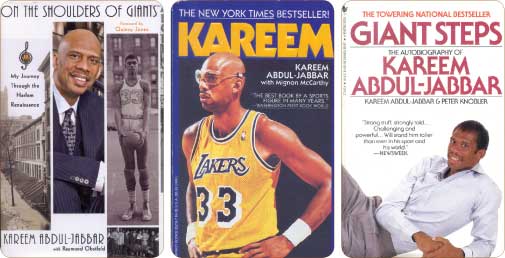
CC: You’ve written about the Harlem intellectuals between the two great wars needing to break with Booker T. Washington...a generational shift...did the same thing happen with Martin and Vernon Johns?
KAJ: Martin toned down Vernon Johns’ approach. Martin actually had it easier than his mentor. Vernon Johns was totally not going to compromise.
CC: And at the end, does it matter that Martin did not bring Vernon Johns, an old man then marginalized by his many confrontations, to the March on Washington?
KAJ: Dr. King understood Vernon Johns wanting to see meaningful change and his belief there was only one way to cause this meaningful change and that was to confront the issues head-on. You need to be confrontational while maintaining the moral high ground. I think the relationship was good between the two of them, but again, Martin had it easier than Vernon Johns, an easier personality and people were more willing to embrace progress.
CC: The words of Vernon Johns survive as one of the first black preachers to insist on publishing his sermons.
KAJ: People forget that even great black preachers had a difficult time because no one cared about what they had to say. Probably the only black preacher in the country with any access to the national news was Adam Clayton Powell, Sr., at the Abyssinian Baptist Church in Manhattan. And if his church hadn’t been in Manhattan he wouldn’t have received any attention either.
CC: How difficult was it for you as a producer to be able to sell the Vernon Johns story?
KAJ: It was easy because James Earl Jones (Academy Award winning actor for “The Great White Hope” and the voice of Darth Vader) wanted to do it.
CC: Your involvement wasn’t enough?
KAJ: It’s not easy to make that kind of shift from one career to another. James Earl Jones wanting to do the film helped make more people listen. He took a couple meetings with us and was totally committed. He had done a piece on the nightly news, just a little snippet on Vernon Johns’ life, a confrontation with a sheriff, I believe, or a police official in the South.
CC: Did the Vernon Johns experience encourage you to research and write history?
KAJ: It helped, sure. It made a difference but I’ve always had an interest in history.
CC: You wrote a book called “Brothers in Arms” about the 761st Tank Battalion in World War II. It was evidently prompted by meeting someone, a gentleman who was one of the ...
KAJ: Yes, actually he was a good friend of my father. They were police officers together; Leonard Smith. I’ve known Leonard Smith from the time I was 6 or 7 years old. I knew him as one of my dad’s buddies who was a cop. Then, in 1992, I saw a documentary on the 761st Tank Battalion and he was in it. All of a sudden I realized who he was. I’d known him my whole life and didn’t realize the role he played in winning the war.
CC: The 761st was part of George Patton’s army?
KAJ: Yes.
CC: Was there an idea initially in Patton’s army that the 761st wasn’t capable?
KAJ: Patton had a negative idea about black troopers. He was forced to deal with the 761st Tank Battalion because they were the only well-trained battalion remaining that hadn’t seen any action, and he desperately needed bodies. In 1944, after the invasion of Normandy, there was a manpower shortage in the American army and the only people that had been trained who were not in combat units were black soldiers. Many of them were already in Europe. They didn’t even have to transport them over there. So, a lot of people went from service units into combat units and they were able to replenish Patton’s army.
CC: Your book mentions that most of the tank units would serve for a month or two and then have a break, but the 761st ended up serving two or three times longer. Was it the manpower shortage or was it because they were treated differently?
KAJ: They were treated differently. Any other unit would have been given some form of relief while they went from one hot spot to another.
CC: And how did Patton end up feeling about them?
KAJ: I think Patton finally appreciated them. Certainly some of the people they fought for definitely appreciated them. A general, other than Patton, went out of his way to get them the commendations they deserved. He would put the documents together and send the packets in. Then the paperwork would get lost in the bureaucracy because once they saw it was black soldiers, curious things happened. The general did all he could to see they got recognized because he realized how many of his boys’ lives they had saved, and he was very appreciative.
CC: So, did they get the recognition ultimately?
KAJ: (smiles) President Clinton, yeah.
CC: They were the original Black Panthers?
KAJ: Yes, they were. I believe that some of their children, who were living in the Bay Area, took that name because of how much they admired their dads for fighting in the 761st Tank Battalion.
CC: How many were there?
KAJ: There were 660 tankers in the 761st when they left Texas to go overseas.
CC: And how many came home?
KAJ: I don’t have the numbers now but between the dead and injured, the casualty rate was almost 50%.
CC: Their big moment was at the Battle of the Bulge?
KAJ: Yeah, certainly the most memorable or most noticed moment. Antwerp was the goal for the Germans, but there was a town that controlled all the roads and that’s where they and the 17th airborne did extraordinary work. They eliminated any possibility of the Germans controlling the roads to Antwerp. If the Germans had controlled the corridor to Antwerp it would have kept the Allied Army offshore and prevented them from getting supplies to the people who were trying to cripple Germany. Antwerp was the perfect port to service the attempt to enter the German heartland.
CC: The black soldiers perform admirably and the war ends…
KAJ: They were heroic…
CC: You allude to it in “Brothers in Arms” and in your “Black Profiles in Courage” but in your latest book you talk directly about the fact that after the war the black soldiers had different expectations.
KAJ: They realized that in coming home there was one issue that hadn’t been dealt with and that was how they were treated here in America. They wanted first-class citizenship. They felt they’d earned it. They had the determination of people who one way or another supported and upheld the war effort that saved America, and they could not go back to being treated as they had been before.
CC: ...the burgeoning of the Civil Rights Movement?
KAJ: Right. I’m convinced it began with people who were involved in the war effort.
CC: Is all the research you do a chore?
KAJ: I enjoy it.
CC: Are you surprised by the positive reaction to your writing?
KAJ: I don’t know. I’m pleased, but it’s not why I do it.
CC: Is writing a grueling process for you?
KAJ: It’s fun when you have something to say. If you don’t know what you want to say, it’s got to be murder.
CC: When you have a project going, do you write every day?
KAJ: More or less. I figure out the structure of how to frame what I want to say. I need to keep it coherent and make sure it holds together and people can understand the story I’m telling. You just can’t come out with a kernel of what you want to say and leave it there. You have to show the rationale for the facts that lead up to your conclusion.
CC: How much do you write now?
KAJ: Well, I don’t have a project going now. I don’t write unless I’m on a project. On “Brothers in Arms” I was so consumed with the text that I realized after the book was published I didn’t get the pictures and maps in there that I wanted. I was concentrating completely on the text and making sure it was complete and it would withstand scrutiny.
CC: Does writing a book take over your life?
KAJ: I need to do other things at the same time because when I go away from a project and come back to it, I’m fresh, my energy is renewed.
CC: You’ve worked with co-authors on your books.
KAJ: Yeah.
CC: It’s interesting that you chose different co-authors for each of the books.
KAJ: The first couple I didn’t choose them. It was only recently that I got to pick the people with whom I work.
CC: So the publishers chose…
KAJ: Yeah, they did.
CC: Did that bother you?
KAJ: No. No. My very first book, I’d known my co-author since high school.
CC: That’s “Giant Steps.”
KAJ: “Giant Steps” yeah. Peter Knobler. We’re still friends. But, the rest of the co-authors I didn’t know until I decided to do the project.
CC: In “On the Shoulders of Giants” there are chapters that specifically have your byline.
KAJ: Those were chapters in which I did not collaborate. They were all mine and they were chapters my co-author said he didn’t know anything about and thought I should get special credit.
CC: Your first book is very candid - surprisingly so. You write in a later book that you had doubts just before its release. Do your kids ever say, Dad, couldn’t you have held a few things back?
KAJ: No. I wanted to be truthful.
CC: You write poignantly about the emotional distance from your father…
KAJ: He was very quiet. My dad was a very reserved person and I think his career as a police officer helped shut him down because he saw a lot of bad things. We became closer when I moved to Los Angeles.
CC: You were an only child.
KAJ: Yes.
CC: Are you close to your own five children?
KAJ: Oh yeah, I am. I went the extra miles, whatever it took to make sure I kept the lines of communication open with my kids. They are good people. I’ve been very blessed.
CC: Are you a grandfather?
KAJ: (smiles) They won’t get married. I guess they watched my life.
CC: In your twenties you were very close to Hamaas Abdul-Khaalis? He taught you Islam...huge figure in your life?
KAJ: For a while, yes. But he got bent.
Several members of Abdul-Khaalis’ family were slaughtered by a rival Muslim sect in a home owned by Jabbar. Abdul-Khaalis himself ended up in prison after instigating his own hostage taking response.
CC: He gave you your name?
KAJ: Yeah.
Kareem initially changed his name to Abdul-Kareem. At the prompting of Abdul-Khalis, he changed his name to Kareem Abdul-Jabbar, meaning noble and generous, servant, powerful.
CC: Abdul-Khaalis persuaded you which girl of two in question to marry?
KAJ: Which choice to make.
CC: You’re very honest about your growth as a human being.
KAJ: I’m very glad that I got to the part that I felt confident enough to make my own decisions.
CC: You learned Arabic to get to the true source of Islamic study material?
KAJ: Right.
CC: Do you still pursue it with the same ardor?
KAJ: Not maybe with the same ardor, because I’ve become a lot more secular, but it is still my moral foundation and it is still what I believe in.
CC: As I ask these questions it makes me wonder if you’ve had any real privacy since your days at UCLA?
KAJ: It goes back further than that. When I was in grade school and already over six feet tall my choir class went to Jack Dempsey’s Restaurant, and Dempsey made a point of coming over to meet the tall kid from the Catholic school.
CC: Did that bother you?
KAJ: Dempsey was great with kids. But I knew I was being treated differently.
Abdul-Jabbar was 6’10” tall as a high school freshman at a time when Bill Russell was dominating professional basketball at 6’9”.
CC: At this point in your writing career can you choose who you want as a co-author?
KAJ: They let me have a strong say in choosing with whom I want to work. And I like having a co-author because it allows me to keep pursing other interests.
CC: You said in the past that had you not been an athlete you would have been a history teacher.
KAJ: When I left UCLA I had a degree in history and a minor in English. At first I was an English major, which leads to writing, so I’ve really built on things I’m passionate about. I thought of being a journalism major in college, but UCLA didn’t have a school of journalism.
CC: UCLA didn’t have a school of journalism?
KAJ: No, but they had a great English department.
CC: Your first move toward journalism took place when you enrolled in a youth journalism project called HAR-YOU-ACT run by the brilliant John Henrik Clarke?
KAJ: Yes, although Dr. Clarke did not run the program after putting it together. It was actually administered by a lot of different people. The guy who was in charge of the journalism workshop was named Al Calloway.
CC: Any relationship to Cab?
KAJ: (smiles) No relationship to Cab, but he led the workshop and ran it like a publisher. He taught us how to investigate a story and write about it. He was firm, and said, all right, we need to put out a newspaper every week. And it was real writing. We had to write about things that happened and we observed.
CC: At 17, you get a genuine press credential. I mean, that’s pretty heady stuff.
KAJ: Yeah, it was.
CC: You went to a press conference for Martin Luther King?
KAJ: I did. Being the tallest in the room I took my usual position in the back of the group. I thought it was a big deal being there. I remember one guy I recognized, the local broadcaster - there were some other recognizable guys I’d seen on television.
CC: Was this the first time you’d seen Dr. King?
KAJ: Yes, it was. I’d seen him on television. I’d observed different moments in the Civil Rights Movement on television.
CC: And you dared to ask a question?
KAJ: Yeah. I asked him for his assessment of Dr. Clarke’s performance in setting up the Har-You-Act program...he said it was important. He said he felt it was probably successful.
CC: Dr. King at this point is 34-35 years old and has less than four years left before his murder. How often do you run into him over the years?
KAJ: I never saw him again.
CC: Were there other political figures that influenced your life?
KAJ: Adam Clayton Powell, Jr.
CC: The congressman?
KAJ: Right. I used to live in his district. We moved from Harlem to the northern end of Manhattan, so I wasn’t technically in his district anymore, but I spent so much time in Harlem.
CC: Adam Clayton Powell, Jr. is another one of those extraordinary figures of American politics that people don’t know anymore.
KAJ: That’s true, unfortunately.
CC: What was it like? Did you see him around?
KAJ: Yes. I would see him around the city and people surrounded him...they wanted to touch him. He spoke at UCLA my senior year. He was an incredible guy and very knowledgeable about what was going on in the world. Plus, a sidebar, he knew all the bright lights in the Harlem Renaissance. Fats Waller learned how to play the organ at his father’s Abyssinian Baptist Church organ because Adam Clayton Powell, Jr. would let Fats in when everybody was gone.
CC: Adam Clayton Powell Jr. got into trouble over campaign funds and was deserted by the people who supported him in Washington, right?
KAJ: His base in Harlem was assured. They couldn’t get rid of him. They tried, but the people in Harlem figured if those people in Washington didn’t like him, he had to be doing something right.
CC: Do you remember him heroically?
KAJ: Yes, absolutely.
CC: A significant, positive figure in your life?
KAJ: He was important. He was critical about the political parties in America, and when he went overseas everybody thought he would make anti-American comments. He didn’t. He said America was not perfect, but it was the best chance the world had for a truly free society. Then when he came back to Congress they gave him a standing ovation and appreciated the fact that he was a loyal American. He was very charismatic, and he loved the attention.
CC: Did you get to know him personally?
KAJ: I did speak to him. I didn’t get to know him. He was married to Hazel Scott, a great jazz musician and I was familiar with her music.
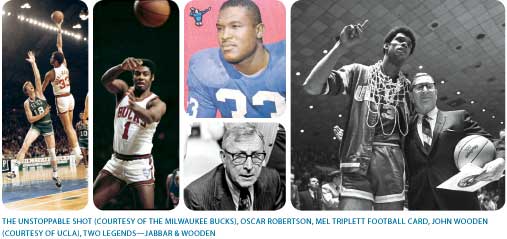
CC: He wasn’t married to her at the end though, was he?
KAJ: Not at the end. He had a number of wives.
CC: He was a fabulous character.
KAJ: Yeah, he was.
CC: In the book, “On the Shoulders of Giants” the way you paint Harlem, I felt like I was walking down the street.
KAJ: Well, thank you. I’m glad you enjoyed it.
CC: I loved the way you break down the different neighborhoods...would Adam Clayton Powell be one of those striving for better things who lived in the ‘Strivers’ section of Harlem?
KAJ: The Abyssinian Baptist Church was right across the street from ‘Strivers’ but I don’t know exactly where he lived.
CC: The Harlem Renaissance...the incredible figures...seminal political movement, great writers, the music...you mentioned Fats Waller...Fats was dead at 39.
KAJ: Yeah, that was a shame. He died during the war.
CC: You write a couple of times about hearing your dad - who was trained at Julliard - playing Jazz when you were still in your Mom’s womb and your Mom taking you to pick him up on Sundays for a family breakfast when he got done playing and, of course, meeting Thelonious Monk and the importance of John Coltrane. I guess I’m leading up to asking if Jazz is dead.
KAJ: Jazz has never gone away, particularly worldwide. They love it in Europe and Japan, which assures it a long life, but it does not have the following one would expect in America. Dance took hold with the emergence of R&B, and the importance of virtuosity on a musical instrument got lost.
CC: Is a political renaissance possible with hip-hop like the one that accompanied Jazz in Harlem?
KAJ: There is no political message in most hip-hop. It’s just the latest flavor of popular music in the black community. There’s no time or interest in becoming a Charlie Parker or a Miles Davis.
CC: You write affectionately about Miles Davis - all time favorite jazz musician?
KAJ: Certainly one of them. It’s hard to name one, but certainly one of them.
CC: You were nice to Miles in your writings though because he did go through a period of decline.
KAJ: Yes, he did...I think what he achieved vastly outshines any of his failures. He didn’t let his failures...he didn’t stick with his failures. He got himself back physically and through his fifties and sixties was the cutting edge of what Jazz is all about. I think that is a lot more important than the times when he was down. My dad was a corrections officer for six, eight months before he became a policeman, and he saw Miles at Ryker’s Island. Miles was no angel, but once he cleaned himself up he stayed that way and took care of himself.
CC: Your life was changed by HAR-YOU-ACT and the mentoring you received there from Al Calloway.
KAJ: Yes.
CC: It might never have happened if your high school basketball coach had not used the ugliest of racial epithets to motivate you. Your response was to cut short a summer basketball camp and attend HAR-YOU-ACT…
KAJ: Yes.
CC: Coach Donahue…
KAJ: Coach Donahue was someone...he had a bad moment, okay, he made a mistake. He overreacted, I think, because we had an important game to play, and I wasn’t playing very well. He used the wrong word to describe the way I was playing. But, Coach Donahue was an extraordinary man. What I learned from him about the game of basketball, what I learned from him about being a good citizen, has been with me my whole life. He’s an extraordinary man.
CC: Did you love him?
KAJ: Absolutely.
CC: Looking back on it now, you’re quieter, but this was a defining moment in your life.
KAJ: It was, because at that point I had nothing but positive feelings about Coach Donahue and then using his choice of words, he made me think what’s behind it all? It was like a real betrayal of trust. It certainly disillusioned me.
CC: To the point that you were going to leave Power Memorial High School?
KAJ: Right. I thought about that for maybe a day or two.
CC: Did he ever apologize?
KAJ: Yeah, he came by and spoke to my parents about it. He in no way was a racist, and he wasn’t trying to hurt me. He was trying to push my buttons; he just went too far. It had a devastating effect on the trust I had for him because I really trusted him and appreciated him and learned a lot from him.
CC: Your next coach, of course, was John Wooden at UCLA. In your books, Coach Wooden is taciturn. Did you ever have an in-depth conversation with him?
KAJ: Oh, yes, certainly. Of course, Coach Wooden’s whole idea was that he wanted us to get our degrees and learn how to be good citizens.
CC: Great man?
KAJ: Extraordinary man. Extraordinary American.
CC: One of the great men you’ve met?
KAJ: Yes, absolutely. Yeah, I mean he was someone all Americans should know about because of what he stood for and what he achieved as an athlete and as a human being, certainly as a teacher and a coach.
CC: I learned from your writing that he was a great athlete at Purdue and played in the early days of professional basketball.
KAJ: He was, I think, for a while there, the highest paid professional basketball player in the country.
CC: Did he ever mention to you when you were at UCLA that he played basketball against the all-black Harlem Rens?
KAJ: No. For him that would have been talking about things that happened thirty years earlier that nobody knew anything about. We talked about it when I got older and he told me about getting to know Fats Jenkins, the great guard for the Rens, and following the Indianapolis Clowns Negro League team because there was no major league baseball in Indiana.
CC: Would Wooden invite you to his house, would he socialize with his athletes?
KAJ: Yes, and so would his family, his wife, and even his grandchildren.
CC: Did you stay close to him?
KAJ: Yeah, these last couple of trips to the hospital really bothered me. He’s still very sharp. The last time I saw him, we started talking about old-time teams.
CC: Did he say that yours was the best team?
KAJ: No. (laughs) We were talking about baseball. (Baseball was Abdul-Jabbar’s first love.) He has such a broader view of it because he was born in 1910. We had a little dispute about who would play first base.
CC: Who would play first base?
KAJ: On Coach Wooden’s team?
CC: Yeah.
KAJ: Lou Gehrig.
CC: Who would play first base on your team?
KAJ: Stan Musial.
Mel Triplett is a forgotten running back who played for a few years in the late 1950s for the New York Giants. In sports trivia he is important because he was a favorite of Kareem’s. Triplett wore number 33. It is the number Kareem chose in high school and has worn ever since.
CC: Talk a little basketball?
KAJ: Okay, if you want to.
CC: Did you ever play one-on-one against Bill Walton?
KAJ: No. (smiles) We never did.
CC: C’mon, just the two of you guys getting together, never played?
KAJ: No. Really. I met him. I was in Los Angeles after the professional season and he wanted to meet me, so he came by the hotel where I was staying just to say hi. I didn’t play against him until we were both in the NBA.
CC: Friends?
KAJ: Oh absolutely.
CC: Wilt Chamberlain - complicated relationship?
KAJ: Yeah, you know he was someone who was a hero of mine when I was in high school and he’d come to Harlem and let me hang out with him. He was someone I admired and then I had to compete against him. After I broke his scoring record, all of a sudden he started taking shots at me in the press.
Kareem is the most prolific scorer in NBA history. He scored 38,387 points. Karl Malone is now second, with 36,928; Michael Jordan has 32,292 and Wilt retired with 31,419. Julius Erving scored 30,026 while playing on both the ABA and the NBA.
CC: You wrote a tough piece on Wilt in the book detailing your final season, and you took umbrage with his support of Richard Nixon…
KAJ: I didn’t agree with him. It got a little nasty after I broke his record and he became very critical. It was not a good time for us.
CC: Did you become friends again?
KAJ: Yeah, we buried the hatchet. I’ll be the first to tell you, I couldn’t eclipse him. I was fortunate to be able to last long enough to break his scoring record, but that’s just one small aspect of his career.
CC: Everybody asks who is the best basketball player ever? In your book you mention Connie Hawkins being a mixture of both a great street basketball player - a star at the Rucker’s Tournament on the courts of Harlem - and a great NBA pro?
KAJ: Connie did great things...time went fast for him...he was never in great shape. He didn’t have that kind of dedication. Oscar Robertson I think certainly fits the bill.
CC: Oscar did a better job....comes closer to being the greatest player?
KAJ: Yeah. Oscar was not only great, he made everyone with him great, too.
CC: Was Connie Hawkins a wasted talent?
KAJ: I don’t think it was wasted, but he didn’t shine as brightly as he could have. Dr. J (Julius Erving) had a lot of Connie’s physical attributes, but took them a lot further just because of his dedication. He was in much better shape and more determined.
Connie Hawkins was limited to only seven years in the NBA because of a college-age betting scandal. He spent what could have been his greatest years performing with the Harlem Globetrotters and playing in smaller leagues. A star with the Phoenix Suns, he is a member of the Hall of Fame.
CC: Your first hook shot, you were nine-years-old. The sky-hook?
KAJ: There wasn’t much sky to it, but I got it off anyway. I missed my first hook shot.
CC: You made a lot of them.
KAJ: I worked real hard at it for a long time.
CC: Why don’t other people do the sky-hook?
KAJ: It’s not sexy. The kids, they look at Michael Jordan or Dr. J and they want to play the game like that. I wanted to play like Elgin Baylor...then I realized how the hook works.
CC: What are the mechanics of the sky-hook?
KAJ: The shot is the same every time. You need to get your back to the basket and keep the ball between you and your opponent. You get lift and turn your body toward the hoop, stretch to your greatest height and extend your arm. You shoot the ball off the tips of your fingers when you get to the highest point.
CC: Did anyone ever block it?
KAJ: No. No one guarding me ever blocked it. I blocked a few, but no one blocked mine.
CC: You scored 38,000 points with the shot the Milwaukee Bucks announcer first named the sky-hook.
KAJ: Right, but you know when I started playing I wanted to be Elgin Baylor. I didn’t want to be Bill Russell. After what I learned about the game, I saw that somebody with Bill Russell’s physique and athletic ability could dominate the game in a certain way, and I saw I had to compare myself to him rather than Elgin Baylor.
CC: Magic Johnson?
KAJ: One of the greatest point guards ever, similar to Oscar Robertson, but bigger and different in style.
CC: Are you guys close?
KAJ: Not very. We’re friends. He’s very much into his business thing now.
CC: Will you ever be a head coach in the NBA?
KAJ: Head coaching prospects don’t look bright. There are many reasons. I got into coaching late. My playing career lasted twenty years and I was burned out when it was over. I wanted to get away. It took me a couple more years to realize I wanted to get into coaching. And, I also had a reputation for being prickly.
CC: Did you deserve the reputation?
KAJ: I don’t think so...I don’t know...I got tired of the same questions about points and rebounds. I have learned as a coach that it is important to play the game and explain the game both...I lacked perspective.
CC: Your teammates called you Cap or Captain.
KAJ: I was honored to be called Captain. I appreciated what it meant...every kid, no matter their sport, dreams of leading his team in the big game. I saw myself at the head of the cavalry...it was a privilege to be the ‘go-to’ person.
CC: You’ve started the Kareem Abdul-Jabbar Foundation for the purpose of mentoring young people.
KAJ: We’ve got to do something. Young people today want a better life, but we’re not making it possible for them to get there. It is absolutely essential to coordinate the efforts and the funding of government and private organizations to provide safe options for young people to participate in our society.
CC: Good luck.
KAJ: Thank you.
The first of the mentoring centers being sponsored by the Kareem Abdul-Jabbar Foundation will be named in honor of Jazz musician, Thelonious Monk.
Jason Windsor: Pitching One Step Away From the Major Leagues
Walter Hughes
Published Issue: Summer 2007
I used my signing bonus to buy a Volkswagen and pay off a debt to my dad. I owed him about $7,000.
I think if you do your job consistently day in and day out, then you’ll impress the right guy. I don’t know who that guy is.
Every team is looking for a good pitcher. You’re not competing against the guys on your team; you’re competing against every other pitcher out there.
You take a little bit from what each coach has to say and certain things click. You take advice and use it however you’re going to use it.
I don’t think there was any doubt in my mind that I would be playing professionally. My dad always said I could do it. I just work hard and get it done
Christine Weicker: News Producer For CBS
Robyn Black
Published Issue: Summer 2007

California Conversations: What does a news producer do?
CW: The responsibilities of a producer vary story-by-story. However, in broad terms, they do research and story composition - as in who do you need to talk to, what do you need to see - producers direct what I call ‘little movies’. You’re responsible for working with the editor. You have to make sure the program makes sense visually. For the logistics there’s the satellite feed or shipping the story via FedEx. In broad terms that’s what we do.
CC: When you do 60 Minutes pieces do you write everything the correspondent says?
CW: It depends on the correspondent. Some of them write more than others. It depends on if they have to be in Egypt at the time you’re doing the first draft of the script. The scripts are important but the interview is critical. That’s where the correspondents make their mark.
CC: Do you write the initial questions?
CW: You certainly have a discussion, because you will have talked to the person ahead of time.
CC: Unlike newspapers, the electronic media is growing. What kind of money does a typical producer expect to get?
CW: It’s a good middle class job.
CC: Are news producers going to make six figures?
CW: Yes, most of the time.
CC: How much traveling is involved?
CW: I covered the economy in New York for four years and travel was 60 blocks away to Wall Street. If you’re on the Presidential campaign, you have to write down your address so you’ll remember where you live because you’re on the road all the time. If I was home ten days a month that was the headline.
CC: Was it difficult to maintain a personal life?
CW: Yes, at that point. But you transition.
CC: What is your lifestyle on the road?
CW: It is a hard day’s work and then you decompress and get a good night’s sleep. You don’t party at night, at least I couldn’t. I read a quote somewhere from Mike Wallace that said when he’s on the road he behaves like a boxer in training.
CC: You’ve been lucky enough to work with virtually everybody at CBS?
CW: Most of them, yes.
CC: Do you have a favorite?
CW: No. It’s a professional relationship. You don’t have that luxury because you get thrown in on a deadline situation. I have to deliver. It’s a job and it’s a hard job.
CC: Any story you did that stands out?
CW: El Salvador was a big deal for me. I was in and out for a couple of years, but I covered the country for both the evening news and for 60 Minutes. They were very interesting issues and an interesting time.
CC: Have you loved your career?
CW: Yes. My mom suggested that I become a journalist. She told me when I was very young, around four, to be a journalist. She said it would be interesting and that I’d be able to meet people. I found my way there and I’m delighted to have done it.
CC: Is Katie Couric’s show going to make it?
CW: I hope so. We’re all in the same fight here. This is about doing good journalism for people. We have a public service component.
The Reasonableness of Liz Hill
Aaron Read
Published Issue: Summer 2007
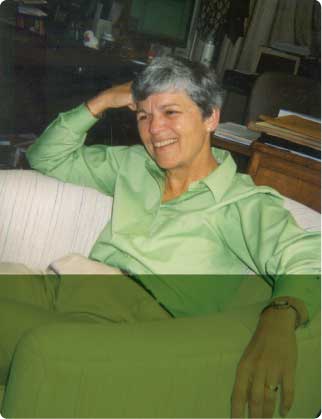
The Legislative Analyst
There is an article from the Journal of Economic History, September 1996, that tells the story of the California state budget battle of 1933.
In an attempt to close a 66 million dollar deficit without raising taxes, Governor James Rolph, the 27th governor of California, made decisions that sound all too familiar. He reduced the operating budget by $23 million, went after the highway budget, and allowed money from a permanent education fund to be earmarked for other purposes.
The front man for Rolph was the Director of Finance, Rolland A Vandegrift. Rolland gruffly told everyone there was no period after the initial A since it didn’t actually stand for a middle name. There wasn’t much nonsense to Vandegrift. He rationalized the reduction of per pupil spending from thirty dollars to twenty-four dollars by saying it was mathematically consistent with the Depression Era drop in the general price level.
Vandegrift was a gutsy, thickly built, balding forty-year-old from Washington D. C. who settled on a ranch outside of Sacramento. Nine years later, when the Legislature was dealing with a California emerging from the Depression and entering the Second World War, Vandegrift was the first person chosen to serve in the new role of California’s Legislative Analyst.
The Legislative Analyst and the supporting office of hard working policy wonks, number crunchers, pragmatists and clever soothsayers were created to provide the Legislature with an unbiased view of the fiscal implications of legislation and the Governor’s Budget.
Vandergrift kept the job even as he began dying seven years later from cancer and was unable to leave his beloved ranch. His loyal friend and closest aide, A. Alan Post, served as his conduit, acting director, and in July of 1950, his successor.
August Alan Post was named after a favorite uncle who was too successful in business to accept a cabinet job from the doomed President William McKinley. Post, natty, erudite, and remembered by contemporary legislators as part banker and part judge, joked somewhat insincerely that his first name was actually Anonymous. He was called Alan by his friends, and Mr. Post by everyone else, and for twenty-seven years he was the bump in the road when legislative and gubernatorial ideas needed to be converted into cost.
By his own description, Post ran the Legislative Analyst’s Office like a czar. Every letter sent from his staff of more than one hundred crossed his desk before a stamp was licked and pressed in the corner of an envelope. Every report was subject to his editing.
His logic was simple. “I never knew what the governor’s office, the legislators or reporters were going to be asking so I needed to know everything.”
Now, just shy of his ninety-third birthday, Post told California Conversations that the most important part of being the Legislative Analyst was “to be absolutely impartial.”
Post rarely went to lunch with anyone except his own staff. He didn’t want to be seduced by the politicians, many of whom he admired for their own disciplined approach to legislation.
“I was loved some days and hated others by the exact same elected officials. I didn’t always have a thick skin. I just never forgot that the responsibility of the Legislative Analyst is to get beyond the emotion of an issue to the cost.”
While running for governor in 1966, the political neophyte, Ronald Reagan, whenever he was confused on the details of a particular issue, told reporters the first person he would ask for advice would be Alan Post.
Reagan became the third governor to offer Post the Director of Finance position in his administration.
Post was not interested.
The relationship between the two was later strained when Reagan proposed a budget that contained an across-the-board ten percent cut of every item in every category.
Post lambasted the proposal as unworkable. “It didn’t make sense at almost any level,” Post said. “Much of our budget funding is statutory; some is constitutional, and many of the other cuts just didn’t make sense.”
In a hearing before the Assembly Chair of Ways and Means, Willie L. Brown, the up and coming legislator from San Francisco, Post explained, “If you adopt an arbitrary ten percent cut the end result is that the budget will be called the Property Tax Increase Act. Whatever the state fails to fund will be backfilled by the county that can only accomplish it by raising property taxes.”
A furious Ronald Reagan responded with the biting remark that, “Alan Post is more ambitious than smart.” Reagan then took it a step further by alleging the Legislative Analyst’s Office was “run over with Democrats.”
Post, a Republican himself, although not for much longer since he soon registered as a Decline to State, did something he’d never done before. He checked the registration of his employees and discovered “they were almost uniformly Republican.”
Post did not back down. Reagan did. In retrospect, Post said it was Reagan’s staff that probably caused most of the problems since Reagan tended not to get involved.
At the age of sixty-five, more interested in pursuing what would become a credible career as a painter, and amidst persuasive efforts from members of both parties that he change his mind, Post retired. He was replaced by an Ivy League graduate with a doctorate from Michigan and a long list of honors. His name was Bill Hamm. He proved himself a knowledgeable foil to a quirky Jerry Brown and his chief of staff, Gray Davis. He was also Alan’s nephew, the son of his wife’s sister.
“Honestly,” Post still says. “I don’t think it hurt that Bill was related to me, but there was a search committee and I didn’t influence them. I think they were surprised by the family connection.”
Hamm would keep the job for nine years before going on to what Post calls “more remunerative opportunities.”
The search for Hamm’s replacement was intensive.
The choice was a pregnant thirty-six-year-old Stanford and Cal graduate from inside the Legislative Analyst’s own team.
Her name was Elizabeth Hill.
Elizabeth Hill
California Conversations spent time with Liz in her crowded office. There is more furniture in the small room than someone who designs such things would plan, and all of it appears a bit old, although it seems practical enough to be acceptable to Liz.
There are pictures on the walls of the three men who preceded her to a job that journalists have described as the conscience of the California budget process. There are other rectangular class pictures of legislators, and members of the Legislative Analyst’s Office gathering on the west steps of the Capitol.
The same ease with which Liz conducts her standing room only press conferences following the introduction of the Governor’s budget is evident in private. The camera doesn’t change her. She admits to living a “rule-driven life.” That too is evident. Liz is more neat than stylish. Her clothes are coordinated and she wears them well on a slim frame, the pressed slacks and blouse chosen for comfort and looking practical rather than pretentious. Her hair is short, the way she has worn it most of her life, beginning to take on more gray than brown, and is combed away from her appealing, favorite sister face.
Her charm is in the fact that she is smarter than everyone else but smiles about it and let’s you keep up. She has flawless skin, very clear eyes, a sense of self that makes every place her world, and she looks much younger than her resume would suggest.
Elizabeth Hill grew up in the Central Valley town of Modesto at a time when open fields backed new neighborhoods and farmers supplemented their income flying crop dusters over the many vineyards. Her mom was a schoolteacher and her dad was a salesman; she taught elementary grade children and her father made a living selling mostly salt and spices.
It is no surprise that she was Student Body President and qualified for the California State Finals in speech and debate.
California Conversations: What was a rebellious moment?
EH: Well, I think the difficulty on the rebellious part is that my parents divorced when I was about 16. There wasn’t a lot of time to be too rambunctious in my teenage years.
CC: Was the divorce a traumatic event in your life?
EH: Oh, I’d say...you know...you try to learn from it. It certainly affected my relationship with my husband. He is also from parents who divorced, so we’ve worked on our communication over the years to be sure we are on the same wavelength.
CC: Were you in organized sports?
EH: There were no organized women’s sports in school until I went to Stanford. Of course it was before Title IX and our basketball team had the jackets of the swim team. (laughs) I’ve been to the Women’s Basketball Hall of Fame in Tennessee, and it meant a lot to me because the first women’s intercollegiate basketball game was between Cal and Stanford. The score was 2-1, and Stanford won.
CC: Would life have been different if you’d been born a boy?
EH: Sure, but I feel like I benefited from many women who were pioneers in their fields. I do think if I’d been born later I would have liked to play more competitive sports.
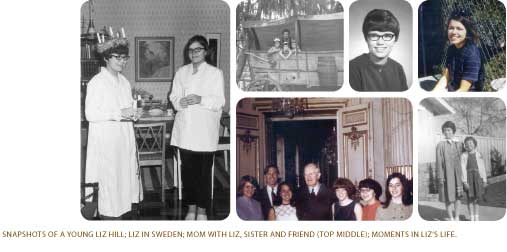
Liz graduated at the top of her class from Downey High School and was accepted to Stanford University. She received what was called a state scholarship, based in part on academic record and financial need. Those scholarships have evolved into Cal-Grants. She delayed her first year and accepted placement as an American Field Service student in Sweden.
CC: How long did you stay in Sweden?
EH: I lived for a year one hundred miles from the Arctic Circle. It completely changed my life. I’d never even seen snow fall out of the sky. When you’re outside of your own environment you ask yourself a lot of questions, you wonder what is really important, and you take in the diversity of cultures and opinions. (laughs) I learned to speak Swedish but not before I asked my Swedish mother if she was a sewing machine. We still laugh about that, even today.
CC: Is your life populated with old-time friends?
EH: I’d say I’m a person who has a few good friends.
CC: You were at Stanford during Vietnam?
EH: Yes.
CC: Were you a student protestor?
EH: There were certain days when people were asked to boycott everything. But, I had a job in the food service, and I really didn’t feel I could boycott my job. That was part of a way I could stay in school.
CC: Were you shaped politically at Stanford?
EH: That’s a good question. In Sweden there wasn’t poverty, and that really affected me. And there were kids at Stanford whose food budget for the week was more than my family would spend in a month. There were different sorts of values to consider which did shape my views.
CC: Did you buy into the hippie culture?
EH: Not much. I wasn’t too much of a hippie.
CC: Did you inhale?
EH: (laughs) No.
CC: Did the politicians of that time inspire you?
EH: I was 12 years old when John Kennedy was elected. I remember the 50-mile walks and the long swims that were a part of the President’s Physical Fitness Challenge. There was an energy that I thought was really exciting.
CC: Were you Catholic?
EH: No, Protestant.
CC: Are you still?
EH: I think my Swedish experience affected me, because there were a lot of solid people who weren’t practicing formal religion, but at the same time had strong values and goodness in their lives.
CC: You don’t attend any church?
EH: No.
CC: You didn’t bring your son and daughter up in any church?
EH: No. My husband and I felt it was important for them to figure out their own religious beliefs. (Liz has two grown children; a married son and a daughter away at college.)
CC: Did you have interesting jobs?
EH: I worked summers in a cannery. Then I got a job working at CalTrans. I was hoping to work full-time at CalTrans, but when I finished college they were laying-off thousands of folks. Actually, my mentor at CalTrans said I should think about a position in the Legislative Analyst’s Office.
Liz takes a job as a staff analyst within the office of the Legislative Analyst when she is only twenty-six years old. The California budget is broken into issue areas and she is assigned criminal justice. On a staff of more than one hundred, only a few are women.
CC: Criminal justice a main issue area of concern for you?
EH: I didn’t really know anything about criminal justice but that was the assignment that was open. It was interesting dealing with the departments, lots of good public servants, as well as dealing with the advocacy community. I felt like a sponge. I did that assignment for a few years, and then I became the head of the Welfare and Employment Section, as we called it at the time. My son was born when I was in that assignment.
CC: Were you fast-tracking? Are people saying Liz is going places?
EH: It was a great opportunity early in my career. It wasn’t clear to me then that I would have any sort of shot at the head job.
CC: Are you an accountant at this point or are you a policy wonk?
EH: I’d say a policy wonk type. I think budgeting is a people business.
CC: Did being a woman mean you needed to behave differently?
EH: The atmosphere was collegial, but you had to pay your dues. The legislative committees and the departments didn’t always know what to do with a woman in the group. I remember my first meeting with the Department of Justice, which was about twenty special agents and me. The agents settled into the meeting and crossed their legs. I saw a number of guns waiting to be drawn if the need arose. I was intimidated. I have to admit it. I just kind of decided, hey, I like the work and I was going to do the best that I could and see what happened.
In 1986, with broad legislative support, Liz was chosen as the Legislative Analyst.
CC: ...a controversial decision?
EH: There were a number of candidates inside the office, and we all interviewed with the committee. But, you know, I think there was also some interest among our colleagues that the job go to someone from inside the office, who knew how the Legislative Analyst functioned.
CC: That’s your answer?
EH: (laughs) Yes.
CC: Alan. Were you close to him?
EH: I only worked one year under Alan. He was a legend at the time. I worked nine years under Bill Hamm. I thought he certainly built on Alan’s traditions in the office. He got us into the computer age; started recruiting more at college campuses and the like. I very much enjoyed our association.
CC: Do you go to them for counsel?
EH: I have a number of times over the years.
CC: Who else do you go to for counsel?
EH: That’s a good question; certainly members of the Legislature and my family. And I always turn to people in my office.
CC: Do you hire your staff?
EH: Yes. They officially become legislative employees.
CC: What would be the reason for firing someone?
EH: We’re not a civil service organization and for some people it’s just not a fit to do the type of analytical, non-partisan work in the time frame that we have to meet the Legislature’s needs.
In 1990, the people of California passed Proposition 140, which not only created term limits but significantly reduced the overall budget of the Legislature. The Legislative Analyst is supported evenly by the Senate and the Assembly.
CC: Prop 140 decimates LAO, doesn’t it?
EH: We had a tough time because our office budget was cut 60% and most of our budget is staff related.
CC: Wasn’t there discussion of making LAO independent of the Legislature?
EH: Yes, Proposition 158 went on the ballot in 1992 proposing to move our shop out of the Legislature’s budget and there was a companion piece for the Auditor. Neither of those measures passed. The Auditor’s Office was closed for a period of time as a result of Prop. 140.
CC: You had the wrong fundraisers.
EH: All we could do was make a sound argument for an independent voice.
CC: Are you building the staff back up?
EH: Actually, we had 106 staff at the time of 140’s passage. We’ve come up from 46 staff after the cut to 55 now. Today we’re at the office’s staffing levels of the early 1970s. In addition to our budget work, we used to do about 3,500 bill analyses a year and we had a representative testifying in the two Appropriations Committees. We had to figure out how we could do the job with 60% less people. So, we got out of the ongoing bill analysis business; kept the budget the focus of the office and broadened everyone’s assignment.
CC: Does policy dictate budgeting, or does budgeting dictate policy?
EH: I usually think the programs drive the money. But it gets tougher when you continue to address out-of-balance budgets. Then I think the answer to your question gets murkier, because when you’re not keeping up with costs, you begin to ask is the program still working the way the Legislature intended.
CC: Twenty-one years gives you a view of different leaders and different problems.
EH: We have gone through a number of economic cycles in my time in the office.
CC: Governor Wilson accused you of advocacy.
EH: I remember his comment being related to welfare reform and I don’t feel that was advocacy at all. We helped the Legislature view welfare reform from a long-term fiscal perspective based on elements successfully evaluated in other states or tried earlier in California.
CC: Is advocacy a dirty word for the LAO?
EH: We have to be sensitive that our advice is analytical.
CC: Do you feel the information you’ve provided tends to lead the Legislature in a certain direction?
EH: We are charged with looking for economies and efficiencies. I think we are instrumental in terms of helping assess the overall fiscal condition of California. We do it not only for the year we’re in, but the years coming down the road.
CC: It seems that when you issue your budget analysis, there’s invariably a headline - “Analyst Rips Governor’s Proposed Budget.”
EH: The Legislature often has different priorities than a governor. Part of our job is to help our bosses figure out where those differences are and how to make their priorities work.
CC: The first governor for whom you worked was Deukmejian.
EH: As part of the Legislature, we tend to interact with governors and their staff during the budget process. Jerry Brown was in office when I first joined the LAO.
CC: Did you have any personal interaction with Jerry Brown?
EH: Governor Brown called Mr. Post when he had a concern about an analysis I had done of the Arts Council.
CC: Have you had personal interaction with each governor?
EH: I have met them and, of course, a number of them served in the Legislature where I had the opportunity to interact with them.
CC: Do you have a favorite?
EH: That’s a slippery slope so I won’t go there. I do have admiration for a politician’s ability to take information, whether it’s on the budget or policy, and figure out a course of action that can be adopted. Governors and legislators deal with such a wide range of complex issues.
CC: Willie Brown tried to put you out of business in 1993.
EH: The office was zeroed out of the proposed Assembly budget for a period of time but ultimately funded by both houses that year.
CC: Can you be fired?
EH: Yes, any day, by the Joint Legislative Budget Committee.
CC: Do you ever worry?
EH: It’s interesting you ask that because when I was in graduate school we learned to always keep our bags packed. I thought that was sage advice, because if you are going to work in the policy arena, you have to be sure you’re in the position to say no. My husband and I structured our home finances to make sure we were each in that position if the situation called for it.
CC: Prop 98 sets a percentage of the budget that must be spent on education - complex and necessary or convoluted and confusing…
EH: Well, I’m not sure it’s delivered what the education community hoped for. I think often it has become the ceiling rather than the floor and it has shifted debate from what California really needs to fund in education to how do we meet the guarantee. And because Prop 98 is tied to the economy, if you actually look at how Prop 98 funding has gone since 1988, it’s been on a roller coaster. We recommended in the early ‘90s that the state unlock the budget so decision makers can set priorities rather than have the budget driven by so many formulas.
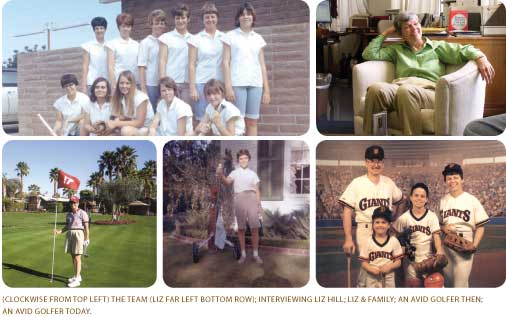
CC: Will it happen?
EH: Well, stranger things have happened. I didn’t think the Berlin Wall would come down. I didn’t think the Soviet Union would break up. So, I think if you’re a budgeteer you tend to be the type of person who sees the glass half full rather than half empty.
CC: Do term-limited legislators rely on you more than their non-term-limited counterparts?
EH: Clearly, we have the institutional knowledge, which can be helpful to new members. We help members understand why a proposal didn’t work the last time, maybe some of the upside or downside risks. I think the institutional role is important, particularly on issues like infrastructure or long-term financing.
CC: Your analysis comes out a week after the Governor’s budget?
EH: We put initial comments out about a week after and then the detailed analysis is usually released the third week in February.
CC: Is that a scary day for you?
EH: Yeah, I’d say it is.
CC: It’s a very bare stage. Are you ever thrown for a loop?
EH: Oh, of course. Luckily, my senior colleagues are in the room to help me when I get totally stumped. I struggle myself to be sure I’m translating the issues in a not too techie way so that it is more understandable.
CC: Have you ever made a major faux pas?
EH: Yes. The nature of forecasting is you know you’re going to be wrong sometimes. We’ll change our recommendation if we’re convinced we made a mistake or there was some piece of information we didn’t consider, or maybe didn’t understand appropriately.
CC: Is the Governor’s Department of Finance your rival group?
EH: When our office was cut by 60%, it was actually our colleagues in the Department of Finance that threw us a big picnic in Capitol Park. It is a professional relationship between the two offices. We have different bosses. We both want to get our numbers right, and we can have an honest disagreement about the numbers. I have lots of respect for them.
CC: Has it ever gotten ugly between LAO and Finance?
EH: I think sometimes there have been some difficulties over information.
CC: Has anybody ever tried to influence your report?
EH: Oh, sure. We know folks will try to influence our report, and it is important for us to get as much information as possible, whether it’s on the budget or our ballot work. We get the proponents and opponents of initiative measures in the room together to help us understand their respective points of view.
CC: That’s the discussion that should be taped and the public should see.
EH: Those can get heated and, of course, in a lot of the propositions there is a great deal at stake.
CC: Have you been forced to make changes?
EH: The courts have required a few. We are supposed to write for the average reader in California. One year we had a measure that affected the court, and we chose not to use the word “plaintiff” because we thought it was too techie of a word for the average reader. But the judge felt that “plaintiff” needed to be in the analysis and ordered the change.
CC: Do your moments of fallibility haunt you?
EH: Oh, you don’t like making mistakes, but you’re on to the next issue.
CC: So, what’s the expletive when it goes wrong?
EH: (laughs) I don’t know if I want to share that with your readers.
CC: Do you swear?
EH: Oh, sometimes, sure.
CC: Do you raise your voice?
EH: Yes.
CC: Do you yell at staff?
EH: I don’t like to be yelled at myself, and I try not to do that either. I mean this job takes a whole lot of each person doing their part or we don’t get things out the door. It takes us all rowing the boat at the same time.
CC: How much of the actual writing of the LAO reports do you do?
EH: I review our documents to make sure I understand the topic, that we have clarity, that we make an analytical case. But in terms of the overall writing, it is done mostly by my colleagues.
CC: What kind of hours do you work?
EH: I think this last January and February I worked about 200 hours of overtime. And then again May and June are the other big periods as the Legislature is putting a budget together.
CC: Must put pressure on the home life?
EH: I generally try to protect the evenings and the weekends as family time. I always tried to not take the work home, at least not while the children were awake. There’s no doubt the cycle made it hard on my family sometimes.
CC: Only four people have held your position. Is this an extraordinarily difficult job?
EH: It is very challenging because California, just over my time in the office, has changed dramatically and yet a lot of our governmental systems are the same ones that have been in place for many decades. It troubles me to see these constant budget problems.
CC: What budgeting trends frighten you?
EH: What concerns me is the focus on locking up the budget process for certain groups rather than thinking of the interest of the state as a whole.
CC: Can we afford to keep up?
EH: I think that your question goes to a fundamental question of whether or not we have a disconnect between our revenue system and our spending structure, and what the state’s priorities are overall.
CC: Do you think the California of our children can be better than what we had as children?
EH: It will be very different. I think it’s hard to assess “better,” but I look at how many more people are going to the university today than even when you and I went. There’s a lot of positive beneath the difficulties that we’re facing. We are working to solve problems.
CC: You feel positive?
EH: I feel hopeful.
CC: Of course you do.
EH: (laughs) I do.
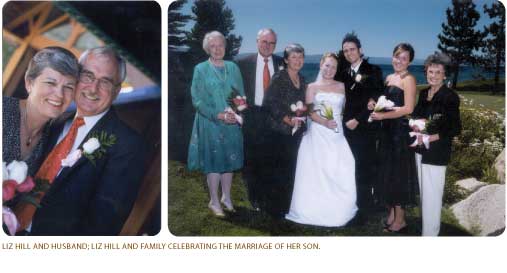
June 23, 1986: The day the Americas of Gil Ferguson and Tom Hayden Clashed
Terence McHale
Published Issue: Summer 2007
THE SPEAKER
Twenty-one years later, Willie Brown, wearing his trademark fedora inside, laughing, interrupted by a little boy pushed forward by his mother to have his picture taken with him, stopped in the hallway of the Capitol he once ruled, and acknowledged June 23, 1986.
There were thousands of days over the former Speaker’s sixteen years as the leader of the Assembly, most of them filled with the compliments of power and the drudgery of milk nursing members, but Willie remembered clearly the day Gil Ferguson, the dapper, defiant, war hero from Orange County introduced the resolution to expel the brilliant iconoclast Tom Hayden from the Legislature.
The charge was found in a 1952 addendum to the California Constitution. Article 7, Section 9 says in essence (and we draw some distinction here since Legislative Counsel ruled it was not germane in the Hayden case a year before the resolution ever reached the floor of the Legislature) that anyone who advocates the support of a foreign government during hostilities is ineligible for state office.
“Did you tell Ferguson you hated the son-of-a-bitch as much as he did?” I ask. “Did you say you’d let Ferguson bring up the resolution to expel Hayden, but you wouldn’t let it pass?”
“It was an unforgettable day,” Willie said.
“So it’s true?”
“Maybe.”
GIL FERGUSON AND TOM HAYDEN
There is a description of Gil Ferguson. Gil was with a group of colleagues who described themselves with a self-congratulatory air as the “Cavemen” because of their conservative views.
Ferguson was much taller than the others. Gil’s grayish-brown hair was cut by someone who knew what they were doing and was styled instead of barbered. He was wearing a pale blue blazer, a pale shirt, a dark tie, and gold slacks. His shoes looked like they were handmade. The meticulousness was unforced. Nobody else could have pulled it off, maybe Willie, a stylishness that would have been foppish on anyone else, and never for a moment did anyone doubt Gil was the dominating presence in his conversation.
Gil was called the “Real McCoy.” He sailed his own boat in the same Orange County regatta that included John Wayne. The truth, of course, is that Gil did in life what the Duke got famous for doing on film. When his company commander was killed in battle, Gil Ferguson was given the job. That’s tough work. It was easier for the actor since he only needed to pretend courage under fire.
The Legislature was a frustrating experience at times because it was controlled by Democrats, dreaded liberals, no less. Gil recognized that at best, the minority party was in place to limit policy rather than make it. He did manage to write the first pieces of legislation championing term limits, and there are bills carrying his name that protect children from predators. Toward the end of his career, his libertarian roots surfaced and Gil supported medicinal marijuana. His view was heard most often on budget issues that required a two-thirds vote and forced backroom negotiations to be made.
Gil refused to acquiesce when the Democrats told him the argument as to whether or not Tom Hayden belonged in the Legislature was already resolved.
Tom Hayden was a marquee item by the time he was elected to the Assembly in 1982. He was the first of the student activists to get a name, the chief writer of the seminal Port Huron Statement, a Utopian document that seems mostly absurd fifty years later except that it captures completely the daring and the dream of those who believed the 1960s would be the decade in which a new generation of ideas would make the world an ideal place. It was called “A Manifesto of Hope.’’ Hayden admits that in their passion they made ‘sophomoric proclamations,’ yet four and a half decades before Barack Obama began writing the themes for his nomination they’d become the messengers of something new.
Hayden was at the early meetings of the Students for a Democratic Society, became an activist president of the organization and got caught up in the language and ideology of not being bourgeois. He spoke elegantly of the need to find a political vehicle for anti-poverty programs. He got his ass kicked by racist thugs in Mississippi. By 1975, the FBI had 22,000 pages of information in their Tom Hayden file. Hayden did not back down when his politics caused a painful rift of almost two decades between himself and his father.
Hayden was in the trenches during the early stages of the civil rights movement. He and his first wife, Casey, blonde and gutsy, lived in hidden away safe houses at night after spending their days registering black voters in a virulent South.
He was a chief figure in the anti-war movement, one of the Chicago Seven charged with conspiracy to riot at the 1968 Democratic National Convention.
His second wife was Jane Fonda. It was their trips to Vietnam during the height of the war that would cross him with Gil Ferguson.
In the 1970s, Tom ran against the faux Kennedy, the son of a heavyweight champion, incumbent John Tunney, and made a real contest of what was previously considered a safe United States Senate race. His ideas about rent control were revolutionary and pragmatic at the same time. The way he challenged insurance companies for crimes committed during slavery bothered some as revisionist and vengeful history. His critics would say he chased the spotlight; a lot of it true since his supporters insisted he was challenging an ugly status quo that did not do well when it was exposed by something bright.
The liberals in the California Assembly were thrilled by Tom Hayden’s election. They expected the firebrand activist, the revolutionary.
They got instead a man who, in private, is reflective, not someone naturally trusting of anyone. At his core, a Midwesterner, a man whose ideas were best conveyed in writings and not rousing speeches and, in the small confines of a Legislature, someone who retreated most often to his own counsel. Part of his appeal is Hayden doesn’t pander to his own image. He didn’t make any effort to be popular with his colleagues and, in fact, barely mentioned his legislative career in his autobiography, yet when he was termed out after eighteen years, a Los Angeles Times reporter not given to hyperbole called him the conscience of the Senate. The farewell ceremony on the Senate floor was filled with heartfelt tributes from Senators who admitted they looked to him as the best example of public service.
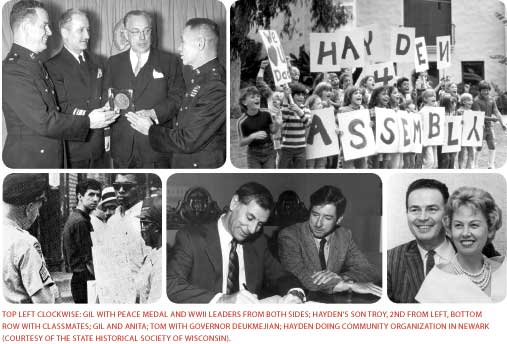
His former chief of staff, on an airplane trip in which he talked fondly of working for Hayden, says Tom would tolerate mistakes but not a lack of passion. He took his staff on bus trips through the district he represented so they could understand the people who expected him to speak for them.
Gil Ferguson and Tom Hayden were born seventeen years apart.
They are proof that generations are most often identified by events rather than delineated by years.
“World War II changed everything for me,” Ferguson told California Conversations. “Kids that grew up together in families that never moved more than one hundred miles away were now all over the world. The bonds were broken. We saw things and did things that took us away from our neighborhoods. We built new lives. There was no way I could go back and pretend Missouri was the whole world.”
“The truth is, if I had been five years older I wouldn’t have lived the life I’ve led,” Hayden said. “My coming of age, so to speak, intersected exactly with John Kennedy’s election, the beginning of sit-ins by black students in the South, the introduction of the pill. I can’t even remember everything that happened when I graduated college in 1961, but it was enough to alter the social situation for someone like me. What I brought to it was a kind of non-conforming and anti-authority spirit.”
MEETING TOM HAYDEN
We called Tom Hayden and interrupted him cooking dinner for his young son, a grade-schooler who belongs to Tom and his third wife, and asked if he would talk about Gil Ferguson. He was not interested in rehashing old history. Reluctantly, he asked if we could conduct the interview through email. We refused, promising not to open his refrigerator, pet his dog or use his bathroom, but we wanted the interview in person.
Hayden eventually agreed to meet at one o’clock in the afternoon at his Southern California office.
We had not seen Hayden since he left the Legislature seven years earlier, after eighteen years in the Assembly and Senate. He is no longer a young man. His thick hair is completely white and his goatee is a bit scraggly with errant whiskers on his otherwise smooth cheeks. He was never handsome. He is appealing, a face that should be dominated by his large nose, yet isn’t, getting old everywhere but his eyes, curious, and the look is so minus any bullshit that you almost feel like you have to explain your presence.
He is not as tall as we remember, maybe five foot nine, and he is still slim, the beginning of a paunch that doesn’t take away from him being athletic enough to still play, the oldest player on his team, in an adult hard ball baseball league. He is in his late sixties. It doesn’t seem possible, for many reasons, partly the thought of the student activist examining life though the prism of senior citizenship, and partly because so much of what we associate with Hayden involves a rebellion we believe belongs to the young.
His handshake is firm. Hayden teaches college. The stories he can tell about the places he’s been and people he knew must make history seem very real to his students. He met Martin Luther King ‘in the days before we thought about taking pictures of such things.’ He was close enough to Bobby Kennedy to be someone who matters to his kids. He inquires if we are hungry. He seems disappointed for a moment that we aren’t, says he is, and leads us through the reception area of an office to a tiny kitchen where he makes a peanut butter and jelly sandwich.
His own office is small, one room and a bathroom. The front and back doors are opposite each other and there is a nice breeze. The office has big rugs covering the carpet, a comfortable couch, a small desk with a computer, and books in bookshelves, books on the floor, books on chairs, books covering the pictures of him with famous figures, books that have the dense titles of academia and are bent in the corner or spread even at the spine, books, books, books. You get the sense that with enough peanut butter and jelly Hayden could hole up in this spot for a long time.
MICHIGAN
Hayden’s father was an accountant. His mother was a librarian.
“Their jobs were important to them,” Hayden remembers. “My parents were of lower middle class origin, and they moved up the ladder from immigrant status, and working class, to white collar and being part of the amorphous middle class.”
The Second World War, like all previous wars, was fought by men from small towns. Jack Hayden left Royal Oak, Michigan, and his wife Genevieve, called Gene, when Tom was four, barely old enough to sing the Marine Corp Hymn. Uncle Cy, the only brother among a dozen sisters on his mother’s side went too. Jack Hayden would return changed, distant, more semper fi with his soldier buddies around the bar at the Veteran’s Lodge than part of the family, and a divorce would result. Uncle Cy was killed when his machine gun malfunctioned.
Tom Hayden: In my mind I’m sure the linkages were made, you know, something happened to my dad and he came back different, and not for the better. But, being a marine of that generation, which would be Gil Ferguson’s generation, he tended toward believing that this was the best country in the world, and the government always told the truth. Those assumptions, I think, allowed him to live his private life. My parents didn’t think of themselves as being in a social structure or an economy or a political structure. They didn’t have a way of knowing what was disturbing them. My dad wanted to watch Sam Snead and Ben Hogan play golf. He wanted to fish. The early sign that something had gone wrong was when he noticed people in Michigan buying Japanese cars.
MEETING GIL FERGUSON
A long time Republican staffer who retired years ago said there are three undisputable truths about Gil Ferguson.
He was the kind of soldier offered battlefield promotions, and in three wars, often under the worst conditions, he proved himself to be the best man.
In a picture in the Oval Office with the Prime Minister of England and Ronald Reagan, he does not seem out of place. His friends said that Gil was not easily impressed, and felt comfortable anywhere he wanted to be. Gil was accustomed to making decisions and it was common in the Republican Caucus for the members to wait to hear Gil’s ideas before weighing in.
The third was that Gil loved his wife, Anita, absolutely, that she was his partner in everything he did. She was described in the most complimentary, old-fashioned term as ‘lovely.’
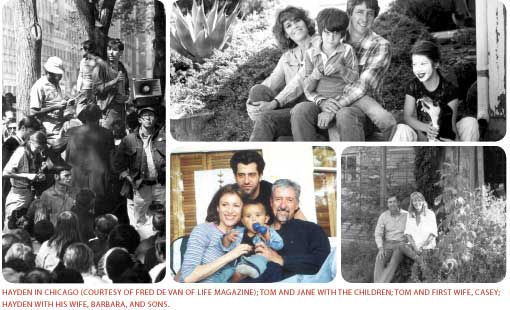
We chased down a couple of numbers for Gil. The call came back from Anita. She was pleasant. She said Gil was in the hospital. He turned 84. We said we wanted to talk about the events of June 1986. She remembered it was the ‘Hayden problem.’ The timing didn’t seem great.
Anita called back to say Gil wanted to talk on Wednesday, in the morning, before he got tired, and he would answer any questions we wanted to ask.
We got to Orange County’s Hoag Hospital in time to negotiate the Pentagonal hallways to be at Gil’s room on time. He was an old man hooked up to tubes and sitting upright in a stiff chair by the bed. His hair was still carefully styled. He was freshly shaven. He was gaunt, yet wearing a hospital gown and with his socks pulled up just below the knees, his bearing was unbowed. This was his room. This was still his world.
MISSOURI
Baseball’s Gas House Gang of the 1930s is remembered even today by old timers as the meanest, wildest group of great players ever to dominate a stage in any American sport. The cop who worked the beat of the old St. Louis major league stadium was once a prospect himself. He grew up tough in the Ozarks. There was some schooling, not a lot, and he was a man who educated himself about the ways of the world. He threw his arm out in a freak deal firing a tennis ball around and lost his chance to play ball for a living. His name was Ferguson. He had four sons. All of his sons inherited his height and athleticism. Everyone in the family was expected to pull their own weight. The cop used his influence to get his third son, the thirteen-year-old, Gil, a solid junior high school pitcher, work as a clubhouse boy for the Cardinals. Gil kept the job from 1936 to 1940.
They didn’t have bottled beer then and one of Gil’s jobs was to go to the wooden keg and fill a tin bucket and bring it back to the dugout.
“The players were spitting at me and each other,” Gil said. “There were nights when half the players were in the bag and stumbled to their position. If the game went extra innings they were in trouble.”
Hall of Famer Dizzy Dean was their great pitcher and ringleader. Gil remembers him as ruinously wonderful and someone who shouldn’t be around children. He was all country-boy. All of them were. Legend has it that Dean’s career ended when his toe was broken during an All Star Game and he couldn’t adjust his pitching form.
Gil says Dean also hurt his index finger flicking the sulfur tops of his wooden matches to light cigarettes. They all smoked. They played hard, too. Pepper Martin, who Gil called “the Indian,” was the meanest of the bunch. There were bruises all over his body because he got in front of everything hit in his direction and refused to let a ball get by him.
“I learned from those guys that if you hit the ball, you got on base. Holy shit, these were men who no one gave anything to. They didn’t expect anything to be given to them. They made things happen.”
TARAWA
The four Ferguson boys would serve in World War II. They would all earn a Purple Heart. Gil joined the Marines because his family home was on the west side of the Mississippi, and he knew that meant being sent to California.
He proved adept with a rifle, and the Marines made him one of their youngest instructors. There are pictures to show what he looked like and for those who recall the Splendid Splinter, baseball’s Ted Williams, there is a physical similarity. If you don’t remember Ted Williams, splendid works on its own. Gil was a tall, slim, curly-haired kid.
California was a goddamn paradise. He loved the weather in San Diego. He said that if given his choice he would never move away from the ocean again. There were perfect breezes at night. It was a great life while much of the world was fighting. The war truth came home to him when one of his brothers was killed testing the B-17 bomber.
Gil asked to be sent into action. The Marines quickly accommodated his wishes, and only months later he was in a small landing craft approaching the island of Tarawa, the island the enemy boasted could not be taken. A member of the VFW didn’t mince words with us. “Tarawa was f***ing war.”
Gil Ferguson: We were singing Ta-ra-ra Boom-de-ay until we started hearing these banging sounds on the side of the boat and realized they were shooting at us. The boats were supposed to go all the way to the shore, but we hit a coral reef and were forced to stop 700 yards out. The sergeant stood up and said everybody out and the whole side of his face came down on us. He lived. I saw him years later and his face was stitched together, but he lived. I got out, and I had to climb over a barbed wire barrier. There were two Japanese in the water ahead of me. They seemed like giants. I shot them without even realizing what I was doing. I was in such a state that I emptied my gun without realizing it.
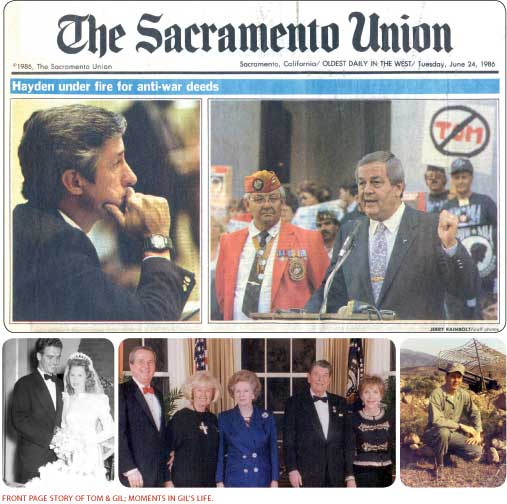
California Conversations: You killed two people just minutes into the battle?
Gil Ferguson: They were there, and I fired without thinking. There was no doubt we were there to fight.
CC: The battle lasted three days?
GF: 76 straight hours. I spent a lot of it running to these little areas called pillboxes where the enemy was hiding and pointing them out to my lieutenant and captain.
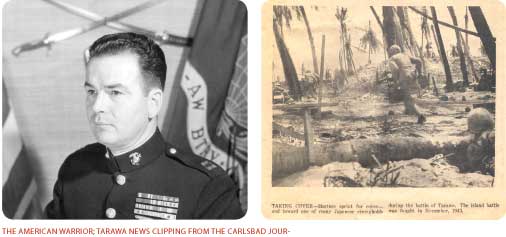
CC: You’re being shot at while you do this...are you scared?
GF: Holy shit, I’m terrified. And after a while I’m tired, exhausted, and you just start thinking if it’s my time I’m going to get hit. You try not to be careless. You can’t help but become fatalistic.
CC: Were you wounded?
GF: I was shot in the leg. There was also little stuff from hand-to-hand combat, bayonets, and a grenade blew up near me and I was unconscious for a while.
CC: For how long?
GF: I don’t know. It could have been ten seconds or five minutes, I don’t know.
CC: Can you describe being in battle?
GF: I’ve been in hundreds of battles and none of them were like Tarawa. The entire battle took place in a space of about 600 yards. We were always on the alert. In other battles you think about the terrible living conditions, where people are sick all the time and you’re dealing with what it takes to handle the needs of the troops in the field. At Tarawa it was about staying alive. I remember there was a sharpshooter who had some of our men pinned down and nobody could get him. I asked a guy to watch close, and I shot at him and asked my guy if he could tell where the bullet hit. He told me. I adjusted my next shot and killed the enemy.
CC: Had you ever seen a dead person before?
GF: I saw a guy who got killed in a car accident when I was a kid. I saw a lot of death at Tarawa, and I got used to it fast. The first time someone shoots at you, it changes your thinking forever. You realize how temporary everything is.
Tarawa was the most violent battle in Marine Corps history. Three thousand Americans died. The Japanese swore that they would fight to the last man. They damn near did. The courage on both sides was enough for one veteran to comment that the uncommon became common. Out of the 4,700 enemy defenders, only five Japanese survived. Asked later if he was plagued by nightmares from all the killing, Gil said you can see with your heart and emotions or you can keep it as impersonal as possible. Even when his best friend was killed, “I never took it to a place where you dwell on things.”
Ferguson was Marine Corps material. In the three years from his high school graduation to the end of the war, Ferguson rose to the rank of Lieutenant and was being offered inducements to stay in the service. Out of a recommended pool of 23,000, the Marines offered 18 young men full-paid scholarships to the college of their choice.
Gil Ferguson: I chose USC because I thought it was UCLA. I told the cab driver when he drove into the parking lot that he was making a terrible mistake (laughs). The school I chose has beautiful green lawns all around it.
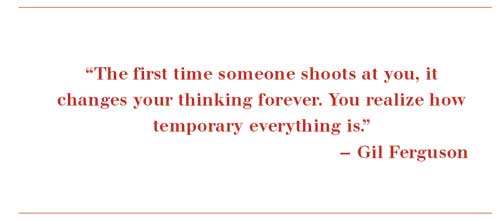
CC: You were one of the youngest Marines, but one of the older college freshmen?
GF: That’s true.
CC: Must have been culture shock after the war?
GF: It was a different time, but I was actually chosen Freshman Class King at USC.
CC: Do you campaign for something like that?
GF: (laughs) No. No one knew who I was. I had a fraternity brother who wanted to make sure someone from our fraternity got chosen, and he put it together for me to be elected. His name was Phil Burton.
CC: The late Congressman from San Francisco?
GF: (laughing) He was my roommate. This smart liberal with screwy ideas got his conservative friend elected.
CC: Were you close friends?
GF: I liked him. Phil was grading graduate papers as a freshman, but he also had some screwy ideas. He used to say we don’t have blacks in the fraternity. We said, no, they have their own fraternity. Then he said we don’t have any Jews in the fraternity, and we reminded him we’re a Christian fraternity. I loved him. Unfortunately, when he got older he became too remote and there was a glass of whiskey on his desk earlier and earlier in the day. Even his fellow Democrats didn’t trust him anymore. We didn’t look at things the same way. I think his heart was always in the right place.
CC: Wasn’t Jesse Unruh at USC at about the same time?
GF: He was there, too. He and Phil wanted to run everything. They didn’t want the Chancellor to run the University. Unruh was just a fat little guy with a heart of gold. Nobody ever thought he would amount to anything special.
CC: You met Anita at USC?
GF: I did. My fraternity brothers stood singing behind me, and her sorority sisters stood behind her when I gave her my fraternity pin. We were married within a year.
THE ACTIVIST
Tom Hayden sat with us on the comfortable couch in his small office. He’s smart, an odd observation, I guess among older men sitting together, but his answers are thoughtful without the need to struggle for the right word. He’s not pretentious. He says things that would sound like bullshit coming from anyone else, a blend of the passion and idealism and articulateness of the 1960s with the credence of someone who has spent almost half a century putting his views in front of the public.
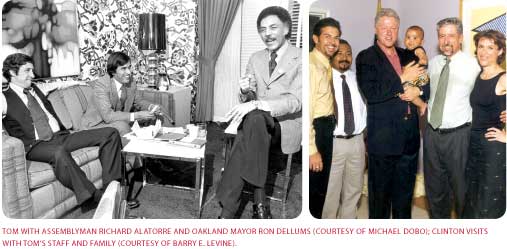
California Conversations: What does injustice feel like physically for you? What happens? Does your stomach get upset? Does your head hurt?
Tom Hayden: A very good question. The word is ‘feel.’ I have a visceral reaction to it. Again, it is something that can be talked around, but can’t be put into words very clearly. The question for me now is where do the feelings come from that are violated? Some of the feelings come from our cultural heritage, in my case, an awareness that the Irish went through famine and oppression and discrimination. It also comes from what you learn in Middle America about the Bill of Rights, democracy, and the kind of things politicians repeat even if they don’t want you to act on them. But you sort of internalize the right to vote, the right to assemble, the right to protest, petition, and if any of these things are violated it can set off feelings.
CC: In 1961 you show up with the girl you haven’t married yet and tell your parents you’re leaving to register black voters in the South.
TH: Now I can understand what my parents were going through - that everything they’d devoted themselves to appeared to be lost. Their son was graduating from college. He was supposed to take a great job, upper class, maybe, and instead I was, in their view, throwing it all away.
CC: You went South in a Corvair?
TH: Station wagon. Dangerous car. In fact, I was driving south and it did just what Ralph Nader warned about. That’s the closest I ever came to losing my life. All of a sudden the car spun around and I was backwards and off the road.
CC: There were times in the South when you feared for your life?
TH: There were sharecroppers who were booted off their land and were living in tents in a small town near Memphis. We went with a carload of people and some food. They knew we were coming. We unloaded the food, and out of the darkness came the sheriff deputies. I remember my knees buckling. It wasn’t that I was afraid, but I learned that we’re subject to forces. I was looking them in the eye. I was talking to them. I was interviewing them, and I couldn’t stop my legs from shaking. There were times when we were at a disadvantage. We didn’t have guns, chains, baseball bats, and we didn’t want them. We didn’t believe in them. All I remember is more adrenaline than fear.
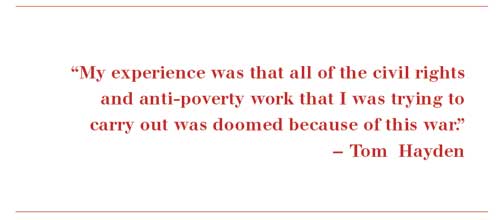
CC: A more prosaic question - how did you support yourself?
TH: You didn’t really need to. This is why it’s not a model for kids today. You could live on next to nothing. If you didn’t worry about the future, about savings, that would be another matter. There wasn’t much to worry about. You could ask your parents; you could ask your parent’s friends. I’m talking about asking for $25, here, all right. I remember we wanted to set the all-time lowest expenditure for food, like one dollar a day max per person. There was a way to do it on beans and rice. That was the Catholic voluntary poverty thing. In truth, it was cheaper and easier back then. It cost me $100 to go to the University of Michigan. I don’t remember if it was $100 a semester or $100 a year.
CC: In 1965, you go to Vietnam?
TH: I gave no thought as to the political consequences or image or anything like that...you know, in academia they always talk about the primary sources versus the secondary sources. My primary source is my personal experience. I always try to start there. My experience was that all of the civil rights and anti-poverty work that I was trying to carry out was doomed because of this war.
CC: To back up, were you too old for the draft?
TH: (laughs) They didn’t want me. I had my physical and they classified me 1Y, which is either troublemaker or asthma. It’s pretty arbitrary.
CC: What was the reason for the trip to Vietnam?
TH: I thought the big problem with Vietnam in 1965 was the utter blackout. Look, if I could get in, which the government said was impossible, why couldn’t reporters. Shortly after my first trip, Harrison Salisbury of the New York Times went and his stories broke the war open. The trip I took was what you would call today, Citizen’s Diplomacy. It included a range of activities, but it was all about breaking down the iron curtain of information.
CC: Who financed the trip?
TH: I don’t know.
CC: No?
TH: I think I raised the money from friends in the New York/New Jersey area. We’re talking about maybe $3,000.
CC: Was the trip legal?
TH: It was an act of civil disobedience. We went on the grounds that we have the right to travel anywhere. That is the heart of the American idea. We did not use our passports. We contacted the North Vietnamese government ahead, and they contacted the Communist governments in China, Russia, Czechoslovakia to let us land and stay in transit and take the next flight without using an American passport.
CC: The idea of the trip was to find out what wasn’t being told?
TH: I’m sure there was a mixture of aspirations to the trip, but getting an independent reading on who the Vietnamese were, what they were fighting for, what they wanted, and what the peace might look like was the opening of the door.
CC: How many trips to Vietnam did you actually make?
TH: Over a twelve-year period, probably four. Many Americans went. I went with Jane. We made a film. It was a strange trip, because we worked really hard on this film about who was on the other side and what was the solution to this, and we had, as they would say in Hollywood, access to some extraordinary locations, inside the demilitarized zones, which I don’t believe any Americans had ever seen, except commando units perhaps. Then the war ended. The film is kind of on the shelf.
CC: There’s the famous picture of Jane sitting on the gun. Did you realize that picture would haunt you for the rest of your lives?
TH: When was that...1972...1974? I don’t know how I could have prevented it...live by the media, die by the media. Jane made an unplanned stop along the road she was walking. What was she supposed to do, say no, I don’t want to take these five steps into this position...the spontaneity of it all?
CC: Well, yeah, she was certainly media wise. I mean it’s a provocative picture at best.
TH: Well, it certainly seemed to provoke some people. On the other hand, in polls she was one of the most popular women in the world. To me, it was her option, and if she had been media conscious she would not have done it. But being a free spirit, she’s perfectly entitled to it. People who hate her for it will have to live with it.
CC: Have the two of you talked about the picture and how it became enemy propaganda?
TH: She’s become more apologetic about it over the years.
CC: Do you understand why Gil Ferguson or veterans your father’s age would believe you provided succor to the enemy?
TH: I’m sorry they feel that way.
CC: I’m asking do you understand how…
TH: I understand where they’re coming from, but we’re not engaged in therapy here. It is a ridiculous notion to believe that the Vietnamese fought on because I made a trip there or Jane had her picture there. They lost two million people, and we lost the war because they outlasted us militarily. I’ve heard the Ferguson argument that we fought in wars to protect your right to dissent. No problem in that. But, not to give aid and comfort to the enemy, that’s where you get lost in words. Were the Vietnamese really our enemy? Were they an enemy in a legal sense? Was the war ever authorized? So, let’s get past that. What you get down to is whether or not you agree with my behavior. The question is whether or not I had a right to be in the Assembly having been voted on by a majority of the people.
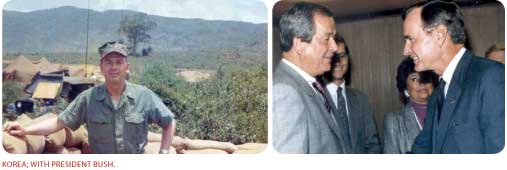
LIFE ON THE SHORE OF PARADISE
Gil laughed and said he was reluctant to tell his buddies that after he left college he and Anita took over the interior decorating business that belonged to her father.
He was also called back to the Korean War. He was at the major battles of that skirmish, including one in which his “‘entire platoon was almost wiped out” and his “beloved Lieutenant was shot mercilessly in both legs and never walked again.” A veteran said it admiringly, when he explained, “there was no bullshit when it came to what Gil Ferguson did in Korea.”
Between the wars, Ferguson was much more the USC graduate than the kid from Missouri with the folks from the Ozarks. He went to work for one of the major companies in Orange County, becoming in a short time one of their major executives.
He and Anita got involved in real estate. They dabbled in moneymaking enterprises. More than one of their friends said the closeness between Gil and Anita could also be traced to her being able to step in and help run their businesses when Gil was called back to active duty. He did not rely on other people. She was the exception. He felt comfortable that she was there when the military called on him.
He was called early to Vietnam.
California Conversations: You were in Vietnam in 1965?
Gil Ferguson: I went as an advisor even before that. My tour in 1965 was my second one. We were fighting by then.
CC: Were you aware of Tom Hayden in 1965?
GF: Yeah. I’m aware there is someone named Tom Hayden, and he is part of a trip of Americans that has been paid for by North Vietnamese and the Chinese government who, by the way, are having a great revolution of their own and slaughtering millions. The trip is meant to persuade the world that they are a small country being bullied into submission by the giant United States of America.
CC: You’re convinced that the North Vietnamese and the Chinese paid for Hayden’s trips?
GF: I am convinced that’s what the FBI and CIA said. I’m also convinced that he left Vietnam and participated in a Young Communists meeting in Czechoslovakia in which he spoke in favor of the North Vietnamese. That is providing succor to the enemy.
CC: Were the Hayden trips important to the military in the 1960s?
GF: Hayden is not the number one thing on our screen, but when the officers got together and talked about how screwed up things were we talked about Tom Hayden and Jane Fonda.
CC: Hayden draws the distinction that the Vietnam War was a different kind of war than WWII and Korea.
GF: They were all different.
CC: Did we belong in Vietnam?
GF: Well, it depends on what you think the policies of America should be. More importantly, we actually believe that God made us to be free, and we put that in the Constitution, that we have rights - life, liberty and the pursuit of happiness - just a billion rights that we have by being here in this country. We created a government based on it. Now, you can’t ask Joe Smith down the block to send his son off to die in a war if the guys on both sides of the street aren’t going to do anything.
CC: Did the government lie to us about Vietnam?
GF: (Throws his hands up) The government lies to us everyday. Whether the government lied or not, there’s still no excuse for what Hayden did.
CC: Hayden and others say history has proven them right, that Vietnam was a bad idea and a bad war.
GF: Anybody who wants to oppose the war is probably within their right to oppose the war, and there may be good reason why they’re opposed to the war, and there is room to discuss those reasons, but there is no excuse for assisting the enemy against the United States.
CC: Senator Hayden says he was only there to get to the truth of what was happening.
GF: They were the guests of the enemy. They provided anti-American propaganda that was devastating. They made villains out of Americans in the middle of a war. Tom Hayden was a coward.
CC: You can say what you want about Hayden, and you obviously do, but Tom Hayden was not a coward.
GF: You don’t think so?
CC: No. This is a guy who left the safety of his college town to do what he thought was right in the segregated South and he faced incredible physical danger. He’s never been afraid to stand behind his beliefs.
GF: (pause) Yeah, I can believe that. I can believe he was courageous when it came to issues he thought were important. But, he was wrong on the war.
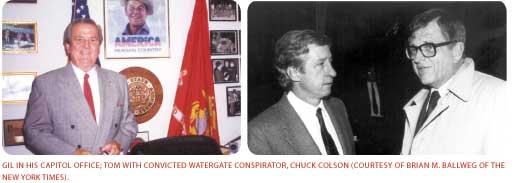
CC: What would you have wanted to see happen to Hayden and Fonda?
GF: I think there should have been a public trial. They should have gone to prison. It would have cured the problems we had with them later.
CC: You served in the Legislature with Tom Hayden for several years. Did the two of you ever speak?
GF: No. There were a couple of times that we found ourselves alone in a hallway. We nodded at each other. I always thought he was bit wooden. I never thought he had much personality.
JUNE 23, 1986
There was a bank robbery in Los Angeles and hostages were being held. It was the big story of the day. Television was covering it live, blanket coverage, something unusual for the time, and not much else was going to get any attention.
The rumblings of what would lead to the first Gulf War were the focus of national policy.
The summer was not too hot. The delta breezes were still present, and for those who hadn’t been in California before, the weather was yet another reminder of why the population of the state was growing by almost half a million a year.
Beautiful new homes were selling in our mid-sized cities for $100,000.
The Veterans of Foreign Wars, the VFW, were holding their annual convention at the Doubletree Hotel in Sacramento. In the middle of the afternoon more than three hundred former soldiers climbed onto buses for a rally on the west steps entrance to the California State Capitol.
A fiery congressman gave the morning speech at the hotel condemning Tom Hayden. All of the vitriol that could be mustered was used to foment the troops. At the steps, there was no doubt the vets would be greeted by one of their own, an old soldier they admired because even among themselves they admitted that none of them could match his war record, the Assemblyman from Orange County, Gil Ferguson.
Ferguson was 63 at the time. He stepped to the podium to the loud, echoing approval of the group. There was not much resemblance to the young soldier of Tarawa. He looked like someone who spent a great deal of time at an exclusive country club. Always natty, he was now much heavier, jowly, big, and his voice carried above the crowd.
The internal television network at the Capitol was not yet in place. There are thousands of hours of legislative drivel that are now memorialized. This day, unfortunately, is mostly lost.
Tom Hayden was popular in his district. He was a responsive legislator with a strong constituency support program. They overwhelmingly opposed the Ferguson resolution. There were also a handful of veterans willing to stand with him at a morning press conference, including one of three POWs released to Hayden years earlier by the North Vietnamese.
The Capitol Press Corp was much larger than it is now. Even the minor newspapers thought it was still important in the 1980s to have at least a token appearance at the State Capitol. The press conference was crowded; standing room only, when Hayden, black-haired, in the prime of his days, dressed in a sharp, dark suit, stepped to the stage in an unrepentant mood.
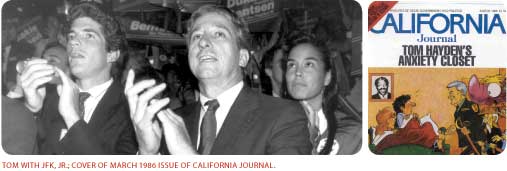
The Assembly Floor
The floor of the State Assembly is green. It dates back to the 1860s and still has the appearance of an old theater; the balcony is three rows deep and circles the desks of the legislators below. There is a large painting of Lincoln. It probably made sense when the state was new to memorialize the martyred president from Illinois. By 1986, California had heroes of her own, although it is doubtful an agreement could be reached on whose painting would serve as an appropriate substitute.
A valley legislator, still new to politics, viewed the scene from his own desk as an, “incredibly intense situation. It was the politics of old wounds. Old scabs were being ripped away. There was increased security. This was not an issue that could be negotiated. There was the feeling that surrounds an ugly fight.”
The issue for many legislators was a matter of loyalty, not only to a colleague, but to how they viewed themselves as Americans. The vote they were going to be asked to make involved the rarest of actions in a democracy - the removal of an elected official from their place in the Legislature.
Hayden was still larger than life to many of them. He sat at his desk with the calm of someone attending Mass. He did not look around when the Ferguson speech began. He also did not look down.
“Ferguson was a strong guy, but he was also very affable. His voice was different that day,” the former legislator remembers. “He was emotional. It wasn’t that he was going to break down. It was the personal nature of his attacks. All of the bitterness of Vietnam was present in his speech. No one moved. There was total silence and he had everyone’s complete attention.”
California Conversations: Did you know the outcome before you introduced the resolution on the floor?
Gil Ferguson: Willie told me he hated the son-of-a-bitch Hayden as much as I did. He said, “I’ll let you rant and rave and do your thing, but he’s a Democrat now. We’re going to have a vote, and you’re going to lose because the Democrats won’t vote against him.”
CC: Did you write your speech beforehand?
GF: I didn’t need to. These feelings were inside me for more than twenty years. I had notes just to make sure I didn’t go on too long. I spoke from my heart.
CC: Do you remember what you said?
GF: I provided a history of Hayden’s behavior and contrasted his actions against the behavior of people who opposed the war without crossing the line and becoming traitors. People died and soldiers who were prisoners in places like the Hanoi Hilton suffered terribly due to the actions of Tom Hayden. Tom Hayden was not a simple war protestor. He was not a spit-on-the-flag, burn-your-draft-card protestor. He understood that what he was doing was wrong, but he talked himself into believing he could give aid and comfort to the enemy, which even if it wasn’t his intention, was the end result of his actions. I looked right at him and called him a traitor.
CC: Did he look back at you?
GF: He looked at me. There was no expression.
CC: He did respond, however.
GF: Yes. He managed to defend himself.
Although Hayden did not speak only from a prepared text, he did say he had a game plan. He was a strategist by nature and considered what he was going to say to his colleagues. He lined up who was going to speak on his behalf, and what he’d say to the media and the larger public.
His speech did not take the luxury of two decades of hindsight to apologize for the actions of the 1960s. His speech was also memorable for the naked emotion.
“I opposed the war out of an honest rage,” Hayden said. He did not say his was a life without mistakes.
Then he went on the attack. He called Ferguson a narrow-minded bigot who was against everything Hayden stood for - women’s rights, minorities and the environment.
Hayden saw his effort in Vietnam as a byproduct of telling a larger truth, that 58,000 Americans were killed, tens of thousands more wounded, millions of Vietnamese killed and dislocated in an orgy of destruction. For him, the choices for which he was being made to answer narrowed down to going into the “heart of darkness to say we are being lied to, or keep equivocating and claiming we are in a noble cause.”
Tom Hayden: I remember thinking when the resolution was introduced that it was here we go again. This is the problem. You don’t get to control what you consider your agenda. I saw the Ferguson resolution as simply an attempt to once again divert attention from what I stood for, to discredit me, to discredit the 60s generation.
THE VOTE
Others stood up to speak. The passions of re-living America’s most controversial war, the politics that created a generation gap in America that resulted in bloody confrontations between cops and students, were bared. The comments were intensely personal, most of them directed at Hayden, but some going after Ferguson for refusing to let the issue rest.
Legislators from both parties approached Hayden to say they liked him, but they were going to vote against him. One of them even wrote a note saying much the same. Hayden says he kept the note somewhere in his files.
Gil Ferguson: We began a new count of the legislators and started to realize that moderate Democrats might break with Willie and vote with us. I told Willie as much. Holy shit, the color drained from his face. He wasn’t sure if Hayden was safe or not.
Hayden needed forty-one votes to survive. He received forty-one votes.
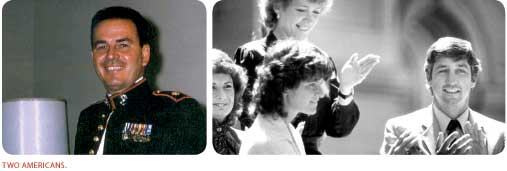
HAYDEN AND FERGUSON
On the afternoon we met with Tom Hayden he’d spent the morning at a meeting regarding gang problems in Los Angeles. He is still searching for solutions. He thinks the world can be rescued.
He has heart problems. There was a health crisis while he was vacationing with his wife and kids at the ranch of his former wife, Jane Fonda. He talked of death. He measured how many years his father lived, and how that mathematically plays out for the next generation.
The boy of divorced parents from a small town, Hayden has lived many lives - activist, revolutionary, politician, husband, father and grandfather. He can talk to his students of how he has always lived his life with a sense that there is a spirit afoot, a spirit that says all things are possible.
At the end of the day, however, he is not an impractical dreamer.
Hayden said, “At the beginning, our goal was to force the Kennedy Administration to enforce the regulation banning discrimination in interstate travel, or to desegregate lunch counters in the South, or to deploy Justice Department workers to protect people registering voters in the Black Belt. These were all reformist objectives that were powered by a fervor that could be called revolutionary or radical or it could be called religious. But there was always a practical side to it. The world was going to be changed in small steps, believe me.”
Gil Ferguson said without complaint that getting old is a terrible way for a strong man to die. He also said there were no regrets.
“I did the best I could to make a difference,” he said. “I did not retreat.”
Gil Ferguson often sailed his own boat on golden afternoons. He met everybody he wanted to meet, and went everywhere he wanted to go. Tarawa never left him, and at risk of indulging a hackneyed cliché, he took each day as a gift. He accepted that his life was closing to the timelines and efficiencies of a hospital.
His dear Anita was there, never tiring of his company, playful after almost 59 years of marriage, remarkably beautiful, and still making him a king of that little world remaining.
We took the last picture that would be taken of Gil. Not surprisingly, it was of Anita sitting on his lap. He kissed her when we were done, “I love you honey,” he said to her. Those were the final words we heard him say before we shook hands and said goodbye.
The following day, we received a message from Gil. “We can close ranks and respect those who opposed the war,” he said. “We can even forgive the cowards. But never, ever, will we forget the traitors, not even when they are gone and dead in their graves. Our country will never forgive traitors.”
Several days later Anita called late in the evening. “Gil is gone,” she said.
Tom Hayden called and asked if we interviewed Gil. We told him we saw him the week before he died.
“Isn’t that something,” Hayden said. “Well, God bless him.”
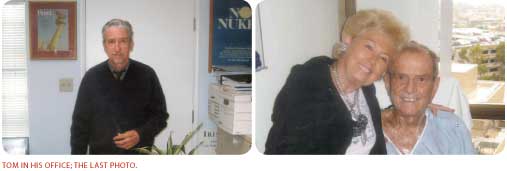
A California Patrician
Jennifer Goto
Published Issue: Summer 2007
Terry Flanigan has a special appeal, not so much that he makes an effort to stand out, but because he deliberately doesn’t.
His cushioned voice never seems to change much and the lack of inflection comes across as pleasant and patient rather than boring or dismissive. His angular features are cold when he’s silent, yet his smile is genuine, and he warms quickly when he engages you in conversation. Terry has a great, wry laugh, and a knack for looking directly at people and making them feel like whatever they are saying matters, like they matter; he lets people feel important when they are in his company.
Even on a casual day there is an expensive look to Terry’s clothes - a dark blazer with a pocket handkerchief, pressed beige slacks that are just off colored enough not to be mistaken for anything khaki, a blue checkered shirt that is open at the collar, and a watch with an orange band. The slim elegance works well with him. His Jaguar XK8 is immaculate, and he doesn’t say anything in response when someone invariably comments how much they like it. Terry is stylish without any affectation, entitled without any sign of arrogance, graceful, and not apologetic about the great life he’s living.
One of his longtime friends offered an apt description when they said Terry Flanigan is the modern California patrician.
Terrance W. Flanigan, originally Walter Terrance, is a partner with his brothers in the Flanigan Law Firm in Sacramento. He was born in Chicago and moved for reasons of his mother’s health to the better climate of Arizona when he was four-years-old. The family eventually settled in San Diego.
Terry’s mom, Virginia, was a former New York model and his father, Jack, owned a plumbing and heating company, and a Chicago night club.
California Conversations:
Your dad had a plumbing business and ran a night club - rough and tumble upbringing?
Terry Flanigan: Well, that’s not quite accurate. My grandfather was a businessman in Chicago who owned restaurants and some bars, and the flagship of his enterprises was Flanigan’s Plumbing and Heating. So my father was able to go to college, which was not as common for young people then as it is now, and he was a Notre Dame graduate.
CC: Was this in the thirties?
TF: I guess it would have been the late thirties, early forties. My dad was at Notre Dame during the Rockne years and had some great stories about his time in South Bend. He wanted to be a lawyer, but the Second World War broke out and he became what was called a ninety-day wonder - college kids who would spend three months in training and become officers. He took a battery of tests and ended up as a cryptologist. Evidently, he just had a facility for breaking codes and putting codes together.
CC: Did he go back to school after the war ended?
TF: No, his dad passed away, and he took over the family business.
CC: Was his a successful life?
TF: I think so. He did well. I think he was probably frustrated that he didn’t get to finish school and...his life might not have been exactly what he wanted, but he was a very good father and we had a wonderful mother. I think the fact that they wanted to spend time with us made all of us close.
CC: Were you the family that prayed together and stayed together?
TF: (laughs) We were. I think my mom was certainly the one who wanted to make sure that all of us and my dad had religion and experienced Catholicism. Of course, as we got older we probably did not make every Sunday Mass, but I think the religious upbringing was a fundamental part of our being a family.
CC: Did you have a privileged upbringing?
TF: I think it was privileged in some ways. Some people must have believed we were privileged. However, all of us worked. We were expected to work. I joined the box boy union, the retail clerk union in San Diego when I was sixteen and working for Safeway. I worked all the way through college and part of law school.
In 1953, barely old enough for grade school, Terry, his fraternal twin, Tim, and oldest brother, Jack, were sent on weekly visits to a riding stable on the outskirts of Tucson. It was part of his parents’ plan to expose the boys to as many experiences as possible.
The riding instructor and owner of the stable was Pete Martinez, an artist who later became a famous Western genre painter and etcher. Martinez, a former jockey and cowboy, served in the horse cavalry in World War I and in 1935 moved his riding school from Pennsylvania to Arizona.
Terry used his down time at the riding school to learn how to sketch using pencil and charcoal and was changed by the realization that he had artistic talent. Pete told Mrs. Flanigan that Terry showed great promise as an artist, however, the “other brothers should stick to riding horses.”
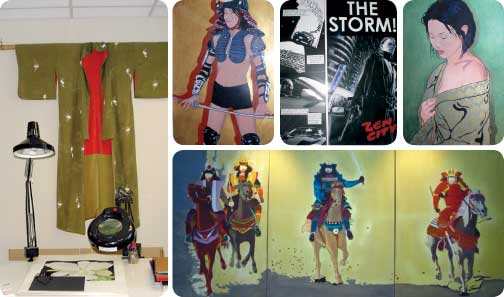
CC: Did Pete Martinez play a role in your life?
TF: Yeah, he did. I remember him quite vividly, and many years later I came across his picture in the Southwest Art Magazine that was featuring artists who specialized in doing horses, and there was Pete Martinez. He was a good artist and my first teacher. I remember a lot about Pete. He’d lost a thumb and, as he explained it to us, he said he’d lost it in a saddle horn when he was doing rodeo. He had this little ranch, and we’d hang around the barn and ride the horses. He became a notable local artist and a good friend of Maynard Dixon, a very well known western artist, and if you go over to the Supreme Court Building across from the Capitol there’s one of the most beautiful rooms in Sacramento. There is a Maynard Dixon mural that runs across the top.
CC: Do you remember the first time you felt artistically inspired?
TF: As a child I remember drawing a picture of a horse, and it struck me that it looked so much like a horse. I was encouraged, and there was good feedback from the people who saw it.
CC: Did it astonish you that you could do it?
TF: I’m not sure I would use the word astonish, but I knew it was special.
CC: Why could you do it? Is it inspiration or is it physical ability?
TF: I think you’re born with the ability to convert an image or a feeling that you have into something tangible for other people to appreciate. I often look at things in terms of shapes, some of that you learn after you’ve actually done drawings and paintings and you develop a sense of shape and perspective. You start looking at things in that fashion.
CC: Did your parents encourage your art?
TF: They did. I think my mother was certainly the most encouraging. I think my dad appreciated it. He thought it was important for all of his sons to become professionals, and anything we did in concert with that was fine.
The challenge to succeed in business and become a person of their time was part of being in the Flanigan household. At San Diego State College, where he was a Speech and Rhetoric major, Terry was elected Student Body President. During his term, he traveled to Sacramento with two of his professors and met with Governor Ronald Reagan. Their task was to lobby changing the official name of the school from San Diego State College to San Diego State University.
CC: You are in your early twenties when you meet Ronald Reagan?
TF: Yeah, it was pretty interesting. It was my first time in Sacramento. I remember the Governor’s outer office was filled with his movie memorabilia, a silver saddle, a couple of hats and a lasso, those sorts of things. We were taken to the back office and the door was opened for us. There’s this guy behind the desk and he’s very soft spoken and he says, “Hi, I’m Ronald Reagan.” I said, yes you are.
CC: Did you like him?
TF: I did. I thought he was everything he appeared to be as I saw him on television.
CC: Which was?
TF: He was nice looking. He looked like a movie star. He was gracious. He was a strong, likeable man.
CC: As a student were you more of a Reagan Republican than an RFK or Eugene McCarthy activist?
TF: Yeah, my mom and dad were Republicans, and I think kids by and large reflect their parents. I seemed to be more conservative then, particularly in 1968 and 1969, close to the height of the Vietnam War. I was more conservative than the activists on campus.
CC: Did you participate in the events of the counterculture?
TF: San Diego State tended to be more conservative than say San Francisco State, but there was still a lot of activity on campus. I would say at the time my general feeling was that it was more appropriate to be taking on the issues of the campus that were student related as opposed to using it as a forum for dealing with Vietnam. I look back now and realize that was not the case. I was wrong. I really think the students made a huge difference during that period in respect to the government dealing with the war.
Terry grew up in what now must seem to be an almost ridiculously wonderful innocence, a time when kids worried about their “permanent record” being marred by a bad grade, or a demerit growing into a black mark that could inhibit the future.
He built an impressive resume of good grades and leadership roles among his peers. He was always chosen first by others, and it was not unexpected that when he graduated from college he would join his brothers in law school.
At the University of California, Terry used his sketching ability to create caricatures of his law professors. It was more fun than rebellious, and the mark-on drawings appeared in the University newspaper with quotes that personified each educator. The pencil drawings were so popular he used them to create a calendar which he sold to faculty and classmates.
Law school, of course, for good or bad, usually means eventually becoming a lawyer. Terry was never reluctant in our conversations to answer questions. He was also not effusive when discussing the early years of practicing law.
Terry served with his brother, Tim, as a prosecutor in the Criminal Division of the Office of the San Diego City Attorney. Afterward, they became partners with city attorney, Dan Bamberg, comprising the San Diego law firm of Bamberg, Flanigan & Flanigan.
CC: Did the Flanigan boys become lawyers because their dad couldn’t?
TF: Maybe, I don’t know. If we did, we don’t have any complaints.
CC: Did you like trial work?
TF: It was satisfying at times.
CC: Good choice for you as a profession?
TF: I look back on it with some satisfaction that as a prosecutor when I took a case to trial it was only a matter of time in terms of getting a conviction. I think in the three years I worked as a prosecutor I only stopped one trial because I wasn’t convinced we had reason to move forward.
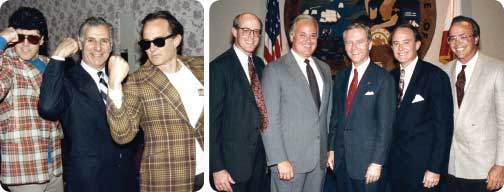
CC: You didn’t do it for long?
TF: No, a couple of years or more and I went into private practice for awhile. Then I went to Europe. I spent about two years doing artwork, and thinking about whether or not I wanted to practice law any more.
Terry’s older brother, Jack, popular, cool, ambitious and a natural born insider was the first intern for a young assemblyman from San Diego named Pete Wilson. Jack’s star rose fast and never settled. Terry followed his brother to Sacramento and began a career as a lawyer/lobbyist representing several organizations, including the California Manufacturers Association and the State Bar of California.
In 1977, while making money and securing an excellent professional reputation, Terry’s restlessness and curiosity prompted him to seek out a particular art teacher.
Terry commuted from his job in Sacramento to San Francisco to attend classes taught by Howard Brodie.
Brodie made his bones in World War II with his poignant drawings of scenes from the front lines at Guadalcanal and the Battle of the Bulge. Not yet thirty when the war started, Brodie became a heralded artist and his pieces were covered regularly by LIFE and LOOK magazines. He would also work in Korea and Vietnam, and become a distinguished sports artist for the San Francisco Chronicle. In the ‘60s, before television was allowed in the courtroom, his drawings set the scene at our country’s most infamous trials: The Chicago 7, Jack Ruby, Manson, and Patty Hearst.
Terry recalled one particular evening in which Brodie was late to class, returning from a trip to Utah. Brodie had a portfolio of sketches he completed of the Gary Gilmore execution. Gilmore, Flanigan recalls, was the first person put to death following the reversal of the federal law banning state executions.
Brodie’s “life” drawing class was important to Flanigan. It helped him to further develop his eye for detail. Although to the pedestrian viewer it appears from his law school sketches that Terry already understood naturalistic body features and facial emotion, he gives Brodie credit for heightening his sensitivity.
After completing the Brodie course, Terry compiled his first professional body of work and offered it for sale in 1979.
Terry chose to link his profession and avocation with a portfolio consisting of several pen and ink drawings depicting famous lawsuits, jury scenes, courtroom figures, and legal concepts.
One of the most popular pieces was a drawing of a young woman and her metamorphosis from law student to attorney to working mother to judge. It is compelling for the simple approach to telling a life’s story. The years are evident in the lines of the woman’s features, a face that evolves without ever losing its truthfulness.
The drawing was described by critics as trend-setting because of its positive view of a woman reaching the pinnacle of success in the male-dominant legal profession.
It was certainly an interesting take thirty years ago for a guy who has brothers and no sisters.
And, then again, maybe not, maybe it has something to do with having a mother who played a big part in the lives of her boys, or maybe he just had a sense that times were changing and he liked progress. Maybe it’s just an indication that a man who enjoyed a long bachelorhood before settling into a happy marriage appreciates women. It certainly marked the beginning of Flanigan using strong women as his subjects.
His dad’s insistence that there be a profession to go in concert with his art was ingrained, probably too deep for Terry to trust making art the complete focus of his energies.
The Flanigans have succeeded in Sacramento. The best lobbyists do well because they’re comfortable with themselves and don’t need the assurances of bright lights. Even now it is interesting to watch Terry take a call and smoothly and calmly work out problems others find daunting.
Before he got rich helping others accomplish what needed to be done, Terry was offered the position of appointments secretary in the administration of George Deukmejian. It is a key job offered by any governor, and he liked the job enough that he stayed on to do the same for Pete Wilson.
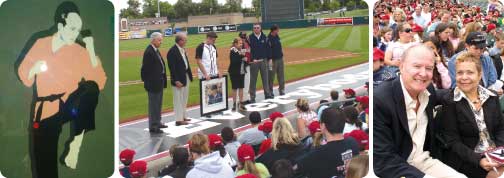
CC: Is your artwork the flip side of your government and lobbying work?
TF: I look at the artwork as being very different than being a lawyer or being in government. It is the right brain-versus-left brain theory that always comes up, but I also think there’s a similarity between what I do artistically that carries over into other parts of my life. Probably one of the better examples, I think, is when I was in trial I would make, in a lot of ways, imagery arguments. I’d speak to people by creating a visuality for them. Lobbying and art share the same creative methodology. A legislative bill and a piece of art both start with a subject matter. In developing the bill one must consider the choice of an author, what language will be used, and a strategy toward the final goal. A piece of artwork has the artist choosing what medium will be used, what message he or she is trying to convey, and how the final work product should appear. And, of course, there are all the similar elements found in the development and execution. What these efforts share in common is the intent to influence the observer.
CC: Are there times when you’re working as a lobbyist that you’re wishing you were working as an artist?
TF: I guess when one does anything professionally you get frustrated and sometimes you’d rather be fishing. So you know, if I’m going to escape somewhere, art is certainly going fishing for me.
CC: I think you’re the only person to serve as the appointments secretary in two administrations. Are you closer to George Deukmejian or Pete Wilson?
TF: Well, I think that’s hard to say. I’m probably closer to Pete, because my family has known him for so long. I’ve known him in more casual conditions than George. But, I felt close to them both. They are both really interesting guys, and I thought they were terrific governors.
CC: Similar in outlook and disposition?
TF: No, not similar in outlook or disposition. I would say they had two very different styles of being governor. George Deukmejian was the consummate administrator. When I worked with him I handled other areas, but I predominantly worked on judicial appointments. George would go through memos and say let’s meet at a certain time and deal with ten appointments, and it would be very businesslike, and he would go home. Pete came into office when there were crisis situations in California, plagues and fires and those sorts of things, and I remember him calling me at 1:00 in the morning. Pete would still be in the office working on something, and when he got to a problem he would focus on it and resolve it. He was not as predictable as George and operated on a looser, broader period of time in terms of getting things done.
CC: Did you ever say, goddammit, Pete, I’m sleeping, call me later?
TF: The short answer is no. But you could say that to him, and he would say something back to you that would be equally obscene.
CC: Great affection for them both?
TF: Yes. Absolutely. I think, I’m sure this happens with anybody in that position, but I’d watch them get negative press for whatever reason, people criticizing them really deep down, and I’d think if their critics were only able to spend the time with them that I did, they’d understand what really interesting and genuine guys they are.
In 1989, the husband of a good friend and co-lobbyist asked Terry to create the artwork for a new Japanese restaurant.
Terry began focusing his attention in the direction of the Japanese world of tradition and mystique. Specifically, Terry looked toward the style of the contemporary artist, Patrick Nagel, who used 17th century Japanese woodblock prints as an inspiration for the use of color in combination with Art Deco styling.
Flanigan replicated Nagel’s process of beginning with a photograph and creating a simplified drawing and translating the drawing to a painting. He then used geometric shapes, creating lines and dimension by juxtaposing dark color against light, and surrounding his female subjects with stark open space.
The paintings confront the viewer. They are startling, sensuous and respectful at the same time. A painting from the collection remains the signature design of the restaurant. More importantly, however, it also affected the direction of Terry’s artistic energy.
One of Terry’s favorite artistic concepts is the study of Japonisme, the influence of Japanese culture on Western European Art. It began in the late 19th century after Commodore Perry was able to make trade routes to Japan available to the outside world.
Terry patiently explains that post-impressionist artist Henri de Toulouse-Lautrec was influenced by Japanese woodblock prints and the arts of ukiyo-e, 17th century prints depicting life of the “floating world.” They defined the pleasures of life in Tokyo via theaters, restaurants, geisha, teahouses, and courtesans.
The Flanigan Law Firm is filled with Terry’s artwork, including a triptych (three panel painting) depicting four samurai warriors on horseback. To commemorate his brother Tim’s achievement at earning his seventh-degree black belt, Terry painted a Japanese woodblock style portrait of him in full garb. It hangs in Tim’s office at the firm.
Terry was approached to create some paintings for a downtown space, which he calls “a private art gallery masquerading as an upscale sushi restaurant.” Of course, women are the subject and each model is depicted in separate paintings, one dressed in the traditional kimono and the other portrayed as a samurai “with a twist.”
Instead of traditional Japanese armor, the women are wearing everyday sports equipment cleverly used to express armor. They are immensely interesting pieces on many levels, approachable and distant at once, as strong as they are beautiful, modern, and ageless.
We also found Terry’s work at a place in Sacramento called Taro’s. The artwork is less traditional to match the exuberant urban Japanese atmosphere. The art pieces at Taro’s are created in the edgy graphic novel style of “Sin City” creator Frank Miller. They are mainly black and white, even a dashing, lively piece of a comic hero, and are favorites of the younger crowd who know Terry’s work. Another favorite is found in a special viewing case in which Terry’s recreated armor of a Samurai is displayed. It is a striking sight, part sculpture and part illusion, and we watched as several people stopped to stare at it and wonder aloud if it was an original from centuries ago.
California Conversations accompanied Terry to the Triple A River Cats Stadium to watch the dedication of a painting Terry did of Emmett Ashford, the first black minor league umpire, that will hang at the ballpark.
He was asked to comment. In his own elegant way he said enough without saying much. Everyone was nodding, expecting him to say more when he smiled and stepped aside. He let the painting of Ashford speak for itself.
The ceremony ended and Ashford’s daughter walked over to look at the painting of her father. “It is him,” she said. “He would have been so proud to know he was being remembered this way.”
We asked Terry his plans for the weekend. He said he was golfing with his brothers.
CC: You’re still close?
TF: Every once in awhile on a Sunday afternoon, the four of us will be playing golf together and we’ll start laughing and say, you’d think we get enough of this during the week.
CC: Is the best ahead of you?
TF: You never know. I don’t have a crystal ball to look into. I don’t know...I’m just taking everything I’ve had up to this point and trying to move it further down the line.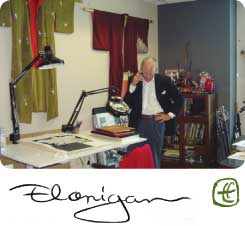
The Women At The Gate
Robyn Black
Published Issue: Winter 2008
They have the stories that bring to life and provide interesting lessons about the California State Capitol. Everyone talks one day about writing a book. These women, all of them clever, accomplished and respected, all of them knowledgeable and good company, made time from their busy day to offer a glimpse of the years they’ve spent in the middle of the mix. They really should write a book.
Cathleen Gardella started at the Capitol in January of 1967, as a messenger in the Office of Legislative Counsel. To provide some perspective, Bion Gregory, the affable and admired longest-serving Legislative Counsel in California history who died suddenly in September of 2004, was a legal student at that time.
CGar: Bion and I were like baby kids together. I stayed with Leg Counsel for a few years and then went to the Assembly when then Assemblyman John Burton gave me a job working for a small committee. I went back to finish my degree, came back and worked for Richard Alatorre in the Assembly, then Senator Bill Lockyer. Then I worked for a Republican, Bill Craven, for about a year. He was one of the dearest bosses I ever had in my life, and I dearly miss him. He went to the Republican Caucus and fought to hire me and two other Democratic staffers.
CC: Was there a danger that you would get blackballed working for a Republican?
CGar: (laughs) I was a secretary. I wasn’t a consultant then, so no.
CC: How old were you when you came to the building?
CGar: I turned 19 a week before. I grew up here in the Capitol.
CC: Were you looking at this as a career?
CGar: Not at all. No, I was married. My husband was a vet student at UC Davis. I was commuting from Davis and supporting my husband in vet school. I had to do something, and I had a couple years at community college. I thought I was going to be a doctor’s wife and live the life of Riley. I began as an hourly intermittent employee, but later I became a permanent full-time employee. I remember when I started work in Leg Counsel; it was $1.37 an hour. My friends were making like $1.25 or something.
CC: What are you doing now?
CGar: I am a consultant to Senator Ellen Corbett, which is fun because Ellen is in the 10th Senate District (Bill Lockyer’s old district), so I’ve come full circle. Ellen was an intern in Bill’s office when I worked for Bill. Now I am working for her. It’s fun.
CC: How difficult was it to start as a messenger and move up to consultant?
CGar: It was hard because a lot of people pigeonhole you. They see you in a certain way. It was John Burton (the San Francisco politician who became State Senate President pro Tempore) who gave me the opportunity.
My name is Aurora Wallin. I started in 1977. My child’s thirty and I didn’t have kids when I first got here. I worked for Tom Bates (now the mayor of Berkeley and husband of Assemblywoman Loni Hancock) for ten years. Tom was very open. You’re a secretary and you do secretarial stuff, but he encouraged me to do more. He’d ask if I wanted to carry a bill? Staff a bill? Give him bill ideas. I was the committee secretary for him in Human Services for ten years.
CGar: That’s when I met you, when you were working for Human Services.
AW: I loved working for him.
CC: Why did you choose the Capitol?
AW: It was a quirk. I wanted to be a medical secretary. I got an AA degree and I heard about a Latina Health Conference. They had a group of ladies on the dais. One of them, Sonja something, I can’t remember her last name, worked for the UC Davis Medical Center. She hired me for about 2-3 years. One day she gave me a call. She said do you remember me? I said, “Of course I remember you.” She said, “Jim Turner, from the Personnel Department at the Capitol wants to hire someone fluent in Spanish.” I said, “okay.” I was hired. I started in the pool.
CC: Were you hired specifically because you could speak Spanish?
AW: Well, (laughs) in a way, yeah, but I didn’t really use my skills...there were no Mexicans at the Capitol. When I started here, we were few and far between.
My name is Alicia Nantz. I started as a messenger in July of 1972. I think myself and Linda Macias and another gal, Erma, who worked with the Committee on Health when Assemblyman Art Torres had it, were the only Mexicans working at the Capitol. The other Latino member was Richard Alatorre. I think he and Art were the first two Latino members. But then Cathy Cruz came along, we were the only Latina messengers. That’s where we started.
CC: What did a messenger do?
AN: A messenger was a person who did all the running around and delivering stuff, sat in offices, answered phones, did the grunt work-stuff each office now does on their own.
CC: Did you work out of a specific office?
AN: We were on the sixth floor across from the cafeteria.
I’m Peggy Ely. I began working here in 1975 as an elevator operator. I did that for a few months. Then I started in January, 1976, as a messenger. There were about 18 of us, mainly girls. We all paired off. We did the bill runs and dropped copies of bills in legislative offices. We delivered press releases across the street to the reporters.
CC: A legislative office would call the messenger and ask for assistance?
PE: Yes.
CC: The messenger’s office doesn’t exist anymore.
PE: No. Richie Ross (now a leading political consultant) got rid of them as part of the cutbacks when he worked for the Speaker.
CC: What was the pay when you started?
PE: About $500-$600 a month when I started. When I became a sergeant in 1981, I was making $1,170 a month.
AN: The pay wasn’t the only problem. When I started in 1972, we weren’t able to wear pants. It was John Burton who was instrumental in letting us ladies wear pants.
CC: What did you wear?
AN: Skirts and dresses only...no pants.
CC: Were there any male messengers?
AN: There was only one. His name was Michael. (laughs) I think then he got into Supplies pretty quick.
CC: Were there male jobs and female jobs?
AN: It seemed to work out that way. Those were the times. The steno pool was across from the messenger pool. Next to the messenger pool would be the Address Controller’s Office who addressed all the letters and envelopes for the legislators. It was not handled by each office then. There was another room-scriptomatic-where they would do signatures for the members. The members wouldn’t sign their letters. They would do auto-pen. We had the whole sixth floor across from the cafeteria.
AW: I really enjoyed the pool. I was sent to offices and I didn’t have to work late. It was nine to five, strictly. You were sent to a legislator’s office, and everybody was grateful you were there to help.
CC: What were legislative offices like in those days?
AW: Two staff...a secretary and a consultant. Sometimes they had two consultants.
CGar: There were no Chiefs of Staff in those days.
AW: No. Those titles came much later.
CGar: One legislative person and one secretary, and that was it. The secretary was the receptionist and did everything else that needed to be done.
AW: Assemblywoman Kathy Wright called me up in the pool. She offered me a job, and I said okay. She was an absolutely wonderful woman, very, very nice to everybody. It was me and Jamie Khan (now a successful lobbyist) in that little office. That was it. I prepared her binders for committee, her binders for the floor, and Jamie did legislation. I did scheduling. It was just the two of us.
CC: The Speaker controlled staff in those days?
CGar: Well, Majority Services served the members. Of course, Majority Services was a scaled down version of what they have today. It was a much smaller staff. What do they have over there now-three hundred people or something?
AN: We also had the Assembly Office of Research, too. (In its heyday, it was headed by Steve Thompson, who went on to run the California Medical Association and has a walkway on K Street dedicated to his memory.)
CGar: Right, the Assembly Office of Research provided research and legislative background for offices. It’s gone now, too.
CC: The system; it went from centralized to local.
AN: Yes, you would call to have someone if you needed help. “Our secretary is out, can you send somebody?” An office wouldn’t be without anybody. Today, each legislator only has their own office to chip in. Back then, I think it worked as a good team for all members.
CC: How were you treated?
AN: Very well. I’m happy, or I wouldn’t be here now.
CC: Have the legislators changed?
AN: (laugh) That’s a loaded question. It’s a different era now.
CGar: Recently, Pete Wilson said people should drink more, and John Burton said they should go out more often. There’s less of that, and I think there is a certain dysfunction about the place; (laughs) not that the dysfunction wasn’t always there. It’s just by its nature of being smaller-legislators and all the staff-everything was in this Capitol building. There was no Legislative Office Building (or the Data Center), which is now on 11th Street in a major multi-floor building. I mean all of Legislative Counsel was located here in the Capitol (they now occupy several floors on L Street). Even some of the agencies were in the Capitol-Ken Cory, when he was Controller, had his office downstairs. The Treasurer was up on the second floor where the pro Tem’s office is now.
AN: We even had our own bank because the Treasurer’s office was here. We would cash our checks at the Treasurer’s office.
CGar: There were less people. It was more family. You really did know everybody and everybody knew you. The only chief of staff was in the President pro Tem’s and Speaker’s office. Usually the lead person was an administrative assistant.
AW: I left the Capitol for three years and worked for the Department of Aging. I was bored. When they interviewed me they asked what do you do as a committee secretary? They didn’t comprehend it all. I did everything from opening the mail to setting bills and putting amendments across the desk and setting the hearings. And, it all had to be done before the Assembly Desk closed.
My name is Cathy Cruz. I arrived at the Capitol in 1972. I was only 17. I had graduated from high school in January of that year. The Capitol provided a lot of opportunity in those days. My brother was going to law school and knew people at the Capitol. Sharon Bain, John Burton’s second wife, hired me.
CC: Was it fun?
CCruz: It was so much fun. It didn’t even feel like work. We looked forward to coming to work.
CC: Where have you spent most of your time in the Capitol?
CCruz: I worked mostly for Rules. I worked in Accounting and went to school at the same time. I ended up handling all of the business for the district offices-such as leasing, equipment orders, all that it takes to run an office.
CC: Did you expect to make the Capitol a career?
CCruz: I have stayed in the Capitol my entire life, except the three years that the Republicans took over...then I was a stay-at-home mom.
My name is Dixie Petty. I’ve worked three places-with Lt. Governor Leo McCarthy, from 1983-88. Then I came to the Assembly and worked for Tom Hayden for a couple years with the Labor Committee, and then to the Local Government Committee. That’s where I’ve been for 17 years. I’ve been mainly in committee work. It is exciting. It is also hard work producing what needs to be accomplished to get the bills heard.
AW: I think committee work is getting harder today. I find myself having to train people on the phone.
CC: Is that a product of term limits?
AW: Most definitely. They don’t know the basics.
DP: They don’t know the difference between a legislative calendar and a regular calendar.
CGar: (laughs) Sometimes they don’t know they have to move their bill through the other house.
DP: It is true. They often don’t know they have all the extra work of moving a bill through the Senate and the Assembly both.
CGar: It takes three years for a consultant to see all the cycles up and running. I forget who this person was that made that conclusion but, yes, people need to learn all aspects of what’s going on here.
CC: What’s the biggest change you’ve seen?
PE: You’re in a different environment because of 9/11. There’s a lot more security for the members. It’s not like the ‘70s when members called the sergeants and they’d just take you anywhere.
CC: Were there women managers and women in authority when you started?
CCruz: Well, Maeley Tom from the Rules Committee.
AN: Sharon Bain. She was married to John Burton. She was personnel officer.
CGar: There was a sexual distinction then, and you know, it was just starting to change...I think things have changed tremendously.
CCruz: It is amazing to think of the changes.
CC: Was there a problem with the men being respectful of the efforts that women made in those days? [big laugh]
CC: (laughs) In general; I’m not asking for scandal.
CGar: You know, I think there probably was a different attitude in those days. There was a lot of gender stuff going on.
CC: What are the changes you’ve seen that astonish you the most?
CGar: Well, the ethnic diversity, of course.
AN: Yeah, absolutely.
CCruz: Most definitely.
AW: We work hard during the busy times. We were here all hours of the night, and that’s another thing other state employees don’t understand. If we’re in session, we have to be here. You probably get paid extra, they ask. No, we don’t.
AN: I remember doing a floor report (bills being heard that day). We had a yellow sheet, we had a pink sheet, and we had a blue sheet. You had to type this stuff up, and if you made an error you had to go back on each of the three copies and erase each one of them. It was not easy.
CCruz: I remember coming in on a Saturday when Assembly Rules first installed the computers. We were the guinea pigs.
CGar: I remember David Roberti’s (pro Tem) office was the only Senate office with a fax machine.
CC: Have the opportunities you’ve wanted been available?
CGar: For myself, I’d say I’ve reached all the career opportunities I’ve wanted. I got to be the legislative director for the pro Tem. I think the gender barriers and the pigeonholing have really fallen away. I think the opportunities are there if you want them.
AW: I’ve enjoyed what I do. I like the fact that there’s a busy time and a slow time. (laugh) At the Department of Aging, there’s never an interim.
CC: Have you seen a lot of people come and go?
PE: Oh, yeah.
DP: Term limits have affected this place a great deal. You know, we’re the last of the Mohicans.
CC: What is the worst element of term limits?
DP: You’re losing a lot of knowledge. I mean, when you could call somebody like Dion Aroner, who I worked with for ten years, and she wrote most of the Health and Human Services code, and if you needed something, Dion knew what you were talking about (Dion followed Tom Bates into the Assembly and was termed out after six years). Dave Doer was that person in Rev and Tax. Paul Press, Health Committee. I mean I could name you one person for every committee I dealt with, and I got everything I needed from them.
CC: Your friendships have been life-long.
AW: The first person I walked precincts with was Cathy Gardela.
CGar: I remember that.
AW: I had never walked precincts before and I thought I’d go. I walked for Mayor Moscone in San Francisco (the irrepressible Moscone won the race and was killed at the age of 48). I’ll never forget. Oh my God, it was so much fun. I learned a lot.
CC: Were you required to do more political stuff in the earlier days?
AN: It was voluntary.
AW: We were not required.
CGar: There is a bit of an expectation, but it was purely voluntary.
CC: Would your career be set back if you didn’t volunteer?
AW: No.
CGar: I’ve always done it. I’ve always felt it was part of the gig.
CC: Nobody lost an election in those days.
AN: I remember Jack Denton losing to Marty Martinez. Jack was the Majority Floor Leader, and it was in his own backyard. It was really sad. (Martinez would later lose his congressional senate seat in a race with a California legislator.)
CC: Did the politicians, because it was more of a profession and there weren’t term limits, seem bigger back then?
DP: I think it is the opposite.
AW: Yeah, I think so, too. I could go back to Mr. McCarthy’s office (Lt. Governor) and chat with him. He was available.
CCruz: We had Governor Brown walking into offices and talking to you.
CGar: Ronald Reagan schlepped around these halls all the time. It wasn’t like Schwarzenegger with bodyguards and motorcycles waiting to escort him across the street to the Hyatt. Reagan was showing up to the members’ birthday parties by himself.
AN: Fundraisers were not even called fundraisers back then. They had receptions. Jesse Unruh would be there, you know. It was fun to see people of that caliber just walking around and enjoying the crowd.
CC: Did everybody party together?
CGar: The lobbyists used to pay for everything.
CC: (laughs) Thank God we’ve changed that.
[laughs]
CC: What were the lobbyists like?
CCruz: They were very friendly.
AW: Fun. I mean, now, the thought of going to lunch with a lobbyist...we just don’t do it.
CC: Aren’t you amazed when you run into members who treat their staff poorly?
CGar: (laughs) Nowadays, especially with the plethora of lawsuits, yeah.
AW: A good legislative member is one who isn’t micromanaging.
CC: But, of course, in the pre-term limit days you didn’t walk in as a freshman and become a committee chair.
CCruz: Overnight, exactly.
CGar: They can be chairman for 4 or 5 years and then they’re gone.
AW: Right. It’s too rushed.
CGar: They may not have those types of skills. You’re getting people who may have never been in politics before.
CC: What is the best advice you’ve heard?
CGar: Willie Brown said to the members it may cost you now, but in the long run, it’s going to pay off if you hire experienced staff.
Gary Condit: From All Angles
Terence McHale
Published Issue: Winter 2008
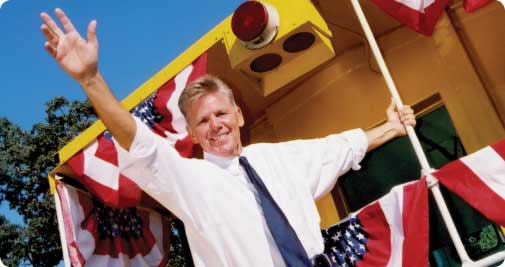
On April 30, 2001, 53-year-old Congressman Gary Condit is sitting opposite President George Bush when the topic of the crippling energy crisis in California is raised. Bush, barely three months in office, tells Condit to take up the subject with Vice President Dick Cheney. Condit says Cheney is refusing to meet with the California democratic delegation.
The Vice President will meet with you is the President’s answer.
The following day, May 1, 2001, Condit and Cheney meet privately at the Capitol. There is no resolution on energy, but the discussion covers other topics, such as the new University of California in Condit’s district and the controversy surrounding the Endangered Species Act.
Gary Condit, a California politician who combines enormous personal appeal with a longstanding political base, is on a roll.
Although he typically eschews any titles, Condit is the founder of the Blue Dog Democrats, a moderate group of twenty or so legislators from around the nation who smartly keep a limited agenda and sway the outcome of critical legislation before the United States Congress.
In California, he is the first in their Congressional delegation to have endorsed his former classmate in the Assembly, Gray Davis, for governor. He is largely viewed as not only the Washington conduit for Davis, but a rare friend so closely allied that Condit’s son and daughter are given jobs in the Administration that keep Gray and Gary in close contact.
Condit is a steady political partner with Nancy Pelosi, a beneficiary to the political fortunes of his former seatmate in the California Legislature, California State Senate President pro Tempore, John Burton. In 2001, Pelosi is on course to become the first woman Speaker of the Congress.
His home district in Central California is popularly called Condit Country. His constituents call him Gary. They encourage his independent streak with landslide margin election victories and polling that reveals he would be equally successful as a Republican or Democrat, prompting him to borrow a friend’s joke that he’s been invited by both parties to switch. His son, already a go-to person in the State Capitol, is in line to inherit an Assembly seat. A protege who will soon disappoint him is being handed a State Senate slot.
Condit, a preacher’s boy from a small town and never very comfortable raising money when he knows personally what it was like to make it, opens a Political Action Committee. It stokes the talk of him running for a statewide office. A young fundraiser for the Assembly Speaker, Dan Weitzman, remembers being at the elegant Sterling Hotel in downtown Sacramento when he sees Condit for the first time. Years later he offers the observation that Condit was an imposing figure.
“Everyone stepped back and just looked at him when he walked into the room,” Weitzman said. “He had incredible presence. He was alone. I was hearing some very ambitious politicians say Condit would be unstoppable if he ran for Lieutenant Governor or if a U. S. Senate seat opened up.”
On the day he is meeting with Vice President Dick Cheney, Condit is a half step away from becoming one of the most influential individuals in the country.
Across town, a young woman thirty years his junior is leaving a Washington internship and returning to her home in Condit’s congressional district. She is on her computer looking for places to go before she catches a plane.
Her name is Chandra Levy.
OKLAHOMA
The Tulsa area in 1948, the year Gary Adrian Condit was born, was a hard, dry place still living with the dust and poverty of the Depression and a memory of the Dust Bowl Diaspora. It was built alongside nature’s Tornado Alley and was subject to all the extremes of bad weather. The late Franklin Roosevelt was still a hero, the four-times elected Democrat who brought America out of economic despair and through a world war, authored in the New Deal to get people back to work.
The Condits were dairy farmers until Gary’s father was called to the ministry and sold the farm to an uncle. It happened when Gary was a ‘little guy.’ Church was a mainstay of their lives, singing and worshipping during the week and on Sunday, a lot of old time religion for Gary’s two brothers, one older and one younger, and their baby sister.
Condit did not let churchgoing interfere with him trying to have more fun than anyone else. He carried a fake ID. He admits to being a wild kid, saying matter-of-factly that he liked drinking with the guys, partying, and enjoying himself. His stories are nicely told, folding out like a Huck Finn chapter, a slice of Americana, a time that is already gone.
Going to church was all he got for free. Gary was expected to work.
“In my older teens,” he explained, “I lived in a house by myself in the summer. I would get up early to work as a roughneck in the oil fields. Sometimes I’d be a welder’s helper. Sometimes I’d be on a truck or a backhoe. Sometimes I’d move up to oil drilling. It was a tough place. The guys on the pipeline would stop their job at a moment’s notice if there was a fight developing and, unlike school, the fight doesn’t get broken up until the fight is over. The oil fields taught me to keep my mouth shut and fight if the situation called for it.”
CAROLYN
Carolyn Berry was a store owner’s daughter. Her parents owned several clothing shops on the right side of town. She was one of the popular girls in school, born blessed with a mid-western beauty, a picture of health, a facade of sorts since she contracted a fierce case of encephalitis when she was ten years old. The disease is a recurring inflammation of the brain. Her parents had the resources to get Carolyn the best treatment. The illness is stubborn and will remain a consequential problem her entire life. Carolyn is Catholic. She belongs to the pep squad, a sporty girl, the kind of girl who develops lifelong friendships and close family ties. She and Gary fall for each other. There is youthful drama to them. Both blonde, attractive, driving too fast in the car Gary purchases with his oilfield money. The easy story is that of the wild boy stealing the heart of the good girl.
Carolyn doesn’t remember it that way.
“Gary was fun to be around,” she said in a recent interview with California Conversations. “He didn’t fit into any group. He worked. He was smart. He was someone people wanted to be near. I was in love with him when I was fifteen, and I love him still.”
CALIFORNIA
Gary and Carolyn married at eighteen. They followed his parents to Ceres, California, a small town of middle class neighborhoods about 100 miles east of San Francisco. She admits being scared about the move. Her friends keep saying she can come back home if it doesn’t work out.
Gary remembers the whole of California’s Central Valley being connected to Oklahoma, Texas, Missouri, Kansas, a lot of second-generation people. His grandfather was living in San Simeon and there were many vacation trips along Route 66 to visit him. During tough times in Oklahoma, Gary’s grandfather harvested California fruit.
Gary and Carolyn were still teenagers when they become parents.
“Gary quit drinking when Chad was born,” Carolyn says. “He didn’t make a big deal out of it; never made any kind of announcement. He just stopped.”
Condit remembers, “I saw Chad and I knew right then I had to hunker down and do things right. It had nothing to do with religion. It had nothing to do with any kind of alcohol problem. It was simply a decision I made, and I have never regretted it.”
The young couple rent a small home. You can get a clean and comfortable place for a couple hundred dollars a month. Gary works full-time at a variety of jobs to put himself through college. Carolyn is a stay-at-home mom. There is still the possibility of returning to Oklahoma and going into business with Carolyn’s father.
RUNNING FOR OFFICE
Politics was not an obvious option for Gary Condit in 1972. First, there was his age, he was only 23 and still a senior at Stanislaus State. Second, he was not much of a joiner. Friendly, he was not terribly outgoing, and he and Carolyn had only been in town about four years. Third, he’d never been involved in the political process.
“I worked at Norris Industries making mortar shells for the Vietnam War,” he said. “I’d go to school from 8:00 in the morning to 1:00 or 2:00 in the afternoon and get to work at 3:00. Initially, I didn’t think much about it, but because I was married and we had a child my classification for the military was different. I drove to work with an older gentleman whose son was in Vietnam. At one point during a contract negotiation, it looked like they were going to lay people off. This gentleman said, “Oh God, I’m going to hate it if I lose this job.” I called him Stringbean. I said, “Stringbean, you have a son in Vietnam. You should be happy if we lose our jobs and he gets home safe.”
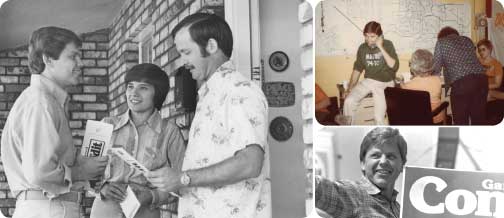
“I understand people’s need to have a job and it was a good job, but this war needed to be over. That conversation planted the seed for me thinking I needed to do something to prove young people wanted to make a positive difference. I eventually decided to run for city council even though I had never been to a city council meeting until the night I was sworn in.”
It took 1,300 votes to win a seat on the Ceres City Council. Condit spent $67. He managed to get a small army of students to help him run a door-to-door grassroots effort.
“I went to work election night. When the polls closed, they opened up the back of the machines and by 8:05 people at my house knew I won. They began calling to say you’re in tenth place, but it looks good. Then they’d call back and say you’ve moved up to eighth and then seventh and then sixth. I’ll never forget it as long as I live, the manager and the people with whom I worked, they were so proud of me, they said this is so cool that you ran...They said how’d you do? And I said I think I came in sixth, but that’s pretty good, don’t you think?”
Carolyn laughs when she remembers the joke. There were hundreds of kids in their small house and front yard yelling and screaming when Gary got home. He said thank you to every one of them. She did not remember him giving a speech.
There were national stories about Gary being one of the youngest elected officials in the country. He and Carolyn quickly became a recognizable couple in Ceres. His election was not a lark. Condit did more than dress the part, although he became more stylish, he paid close enough attention to the job that two years later he was mayor.
Tom Berryhill comes from a longtime Ceres family. He is a Republican whose dad ran against Condit for Congress. Tom now represents the area in the California Legislature. “Gary Condit always had great rapport with the people he represented,” Berryhill says. “Until the day he left office, his phone number was listed. Gary has a quiet way that goes beyond charm. People trust him. They wanted to be on his team. Even now, he is the model of the kind of politician I try to be.”
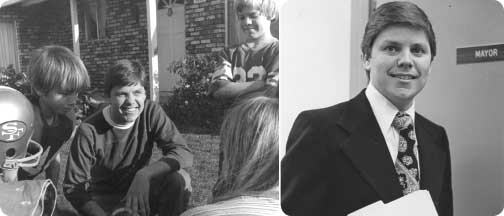
Condit’s youthfulness became a punch line. There is a story from the local Rotary Club about board members from a major company wanting to do business in Ceres. They asked to meet with the mayor and, seeing Condit behind the desk, asked if it was Mayor for a Day; the cherubic Condit making them wonder if he was a high school student.
In 1976, Condit steps to the head of the political line and becomes county supervisor. Six years later and not yet 34 he goes to the California Legislature, the Assembly class of 1982.
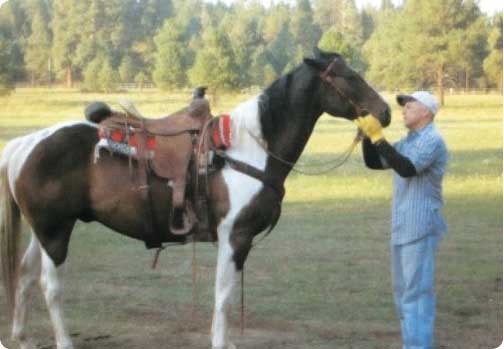
THE ASSEMBLY
The Speaker, Willie Brown, said he knew the future leadership of California would come from the class of 1982. Condit had no doubt that his intense classmate from Los Angeles, the very focused Gray Davis, a former Chief of Staff to Governor Brown and an indefatigable fundraiser, would be governor.
Condit began a close friendship with four others, three of them in their late twenties and early thirties; Steve Peace, a mercurial, oftentimes brilliant, sometimes erratic, quick thinking enfant terrible from San Diego; Charles Calderon, an effusive lawyer from East Los Angeles, a pragmatist as much as an idealist, a gentleman, and the first of three brothers to serve in the Legislature; a wealthy and enjoyable Rusty Areias, the son of a dairy farmer and the dark-haired, more accessible counterpart to Gary; and Jerry Eaves, a supporting actor in a gang of stars, a bearded stalwart who looked, acted and was treated like a steady older brother.
“One of the things you find out in politics is after you get onto a city council or in the state legislature or congress, you look around and say I don’t know how that person got elected,” Condit says. “But, I’m telling you, if you pay attention, pretty quick you see how they got elected. Each person brings a skill, something they’ve honed, something they’ve worked on that works well and when you pay attention, you see it come out of them and you go, “Oh, that’s how you got elected.”
A MODERATE IN A LIBERAL HOUSE
Temple Davies, a former fighter pilot in WWII, a 62-year-old grandfather with a son caught up in an ugly divorce, brought Condit the idea for his first bill. Davies’ estranged daughter-in-law will not let him see his grandchild. He tells Condit that grandparents belong in a grandchild’s life.
Temple is 86 now. Two strokes have dimmed the landscape. He keeps a picture in his living room of the Governor and Gary and himself at a bill signing for ‘Grandparent’s Rights’ as proof to his grandkids that he accomplished something important in his life. He remembers being surprised by Condit’s youth when they first met, although in retrospect he says Condit was probably much older than he looked. Davies recalls Condit taking his own notes and quietly asking questions.
“Condit has a very quick mind and a great skill for listening, which is not an easy thing in any profession,” Davies said. “He never talked at me, always to me, and he made the effort to keep me informed of the bill’s progress.”
Temple’s legislation is now replicated in more than forty other states.
California Conversations: Archie Fain?
Gary Condit: From Oakdale...murders a 17-year-old boy, and rapes two girls.
CC: In response to the possibility of him getting out of prison, you write AB 2192.
GC: Right. It allows the families of the victims to speak at parole hearings. It was a tough bill. I also have a side of me in terms of having empathy for people who spend time in jail, but fair is fair.
CC: You also write a new bill aimed at drunk driving...three years probation, and mandatory jail time if you break the probation.
GC: Right.
CC: This was before Mothers Against Drunk Driving.
GC: I don’t remember the full genesis of that bill, but to this day, I have a sense that one of the greatest things that has occurred in this country is Mothers Against Drunk Driving. When I was growing up, you got a case of beer and you went down to the levee. Now, people think about designated drivers.
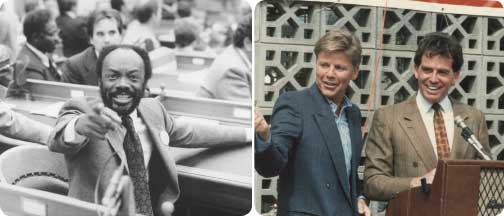
WILLIE BROWN
By any account, Willie Lewis Brown, Jr. is one of the great characters in California political history.
The clever, charismatic, Texas-born Brown followed a street-wise uncle to San Francisco and made it his adopted home. Elected to the California Legislature in 1964, he would serve the longest tenure of any Speaker of the Assembly, and prior to the absolute timelines of term limits, he faced his greatest challenge when Condit and his four friends, now dubbed “The Gang of Five,” all Democrats, took advantage of a five count difference between Democrats and Republicans in the Legislature to swing votes away from Willie’s agenda and eventually attempt to remove him from his post.
In a California Conversations interview with Brown he says he respected Condit and the others, even thought for a while he was grooming them for greater roles in politics, but the longer he talked he could not hide his frustration at what he called Condit’s conniving. He laughed briefly when it was suggested that the difference between conniving and strategy depends on the alliance. Condit was a conniver, he finally insists. There is no doubt they had a different view of public policy.
CC: In 1984, you’re in Willie’s good graces and he makes you Assistant Majority Leader. You’re the first in the class of 1982 to get a big post.
GC: That’s true. I also found out that this kind of position becomes a burden...you checkmate yourself a little bit because you knew Willie was keeping you close.
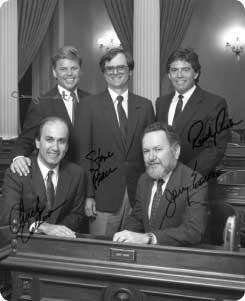
CC: You continue your independence - proposing to tax professional sports teams and earmarking the funds for high school athletics.
GC: I still think it’s a good idea...high school sports is a recruiting ground. We’re training quarterbacks. We’re training tackles. They hone their skills, and I’m proud they do, but we’re making money for guys who own the teams.
CC: Maybe we could tax lawyers to pay for the debate teams.
GC: (laughs) It’s a great idea.
CC: 25 years ago-anabolic steroids-you were the first legislator to step up and say these are a nightmare and need to be restricted.
GC: I held hearings all over the state. I debated Lyle Alzado on a radio program, and he was pretty strong. He called himself a pro-choicer on anabolic steroids. I was frustrated when even my hometown newspaper, without ever calling me, editorialized against the bill.
The towering Alzado played for three teams in his fifteen year NFL career. He died at 43 from a cancer ascribed to steroid use. Condit’s relationship with the newspaper would remain dicey.
CC: You came up with the idea to rebate budget reserves in excess of 4%...is that the beginning of you being more conservative or a populist?
GC: Governor Jerry Brown’s administration built up a huge surplus. I believe in a rainy day fund. I also believe tax money belongs to the people.
CC: You and your four friends were all moderates-the Gang of Five-one of the best times of your life?
GC: It was fun-the camaraderie...you know, we didn’t think of ourselves as the Gang of Five. That was a name given to us.
CC: Were the five of you close personally?
GC: Willie made every attempt he could think of to break the bond that developed between us. Every attempt he made only made us stronger, more reliant on each other.

CC: Could Willie have stopped the Gang of Five early?
GC: Let me tell you something no one’s ever written. The Gang of Five started when Willie called me first and said you guys cannot introduce no-fault insurance. You can’t do death penalty legislation or call for electronic surveillance of drug kingpins. Well, we kept doing what we were doing. He called me back and told me if I didn’t put a stop to it that day, he was going to remove me as chairman of my committee. I told him in no uncertain terms that I didn’t get elected to the Legislature to be threatened. I was removed. He let my removal fester. Then he called the others in and began removing them from their committees.
CC: You pushed for limiting the Speakership to six years, knowing that Willie was in his seventh.
GC: The five of us tried to have a measured response to his bullying.
CC: Did it ever get personal?
GC: It wasn’t meant to be personal. Willie’s friends and the press wanted to make it about a leadership fight rather than public policy.
The Gang of Five became statewide personalities. The press was not always good to them, although Rusty Areias says Condit didn’t care and told them not to get caught up in being a hero or a goat. Condit says now it was just his feeling at the time that it always makes sense to keep your mouth shut. Some articles were corrosive, mocking them as grandstanders. Others said their political views reflected the direction the people in their districts hoped the state would go.
The Gang also relished the attention. They took up residence at a main table in a popular downtown restaurant. Randy Paragary, who now owns several high-end places, offers the picture of all of them being young and there being an edginess to their thinking - it was big stuff. They were taking on Willie, who was a big deal, and they were winning.
The rumors of partying became part of the distraction or the attraction depending on your perspective.
A former lobbyist was married to a woman who worked in the Capitol. He was convinced that Condit was having an affair with his wife and confronted Condit. He said Condit was unflappable, and denied anything was happening. Almost twenty years later, he says his now ex-wife has never admitted to an affair with Condit.
The rumors of women were a constant. Areias told the Los Angeles Times a story he repeated to California Conversations - that he has been a close friend of Gary’s for twenty-five years and has never seen any actual evidence of Condit with another woman. Assemblyman Calderon, typically candid, says Condit was appealing to women and they were appealing to him, and while Calderon never saw it himself, he wouldn’t be shocked if something happened. He also pointed out that when Condit’s name was in every publication worldwide and there was an added monetary incentive to come forward, very few women said they were involved with Condit. Condit, he says, had faults. His critics have been disappointed by the fact that all the stories they’ve heard did not turn out to be true.
Paragary has fond memories of all five members of the gang. Condit was not his favorite. The teetotaling Condit was friendly enough. Unlike the others, however, he had a natural reserve, a distance and a space around him.
The Gang of Five seduced the Republican minority to get the needed votes to remove Willie from his Speakership. Brown says now he had Republican votes the Gang didn’t know about. Both sides are excellent at counting and how the final vote would have gone remains in doubt. It became a moot point when an assemblyman named Richard Longshore died the night before the vote was to be taken. The mathematics no longer worked.
“Willie invited me to lunch. And to Willie’s credit, he probably handled this better than I handled it. He said, ‘Look, Gary, we need to bury the hatchet. We need to be friends.’ I said, ‘Willie, we’re not going to run around together again. We’re not going to be friends.’ I had no intention of falling in line. When I left that lunch I knew my days around the Capitol were limited.”
Willie Brown does not dispute the meeting took place. He says nobody’s beyond redemption and while the Gang of Five behaved like assholes he admits to offering Gary a chance to get back into the fold. In Willie’s telling, he says Condit didn’t say a damn thing...didn’t say yes and didn’t say no. He just got up and left the room.
Rusty Areias says Gary’s account makes sense. “Willie is a genius in many ways, including his choice to remove anything he doesn’t like from his memory.”
Calderon explains that one of the mistakes people first make about Gary, especially when they see that big smile, is not realizing how tough he is. “Gary is intellectually and physically one of the toughest people I have ever met. I have no doubt he told Willie what he was thinking.”
Condit says that after his lunch with Willie he expected to finish his term and get on with his life.
Of course, politics is about timing and stealing the moment. Tony Coehlo, a congressman on the rise, whose congressional district crossed over Gary’s assembly seat, got caught up in a financial scandal with financier Michael Milken and resigned. Condit decided to run as his replacement.
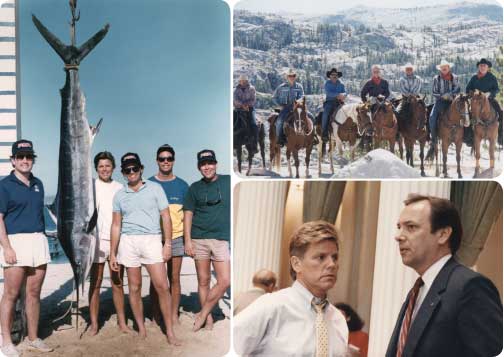
Fellow gang member Rusty Areias pretended for a while that he would challenge Condit. Eventually, Areias endorsed his friend and Condit coasted through the Primary.
Areias notes that it would have been easy for Condit to run as an anti-Coehlo candidate, the reformer cleaning up a mess. He didn’t do it. He chose instead to be respectful of Coehlo’s enormous contributions and run on his own record.
His opponent in the General Election was a guy everybody liked, a former legislator who also served as California’s chief agricultural officer. A wealthy, successful farmer, he was a generation older than Condit.
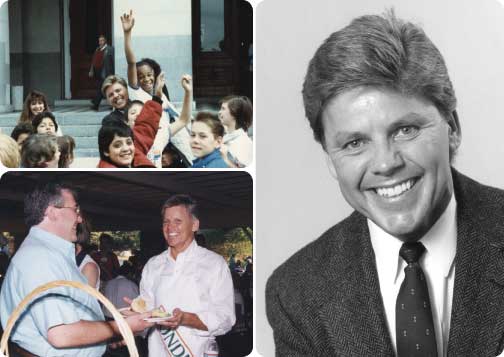
CC: What was Clare Berryhill like?
GC: You have to remember we were two Ceres boys. (laughs) The main competition was who was going to carry Ceres. Clare had folksy written all over him. I found out he was running and I thought, oh gosh, I’m going to have to debate this guy. I liked Clare. I always admired the way he handled himself. I liked him. I liked his boys.
Condit held his own in the debates, probably winning one that he shouldn’t when he and Clare covered agricultural issues before a room full of farmers. His refusal to be labeled served him well, and taught him the lesson that being defined as a liberal or conservative limits perspective, his own and his constituents. Never a barn-burning orator, and not exactly one of the crowd, Condit does have a natural speaking style. There is a slight Oklahoma turn to the end of his words. He stays calm. He doesn’t lecture, a natural reticence that is appealing, and he is just as likely to offer possible solutions if everyone works together than an absolute answer to controversial problems.
Tom Berryhill says the Republican leadership told his dad the only way he could win is to go after Gary for ‘his skirt chasing.’ Clare was reluctant. It was forgotten when their opposition research could not come up with the names of any women with whom Condit had an affair.
CONGRESS
Often named the most conservative member of the California Democratic Congressional Caucus, Condit’s refrain is that he was exactly in the middle when viewed on a national scale.
He is proud of the work he did to bring U.C. Merced to the district. He considers the money he managed to earmark for cops, infrastructure, education, and the battle against methamphetamines to be part of the job and not accomplishments. His role nationally to balance the budget and his appointment to the Intelligence Committee mattered personally. His response to constituent problems was legend and part of the work ethic he ingrained in his Washington and home offices.
CC: Did you like your California delegation?
GC: I loved them. Yeah, there were some I was closer to than others, but…
CC: For such a large delegation, they were surprisingly benign.
GC: I know the delegation gets criticism, but I think they work well. If you look at the Alabama delegation, there are six or seven of them, Republicans and Democrats. They go to the back of the chambers and huddle up and hold hands and say, yeah, that’s what we’re going to do. This instant unity isn’t possible in California. Our state has so many regional issues, and so much diversity, that it creates conflict.
CC: The Blue Dogs - were you the founder?
GC: There were three of us that actually created the Blue Dogs. We were 23 when we started. I learned to keep the group small because we could find consensus quick. And the other thing that we did was to only pick two or three agenda items. We would literally meet for days, weeks and figure out where we have to be to win votes with the Democratic caucus and the Republican caucus.
CC: Your detractors call it back room maneuvering.
GC: It is the nuts and bolts. You can’t get to the core of an issue if you’re making a speech. I learned Ronald Reagan was right when he said you can get a lot more done if you don’t care who takes the credit. You need to give people time to absorb what you want and what they’re willing to give up. If you push them out in public, they’re not going to give up anything.
CC: Was immigration a Blue Dog issue?
GC: No, but I carried a little piece of legislation that was called “Unfunded Mandates.” If state and local governments would simply say to the Federal government, you do what you need to do on immigration, but reimburse us for the incarceration of the prisoners. Reimburse us for health care. Reimburse us for the costs. I promise you if they were forced to do that, they would have an immigration policy in short order. The Blue Dogs endorsed it.
CC: Who is the most intimidating politician you ever met?
GC: I don’t know any politician I’ve been intimidated by, and I’ve met a lot. Clinton had such skills that before the Blue Dogs had a meeting with him, we’d rehearse. We did not want our time to be wasted. Bush had a different spiel. President Bush, the current President Bush, lets you talk. He gives you the impression he just might say, you know, we ought to do that.
CC: Who did you like more?
GC: Well, I was around Clinton more. I liked Clinton a lot. Contrary to what the Modesto Bee and the Washington Post wrote several times, I voted three times not to impeach Clinton. The President will tell you I was one of the first to call him when he was isolated from Congress and tell him not to resign.
CC: Is the country safer with a Bill Clinton or a George Bush?
GC: Obviously a Bill Clinton. His agenda was to keep us out of war. I voted against the war in Iraq because there were no weapons of mass destruction. It is a war based on falsehoods. Sadaam Hussein was a menace, but he was not a threat to our country. During the Persian Gulf War, I had a sit down with George Bush, Sr. He said, look, Gary, I want you to vote for Desert Storm. I said I’m having issues because my frame of reference is Vietnam. He didn’t fudge the truth. He said we’re going to run the army of Iraq out of Kuwait. Then we’re coming home. I voted for Desert Storm.
THE DIFFICULT YEARS
California Conversations met with Gary Condit in a hotel room in Denver for an extensive interview that lasted more than six hours. We spoke several subsequent times on the telephone. He did not ask to see any questions ahead of time. Nothing was off limits. He made it clear when he sat down that he was not looking for redemption.
He is handsome, different than he looked as a young man, much thinner, stronger, almost gaunt, and it adds up to a good look. The physical change began when he made exercise a daily regimen and went seven years fasting every Wednesday. In his first interview in years, he was both soft spoken and direct.
CC: You leave a meeting with Cheney on May 1, 2001. When do you find out Chandra Levy has disappeared?
GC: The meeting with Cheney was on a Wednesday. On Sunday, Chandra’s father, Dr. Levy, calls me at home in California and says he called the Metropolitan Police Department (Washington D.C.). They had not been able to get a hold of Chandra for three or four days, and he knew she’d come to our office. He felt the Washington Police Department blew him off.
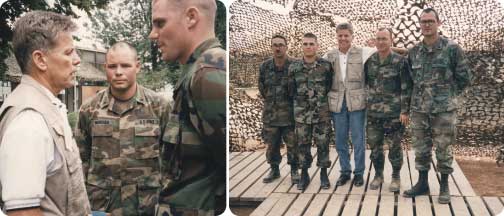
CC: She wasn’t missing long enough to…
GC: Technically, that was the police issue. Dr. Levy wanted to know if I would contact the police department and get them to be more interested. I made the call, and I gave them a tough talking to that you cannot allow a father on another coast to think you don’t care.
CC: How does it get from Dr. Levy making the phone call for help to the point someone thinks you killed her?
GC: I don’t know...if it was incompetence on the part of the Metropolitan Police Department or by design considering the way they handled the case.
CC: Were you ever a suspect?
GC: Never by name. I was treated like one. I became distrustful of the Metropolitan Police Department pretty quick because what happened was...I don’t know if you want to hear this...a lot of people think they know…
CC: I’d like you to be candid…
GC: This was never about a personal scandal. This is a missing girl. The next day I flew to Washington, D.C. My staff person said the police are really angry at you for whatever you said to them. On Tuesday afternoon the police called and said we’d like to talk to you. I said sure. We can meet here or when I leave my office about 8:00, maybe 9:00. When I got home, two detectives came by. We spent 45 minutes together, and I told them everything I knew. There was nothing else.
CC: What did they ask you?
GC: I can’t remember all the questions, but everything I knew about Chandra, I told them. I never lied to law enforcement about anything to do with Chandra Levy. By the time this was over, I did a lot more than anyone else would to appease the law enforcement people. I did take a lie detector. I gave them DNA. Eventually, the FBI interviewed every person who had ever worked in my office. They brought Carolyn to Washington and spent 8 to 12 hours grilling her. They couldn’t find anything, but they spent all that time trying.
CC: Did they ask you at that first meeting if you had an affair with Chandra?
GC: No, they did not.
CC: Were they treating you as a suspect at this point?
GC: I was taken aback by the way they proceeded. I was thinking we’ll figure out where Chandra is. You never think anything bad will happen to someone you know. A few days went on, and I have never told anyone this publicly, but I got a call from a network news source. The reporter said they’re going to try putting you in jail. Frankly, I was never, ever scared because I knew the truth. The way I dealt with them was I became more protective. I eventually got legal counsel.
CC: You and the Levy’s put together a reward of $25,000.
GC: I called Dr. Levy once it became evident there was a search, and I said sometimes we’ve given money for getting information. He acted stunned for a minute, and then he said I’ll put some in there too.
CC: At this point, Chandra’s aunt is telling the family you’re having an affair with Chandra.
GC: I don’t know what was going on with their family.
CC: The press is pushing the question about an affair with Chandra Levy?
GC: I did not have a romantic relationship with Chandra Levy.
CC: Are you drawing a distinction between a romantic relationship and a sexual relationship?
GC: It’s none of your business. I mean, if I were to start answering it, well then, how many times did you have sex? All these other women that have been mentioned, did you have sex with them? It just goes on and on. My private life is my private life. If we don’t reclaim that, we’re all going to be designated as public people and we will have no more civil liberties. I stood my ground. I guess people will determine whether that’s correct or not.
CC: The public relations experts I’ve spoken to say if you’d gone on camera early in the story and spoken to the press your later problems could have been mitigated.
GC: This was cast. The press was going to do what they were going to do. I didn’t concede to anyone that it is appropriate to go into the political routine. It’s almost a game now when you see people do it...you’ve got the wife there...the kids there...it’s all props and it’s planned and they poll the effects after it is over. I said then that we should be focused on Chandra Levy. Pay attention to what the Metropolitan Police Department of Washington, D.C. is doing. The sex questions are irrelevant. You have an innocent girl who possibly something bad has happened to, and you’re following me around asking me if I had sex with someone. Why aren’t you following around the police chief, the FBI guys and asking them what they were doing? Why didn’t the police look at the tape of the people entering her apartment building? Her computer clearly had a map of where she was going. They didn’t check it for months. Why? We may never have a full answer.
CC: You are in your fifties. Chandra was in her twenties...do voters have the right, since you don’t speak, to say I’m not voting for him because I’m disappointed in him or believe he had the relationship?
GC: I live by the theory that voters have the right to decide what they want to decide. I also believe there are boundaries public people should stake out for themselves. We should not, in my opinion, deviate too much from those because they just keep probing and probing more and more until you end up with zero. You will have no privacy; your grandkids will have no privacy; everything is free game. I just don’t think that is what getting elected is all about.
CC: What advice were you getting?
GC: I was being told to go in front of the camera and apologize for anything. Look, I understand the Biblical thing that confession is good for the soul, but the press is not the confessional. I had nothing to confess about. I had nothing to do with Chandra being missing. I also had one of the wise men of the Congress, a federal judge walked up to me early on and he said, Gary, everyone here likes you and they are going to try and find out what’s going on in your head. Just remember how much they all like to talk to the media and, in addition, any one of them can be subpoenaed. It was great advice. People may have not understood it, but I didn’t want to drag anyone in. Another Congressman asked me how I was holding up. I told him I had quit watching the news and was following the weather channel instead...that I could give him a five-day forecast for anywhere in the country...the next day his staff person called up and apologized because that quote appeared in the paper. Bob Matsui, the Congressman from Sacramento, came into the Congress one morning and he was white as a ghost. “Gary, I just talked to the Fox people, and they say they’re going to take you down.” He was offended. I’m sure my colleagues were thinking if they can do this to him, they can do it to anybody.
Carolyn responded to a note from one of her friends in Oklahoma that it was a difficult situation. The friend spoke to the press. The details of the note became public.
In August of 2001, Condit agrees to an interview with Connie Chung on ABC television.
CC: Why did you go on Connie Chung?
GC: It was against my better judgment to do it. I did it based on my attorney’s advice.
We had two different agendas. His agenda was to salvage my political career. I was simply trying to salvage myself, my life, my spirit, and my wife. We had options that we could have worked with another reporter. Connie wrote several letters, and they were letters of how fair she was going to be...then the first words out of her mouth were, “Did you murder Chandra Levy?” How ridiculous. I shut down.
Carolyn Condit says with some chagrin that the minute Connie Chung opened with that question she knew Gary was not going to talk any longer. Just an hour before the interview an attorney delivered an envelope to Condit with the request that he not discuss Chandra. Condit says that he would not have done that anyway. The show was a debacle that did nothing to shed light on the loss of Chandra Levy or the personality of Gary Condit.
CC: Who came up with the line “I’m not a perfect person”?
GC: I didn’t lie to anybody. I hadn’t done anything illegal. I was just saying, maybe it wasn’t an apology, but I acknowledged I’m not a perfect person. It was my feeble way of trying to make concessions that obviously didn’t work.
CC: Did you feel your life being destroyed?
GC: Well, I went through some emotional stress and depression over this. Who wouldn’t? What the tabloids do is rape your reputation. They pay people money to tell stories, make up stories, and when you see the covers as you walk by the rack you’re witnessing the rape of someone’s reputation.
CC: Did you see the tabloids?
GC: I’ve seen most of them now. We had a shop in Ceres, a little grocery store, and because of us they moved all the tabloids out.
CC: What was the response when everyday people saw you during this period?
GC: For a period of time I was probably the most vilified man on the planet. People were gawking. There were a few people who would say things, and there would be people who were kind. And there would be people who read between the lines, and they said well this guy’s getting railroaded.
CC: Who do you rely on during this period?
GC: You rely on the family. My family is Cadee and Chad and Carolyn and my mom and dad. You know, it was tough. You have to be protective.
CC: Did you know the political career was over?
GC: You and I grew up in a time where if you got a really bad news article, you were going to see it again in a campaign a thousand times. (laughs) I had maybe a hundred thousand articles written about me.
The tabloids were ruthless, but many writers and many papers took liberties, a free rein to mix conjecture with rumor and speculation. Much of it was absurd, one periodical saying Carolyn was in town and killed Chandra. It reached bizarre when it was written that Carolyn had no thumbs. It was brutal when a fiction stolen from Clinton lore was published that Condit had fathered a child with an underage black girl. Condit, who has never hidden his affection for riding motorcycles, was painted as a sinister closet biker when a photograph of him at an office party, trying on a pair of chaps that had just been given to him as a gift, was sold to the tabloids. There were other stories of Chandra being dropped in the ocean as a favor to Condit.
Mike Mattoch, a scrappy Capitol lawyer now working as the West Coast counsel for a major insurance company, followed the Condit story closely. He met Condit in the garage of the Capitol basement when Condit was visiting Chuck Calderon. Condit was memorable, fashionably dressed, attentive even though Mattoch was just getting started in business. Over the years Mattoch says he recognized in Condit the steel you see in very few politicians. “You don’t get to the level of power Condit was reaching-the place where you tell people to shape up or you’ll walk away and bring others with you, without having the dexterity and nimbleness to understand all that can happen on a grand scale.”
The Condit Mattoch admired was not translating in the around-the-clock coverage on television. The onslaught was unyielding, and Condit was refusing to engage them.
CC: Were you surprised that so many lies were told?
GC: They had to lie. You have to remember I had the highest level of security clearance. Whatever character flaws I had in my life would have been found when they did the background check for the Intelligence Committee.
CC: Didn’t the police ultimately say you were not a suspect?
GC: They had said that, yeah, several times, but it doesn’t matter. It was free shot. You get a writer saying things like, “Well, I think Gary Condit knows more than he’s saying.” Or, “Gary Condit knows the guys who did it.” There’s no way you could ever...I’m sitting there watching this, and it’s just a lie, and at this point, the reporter knows it’s a lie.
CC: Is there a point where you are so deluged by this stuff that you become immune to it?
GC: It’s like somebody takes a knife and pierces your heart, you know.
CC: What do you think happened to Chandra Levy?
GC: I don’t know. It could be she went to the museum and this happened. We’ve learned since then that something happened to two other girls in the same park. It seems to me you should look at the guys that did the other two cases.
DENNIS CARDOZA
Dennis Cardoza got his first job in the State Capitol working for Gary Condit. He ran against Tom Berryhill for the State Assembly and won by less than one hundred votes. Berryhill, who works well with Cardoza now, says he was kicking Dennis’ ass until Gary Condit got involved and not only endorsed Cardoza but did commercials defending him.
Cardoza, a heavy-set, affable man, says he was approached to run for Gary’s congressional seat because the Levy scandal made Condit unelectable.
CC: Dennis Cardoza was asked on national television, and this isn’t verbatim but this is close - “Do you think Gary Condit had anything to do with the disappearance of Chandra Levy?”
GC: Yeah.
CC: Dennis Cardoza’s response is something like, “You never know what’s going on in the mind of a man.”
GC: It was something similar to that...the worst thing that can happen to you is that you really find out who your friends are. You’ve got people you think will walk through fire with you, as the flames come up, they’ll come running and give you a drink to get you through. Certainly he made the decision he was going to run for my seat, and that’s his right. I believe in that. That’s politics. He could have never beaten me for Congress had I not been called a murderer. I think he was pushed to do some of the things that he did, but he was open to doing it.
CC: Have you spoken to Dennis?
GC: No...look, I hope the district is happy with their choice and it works for them. I wouldn’t ignore Dennis. I wouldn’t look him up either.
CC: Pelosi was great, wasn’t she?
GC: Pelosi is great.
CC: Her quote was very clear. Nancy Pelosi said, “I don’t know what happened, but I can tell you right now, Gary Condit had nothing to do with it.”
GC: Yeah...look, I released everybody from having to endorse me. I know politics. When you’re in the barrel, man, you’re in the barrel. You’re the fish and they’re shooting you. There was no need for anybody else to get damaged. I will say it was heartwarming when Steve Peace (former member of the Gang of Five) paid for a campaign mailer to drop in my district. He didn’t tell me he was going to do it, and the gesture meant a lot.
CC: How was Carolyn through all of this?
GC: She did everything she could to be supportive and helpful.
CC: Did she chastise you at all?
GC: No.
The Condit FamilyTHE CONDIT FAMILY
Carolyn is not silly or lost. She didn’t hide from the story. She tells about the press staking out ground in front of their home around the clock. Their garbage became a target, a ruthlessness that led to another empty story when Gary threw out trash miles from his Washington condominium. The letters she received during this period were ugly, and almost all of them from people she’d never met saying she needed to leave Gary.
“They don’t understand how long I’ve known him,” she says. “He’s a good man. I admire him that for all of the terrible things being said he was able to get up every morning and go outside.”
Gary’s parents, Adrian and Jean never lost faith in their son. The aging preacher spoke at the first rally when Gary announced he would seek re-election. They were a loving constant for the entire family, always at the house and holding their tongues when the press surrounded them, as proud of Gary when he was under duress as they were when he received credit for writing public policy.
Chad Condit was unquestionably qualified for the Assembly. He was the chief in Cardoza’s office and the central valley representative for Gray Davis. Not unlike Gary, he is precise when he is working on policy issues. He walked away from politics. Cadee is remembered for her toughness, even refusing entrance for a meeting to an uninvited constitutional officer. They both endured the indignity of being unfair targets when they were later charged with misusing Gary’s campaign funds and sued for two million dollars. When they declared their innocence and refused to negotiate a settlement the charges were dropped. A minor dispute with an ice cream franchise over two parlors made national news. Chad and Cadee quit the Governor’s office after the Governor criticized the Connie Chung interview, saying Condit was not forthcoming.
GC: (laughs) Gray’s given a lot of bad interviews in his time...hey, you don’t have to help me, just don’t do me any harm. I had people from all over the country call me and say, Gary, I’m going to tell you, if anything ever happens to me, I hope my kids act like yours.
CC: Do you miss Congress?
GC: I miss that backroom stuff you were talking about. I got very good at it. I think I ultimately would have been good for California as a deliverer of product and goods.
Gary Condit sees the United States from the ground these days. He goes for long trips and travels the back roads for weeks at a time. He does well in business. His grandchildren, a new one on the way, are a source of joy. His marriage is strong, a relationship that has lasted almost 45 years, and his children are a part of his everyday life.
If he has regrets, they’re not guideposts.
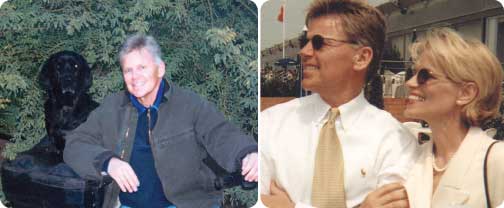
GARY (PHOTO COURTESY OF CHANNCE); GARY AND CAROLYN








 For whatever reason, Ted’s father was not around much. Ted ended up spending a lot of time with my grandparents. My dad was not a fisherman, but Ted and my grandfather spent hours on San Diego’s seaside piers trying to hook the big one. Both Les and Ted were skinny kids for their age. This is in part how Ted later got one of his more famous nicknames, The Splendid Splinter. He was also known as Teddy Ballgame, The Kid, and the Big Thumper.
For whatever reason, Ted’s father was not around much. Ted ended up spending a lot of time with my grandparents. My dad was not a fisherman, but Ted and my grandfather spent hours on San Diego’s seaside piers trying to hook the big one. Both Les and Ted were skinny kids for their age. This is in part how Ted later got one of his more famous nicknames, The Splendid Splinter. He was also known as Teddy Ballgame, The Kid, and the Big Thumper.

 The following year, Ted Williams signed with the Boston Red Sox organization and was immediately placed in their farm system.
The following year, Ted Williams signed with the Boston Red Sox organization and was immediately placed in their farm system.

 Ted brutalized American League pitching after the war and over the next five years led the league in every hitting category. The stresses of the real world intervened, however, in the form of the Korean War and on his way to re-writing the record books, Ted was recalled as a reservist after playing only six games in 1952. It is incredible to think of what his numbers would have been if Ted had not spent some key years of his career in a uniform other than baseball.
Ted brutalized American League pitching after the war and over the next five years led the league in every hitting category. The stresses of the real world intervened, however, in the form of the Korean War and on his way to re-writing the record books, Ted was recalled as a reservist after playing only six games in 1952. It is incredible to think of what his numbers would have been if Ted had not spent some key years of his career in a uniform other than baseball.











 He discovered that her family lived in Vienna. He learned that Braunsteiner came from a strict Catholic family and that as a little girl she always dressed up for Mass. The neighbors explained that the family was not wealthy. Her first job was as a maid. Hermine had gone to work as a prison warden during the war. She accepted higher paying jobs at the camps and was awarded a medal for her efficiency. Immediately after the war, there was a tepid effort to deal with the base inhumanity of particularly notorious Nazis. The Mare would spend three years in prison. It was a sentence that she was able to hide from an American serviceman named Ryan. She married him and moved to the United States.
He discovered that her family lived in Vienna. He learned that Braunsteiner came from a strict Catholic family and that as a little girl she always dressed up for Mass. The neighbors explained that the family was not wealthy. Her first job was as a maid. Hermine had gone to work as a prison warden during the war. She accepted higher paying jobs at the camps and was awarded a medal for her efficiency. Immediately after the war, there was a tepid effort to deal with the base inhumanity of particularly notorious Nazis. The Mare would spend three years in prison. It was a sentence that she was able to hide from an American serviceman named Ryan. She married him and moved to the United States.













 San Francisco State
San Francisco State

 Cleaver is largely lost to history now, but at this point he was a major American figure worldwide. He’d written the best seller ‘Soul on Ice’ during his time in prison. It was mandatory reading. He was the face of the new black culture, the Minister of Information for the Black Panther Party, the strong-arm storyteller of the real black experience, and he was the darling of all the revolutionaries.
Cleaver is largely lost to history now, but at this point he was a major American figure worldwide. He’d written the best seller ‘Soul on Ice’ during his time in prison. It was mandatory reading. He was the face of the new black culture, the Minister of Information for the Black Panther Party, the strong-arm storyteller of the real black experience, and he was the darling of all the revolutionaries.








 The Real World was first, but Ozzy Osbourne made it crazy by allowing the camera’s unfettered view of an aging heavy metal rock star’s family as they dealt with everyday life from their mansion in Southern California.
The Real World was first, but Ozzy Osbourne made it crazy by allowing the camera’s unfettered view of an aging heavy metal rock star’s family as they dealt with everyday life from their mansion in Southern California.
 Top Leader
Top Leader

 In 1948, Earl Warren was a Vice Presidential candidate on the Republican national team with New York’s Thomas E. Dewey. In what many historians believe to be the most shocking upset in Presidential politics, Harry Truman emerged from a vigorous campaign more popular than he started and defeated Dewey.
In 1948, Earl Warren was a Vice Presidential candidate on the Republican national team with New York’s Thomas E. Dewey. In what many historians believe to be the most shocking upset in Presidential politics, Harry Truman emerged from a vigorous campaign more popular than he started and defeated Dewey.





 Fish, Frogs & Foreign Affairs
Fish, Frogs & Foreign Affairs
 The woman didn’t remember him. She handed him an application and told him he would likely be training in Oklahoma. She knew her business. Her prediction was accurate, and he spent the next three months learning how to design and build aquaculture ponds.
The woman didn’t remember him. She handed him an application and told him he would likely be training in Oklahoma. She knew her business. Her prediction was accurate, and he spent the next three months learning how to design and build aquaculture ponds.







 At seventy-four there are more stories than ambitions, and more memories than adventures waiting. Still, there is nothing dated about him and he remains very much a man of his times. He is a go-to guy. He is a consultant for people who want to get things done-different things-get elected, run legislation, meet someone who is difficult to reach, or build a new building in a place where it isn’t always easy to get the permits green-lighted.
At seventy-four there are more stories than ambitions, and more memories than adventures waiting. Still, there is nothing dated about him and he remains very much a man of his times. He is a go-to guy. He is a consultant for people who want to get things done-different things-get elected, run legislation, meet someone who is difficult to reach, or build a new building in a place where it isn’t always easy to get the permits green-lighted.
 His recent biography was well-written. California Conversations made a gift of the book to hundreds of our friends. Yet, we missed some details.
His recent biography was well-written. California Conversations made a gift of the book to hundreds of our friends. Yet, we missed some details.














 His dad, Christopher Ford, was a television commercial producer in live TV. It was a great job, even if his two sons didn’t always realize it at the time. He did all the live cheese pours for “Kraft Musical Hall,” which eventually became “The Perry Como Show.” He would fly every weekend to New York and melt a big tub of cheese and pour it on camera for a mesmerized television audience. It was the 1950s and cheap American cheese was what you were supposed to melt and pour over everything that was possibly edible.
His dad, Christopher Ford, was a television commercial producer in live TV. It was a great job, even if his two sons didn’t always realize it at the time. He did all the live cheese pours for “Kraft Musical Hall,” which eventually became “The Perry Como Show.” He would fly every weekend to New York and melt a big tub of cheese and pour it on camera for a mesmerized television audience. It was the 1950s and cheap American cheese was what you were supposed to melt and pour over everything that was possibly edible.















 GF: They lived at our house. They didn’t understand things. I felt, God, I’m smart. I had this great relationship. It was like a big brother. I always wanted a big brother or big sister so it was awesome. Then I wanted to be an exchange student. I was always a little ahead of myself. I was a freshman. I wanted to be an exchange student but they said you have to be in a language class. I wasn’t in a language class. They said take Spanish. I didn’t want to take Spanish. I wanted to take Italian. They didn’t have Italian. Of course my parents were always bringing in wayward sailors and we met a cork salesman from France. He was in the wine country during Thanksgiving. He met somebody, my mom’s aunt or something, and came to our house for dinner. I said do you live in France? He said yes. I said I want to go there. He said I will find you a place to live. It happened, just right there. I wouldn’t lay off until my parents said fine. My mom said if you can take a class and learn French and get a B or better, you can be an exchange student. My mom drove me to the College of the Redwoods, fifteen miles from my high school, every day at lunch. I took the class. I got a B. (laughs) I told my parents I was ready to go. At the plane, I was crying my eyes out. I wrote them a letter and slipped it in my mom’s book. My dad said my mom was catatonic for two days. She couldn’t even open the letter. She’d pull the letter out and she’d cry. I landed in Paris. I lived on the third floor of this house. It’s a store room with a bed and a sink. I’m like, oh what have I gotten myself into. Of course, I can’t go home. I just thought I have to figure this out...(laughs) Okay, what’s the thing we did in school-conjugate the verbs. So, I carried a piece of paper and I would say how do you say that in English? I had this huge French verb book and I’d write them down in all the forms and I decorated my walls with them. By the time I left France there were like 300 up there. But, I taught myself how to speak French, and when I left you couldn’t tell I wasn’t from France...(laughs) they just couldn’t tell where the hell in France I was from. I mixed dialects...I would sound like a New York Southerner with a California twang.
GF: They lived at our house. They didn’t understand things. I felt, God, I’m smart. I had this great relationship. It was like a big brother. I always wanted a big brother or big sister so it was awesome. Then I wanted to be an exchange student. I was always a little ahead of myself. I was a freshman. I wanted to be an exchange student but they said you have to be in a language class. I wasn’t in a language class. They said take Spanish. I didn’t want to take Spanish. I wanted to take Italian. They didn’t have Italian. Of course my parents were always bringing in wayward sailors and we met a cork salesman from France. He was in the wine country during Thanksgiving. He met somebody, my mom’s aunt or something, and came to our house for dinner. I said do you live in France? He said yes. I said I want to go there. He said I will find you a place to live. It happened, just right there. I wouldn’t lay off until my parents said fine. My mom said if you can take a class and learn French and get a B or better, you can be an exchange student. My mom drove me to the College of the Redwoods, fifteen miles from my high school, every day at lunch. I took the class. I got a B. (laughs) I told my parents I was ready to go. At the plane, I was crying my eyes out. I wrote them a letter and slipped it in my mom’s book. My dad said my mom was catatonic for two days. She couldn’t even open the letter. She’d pull the letter out and she’d cry. I landed in Paris. I lived on the third floor of this house. It’s a store room with a bed and a sink. I’m like, oh what have I gotten myself into. Of course, I can’t go home. I just thought I have to figure this out...(laughs) Okay, what’s the thing we did in school-conjugate the verbs. So, I carried a piece of paper and I would say how do you say that in English? I had this huge French verb book and I’d write them down in all the forms and I decorated my walls with them. By the time I left France there were like 300 up there. But, I taught myself how to speak French, and when I left you couldn’t tell I wasn’t from France...(laughs) they just couldn’t tell where the hell in France I was from. I mixed dialects...I would sound like a New York Southerner with a California twang.







 Over a period of almost forty years, Stan Atkinson was the consummate TV personality and one of the most likeable figures in California’s Capital City. His following at a local level often exceeded that of national anchors Walter Cronkite and Tom Brokaw. An award winning writer and producer, Atkinson managed invincible ratings.
Over a period of almost forty years, Stan Atkinson was the consummate TV personality and one of the most likeable figures in California’s Capital City. His following at a local level often exceeded that of national anchors Walter Cronkite and Tom Brokaw. An award winning writer and producer, Atkinson managed invincible ratings.







